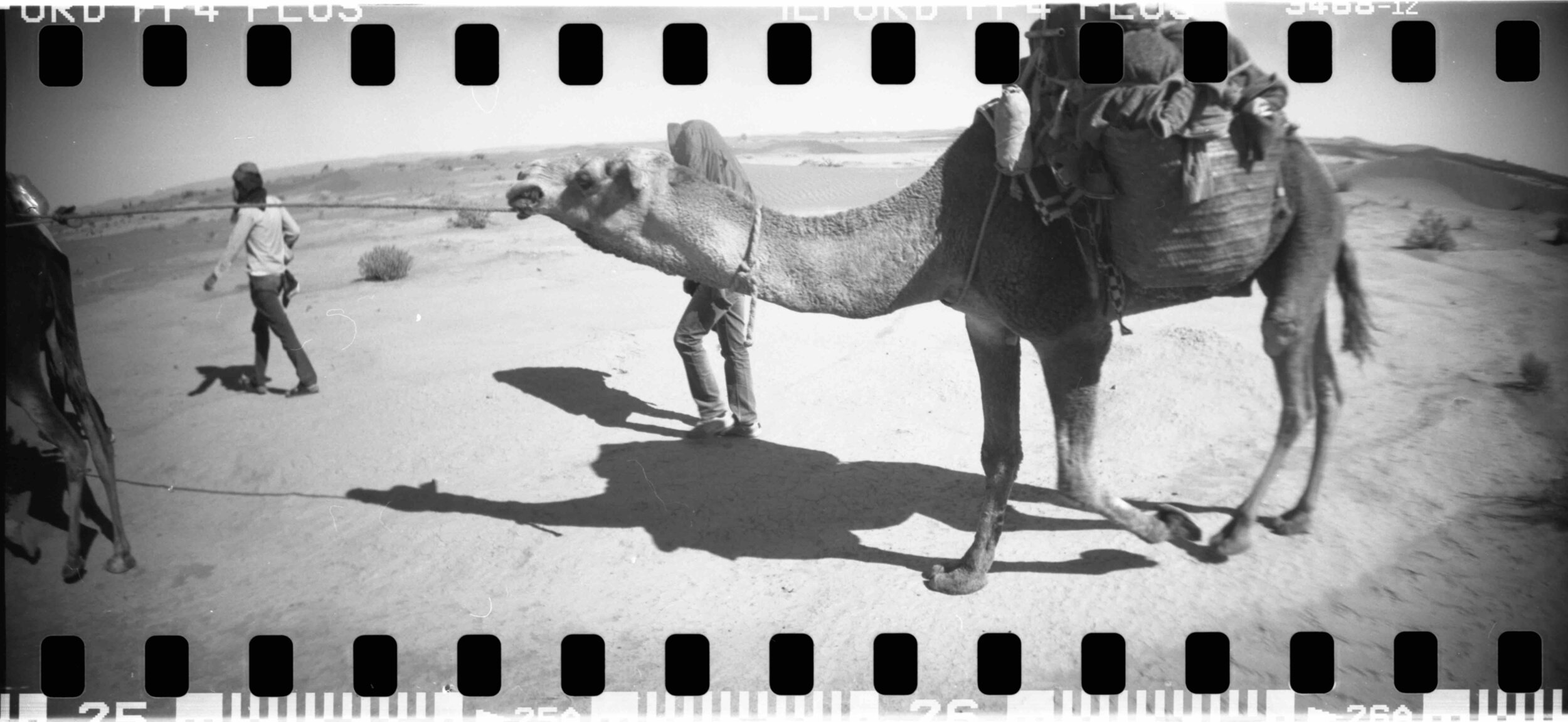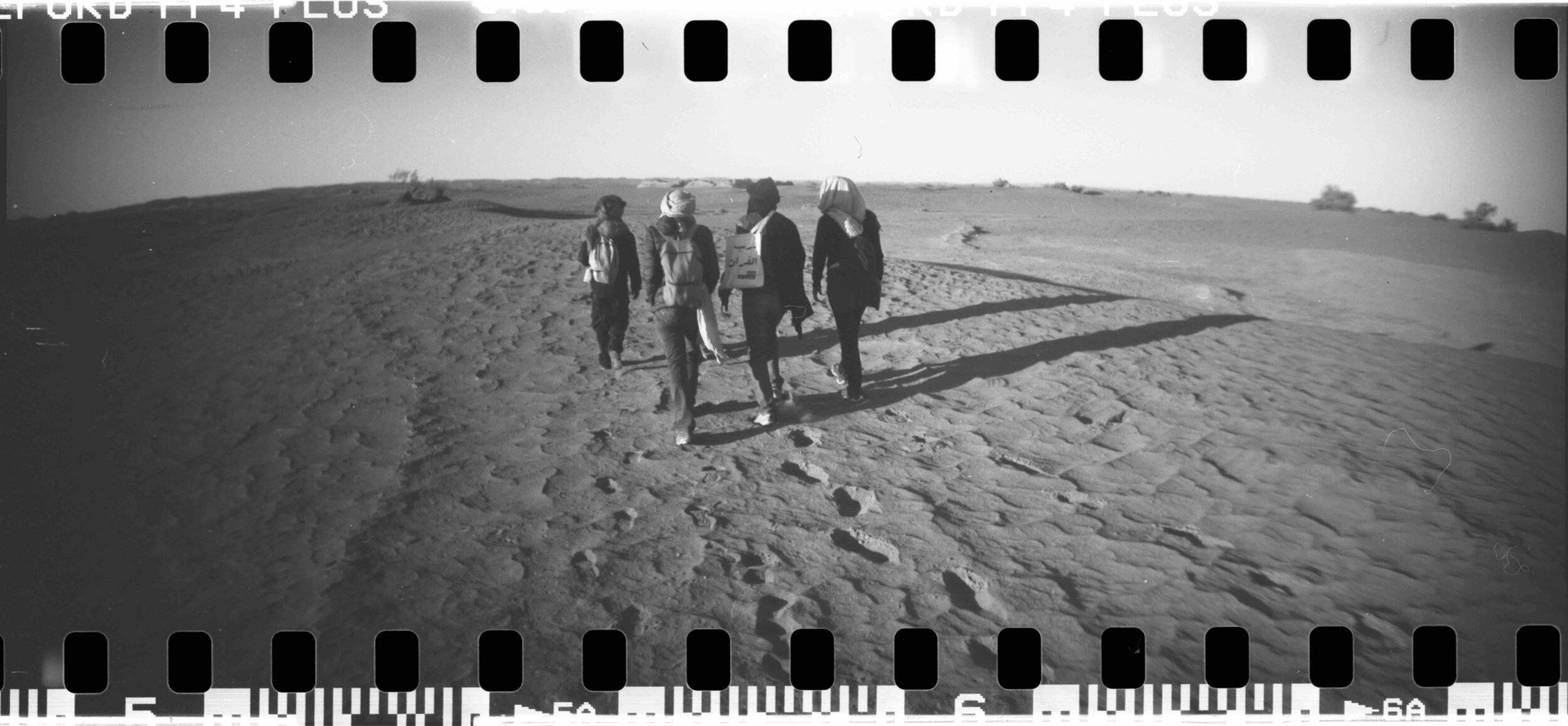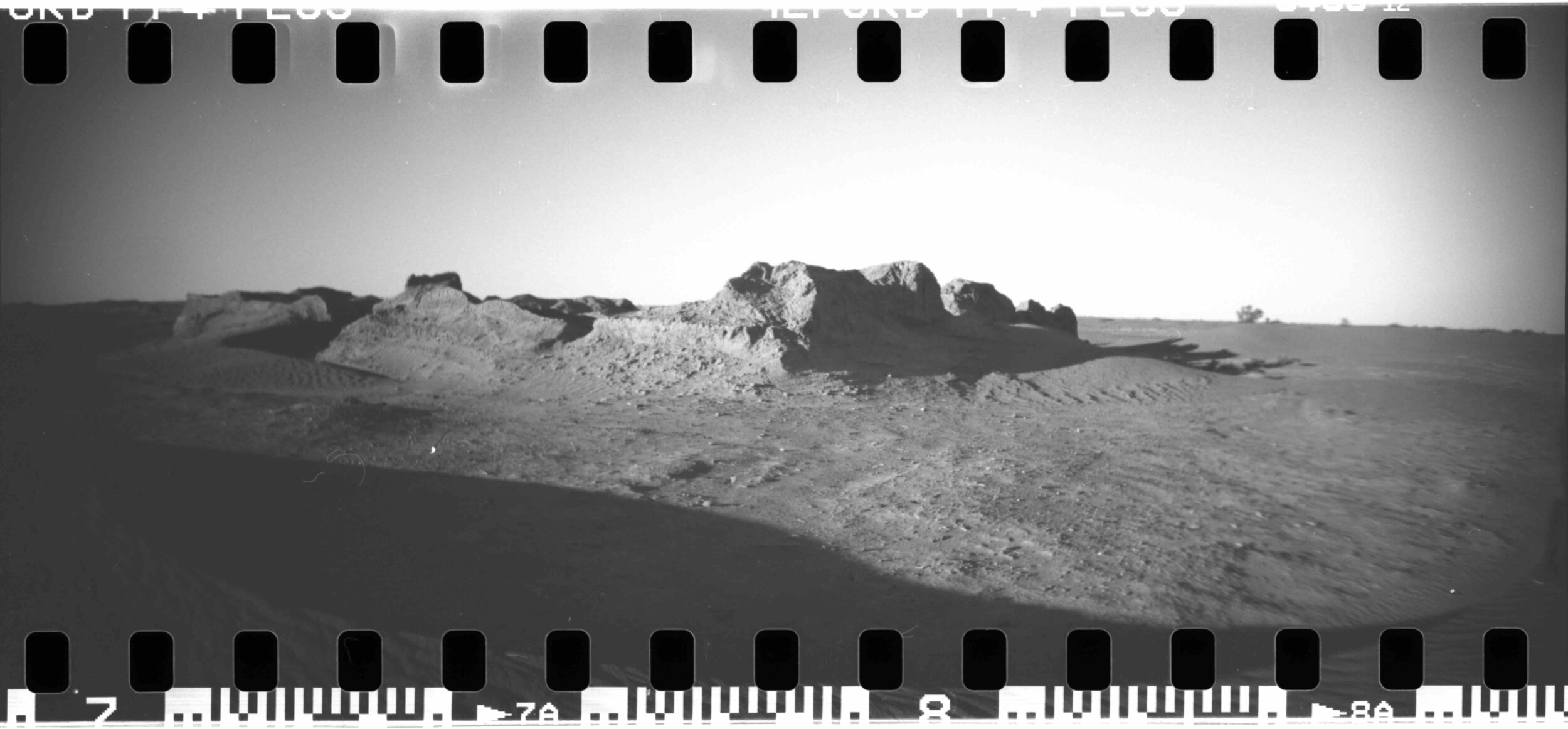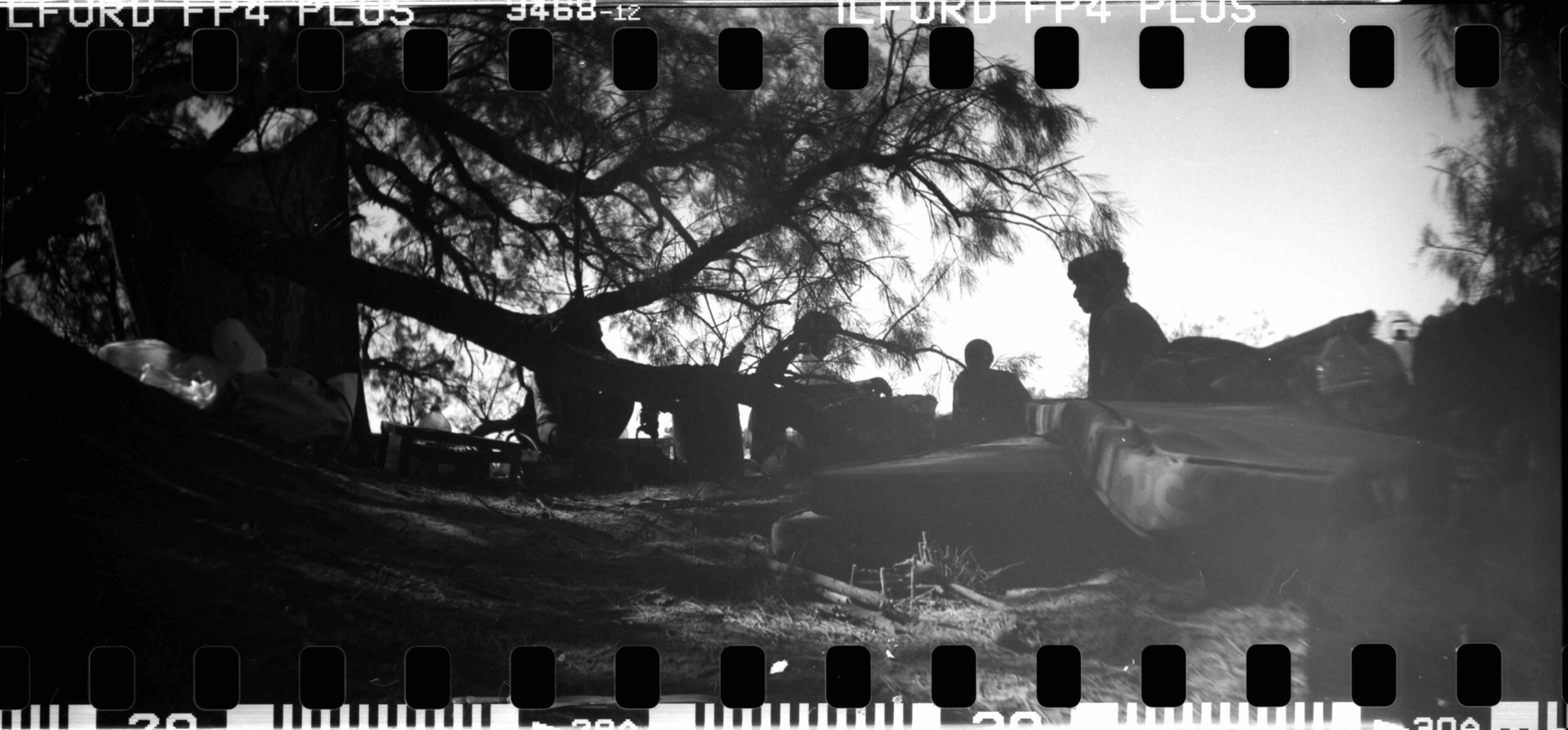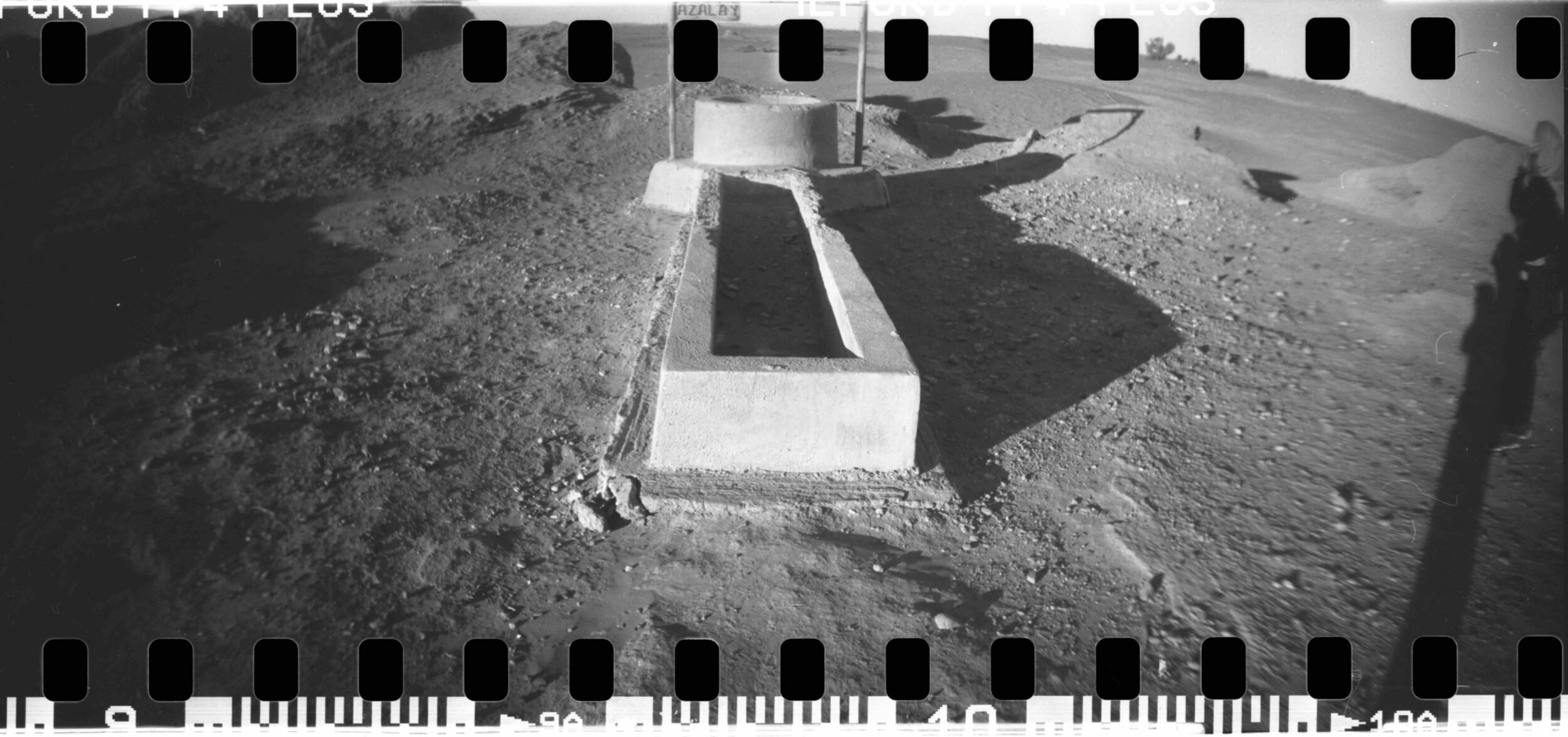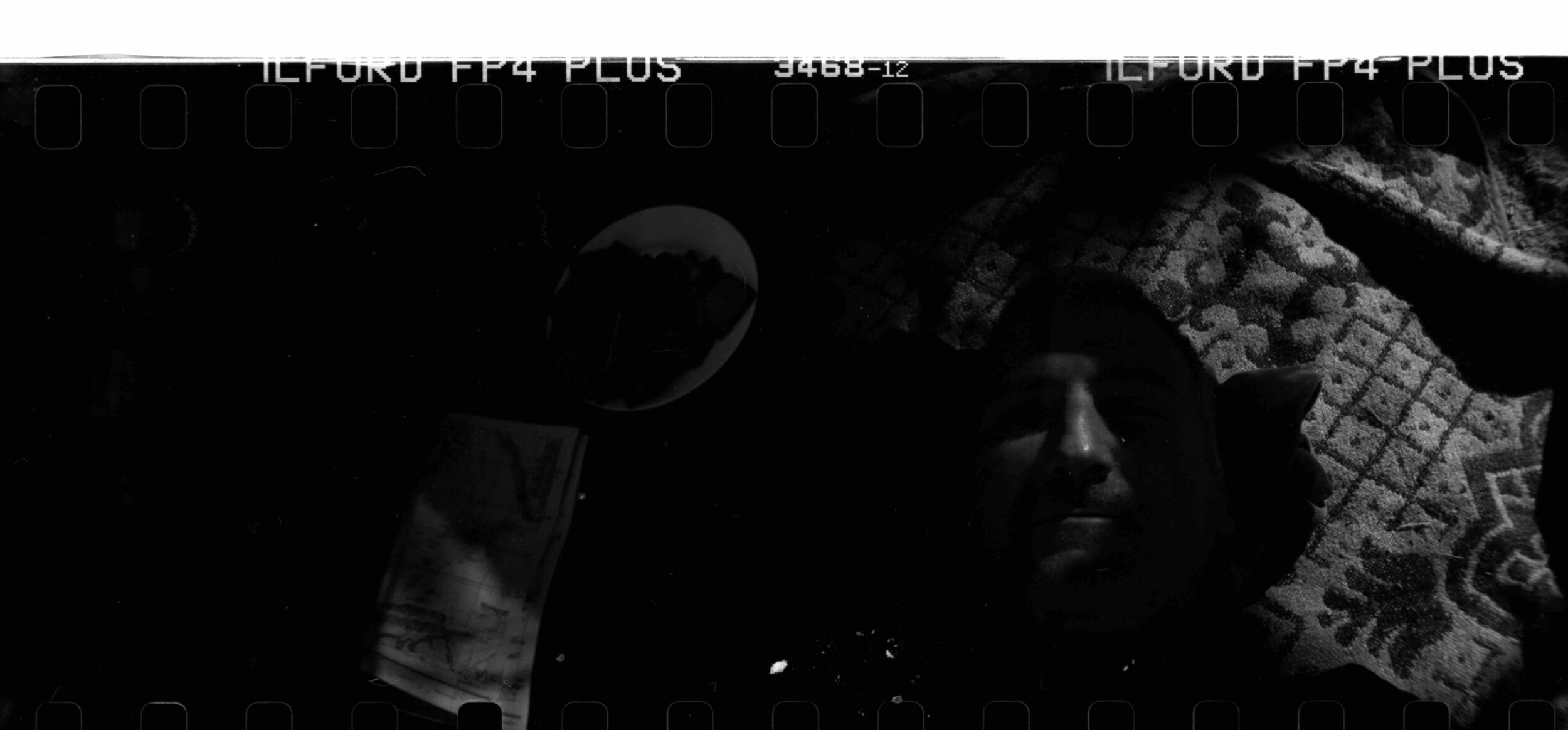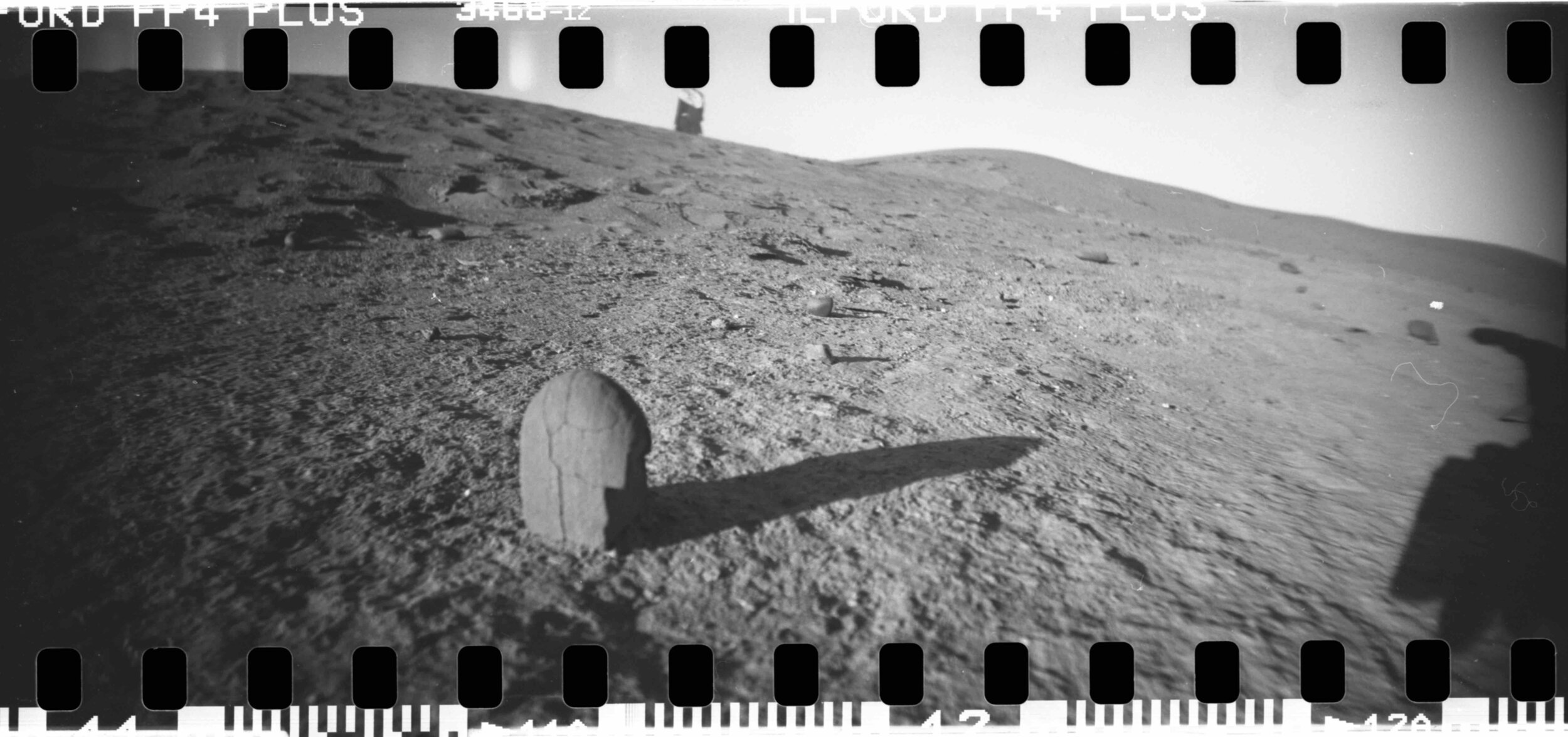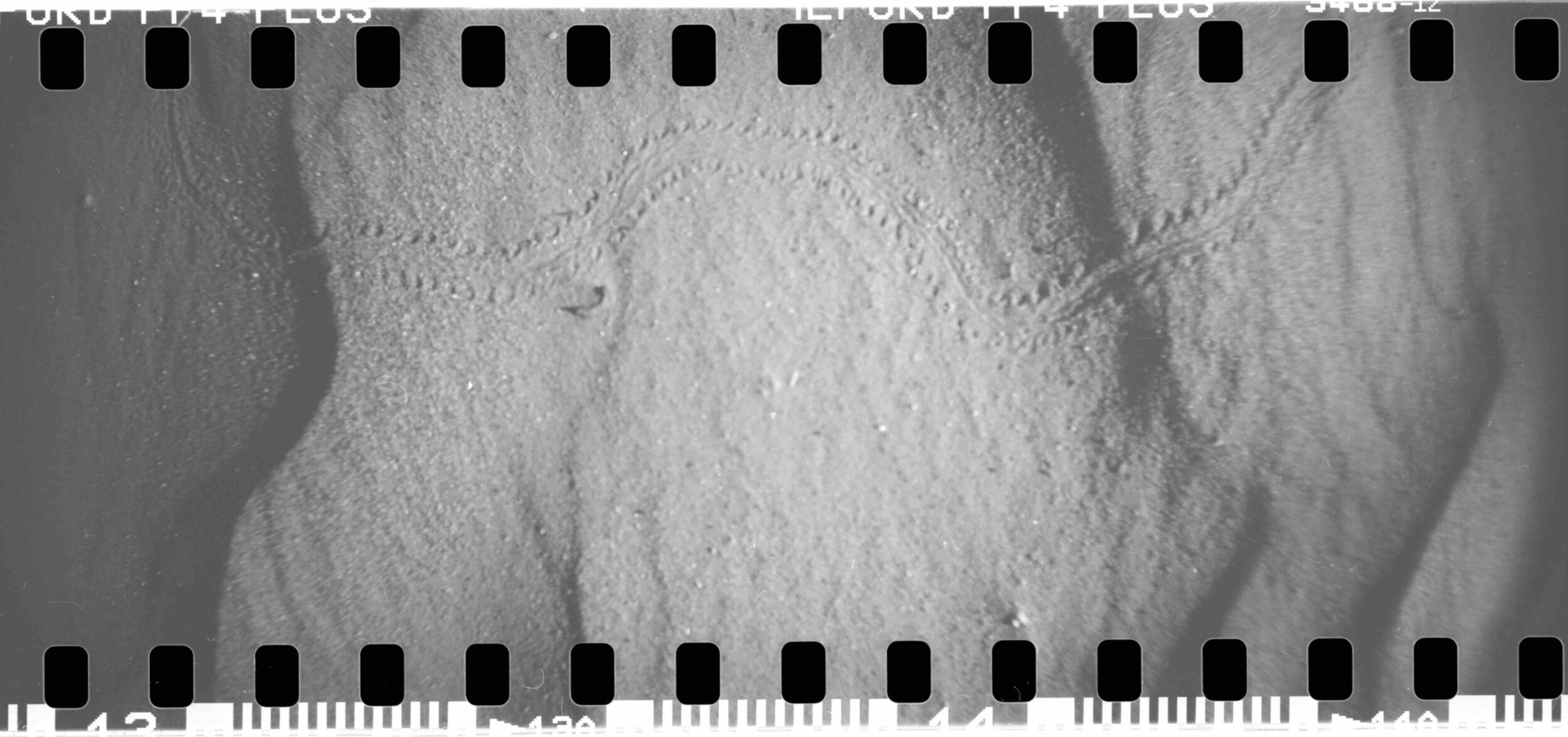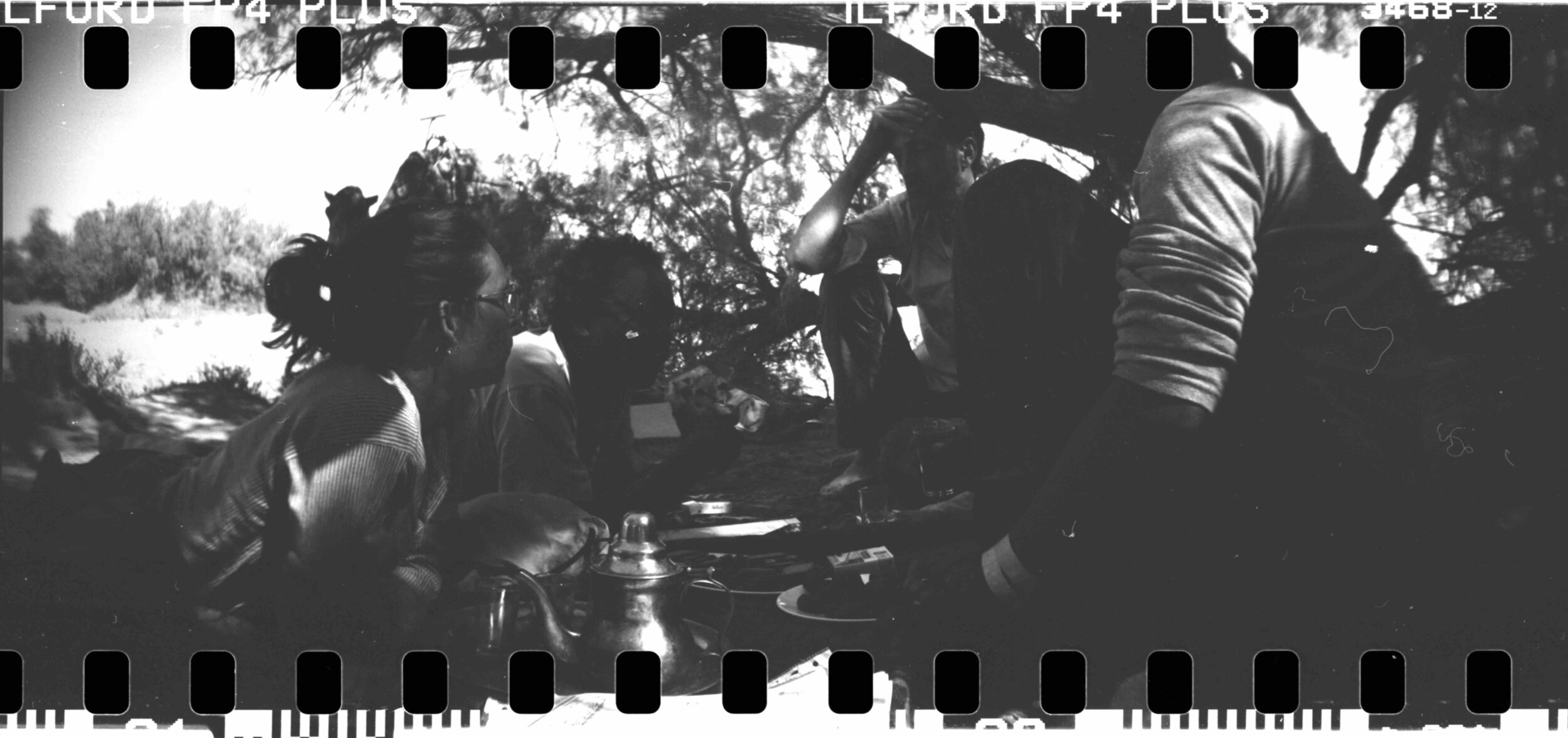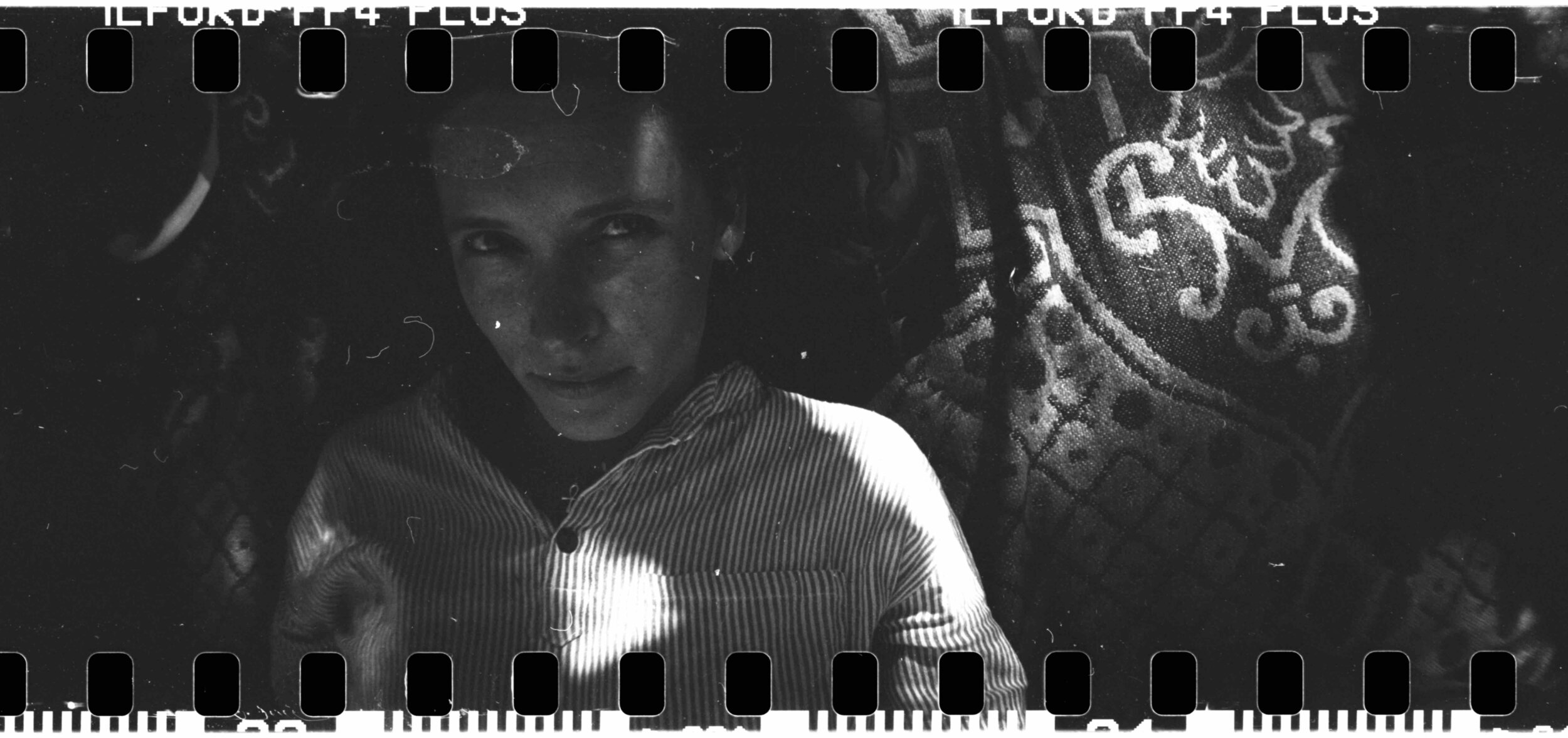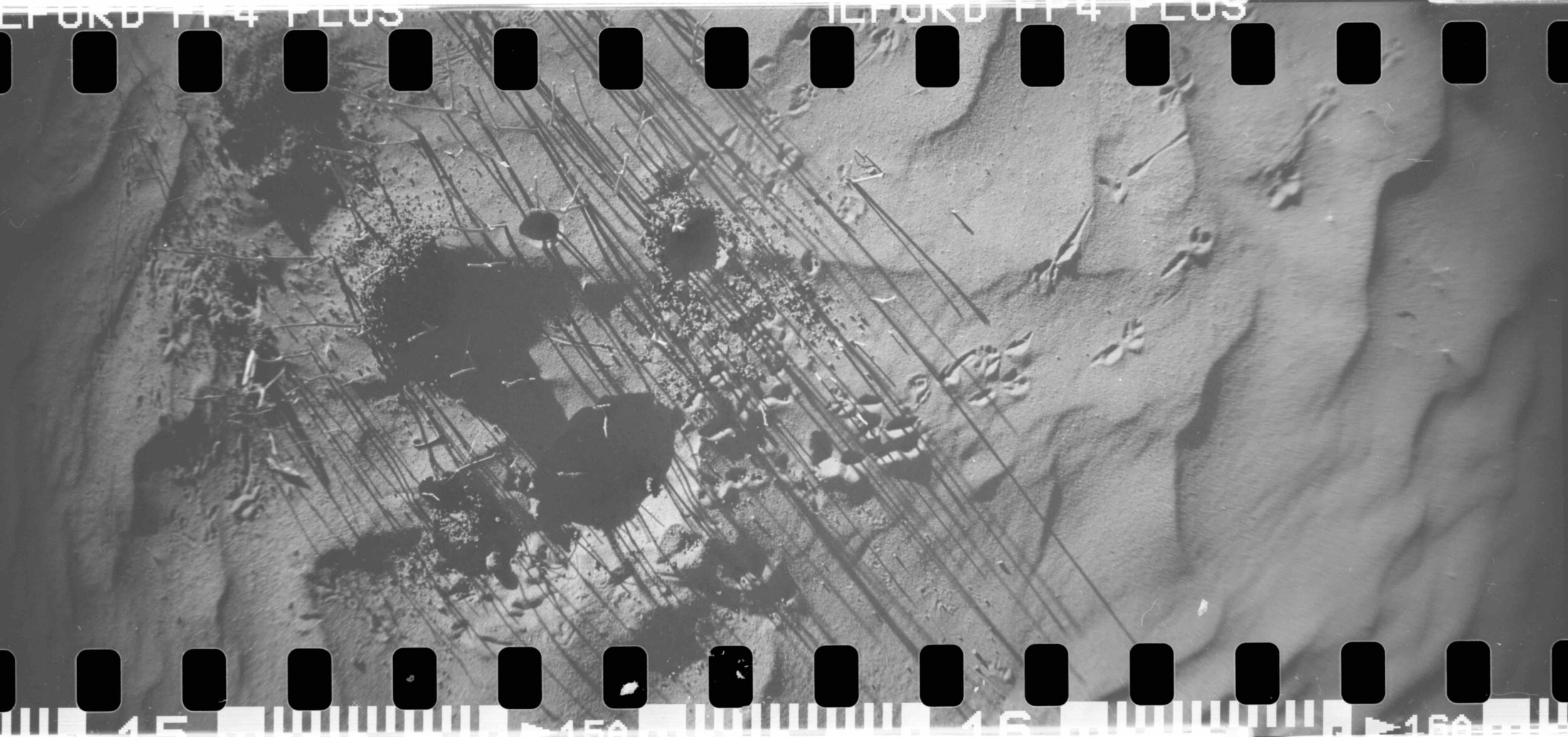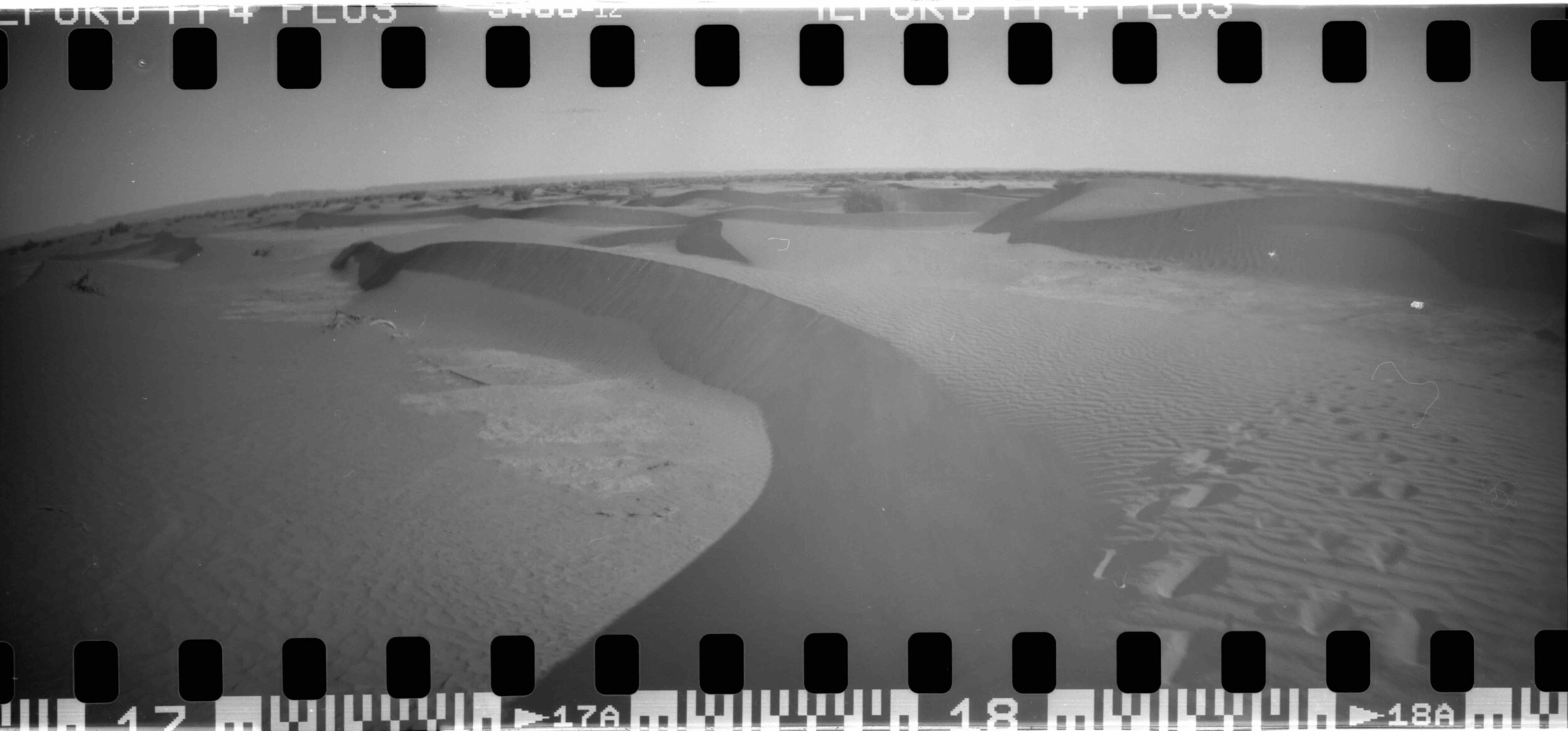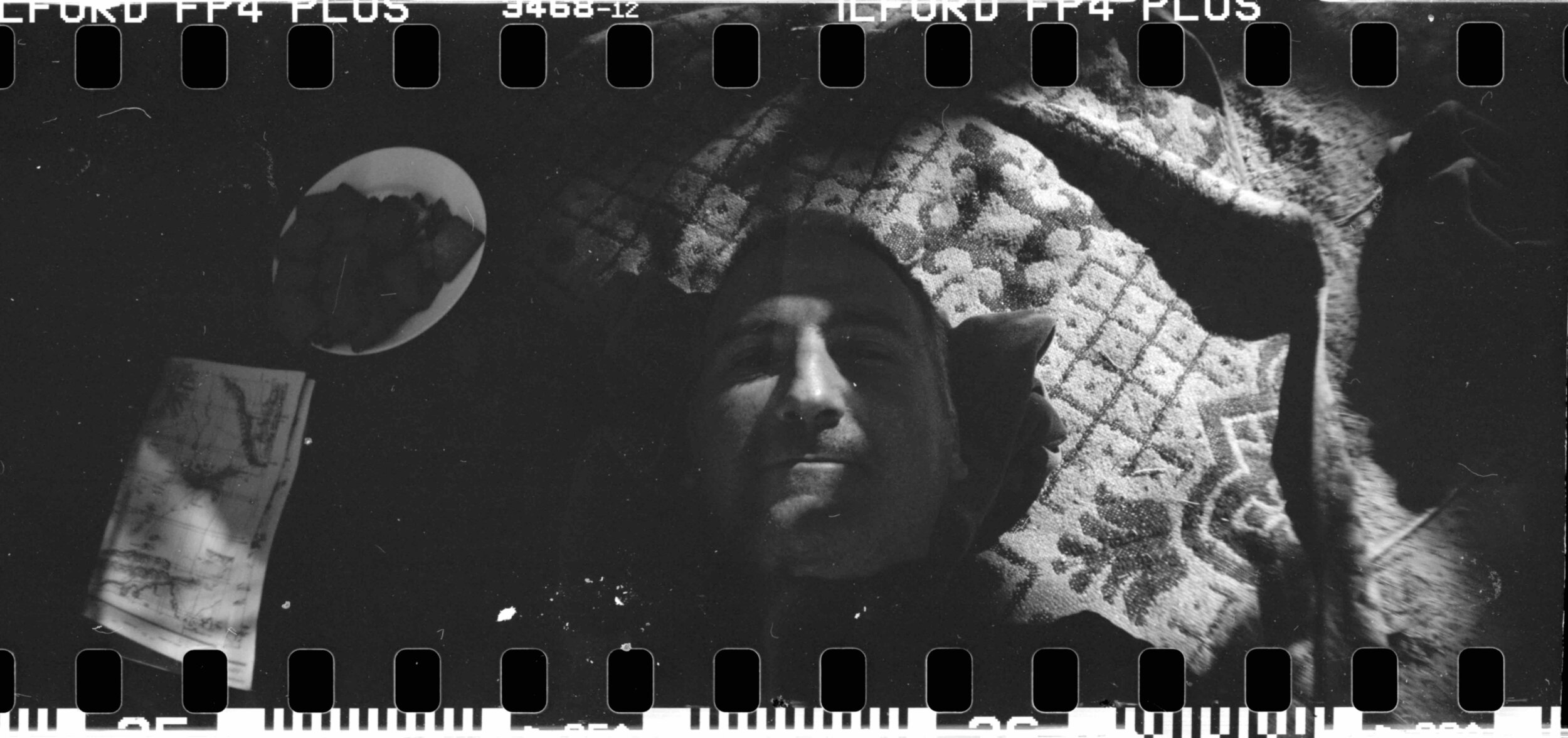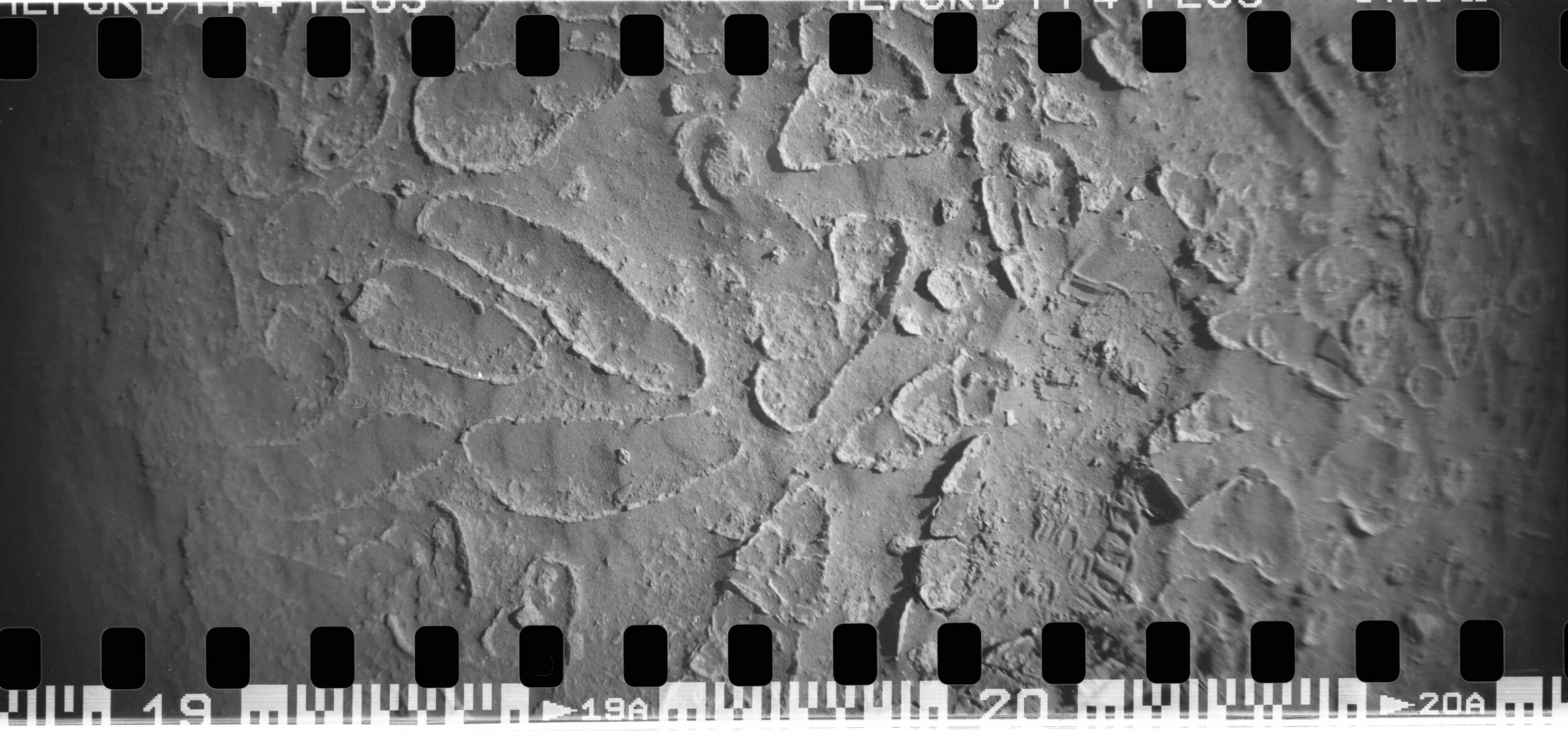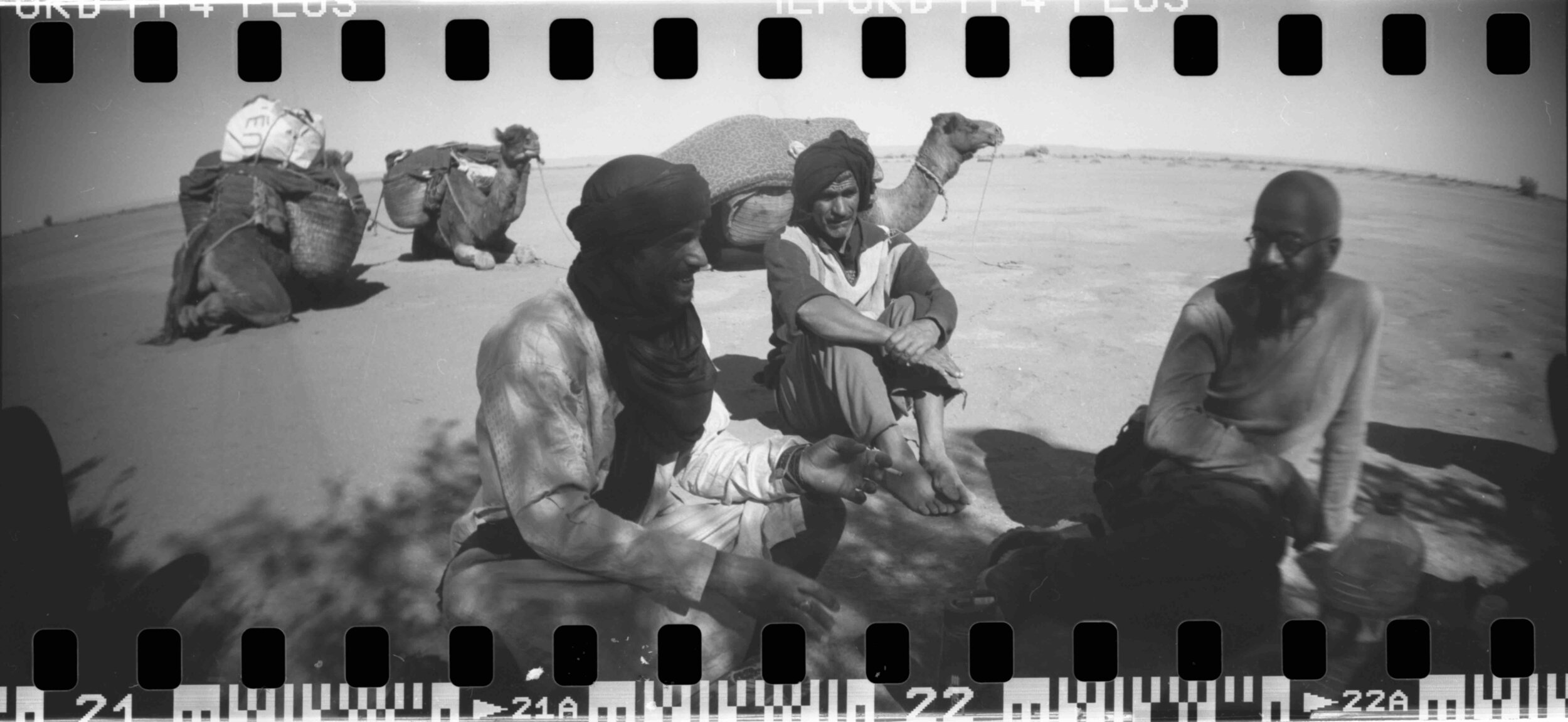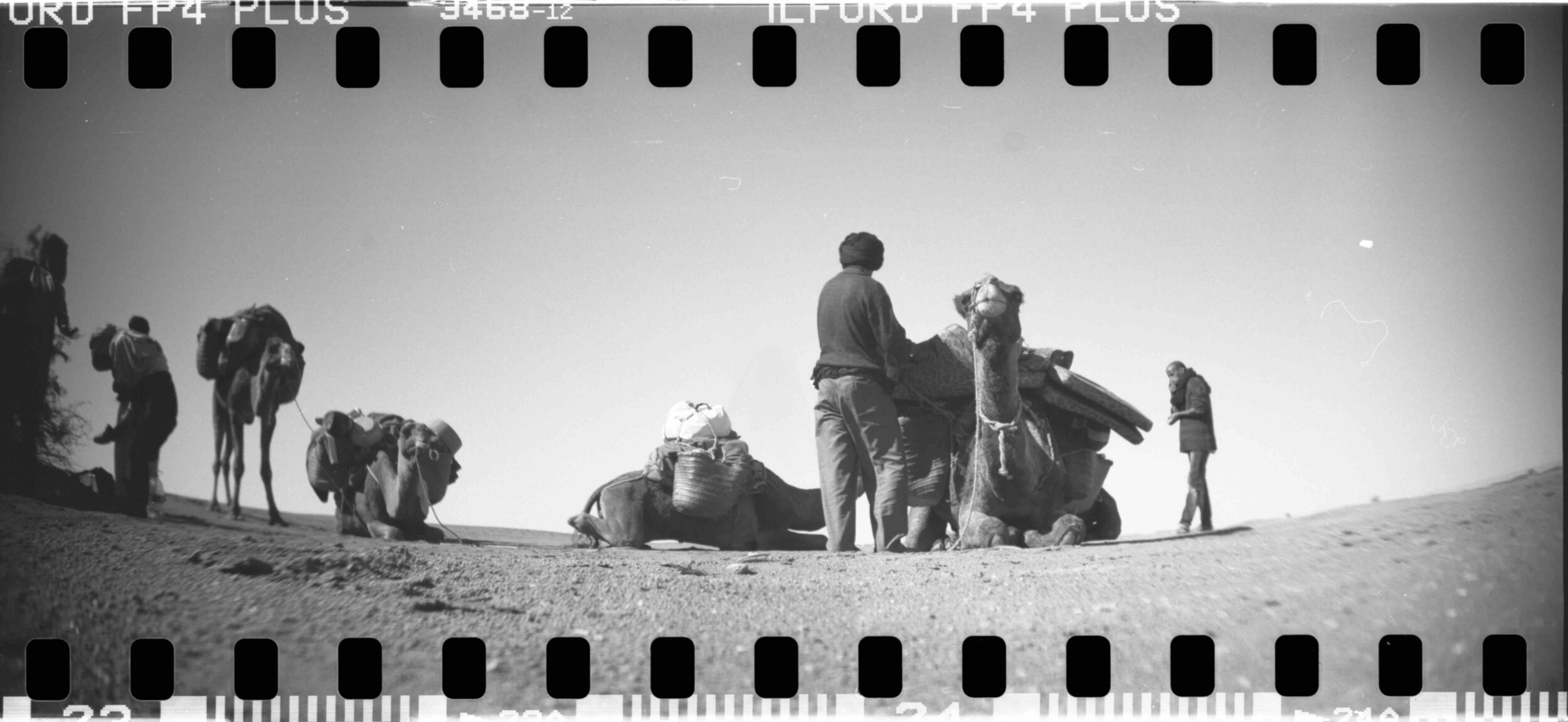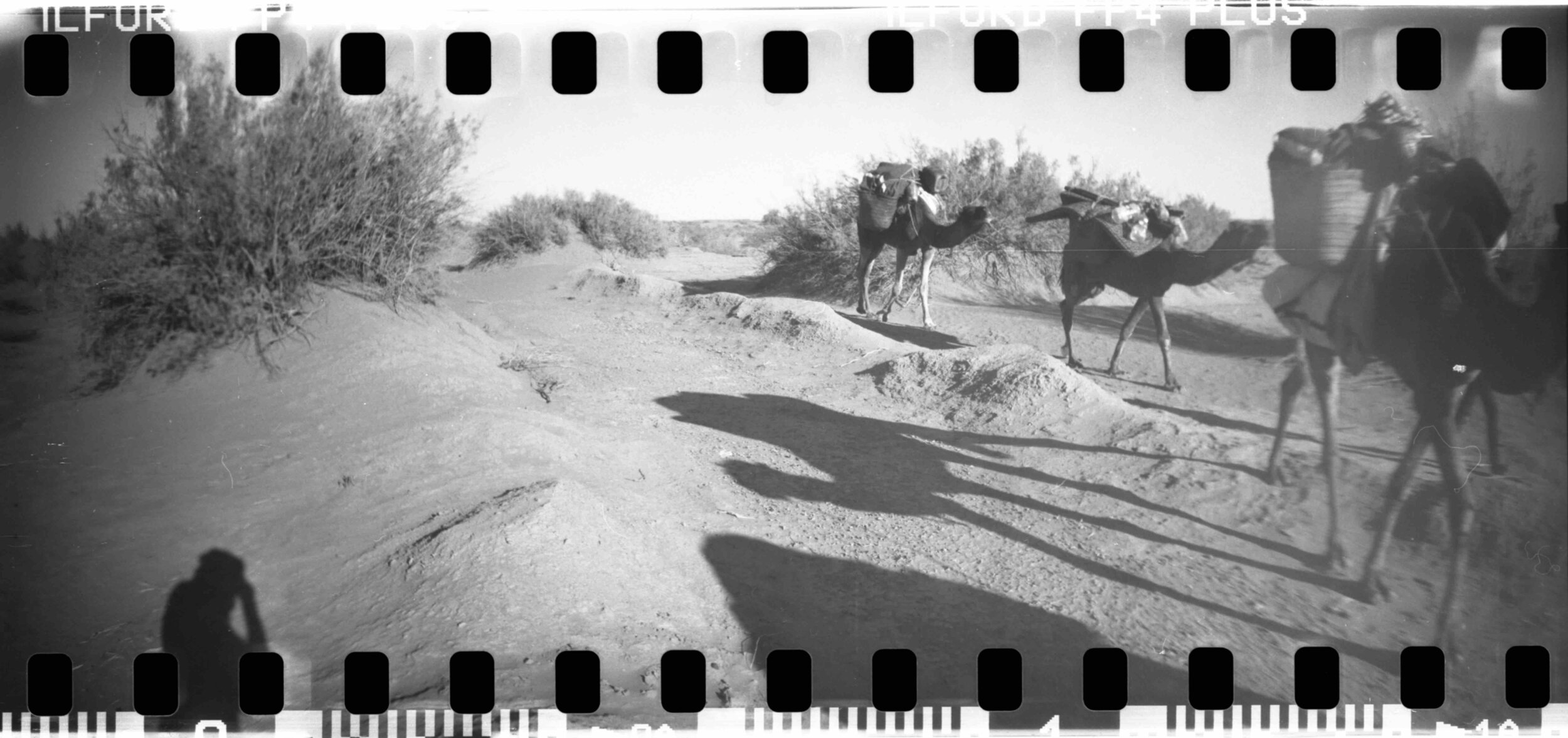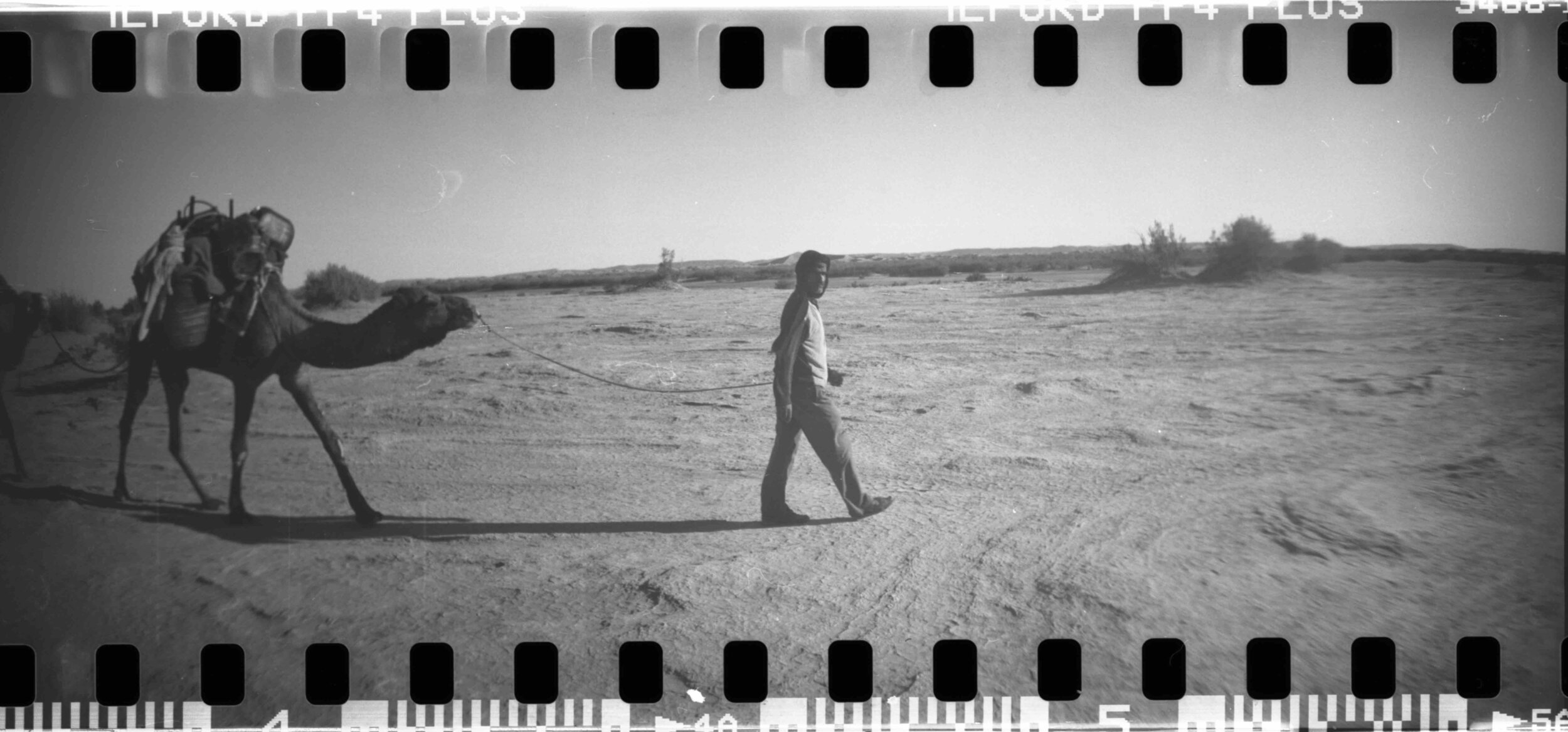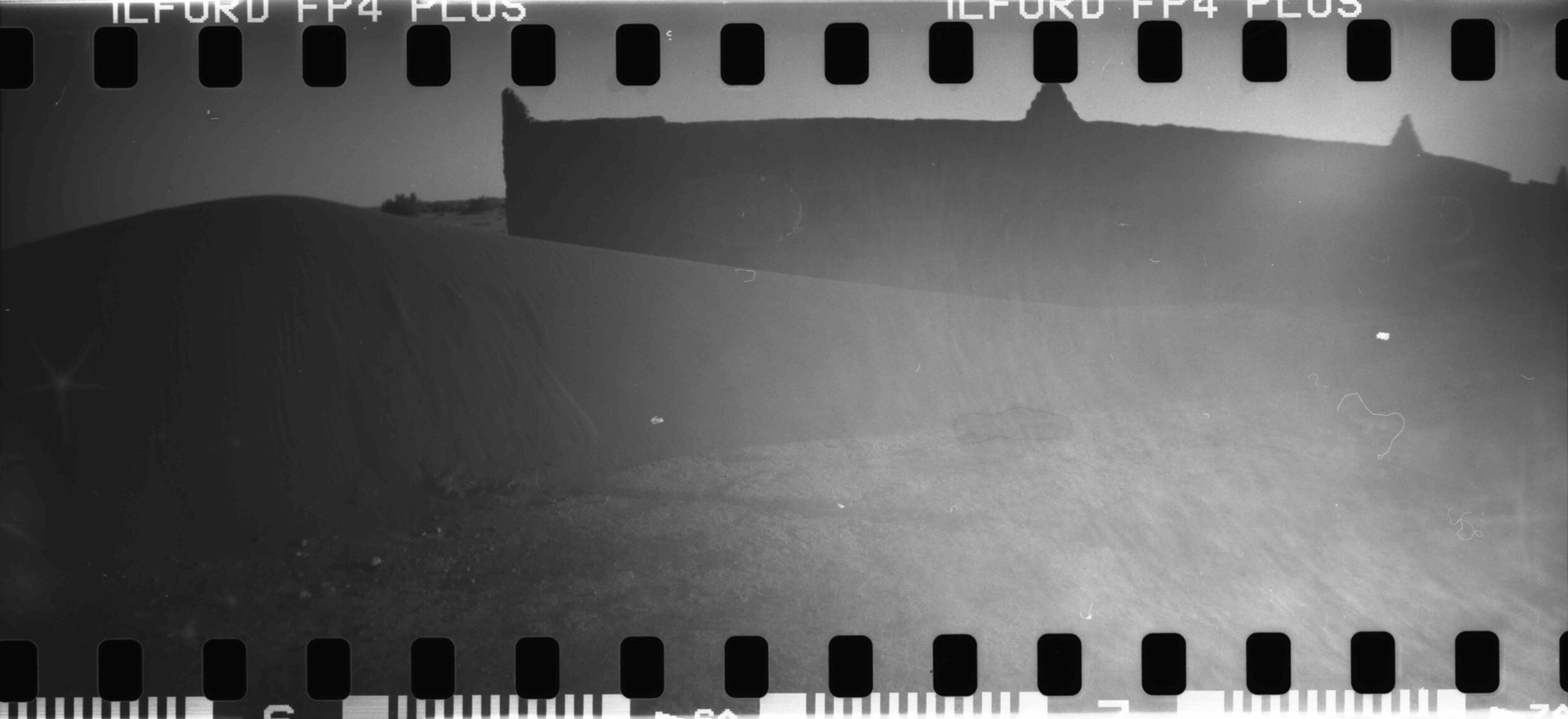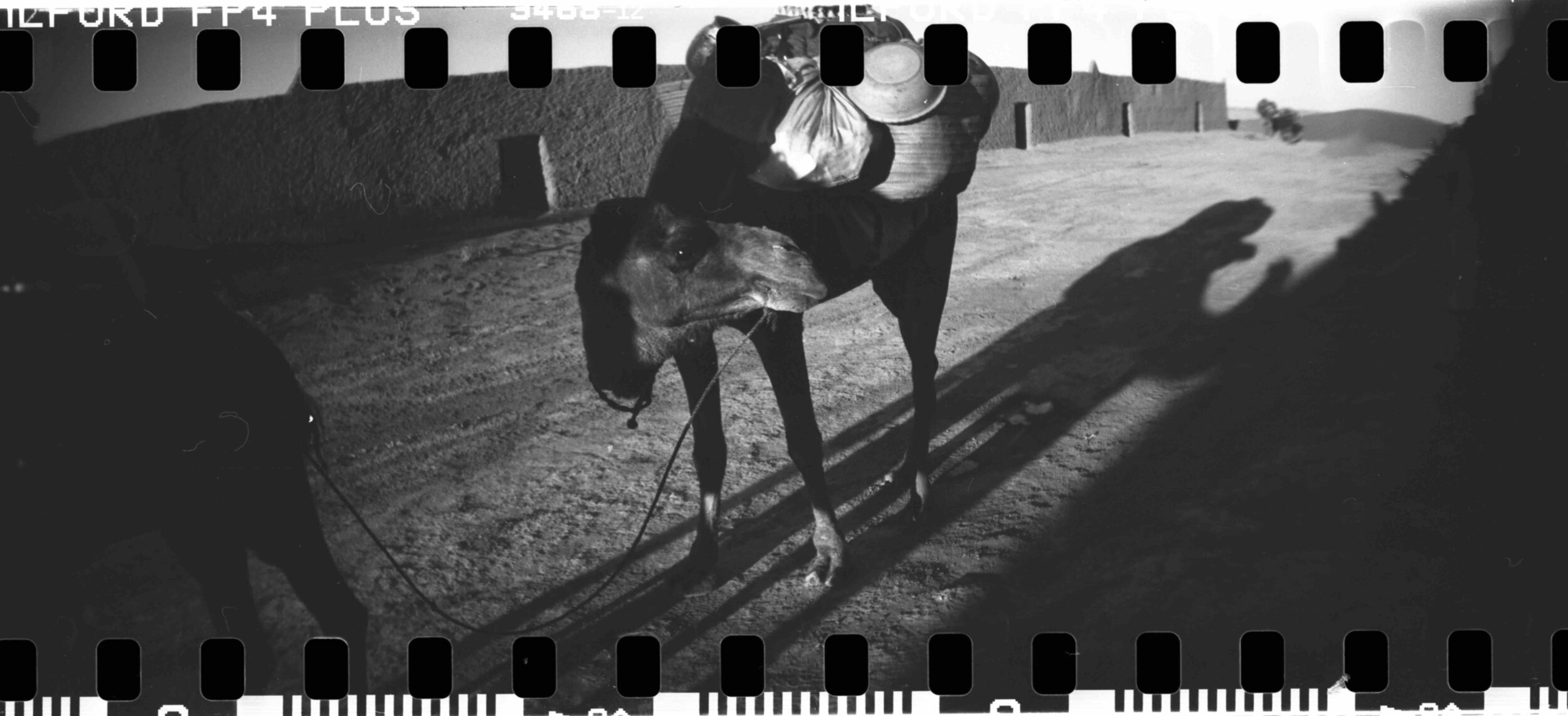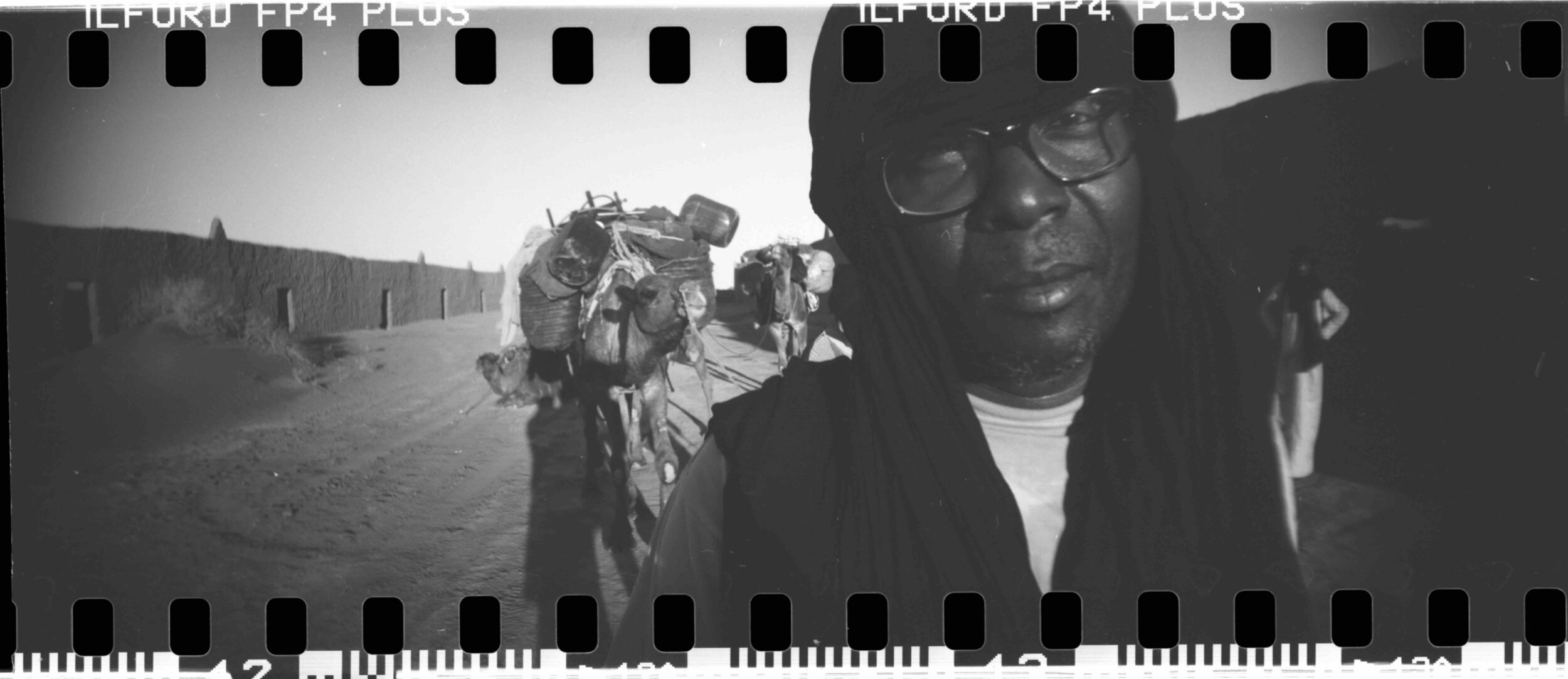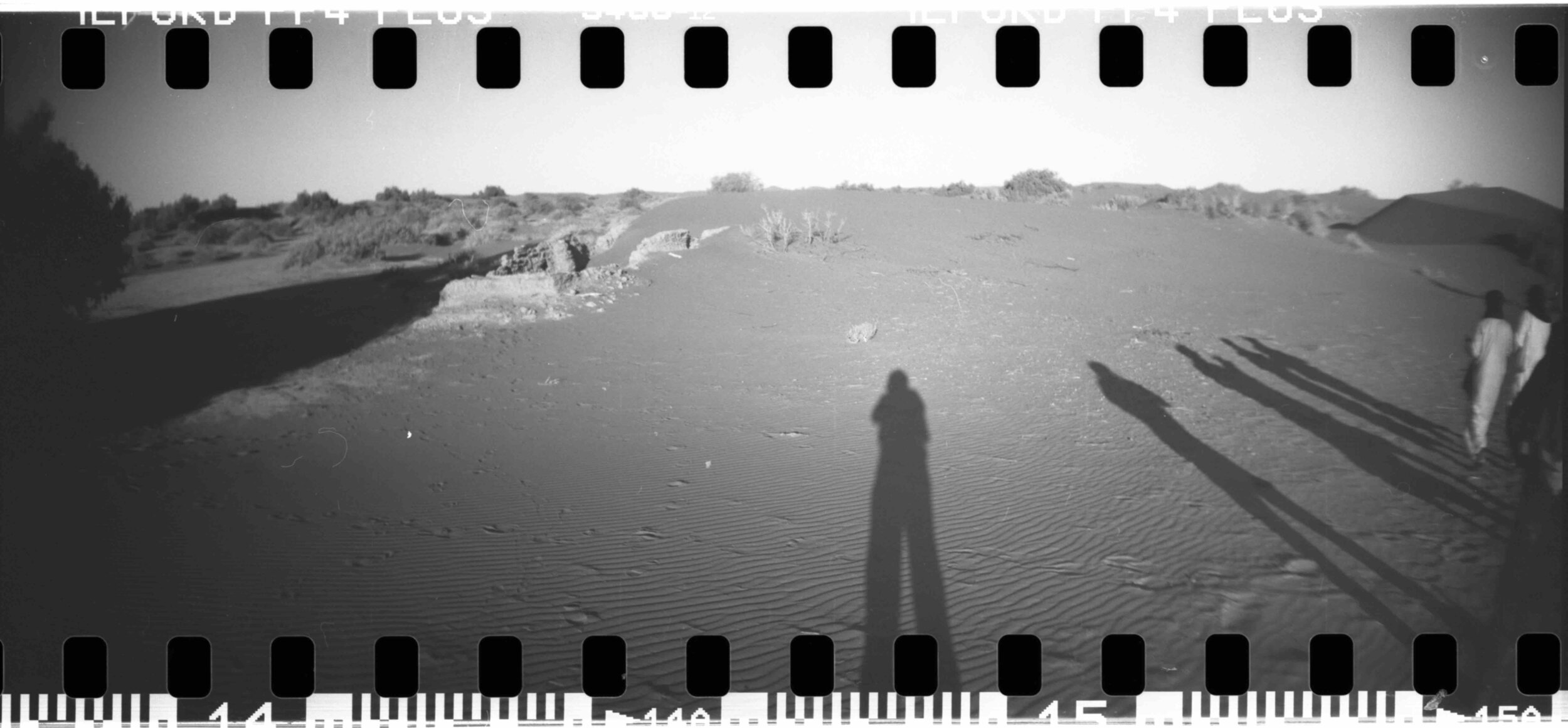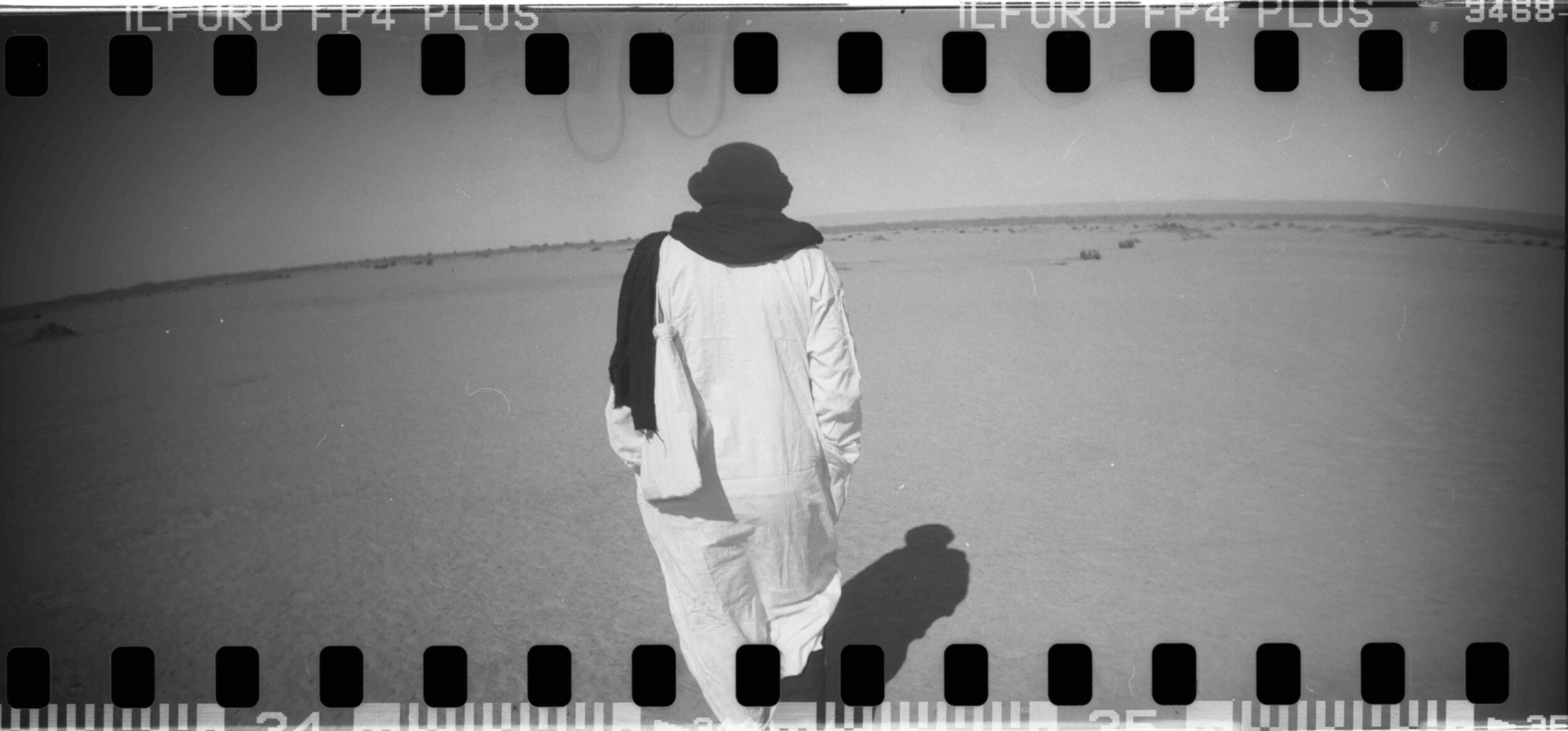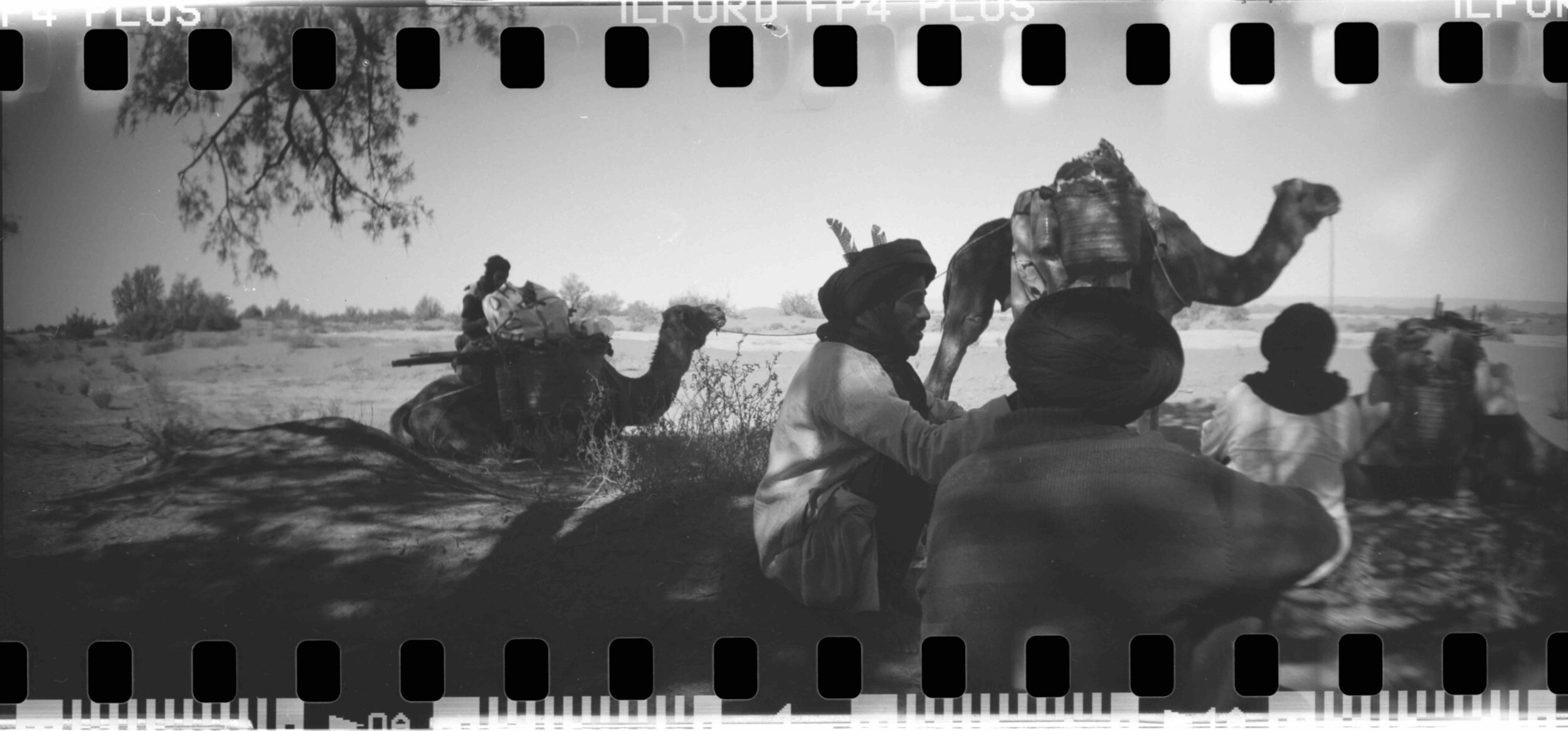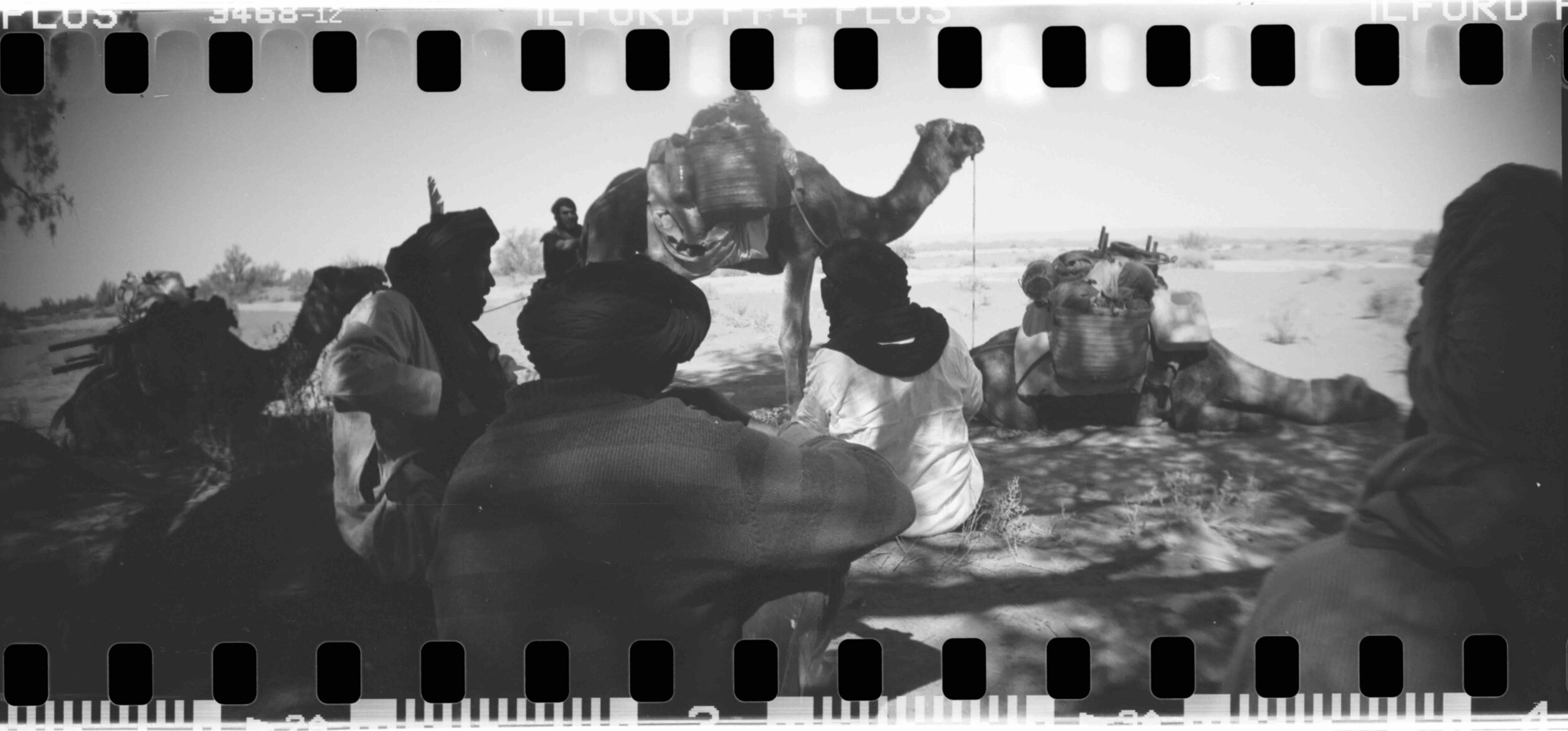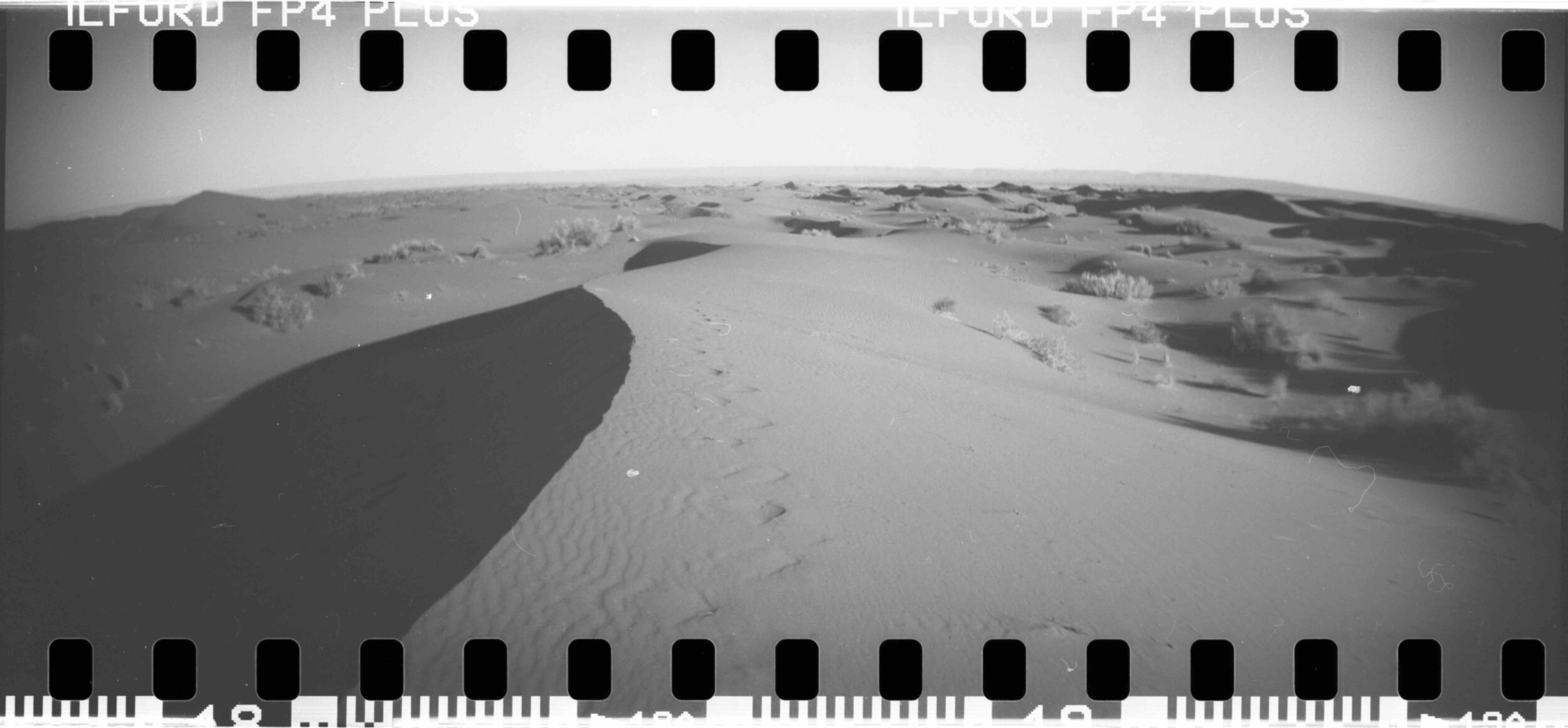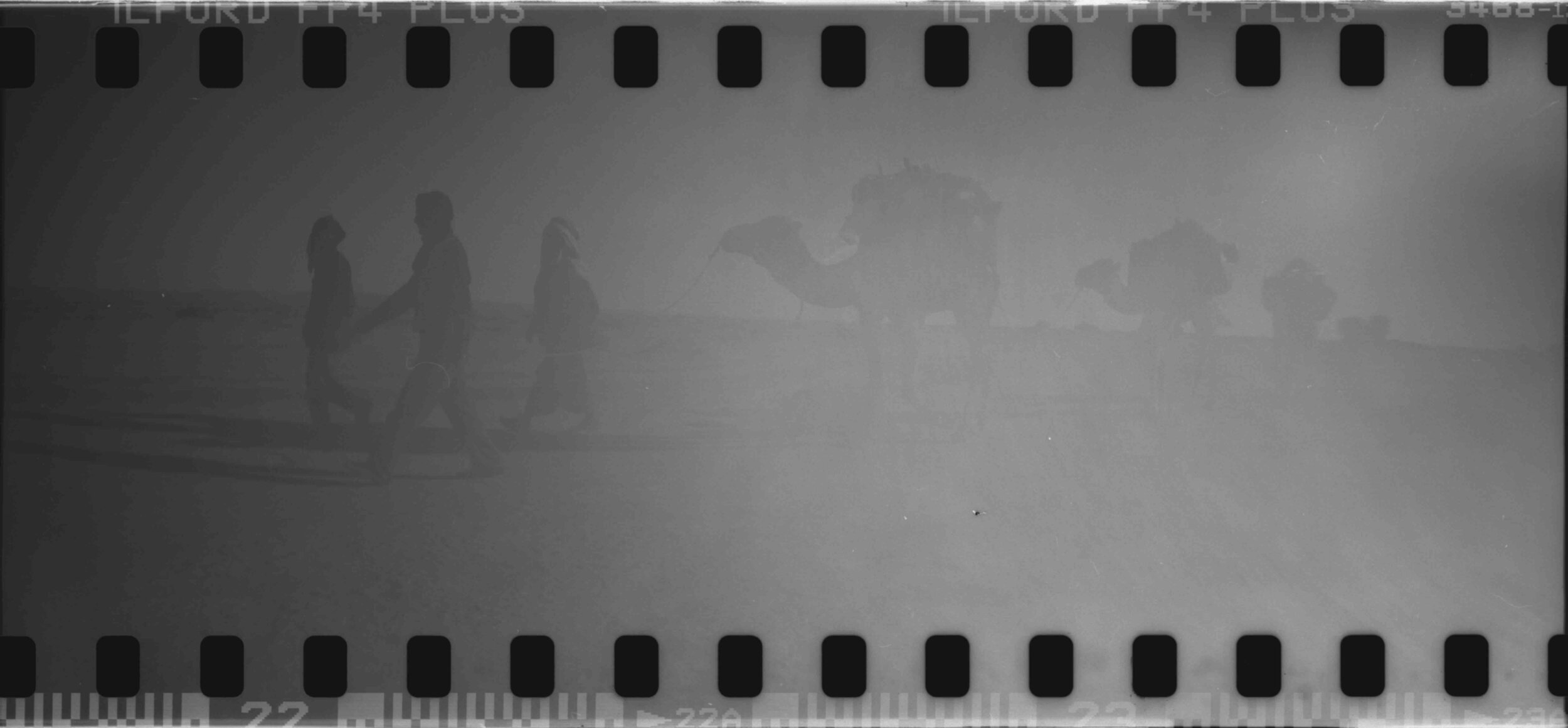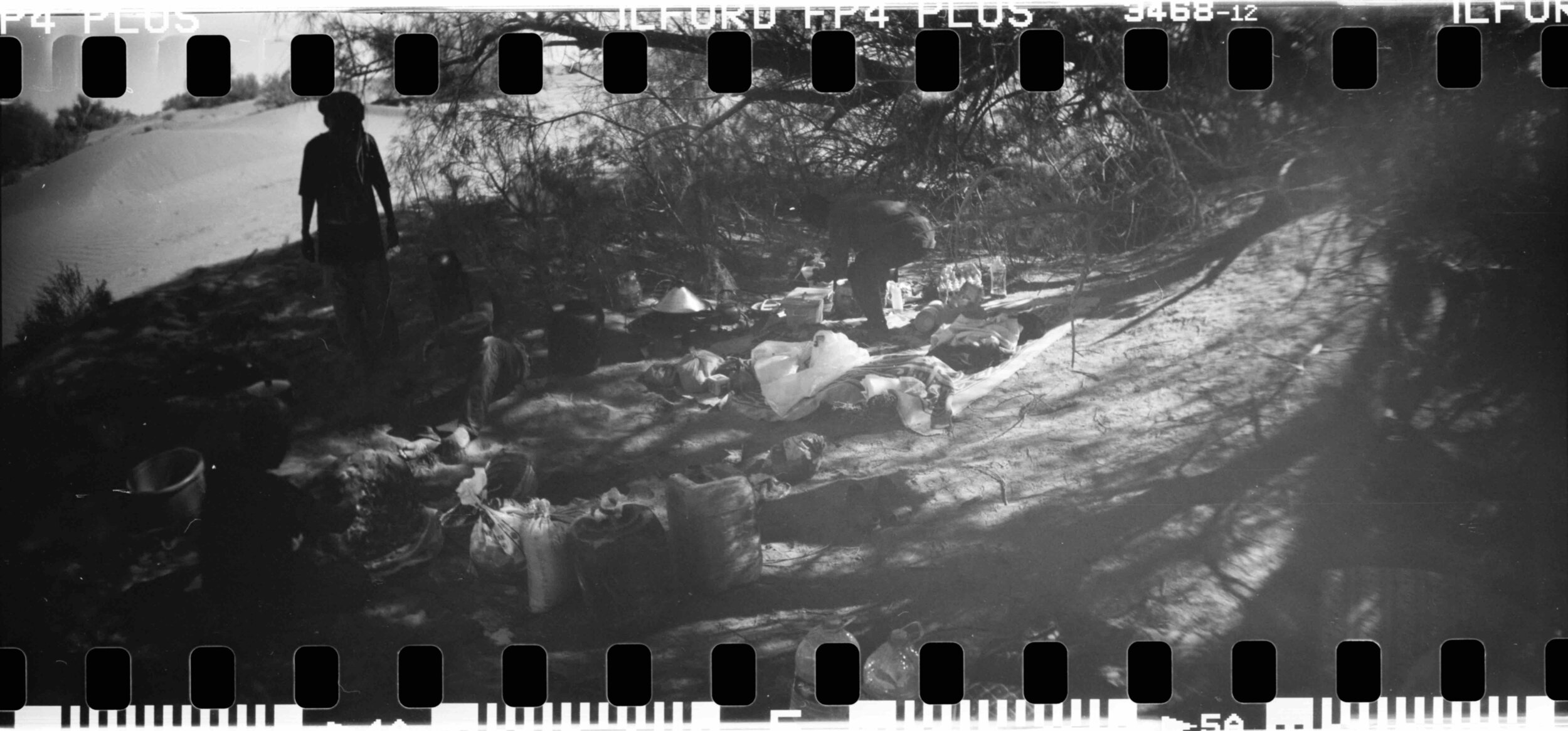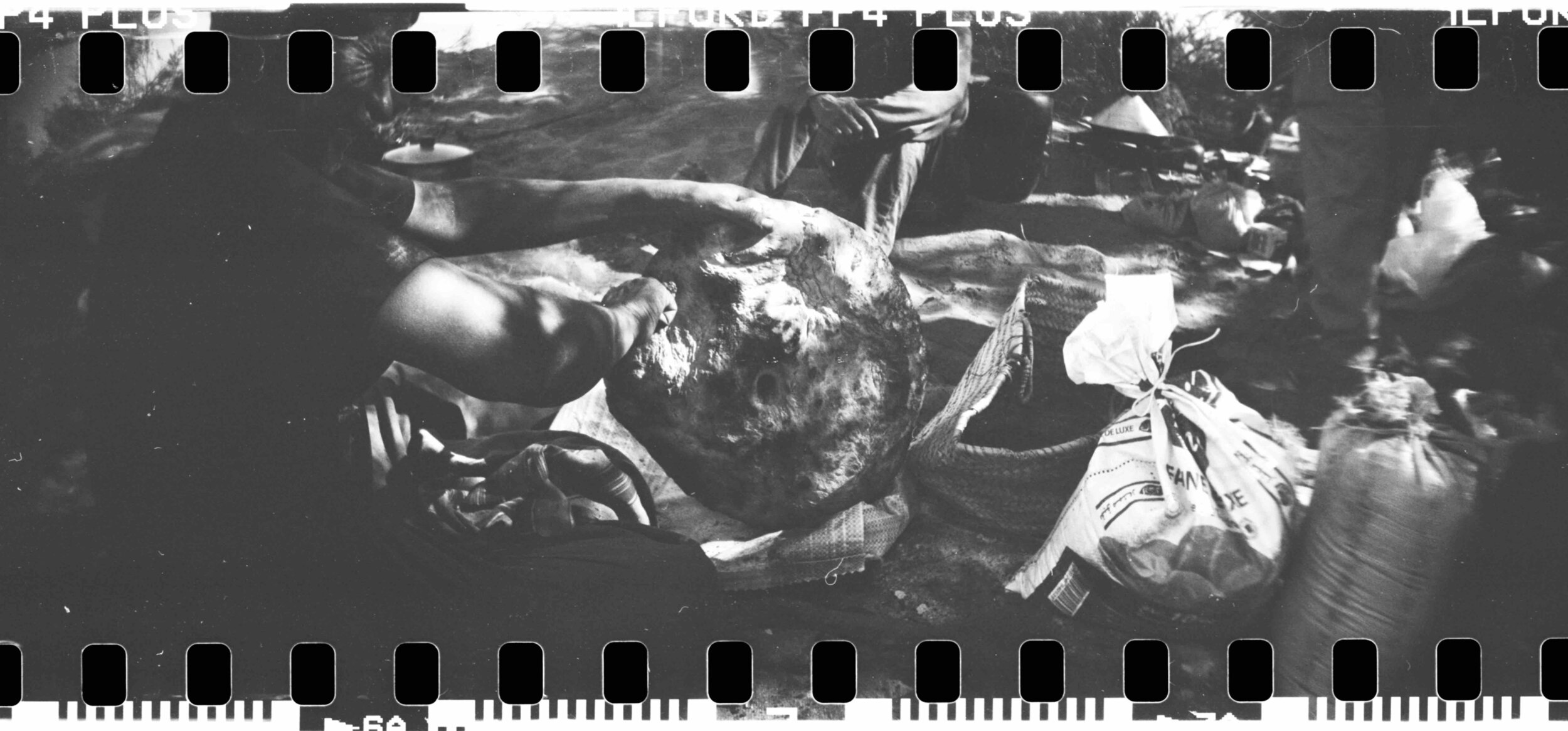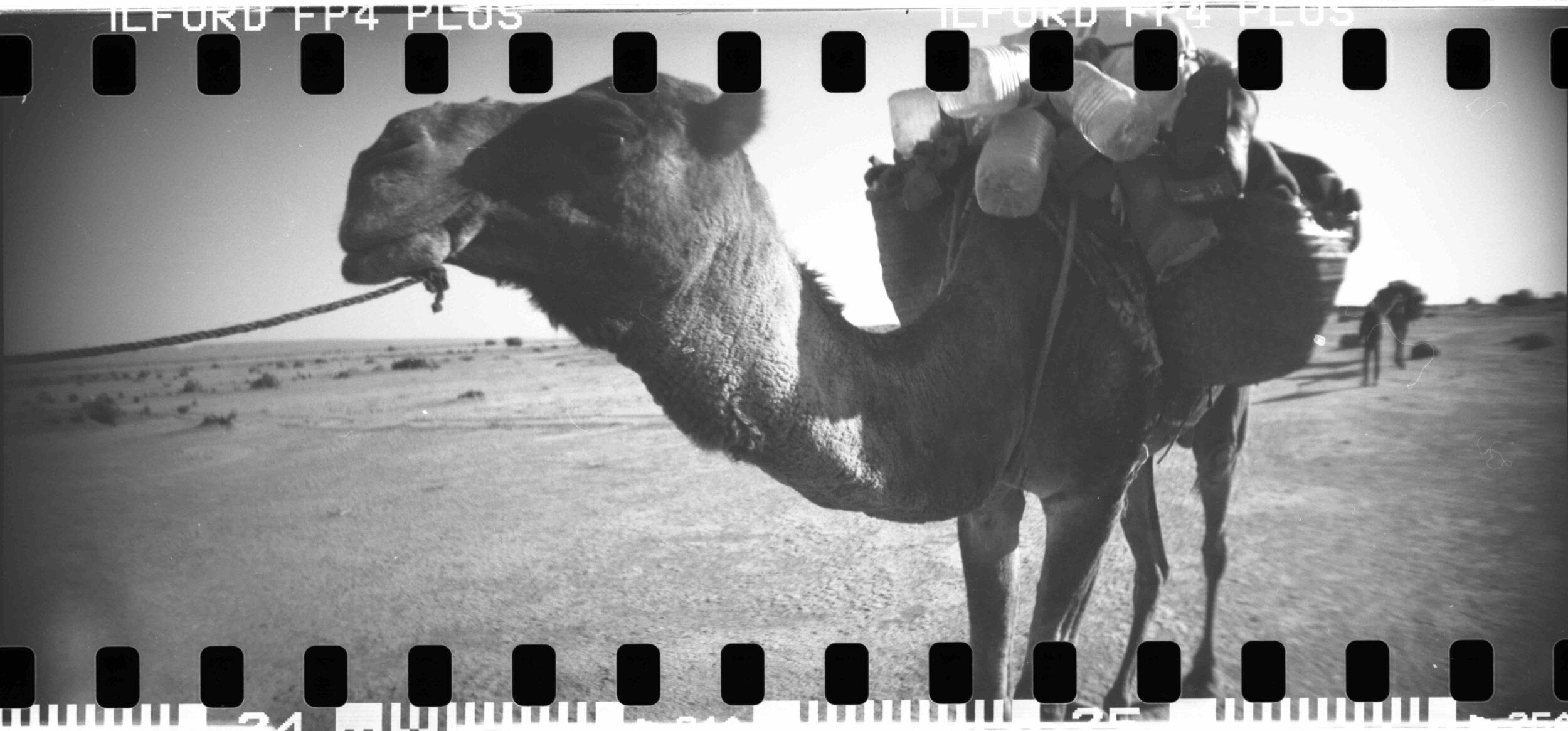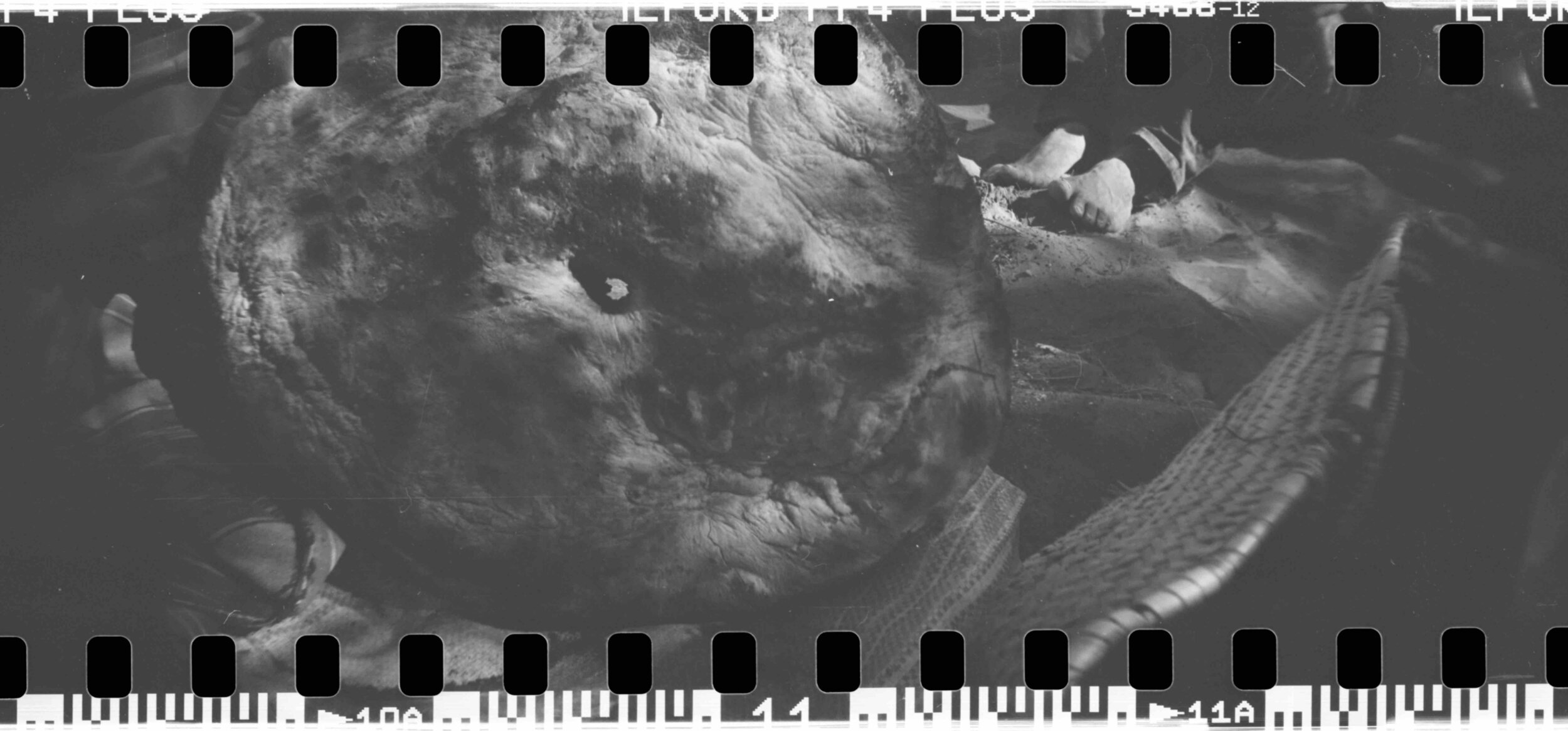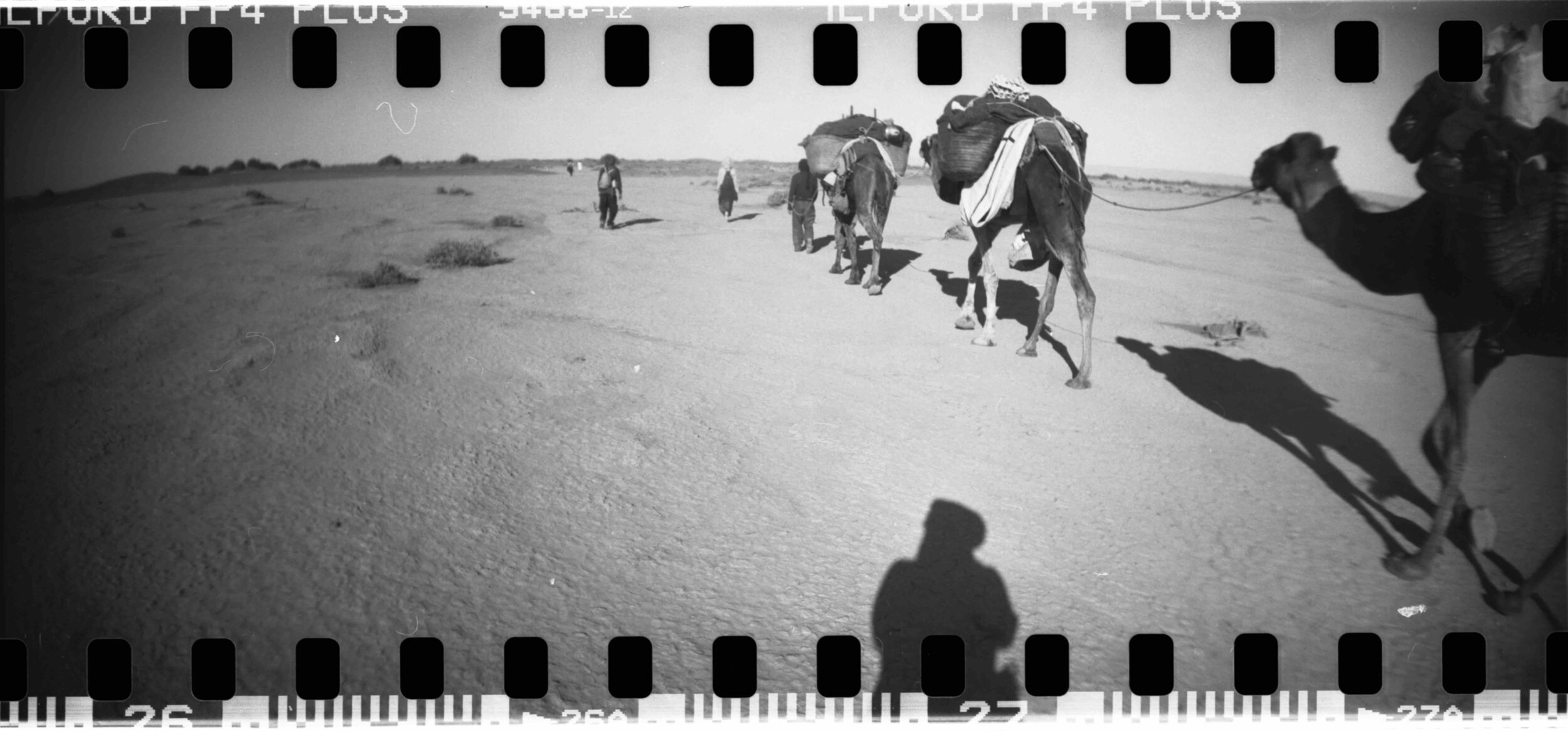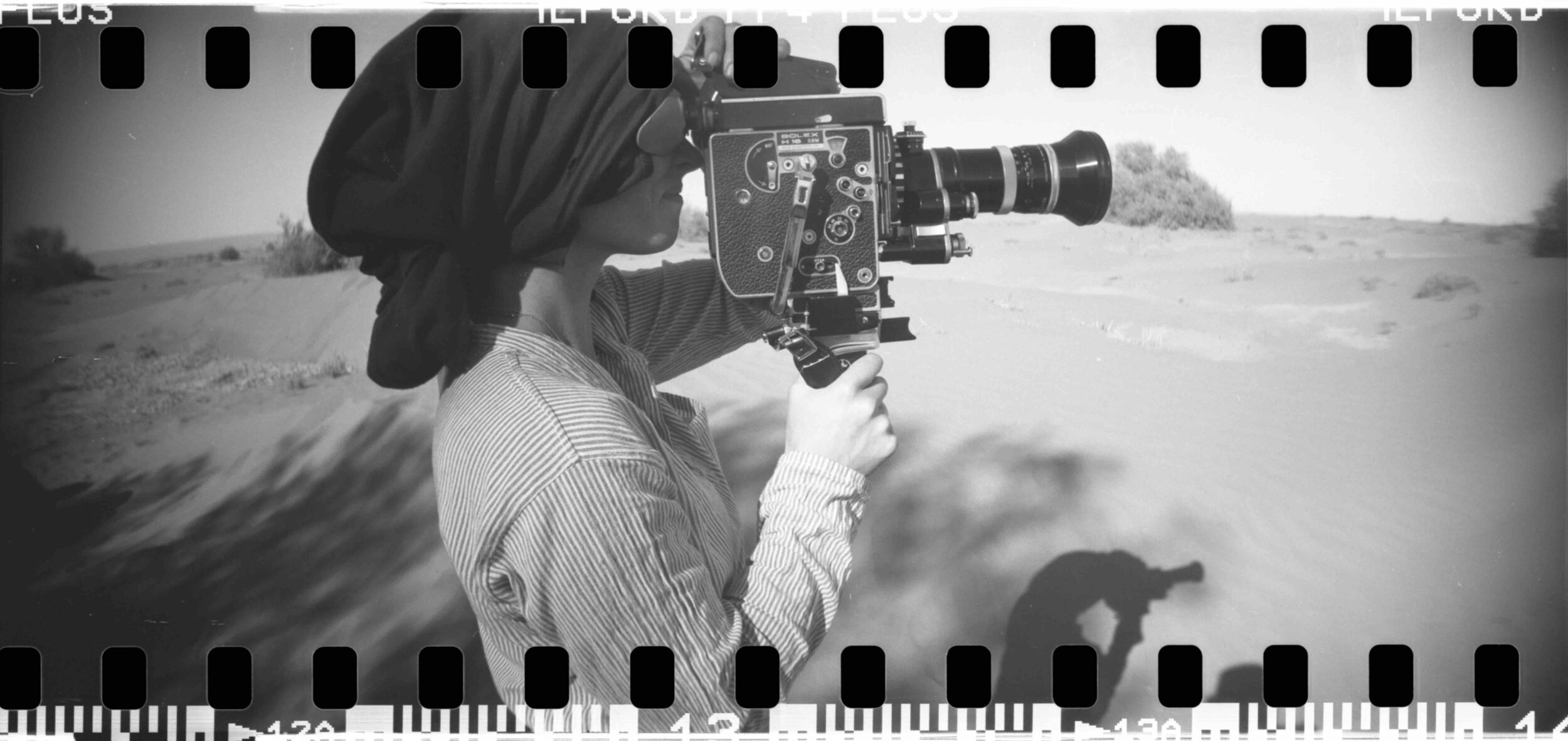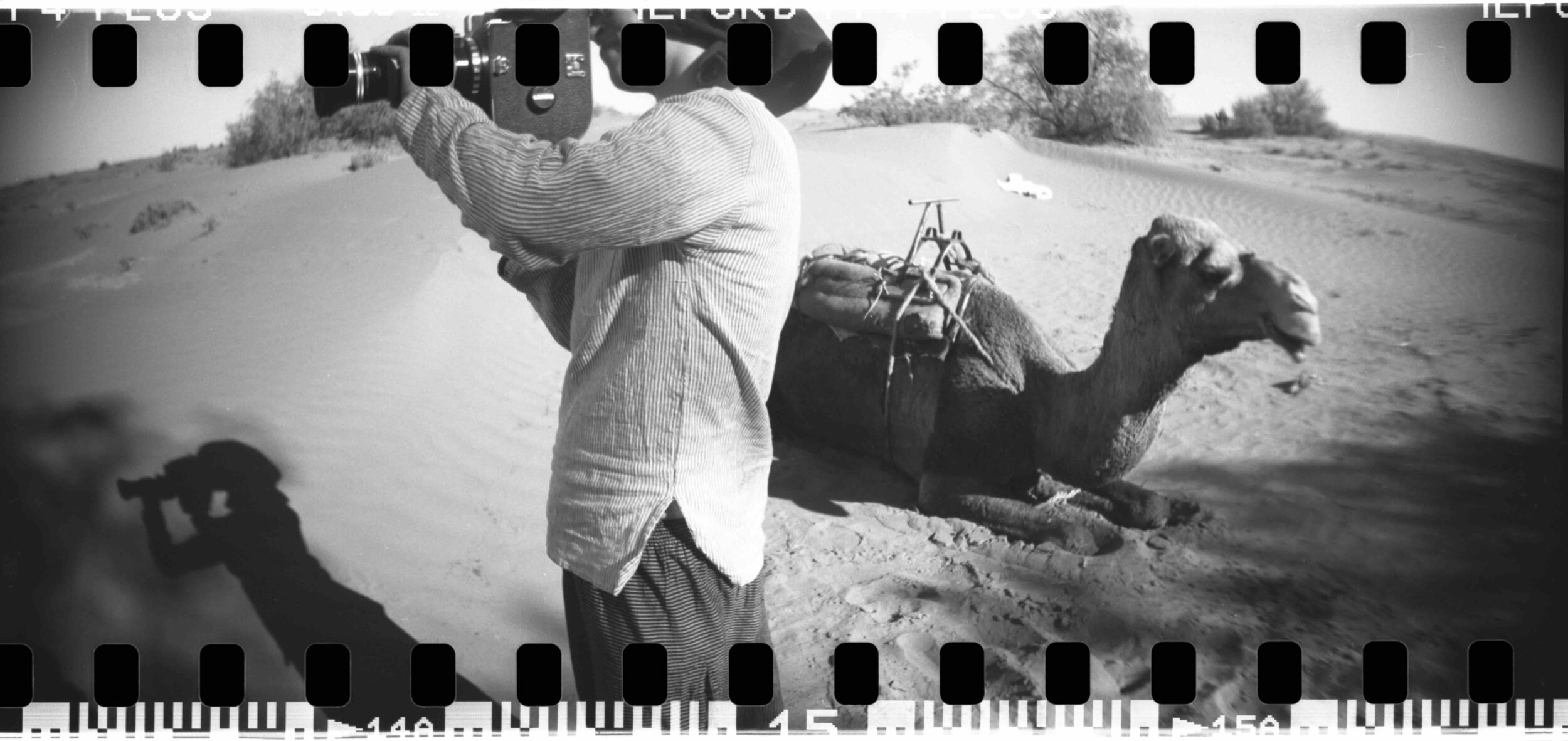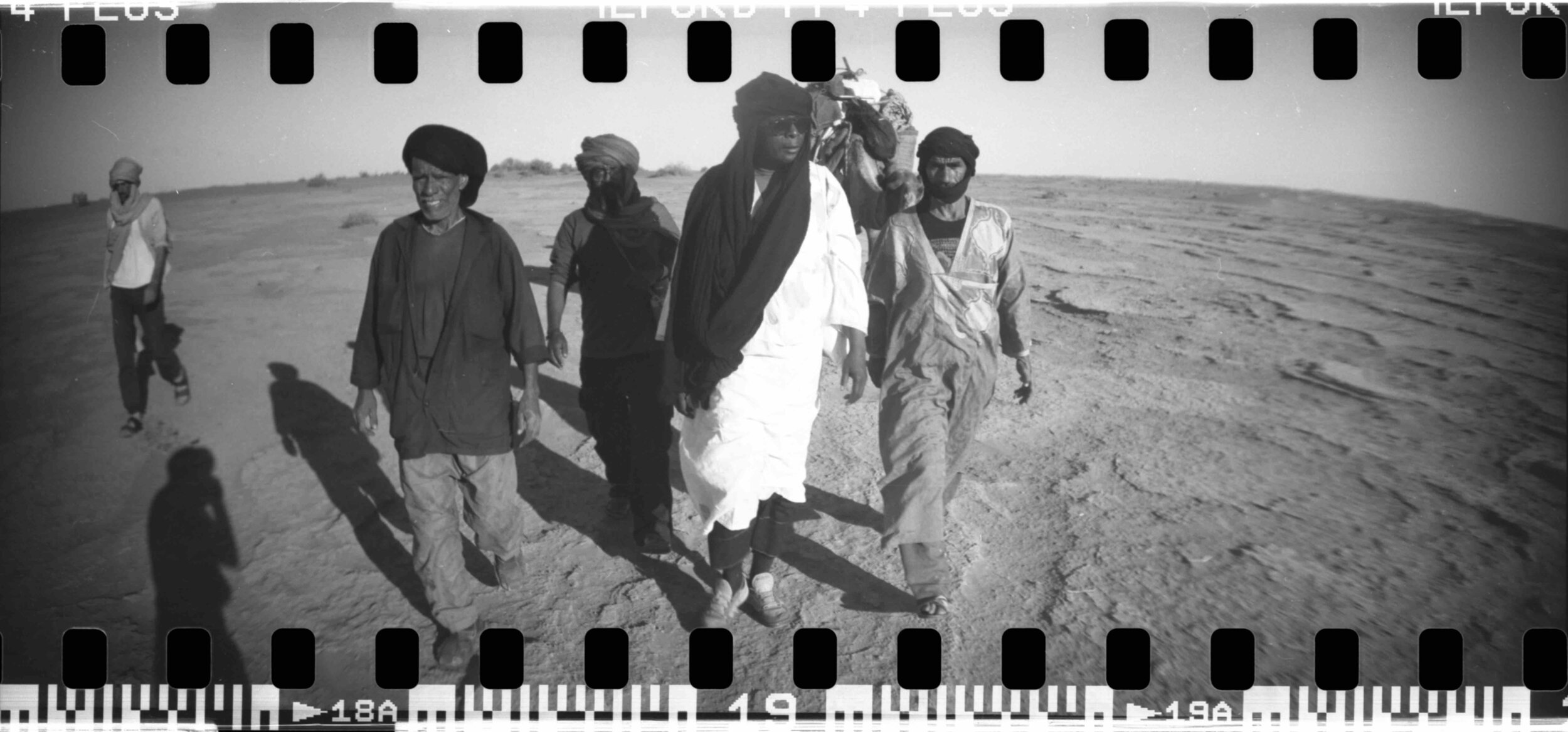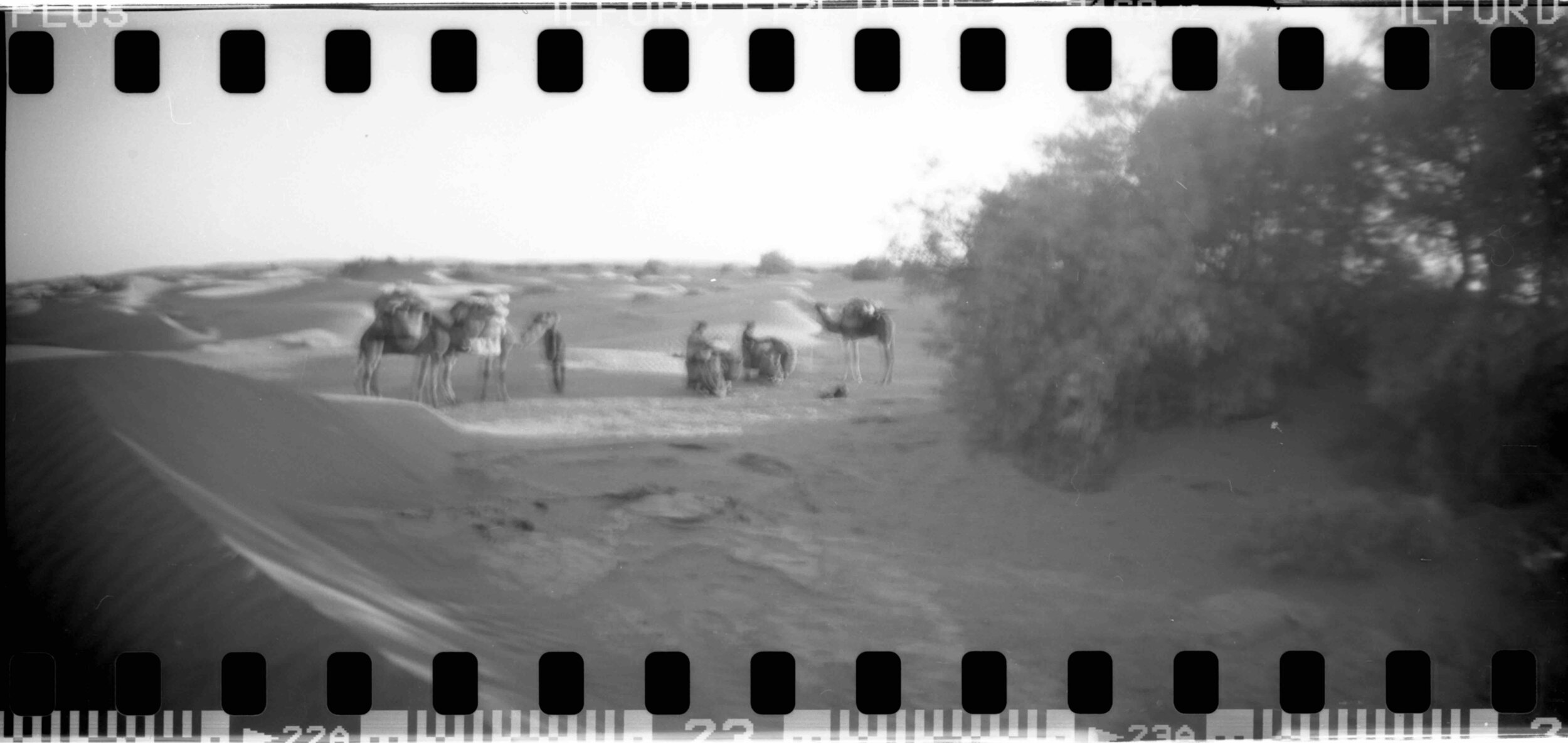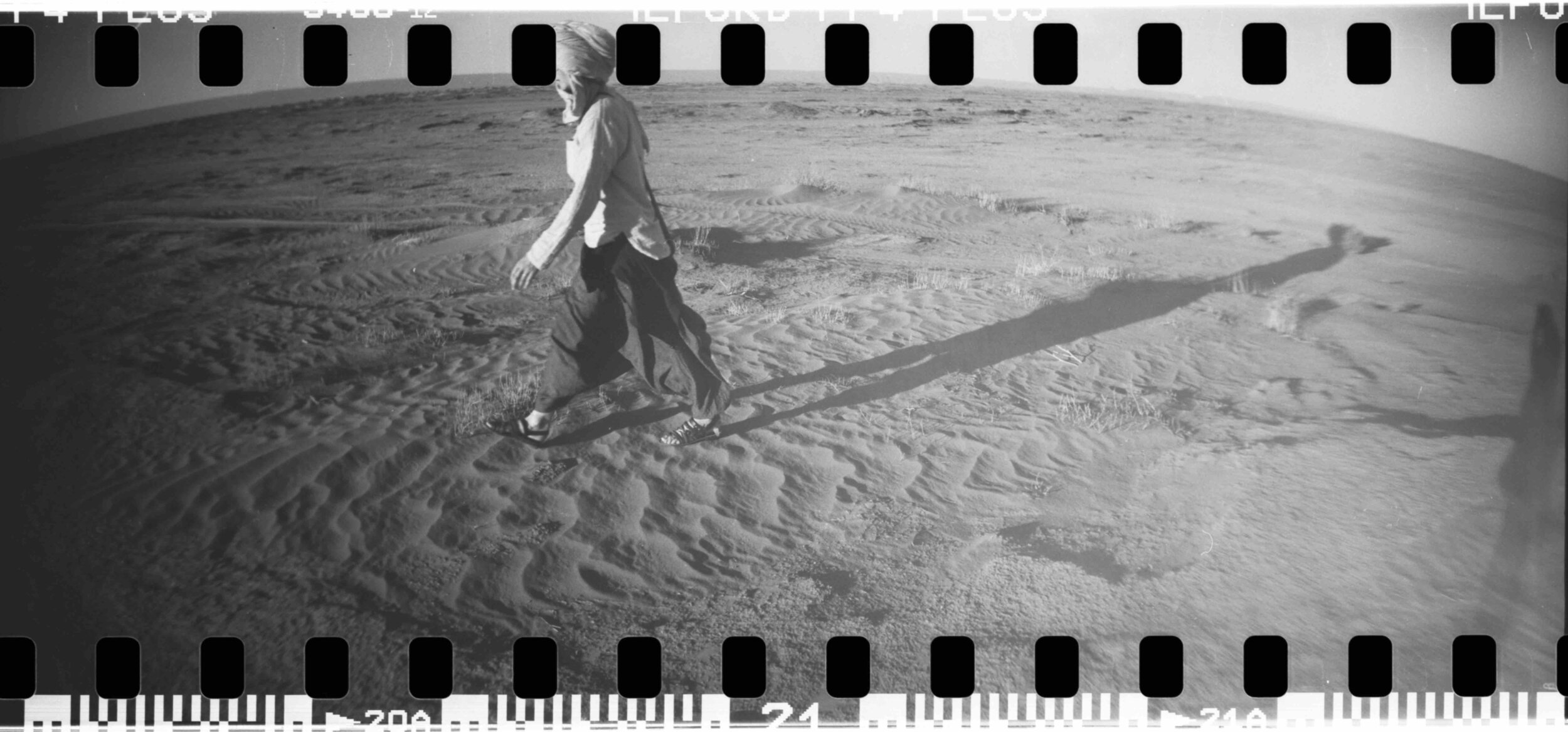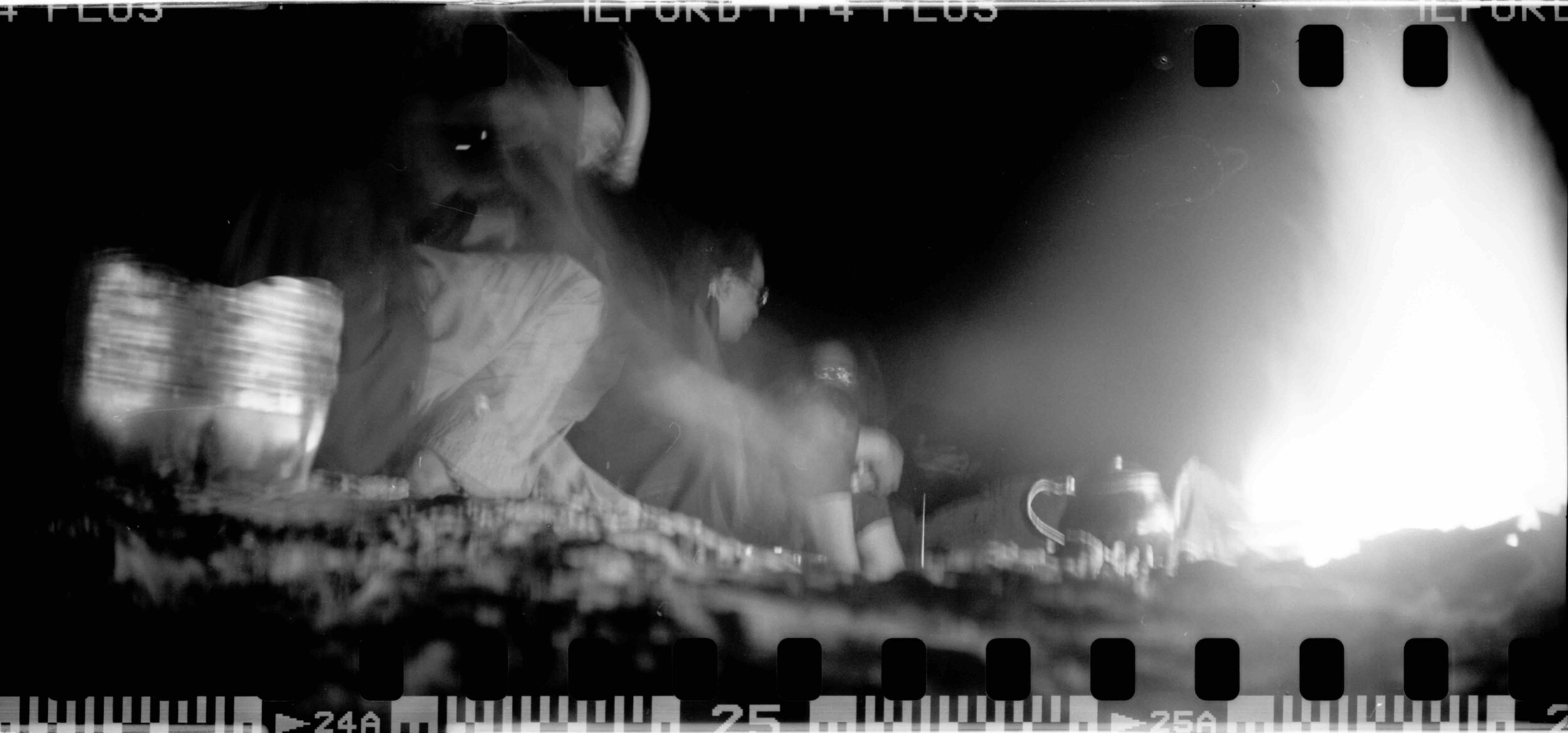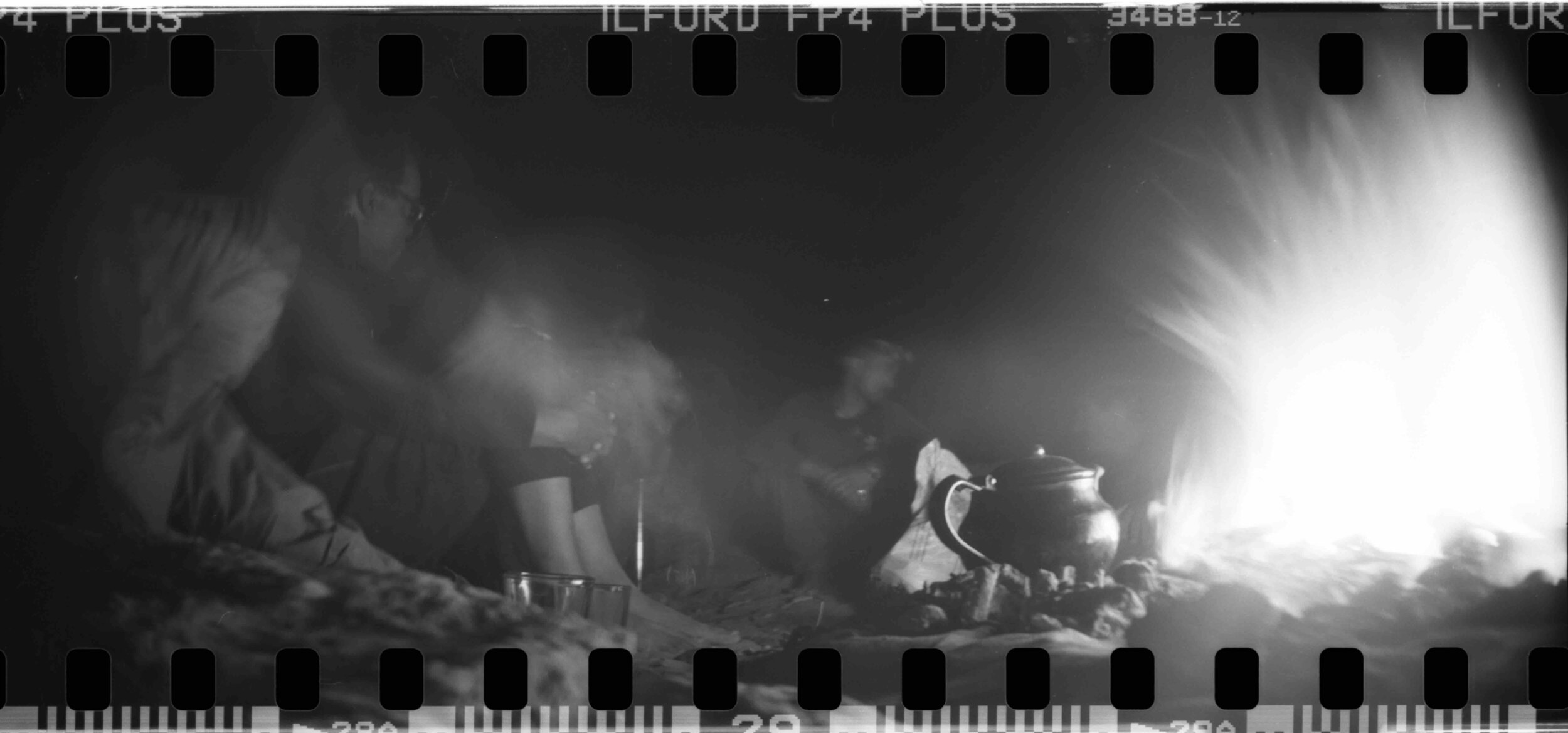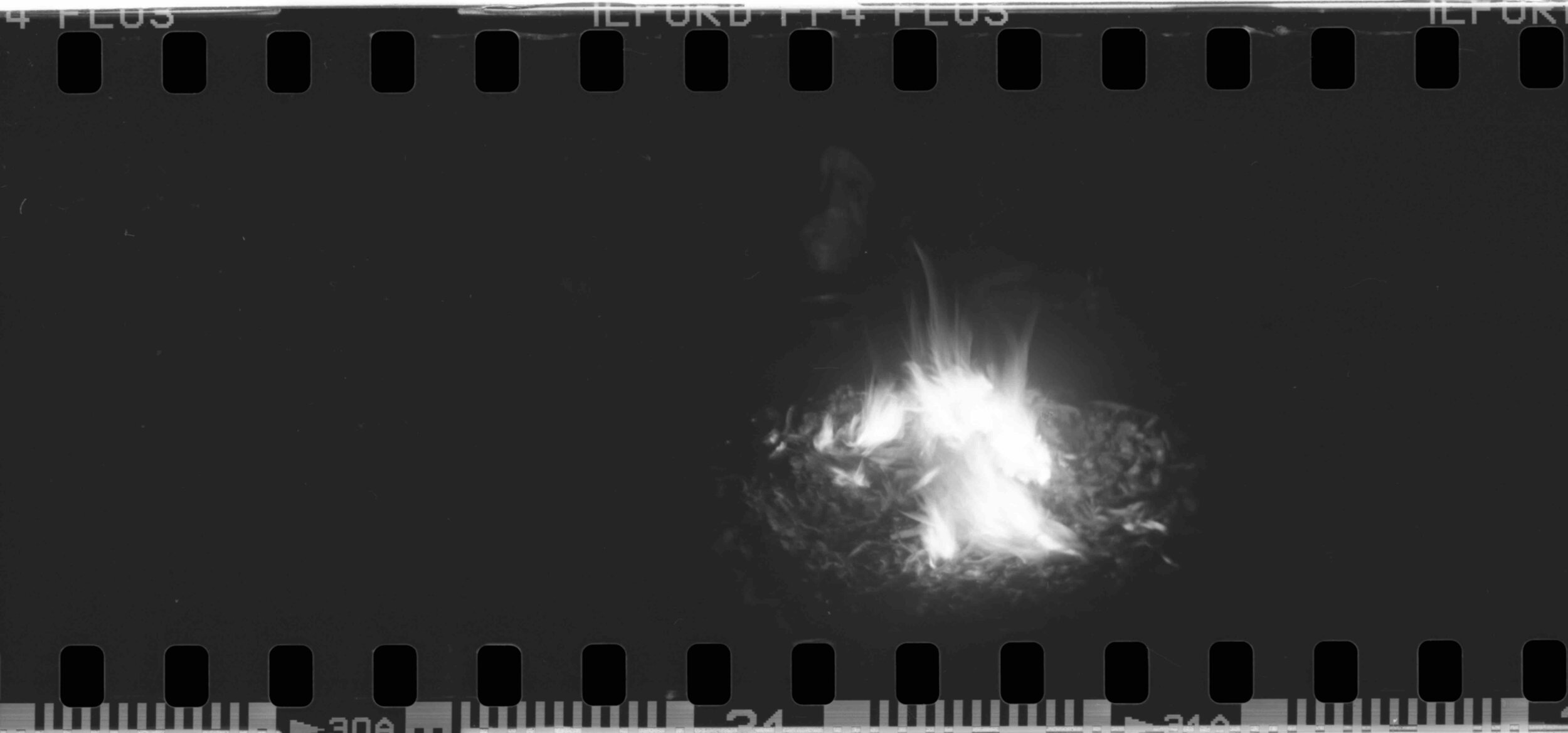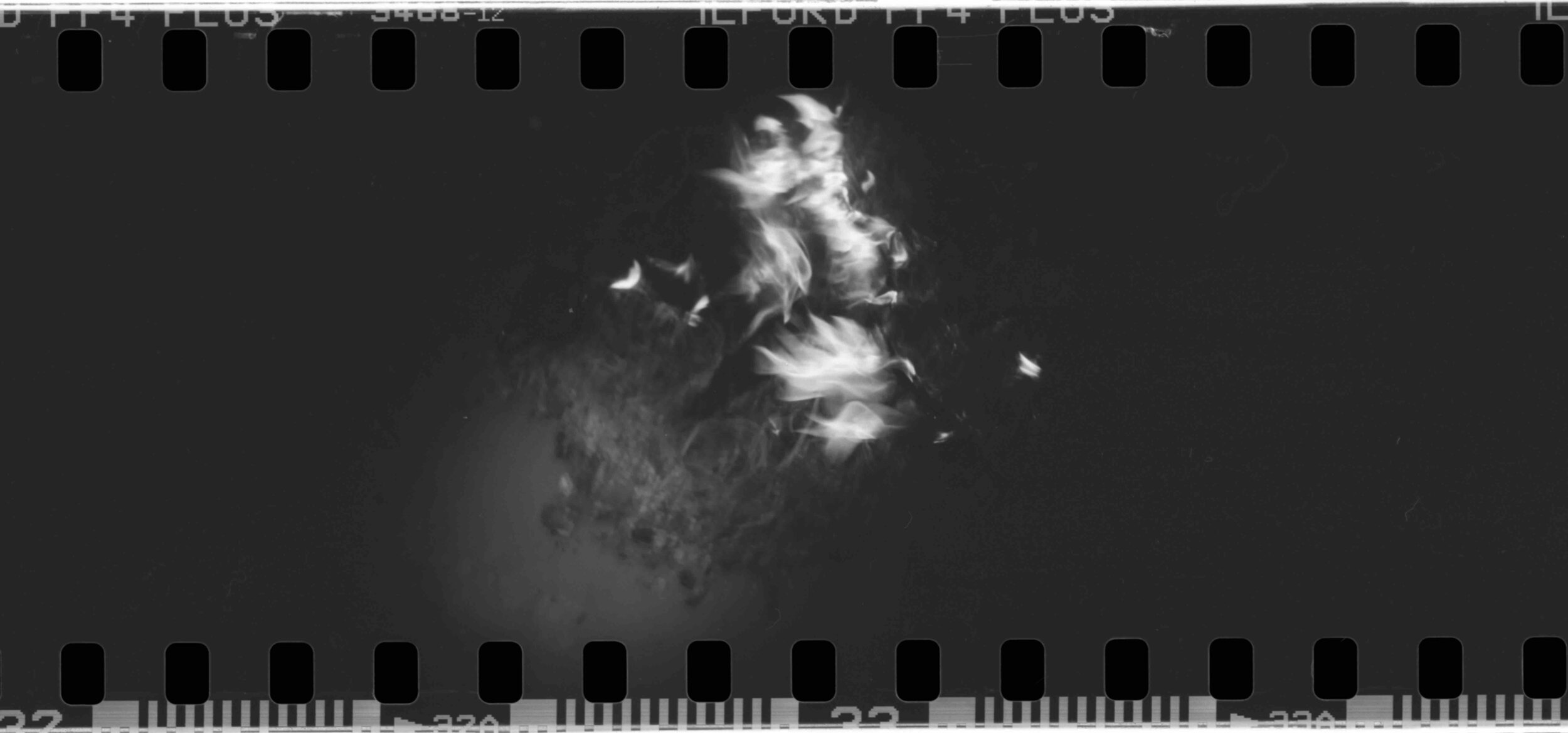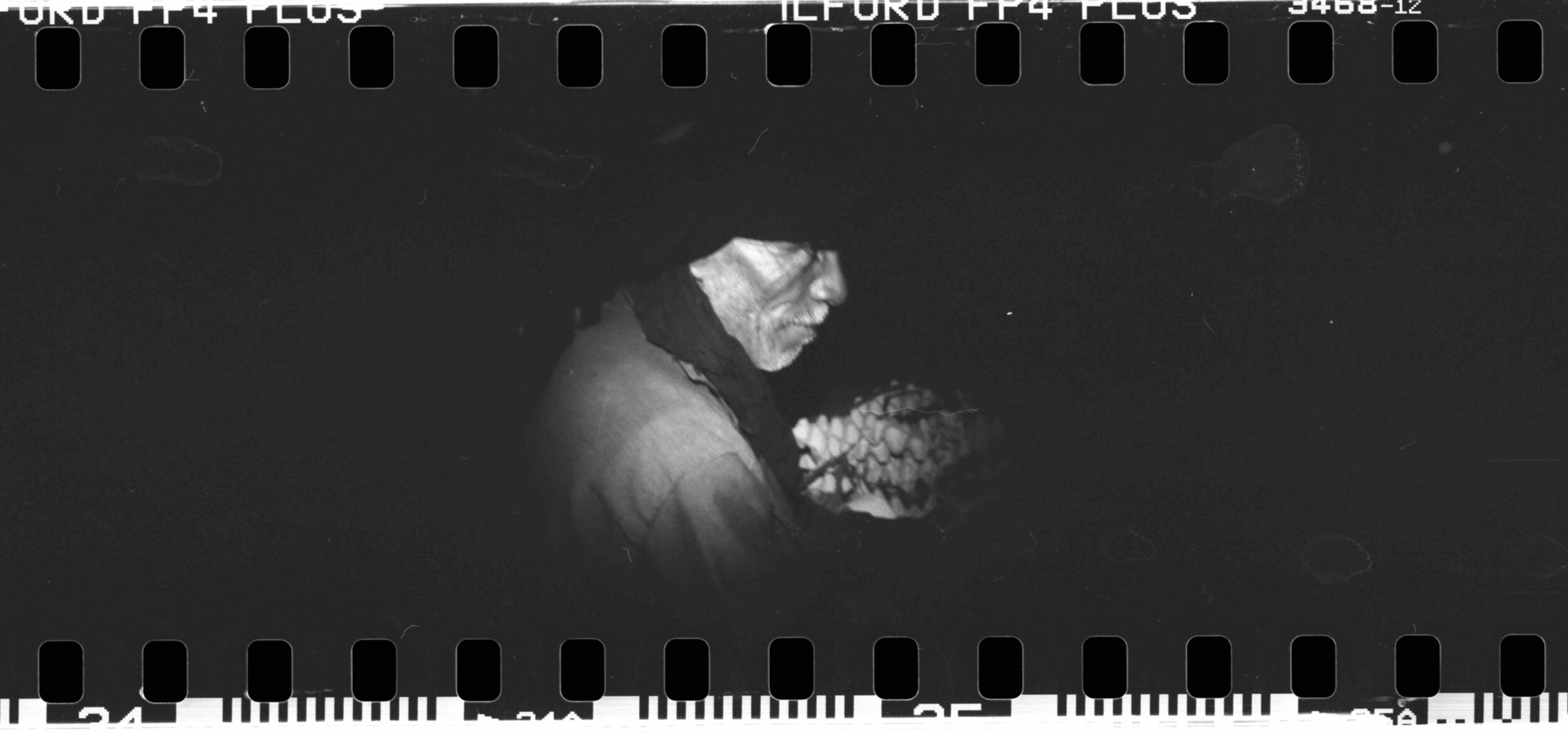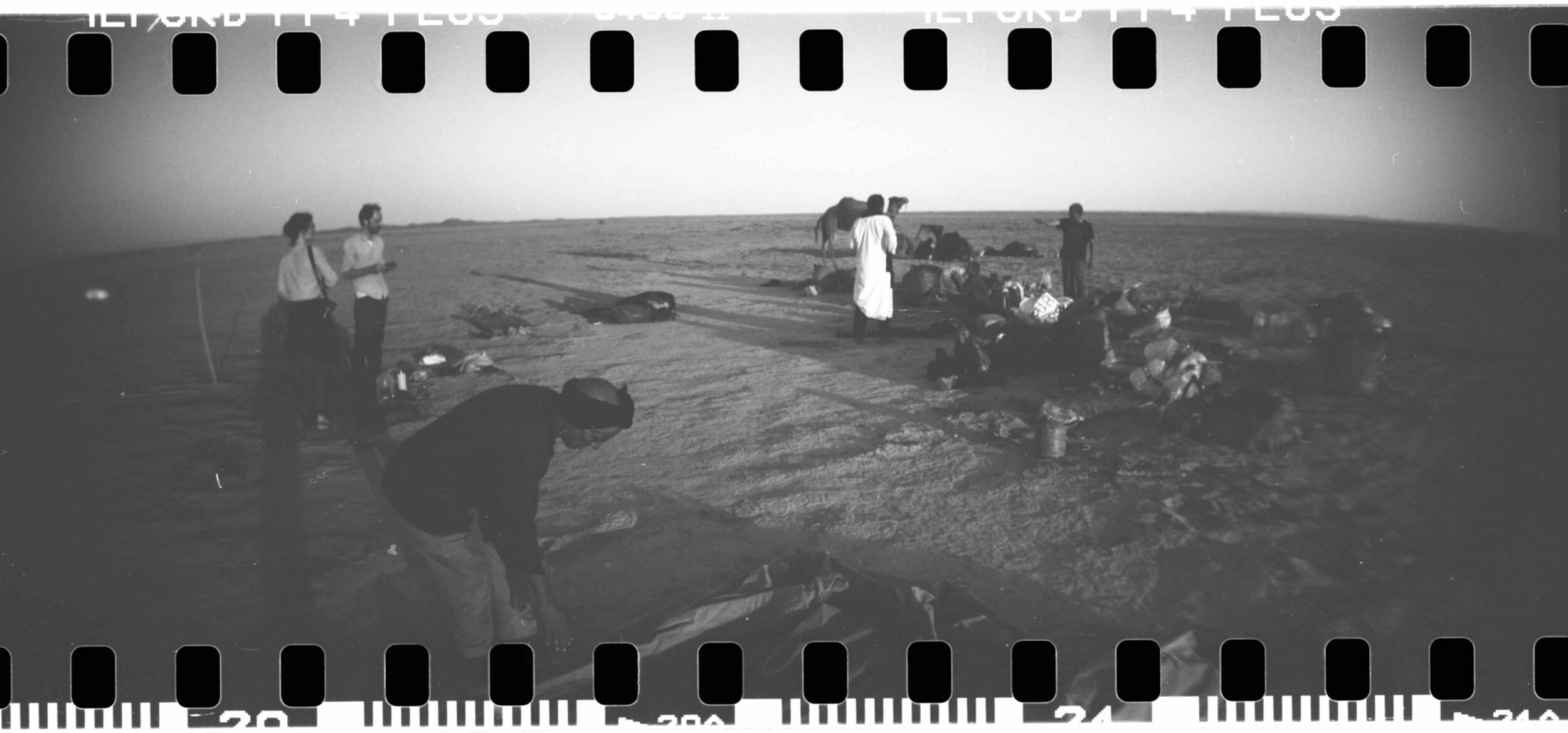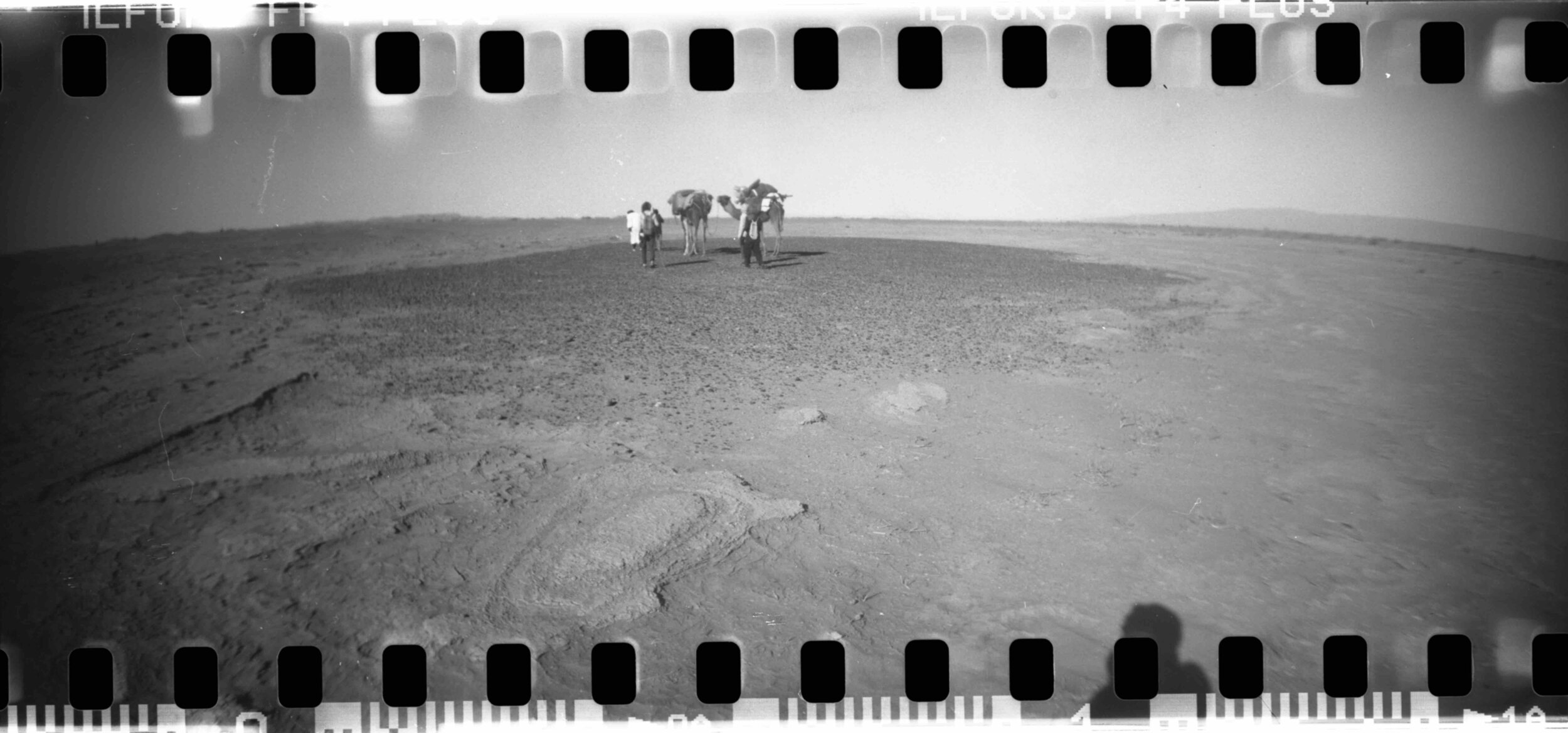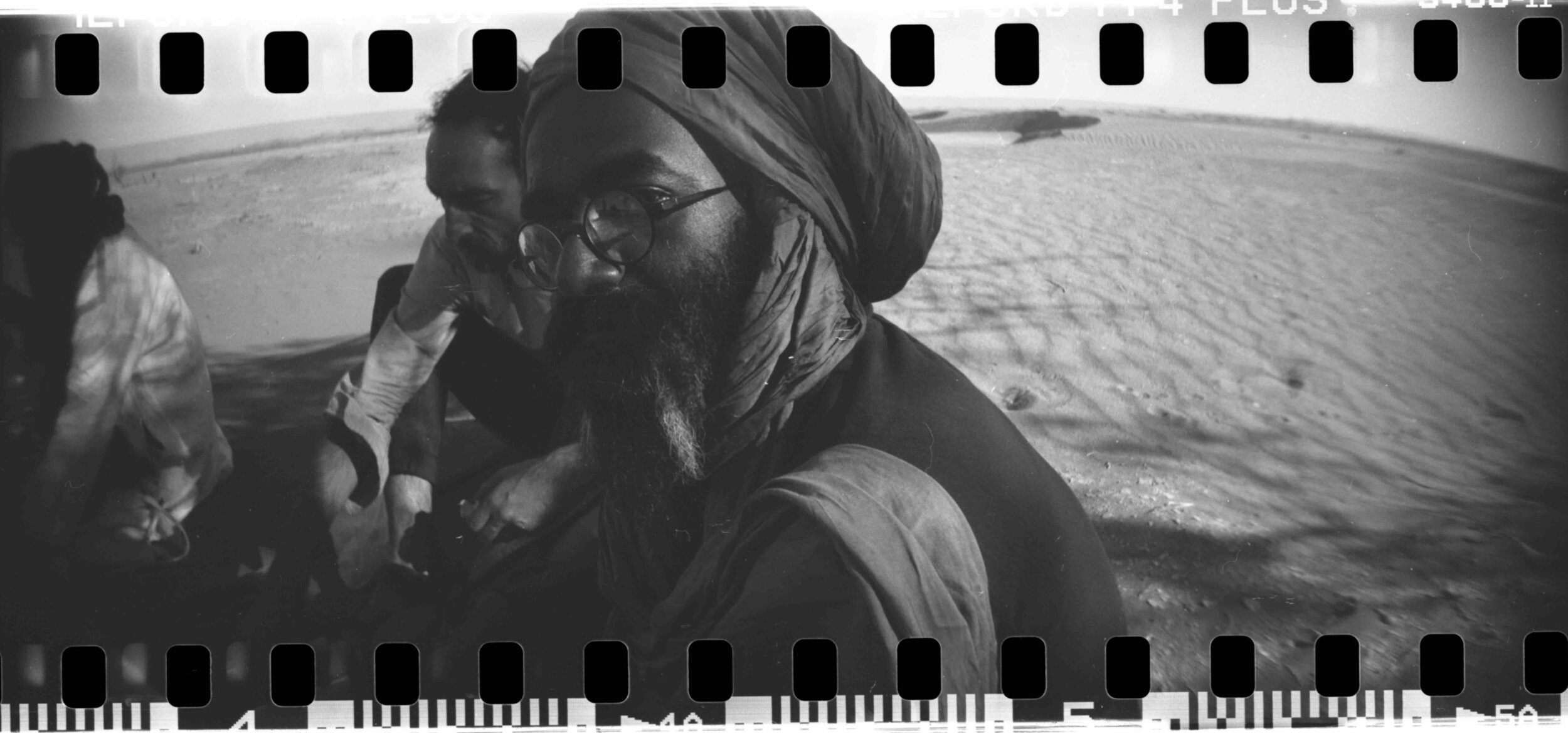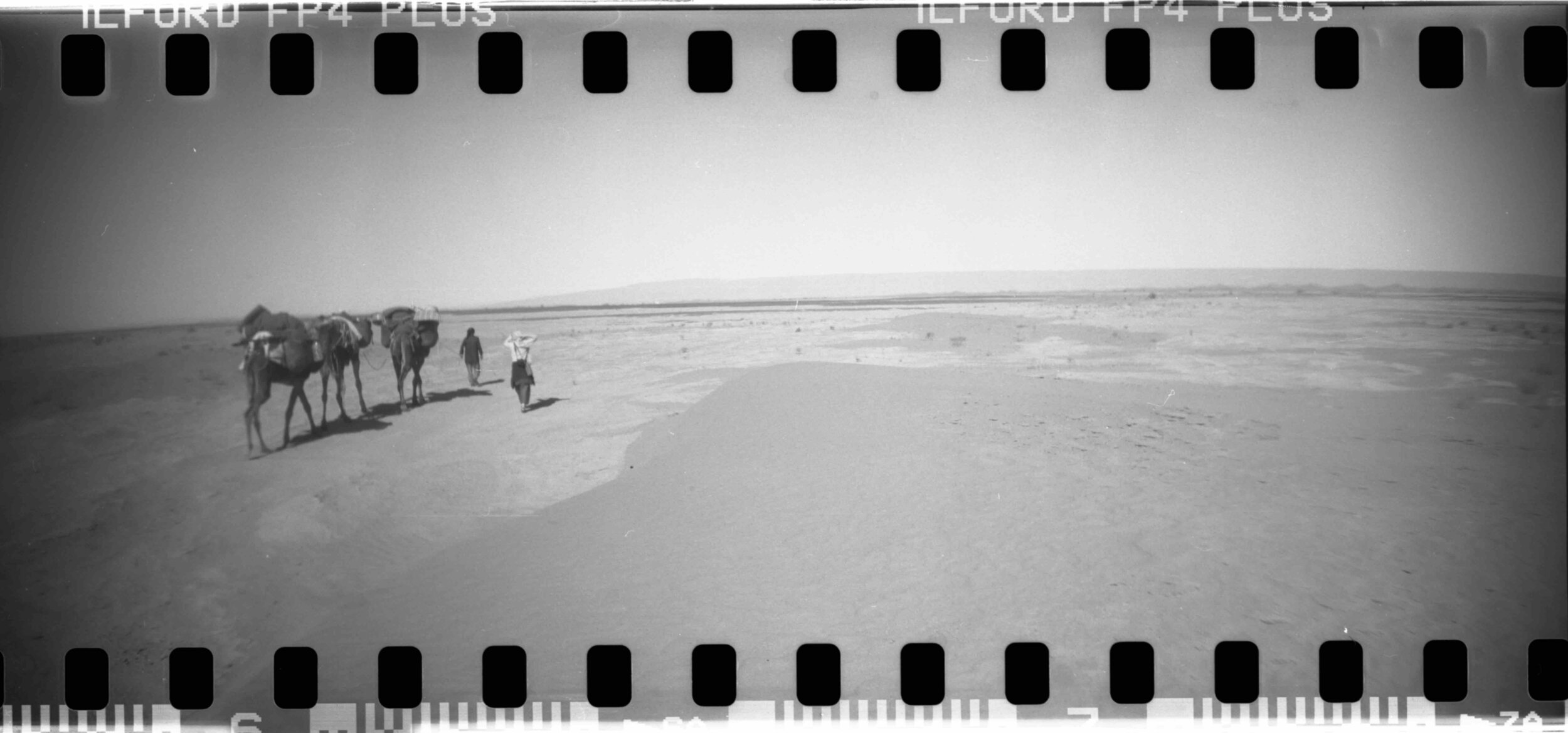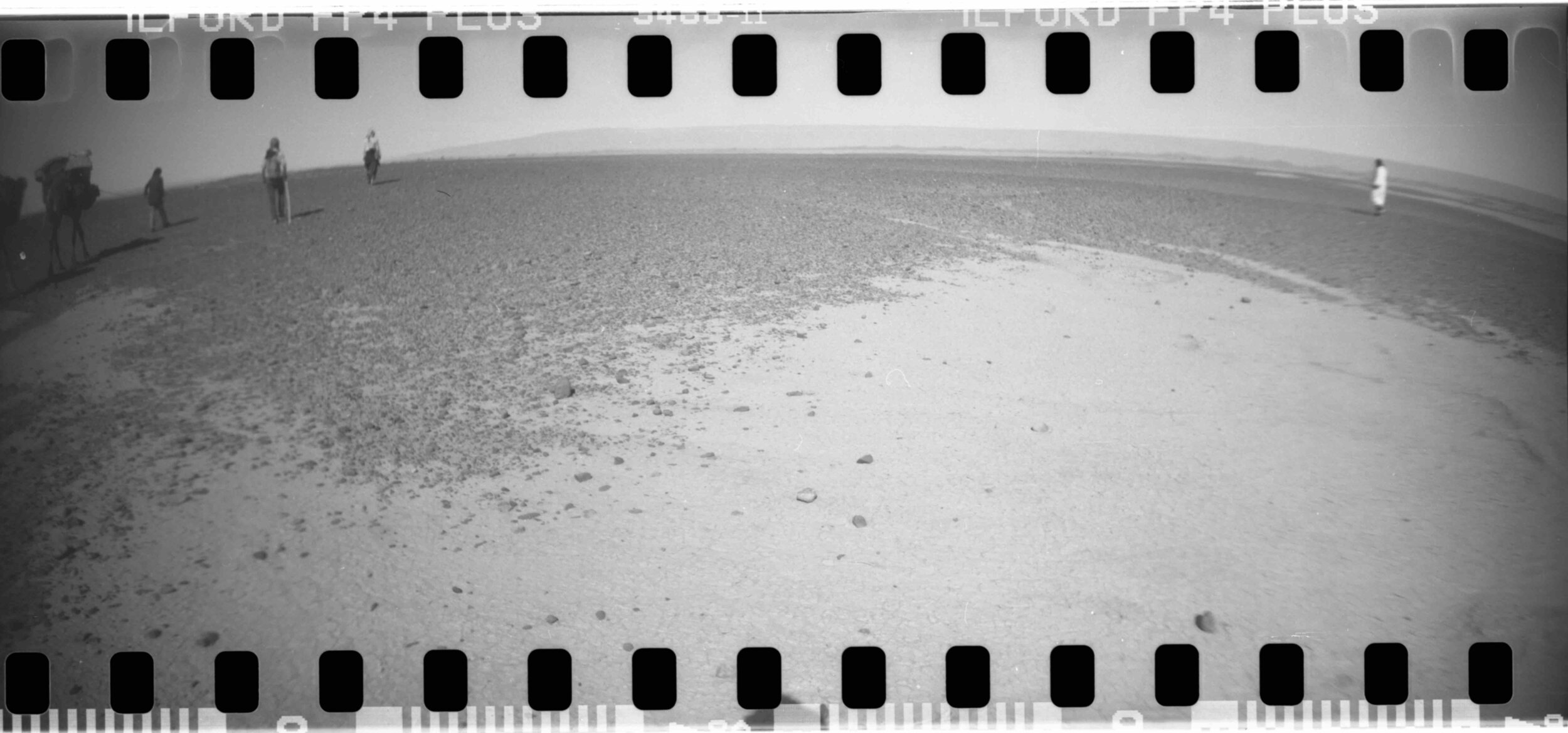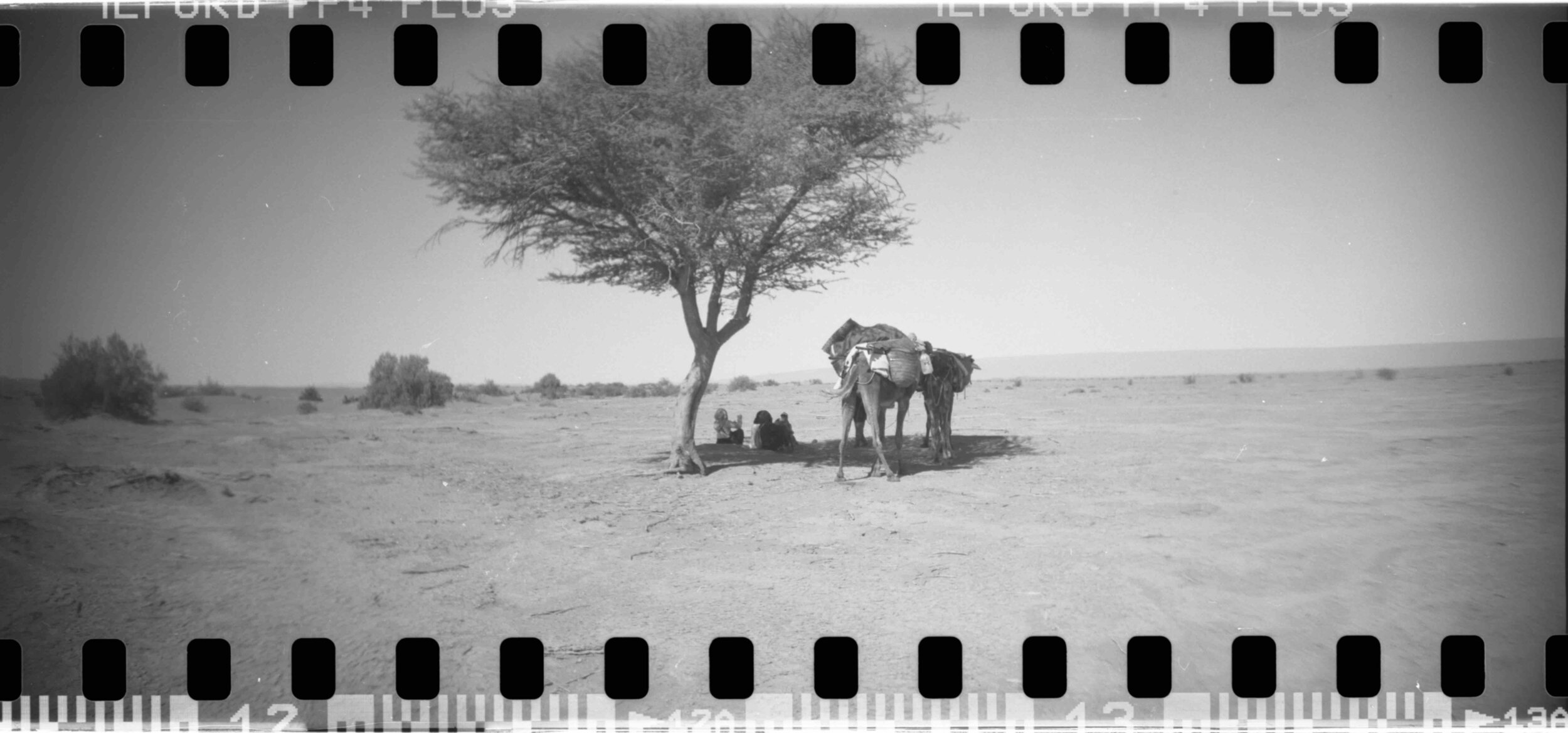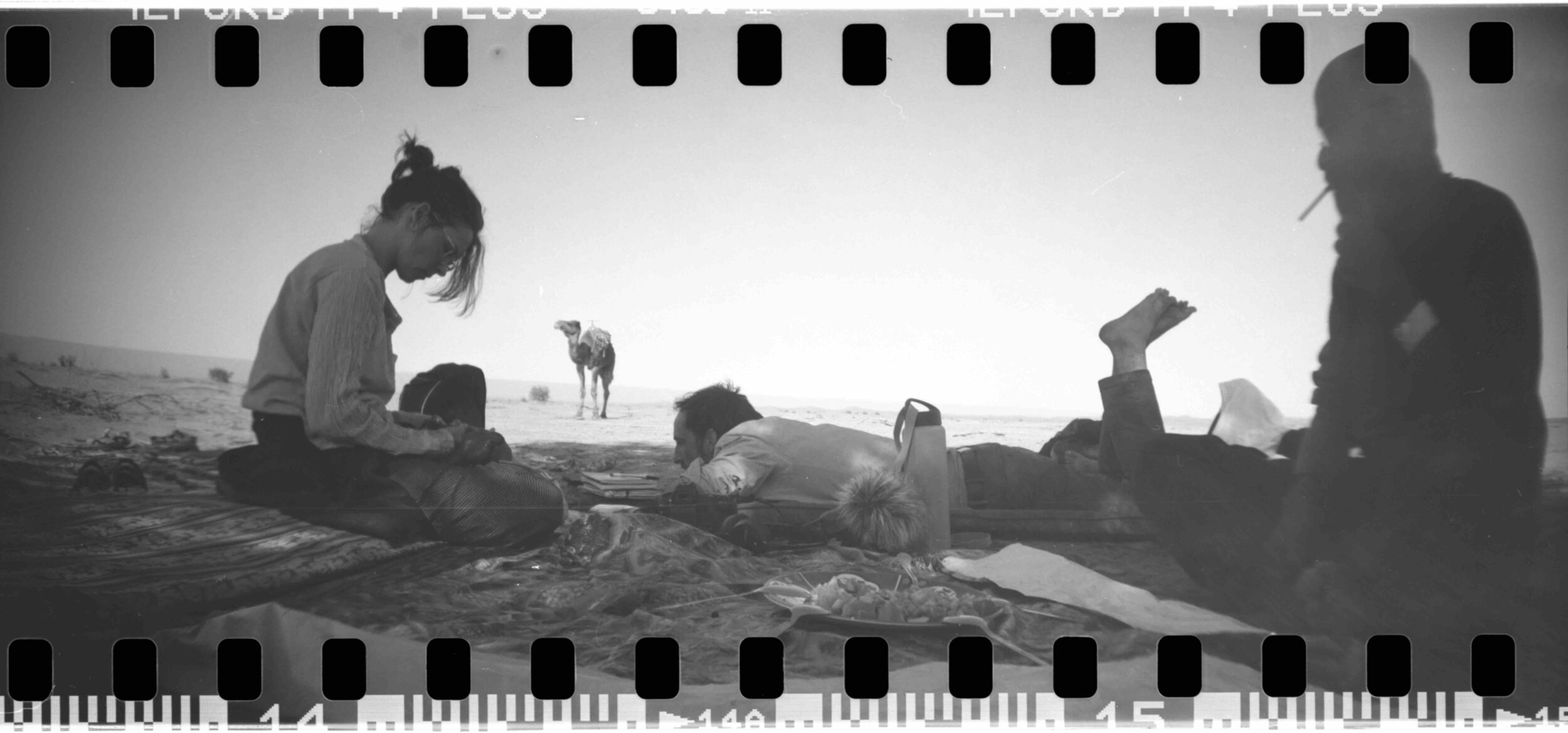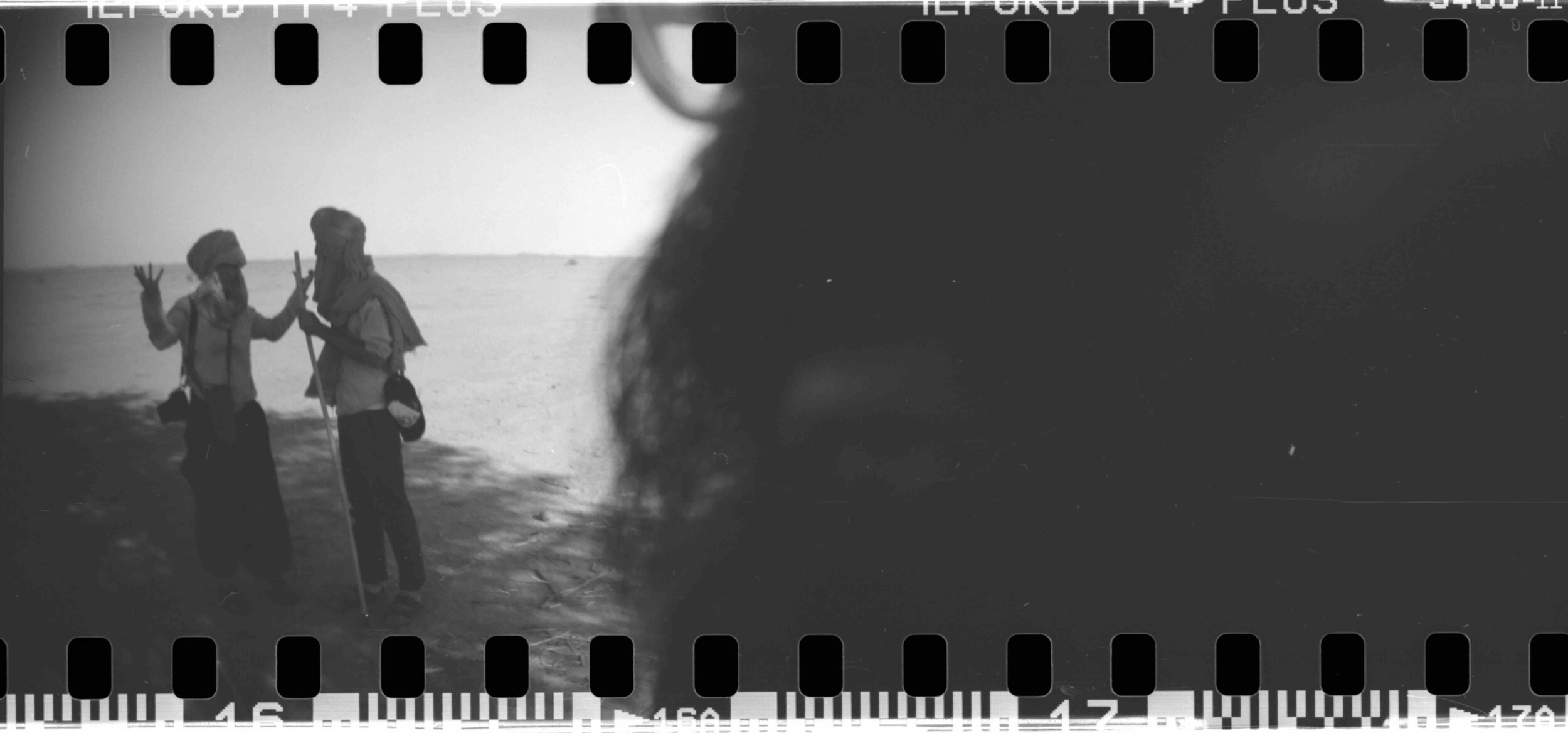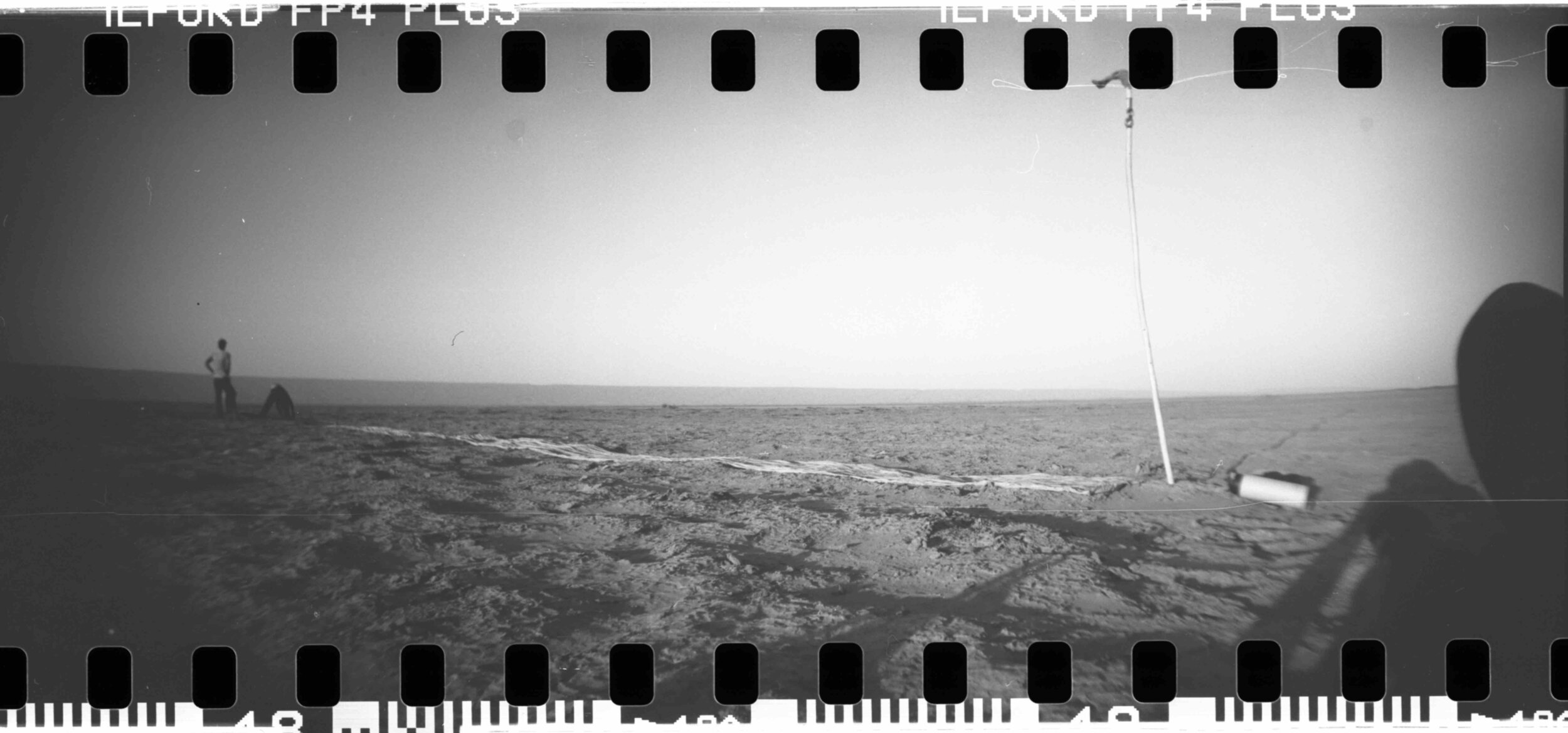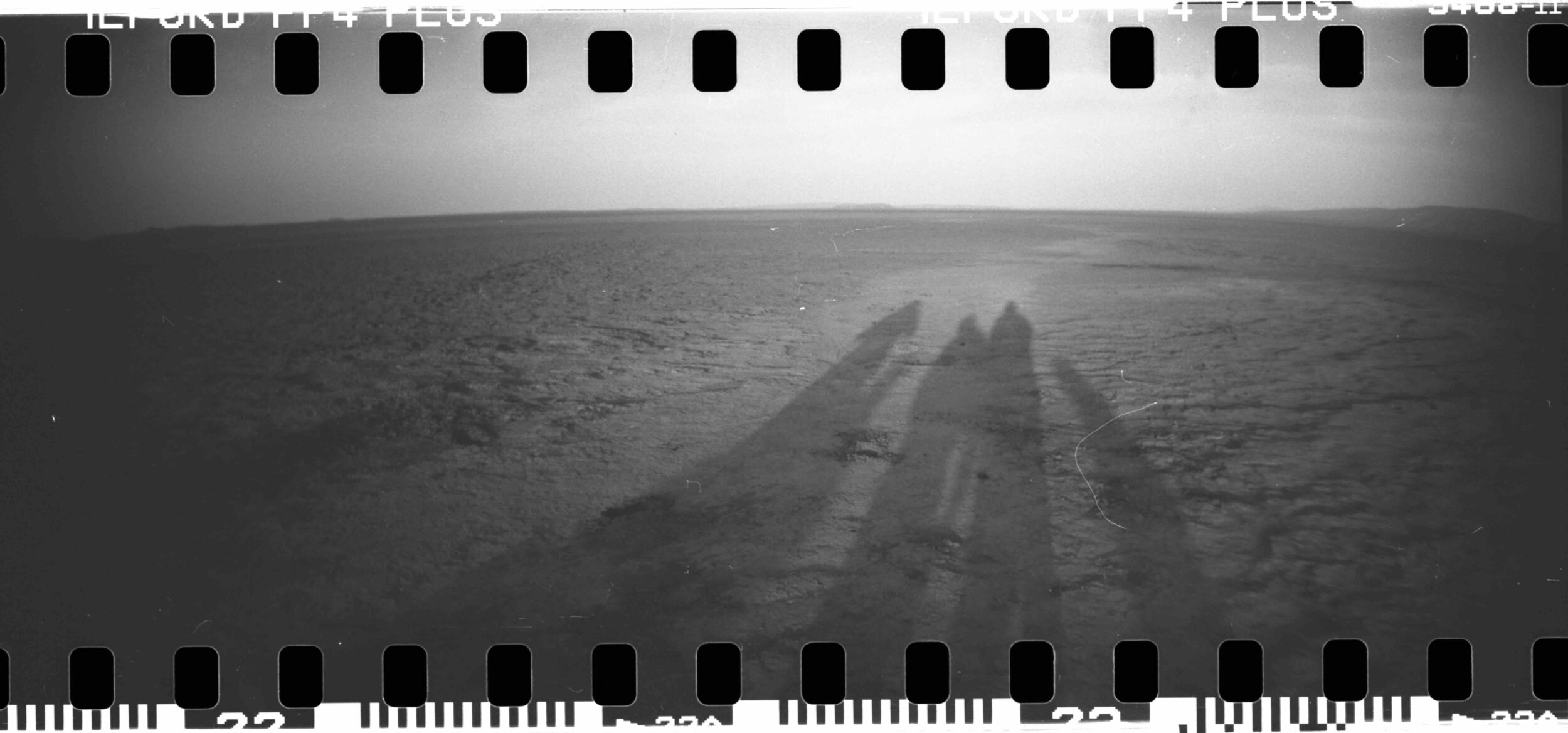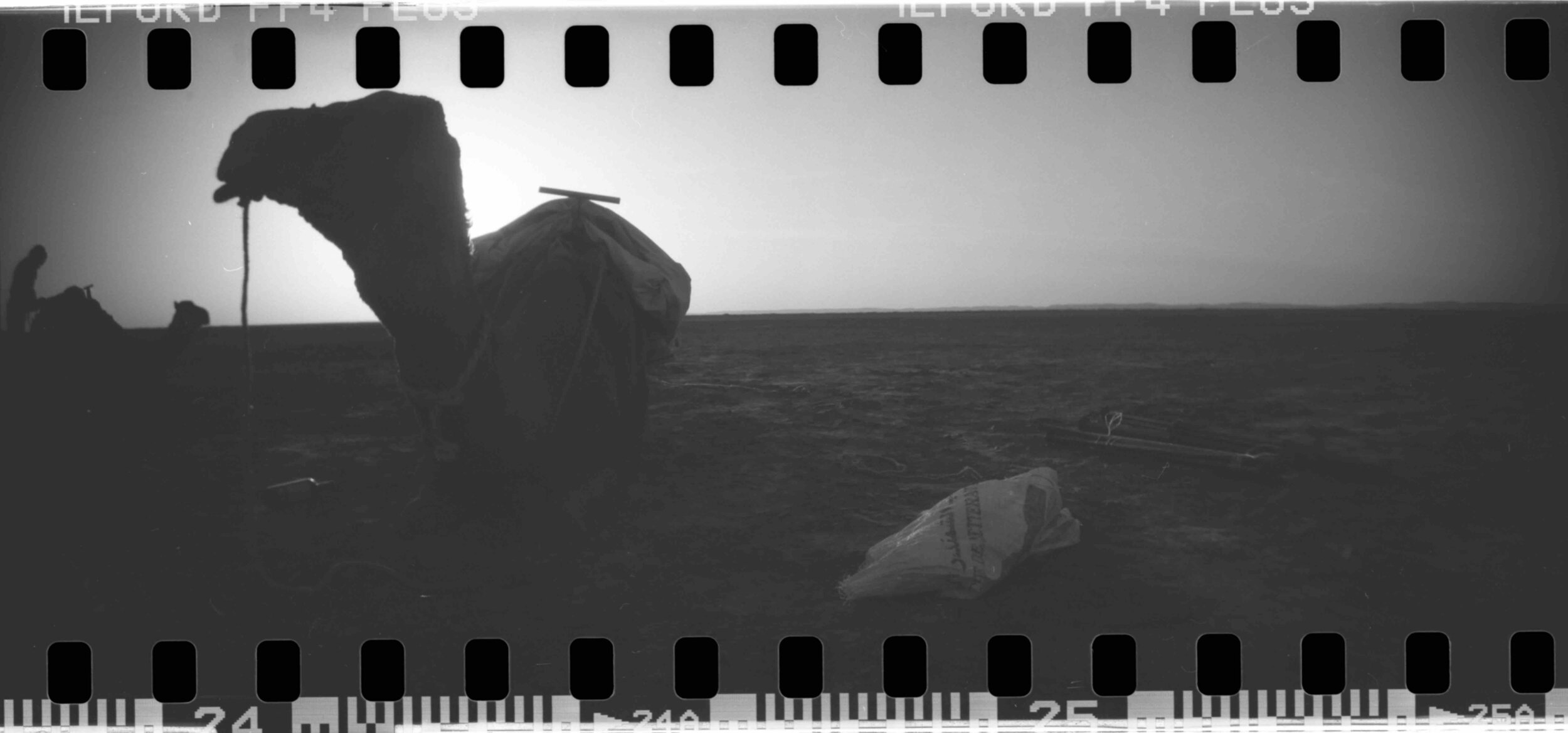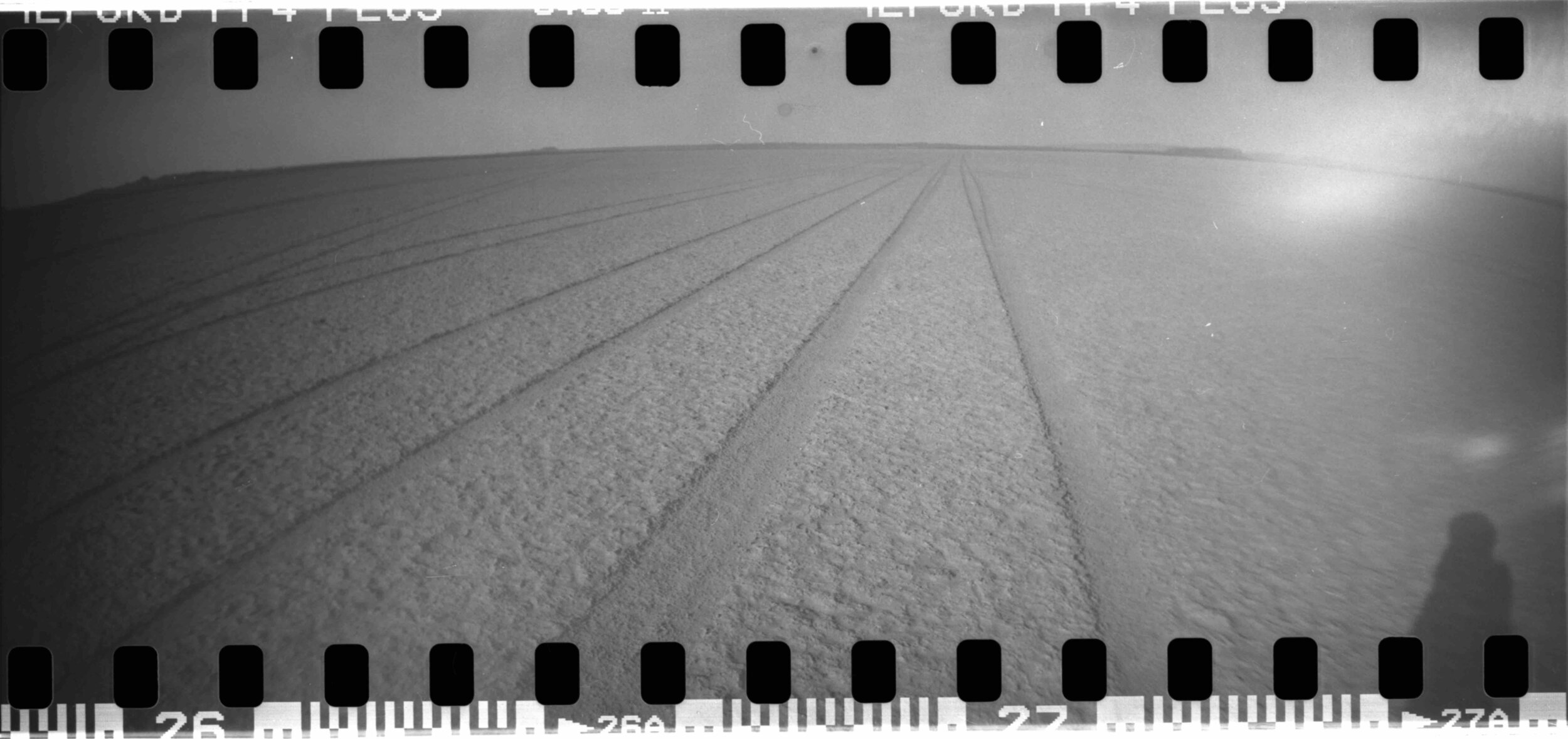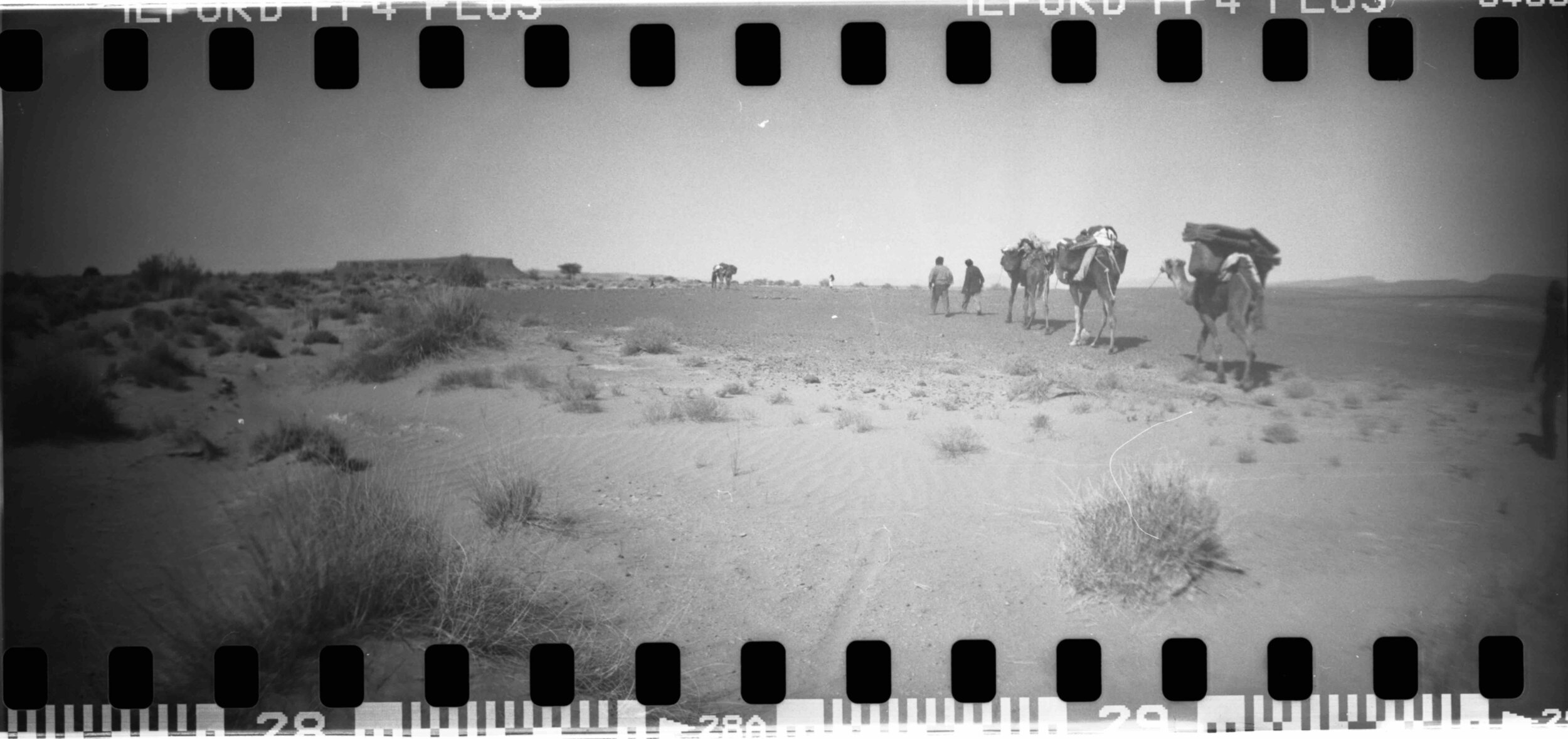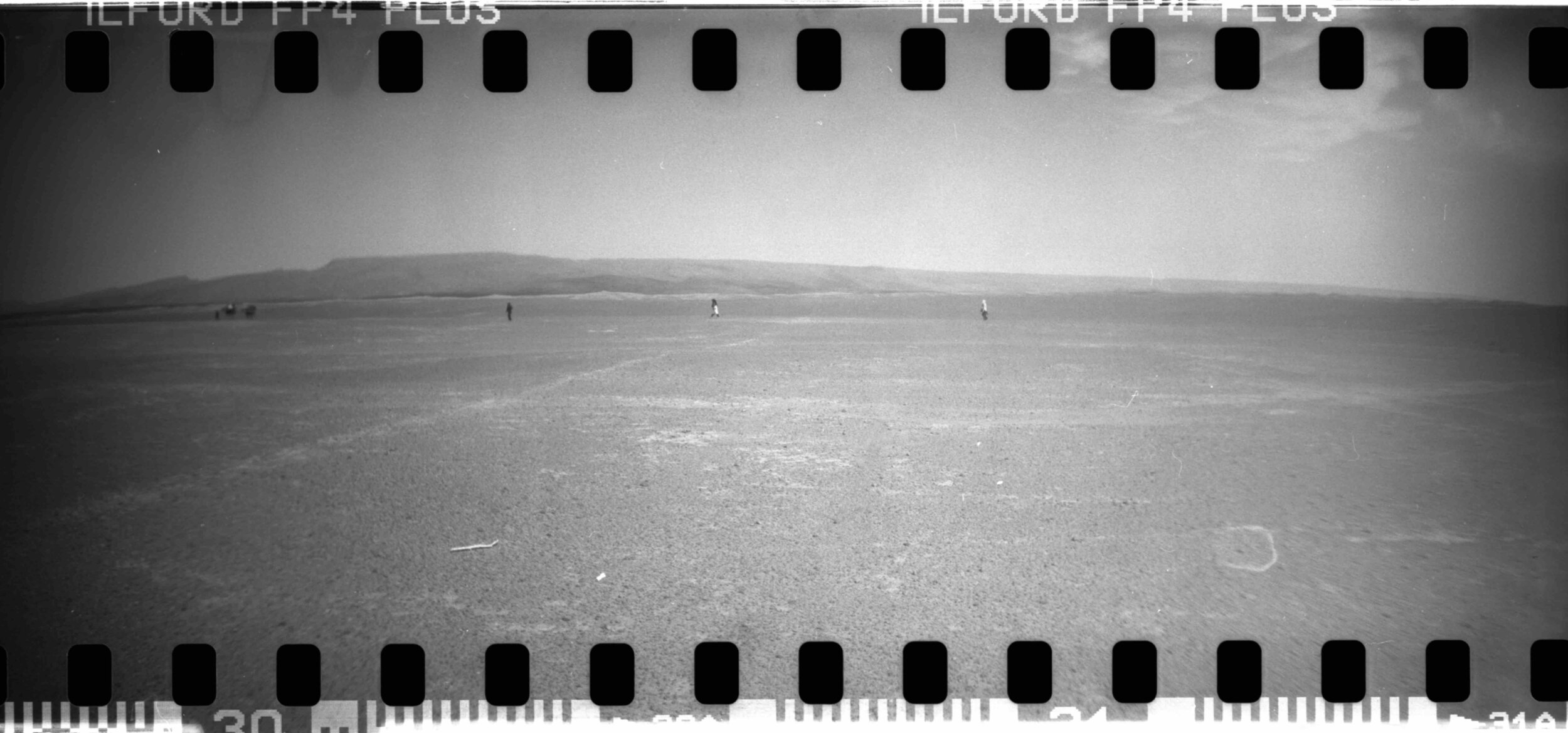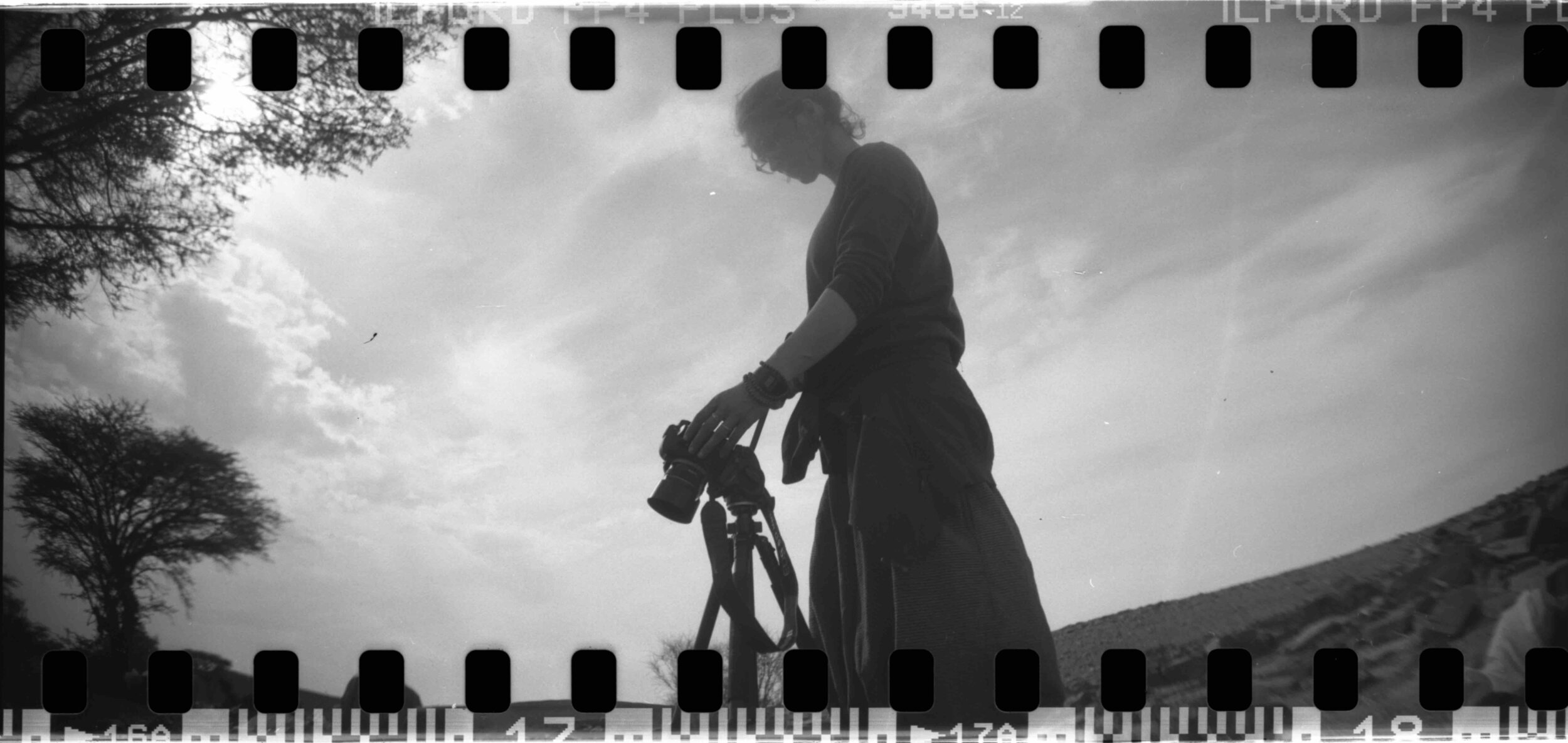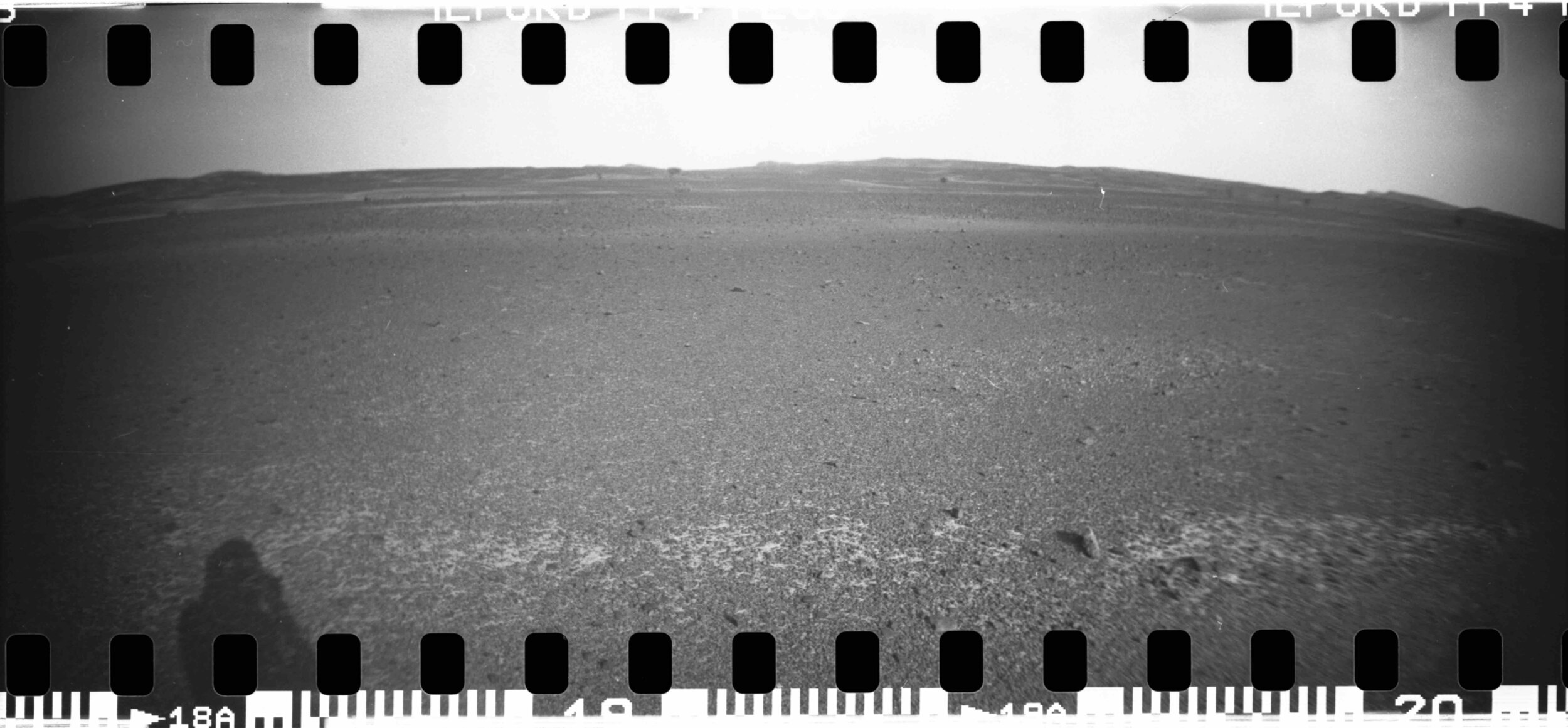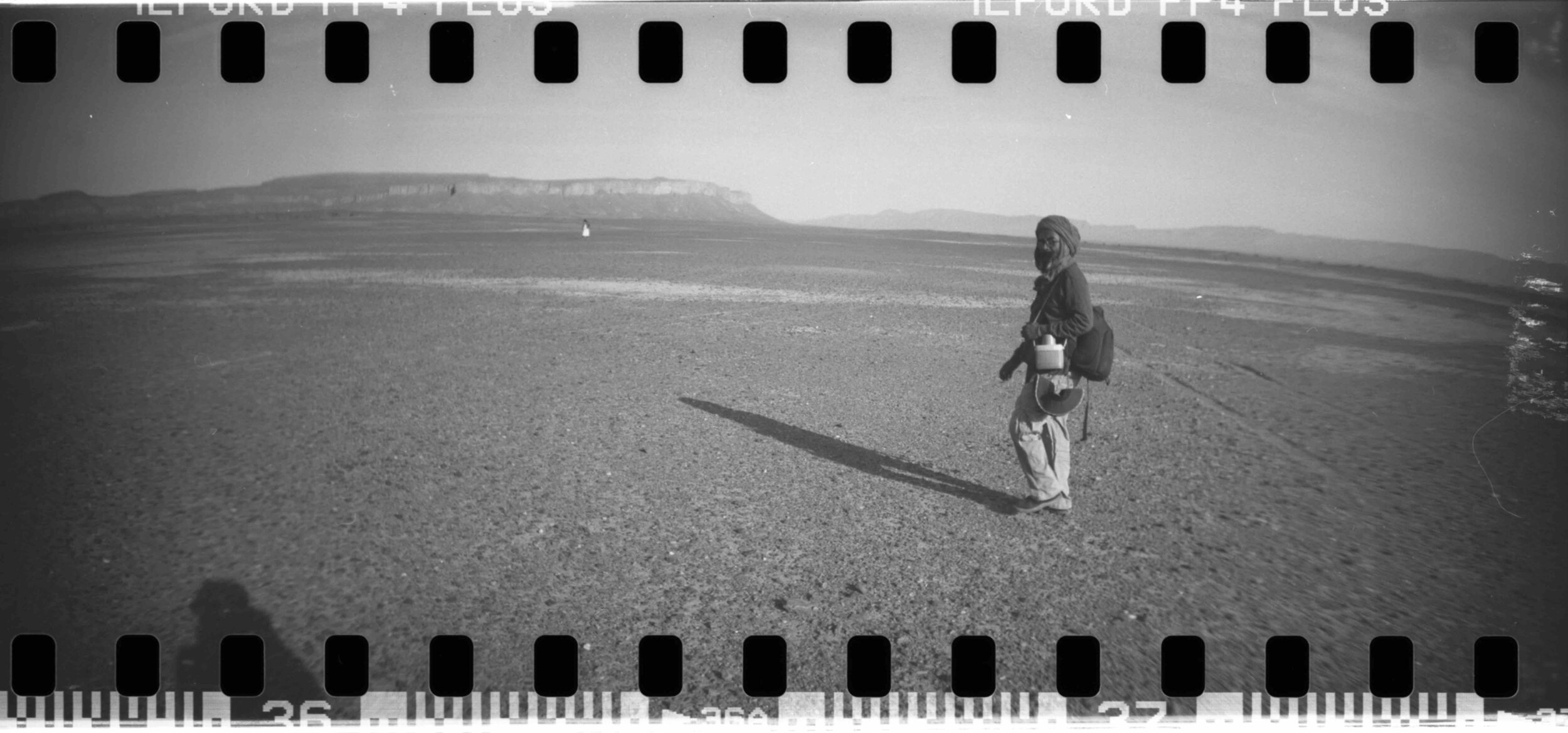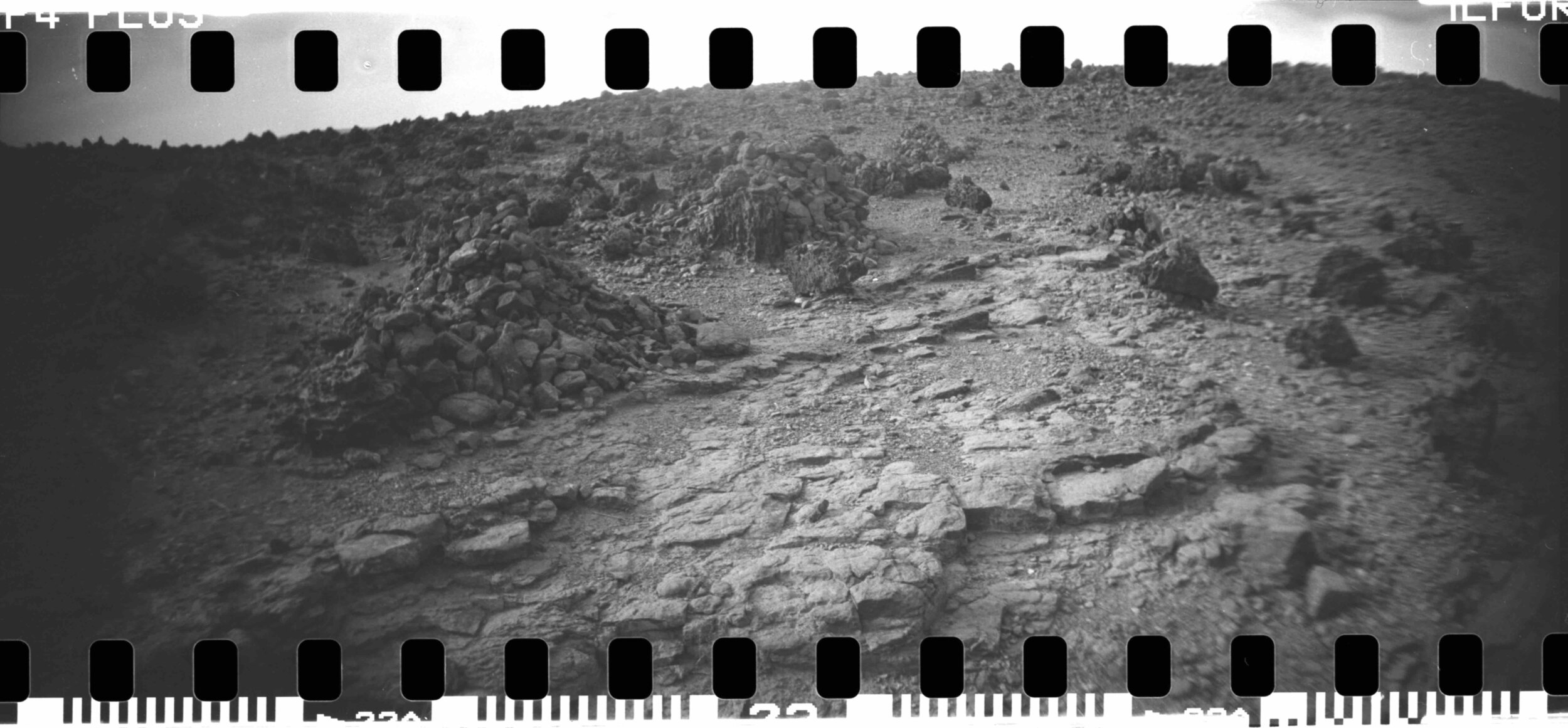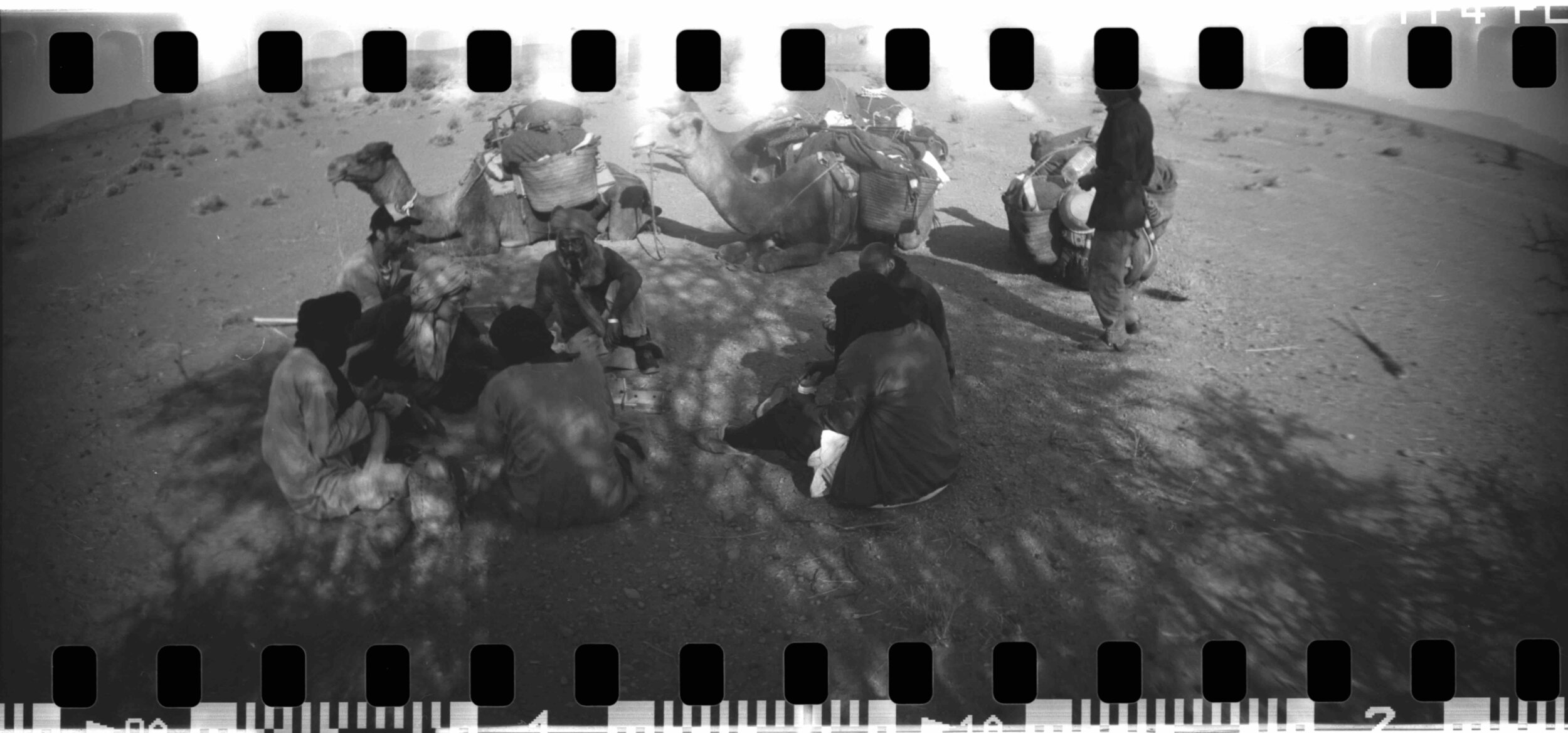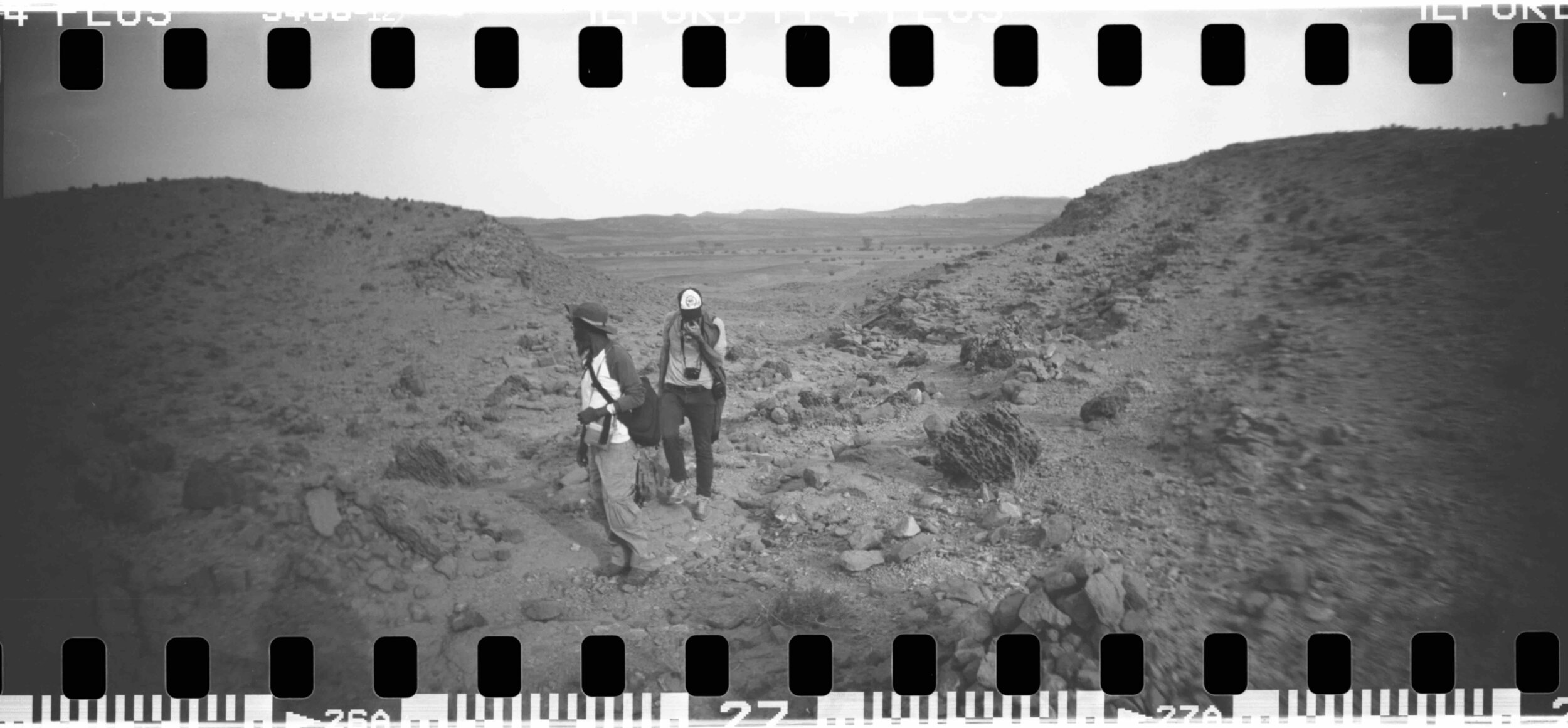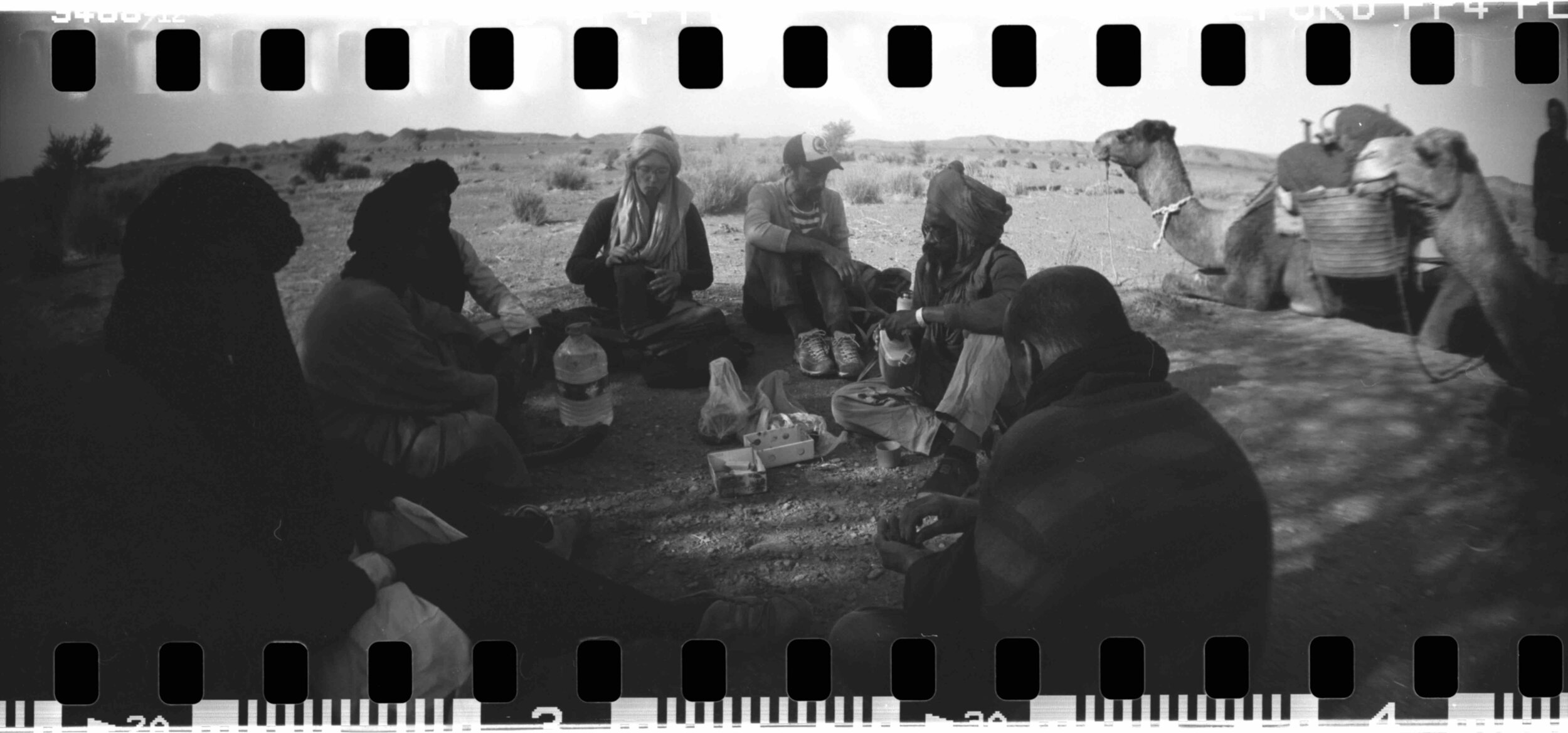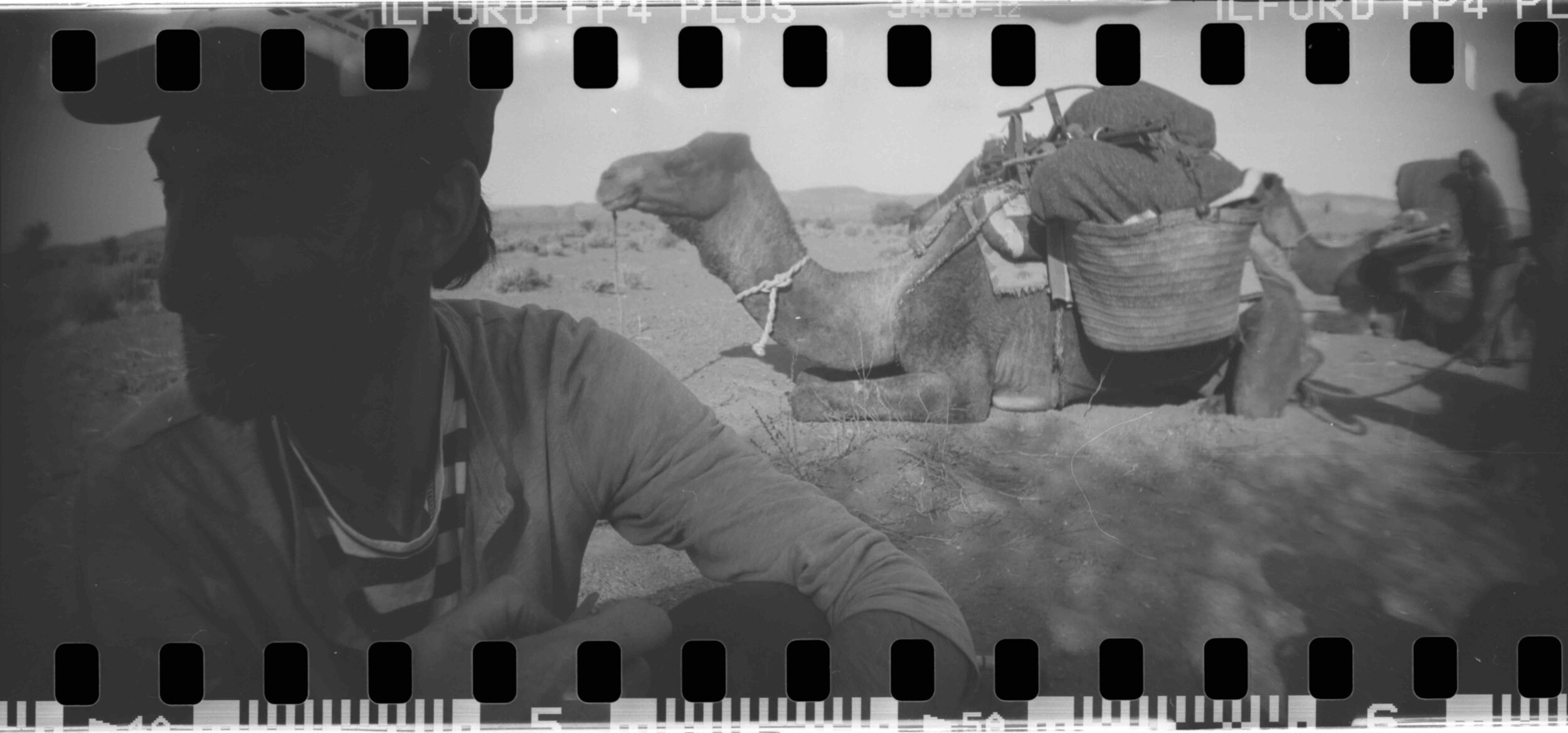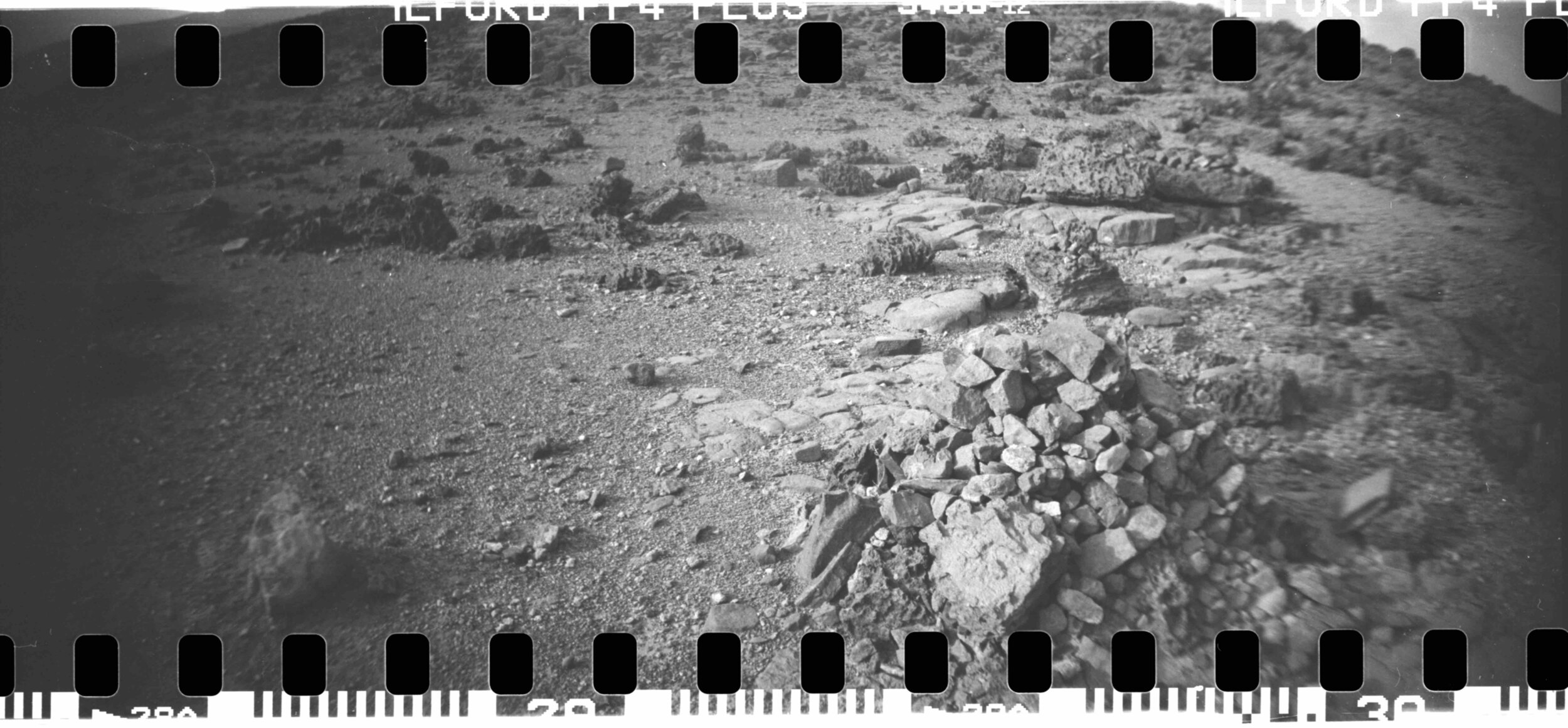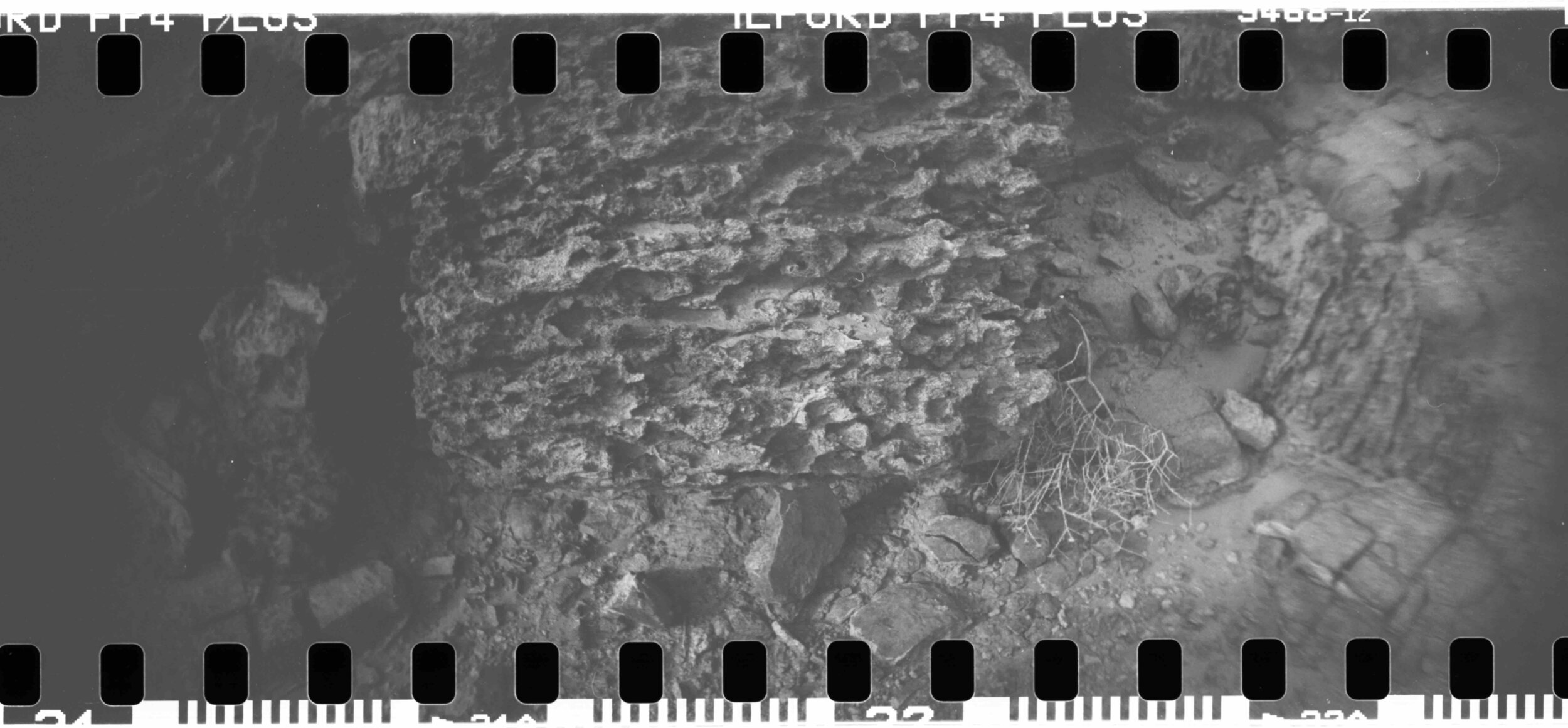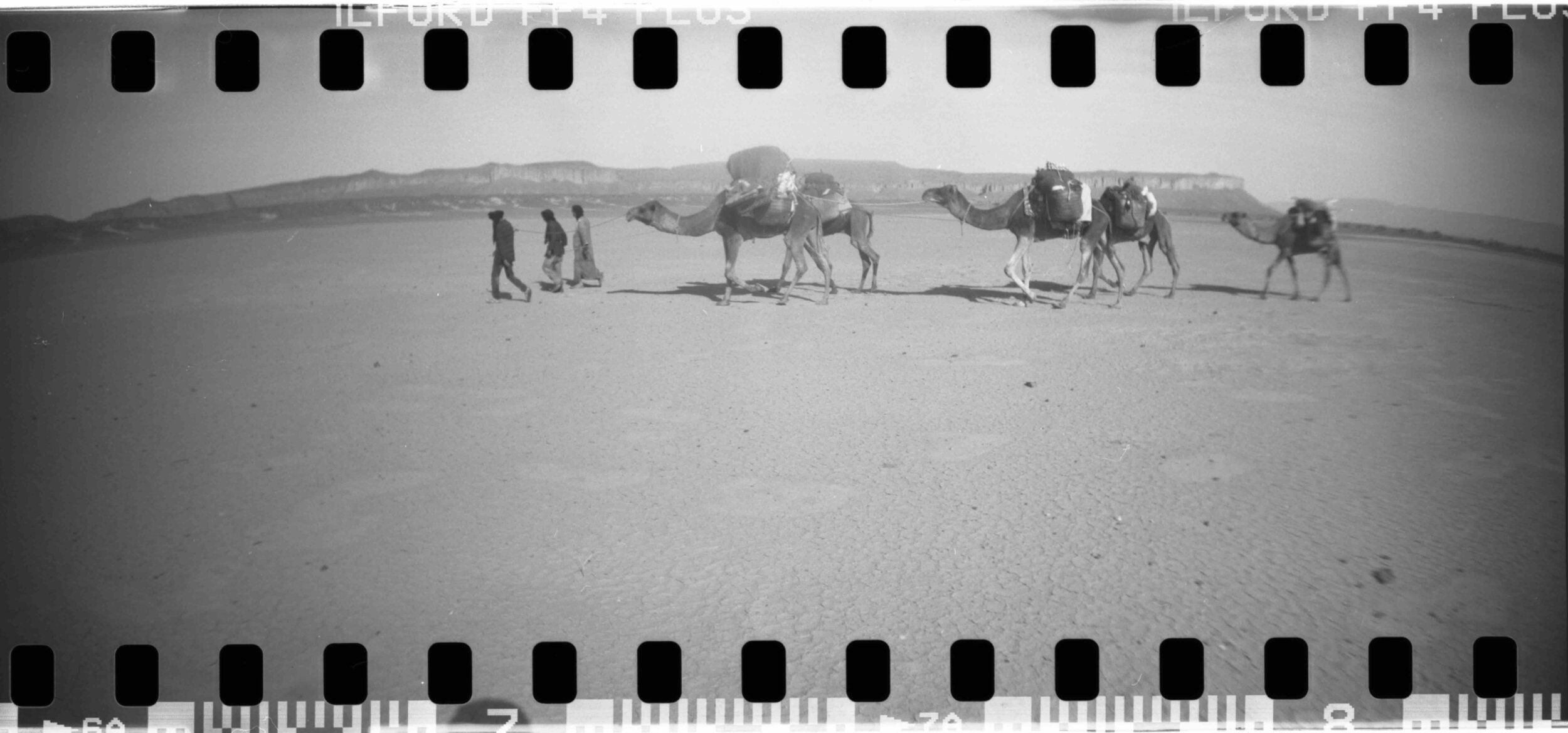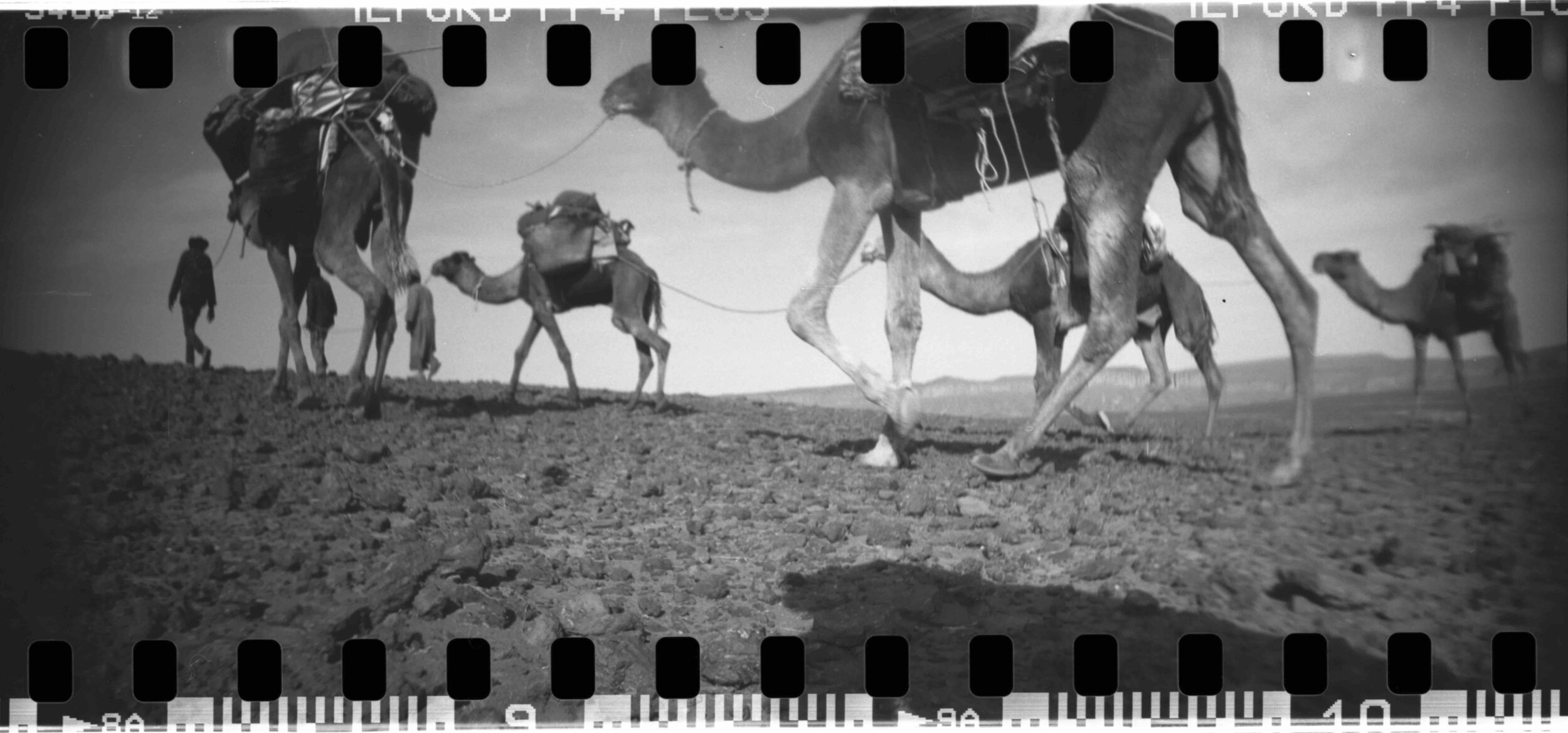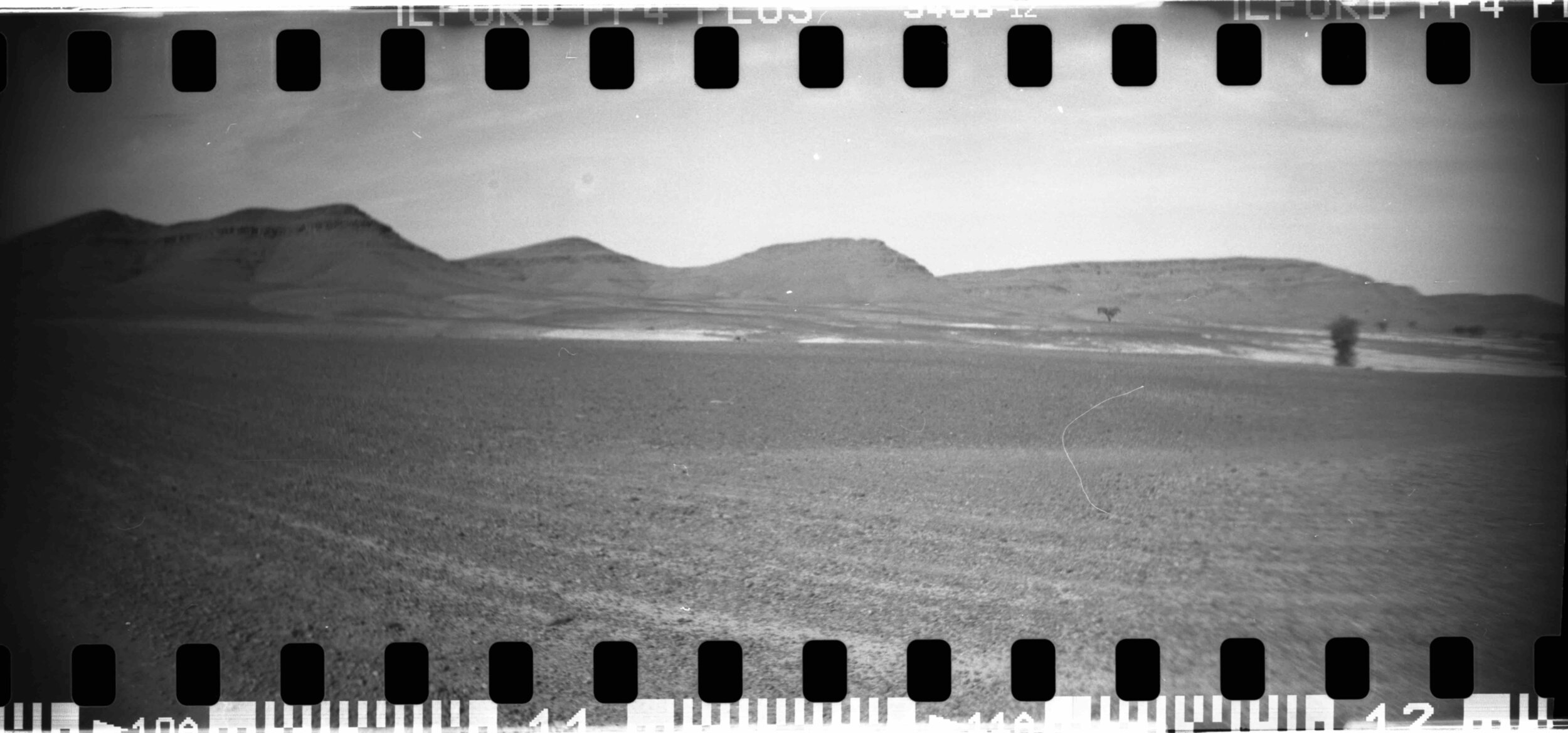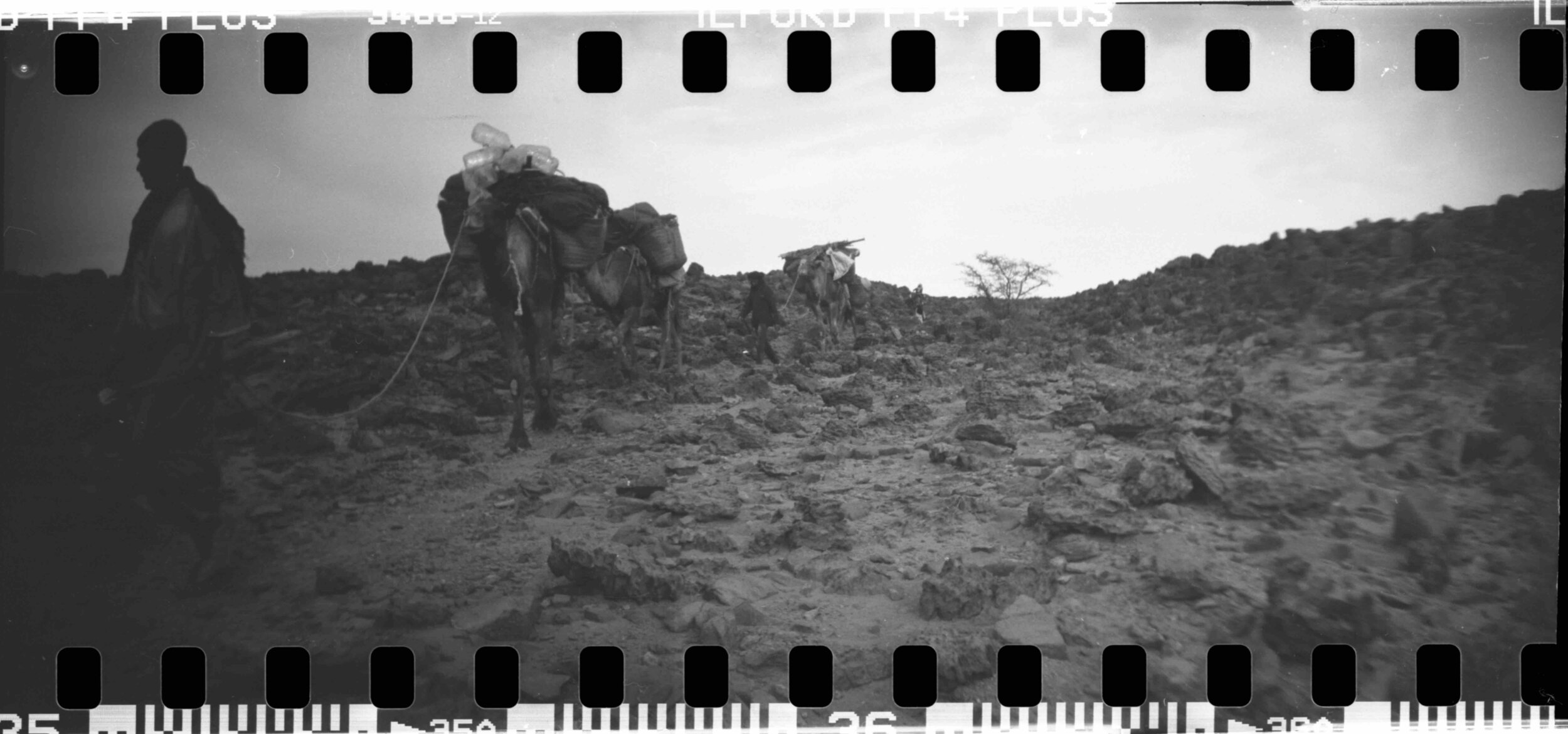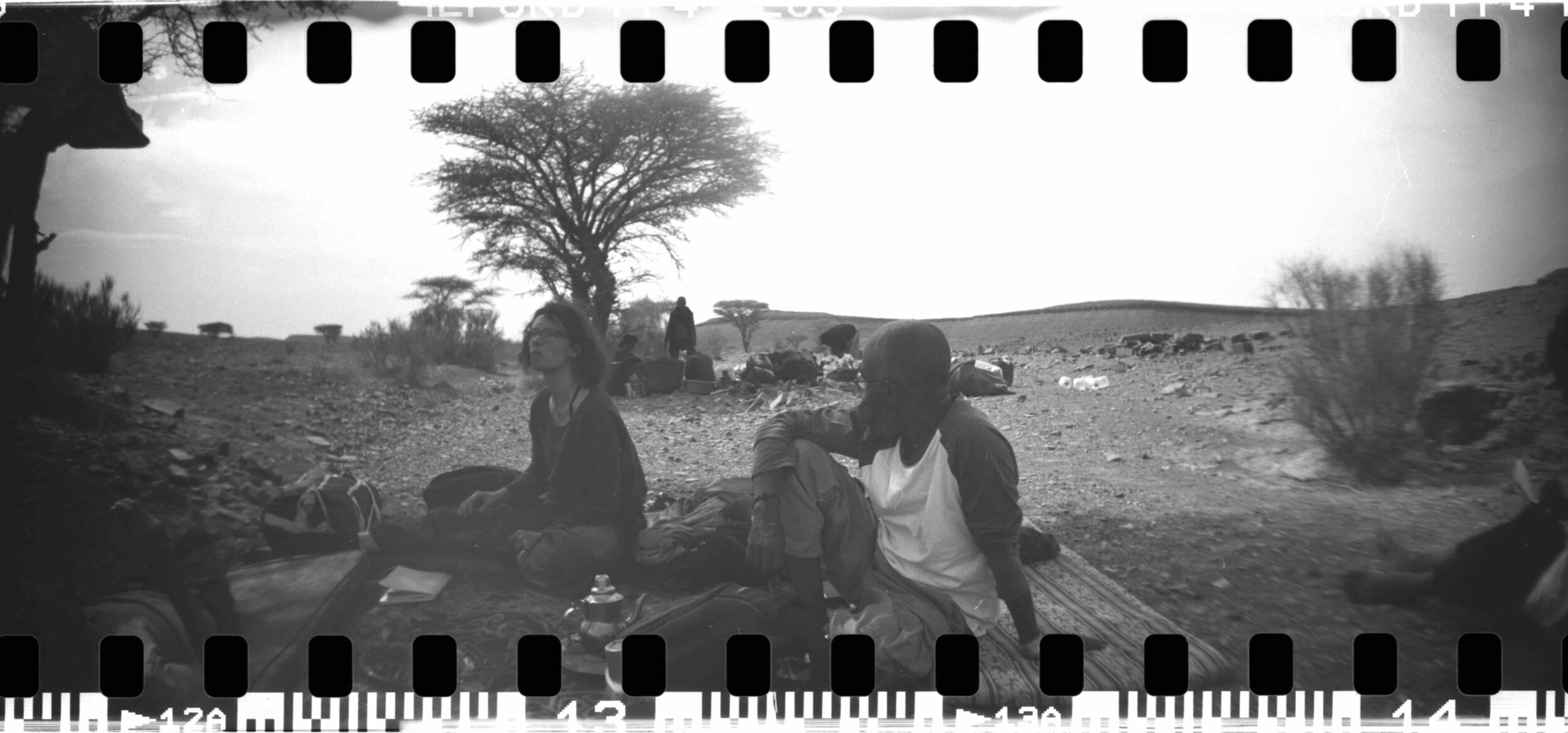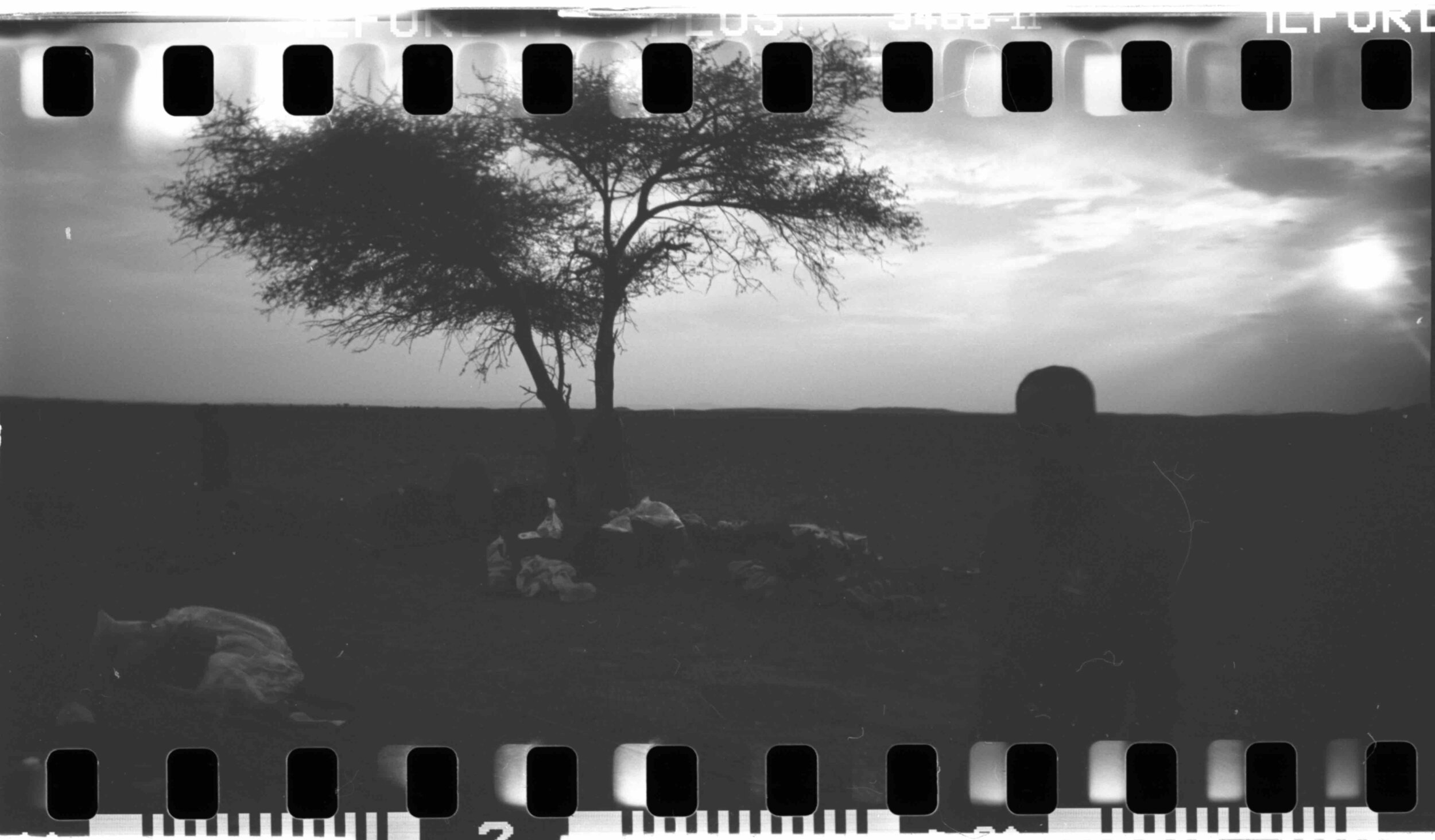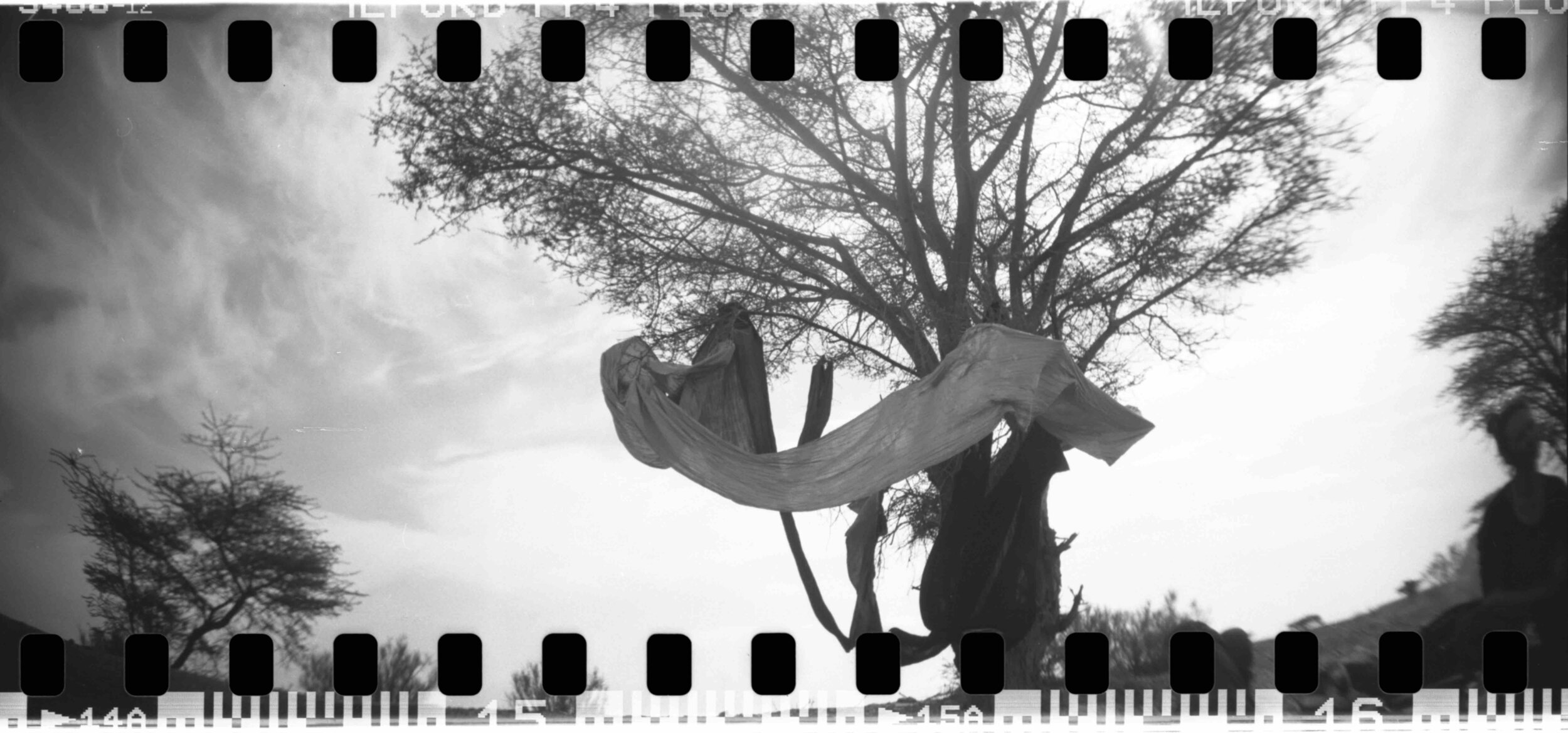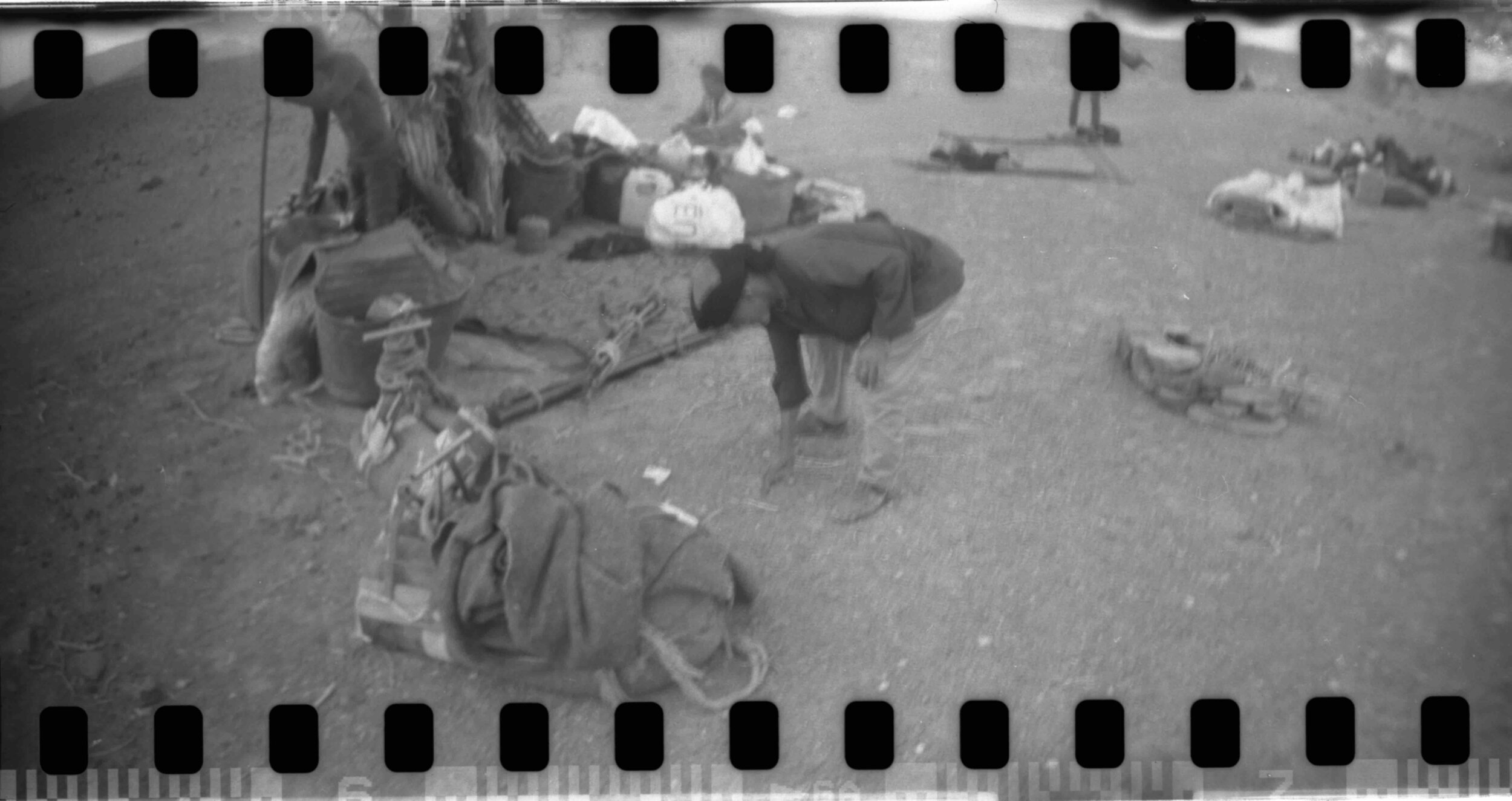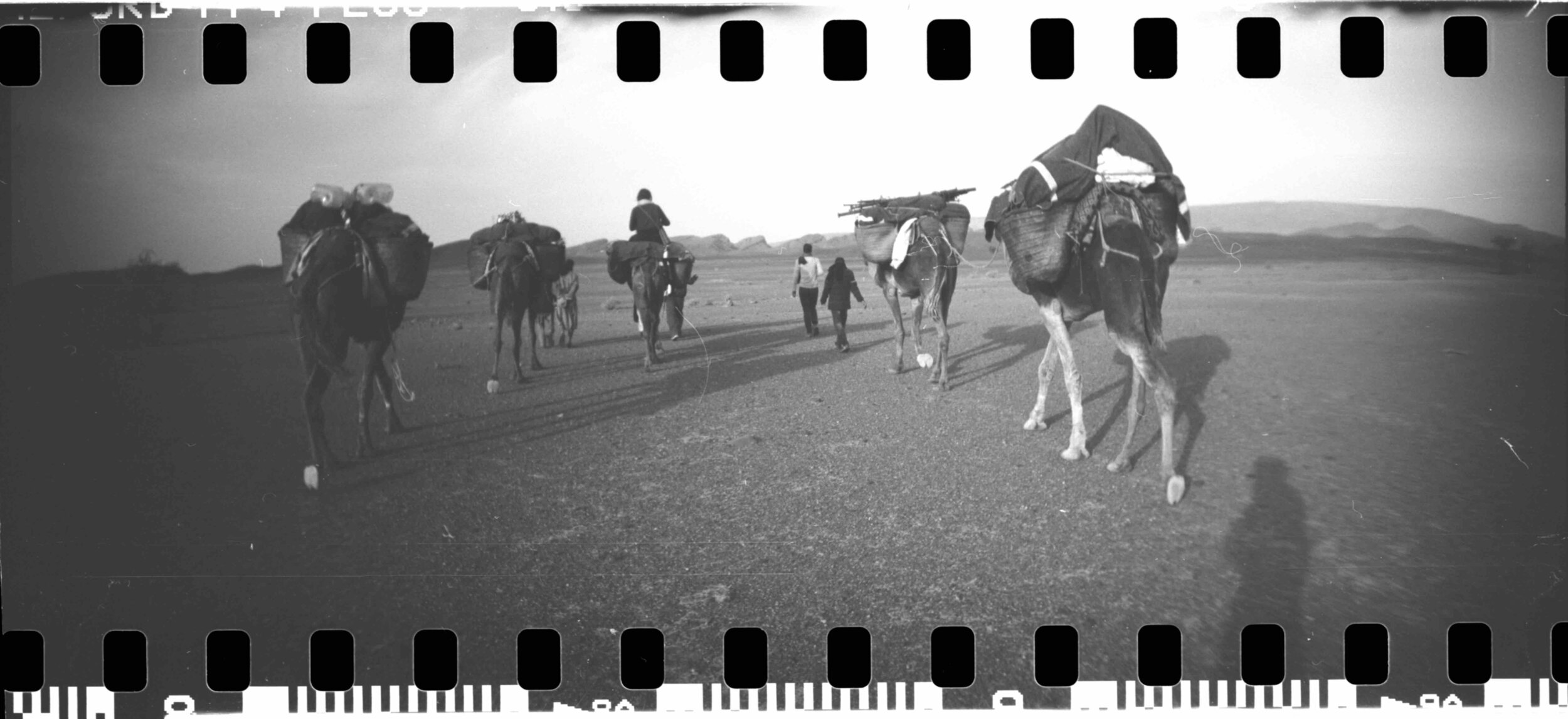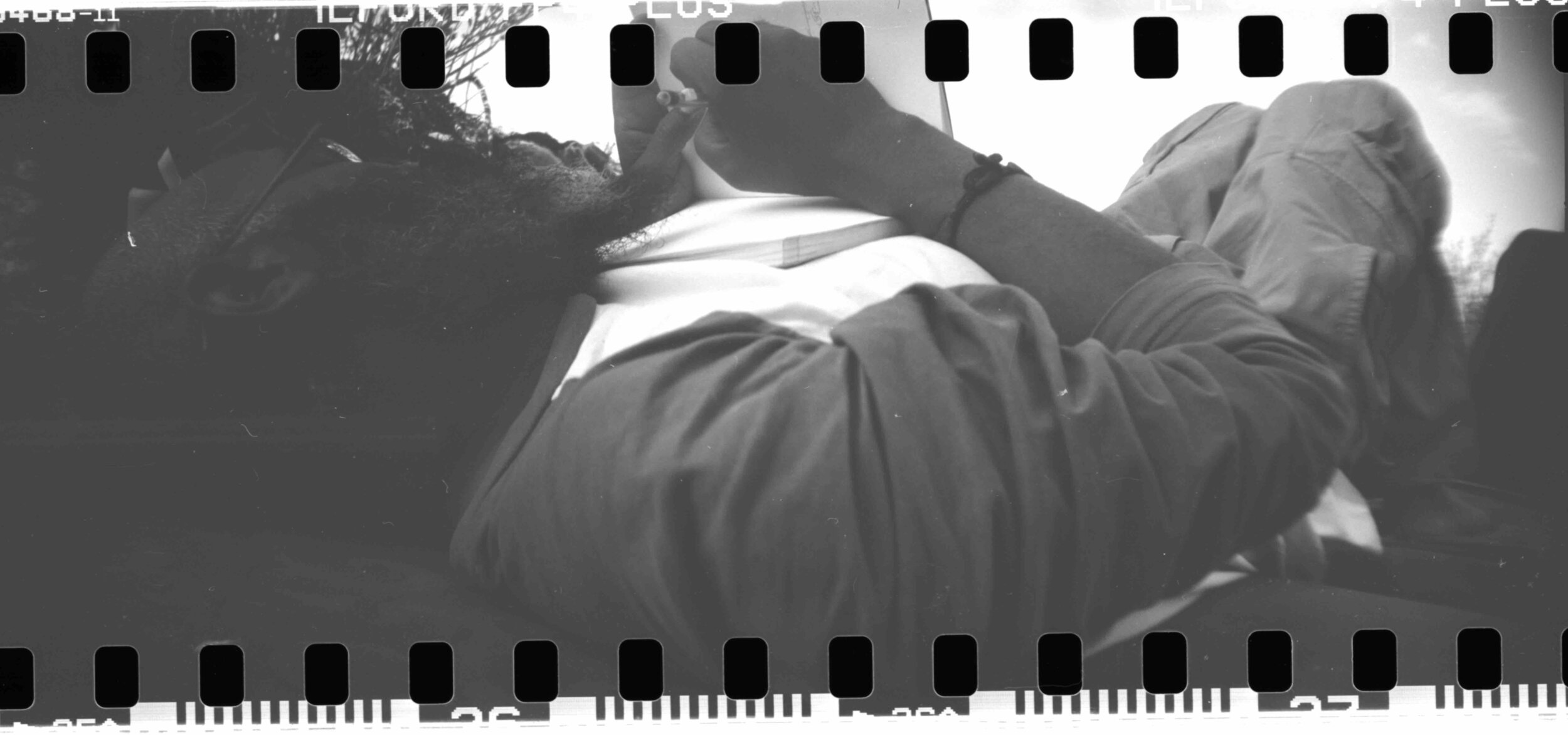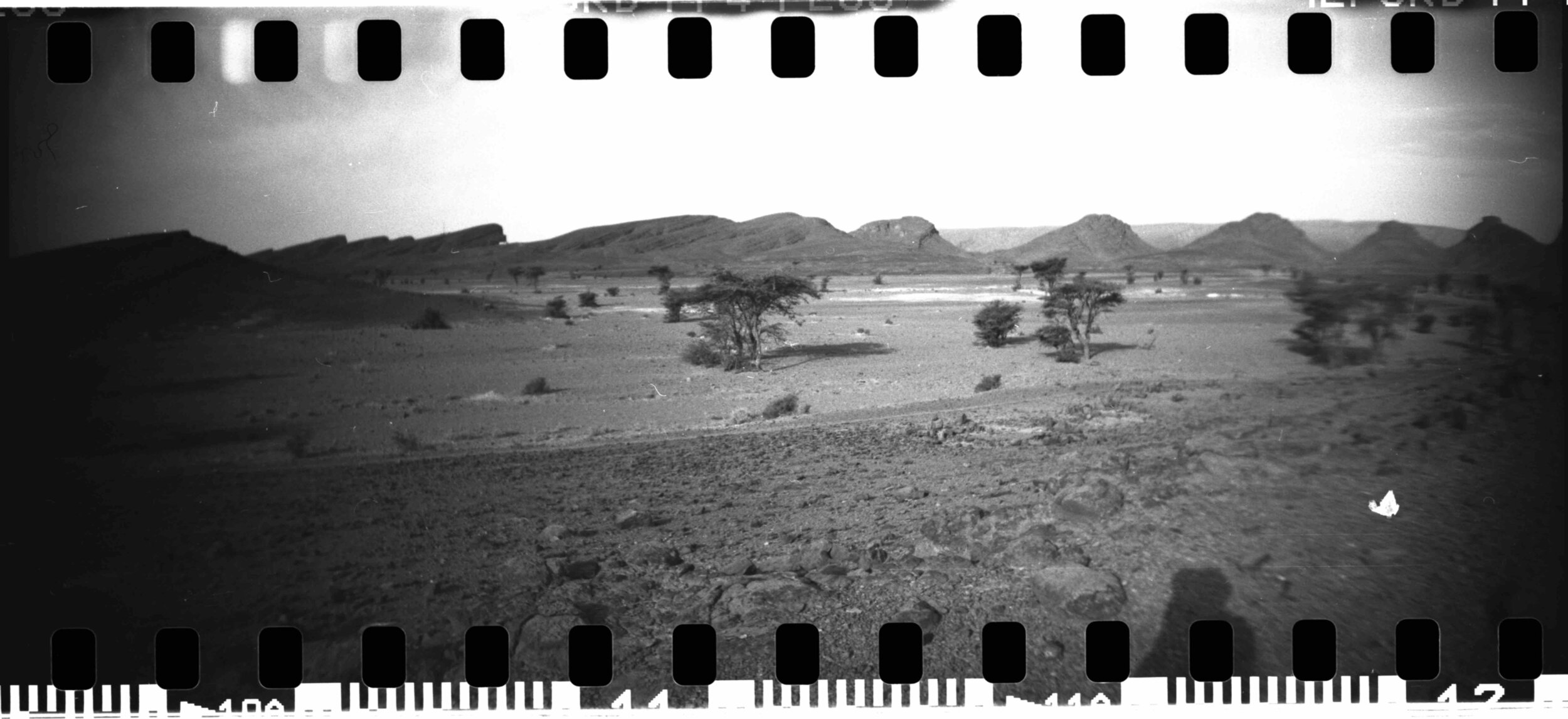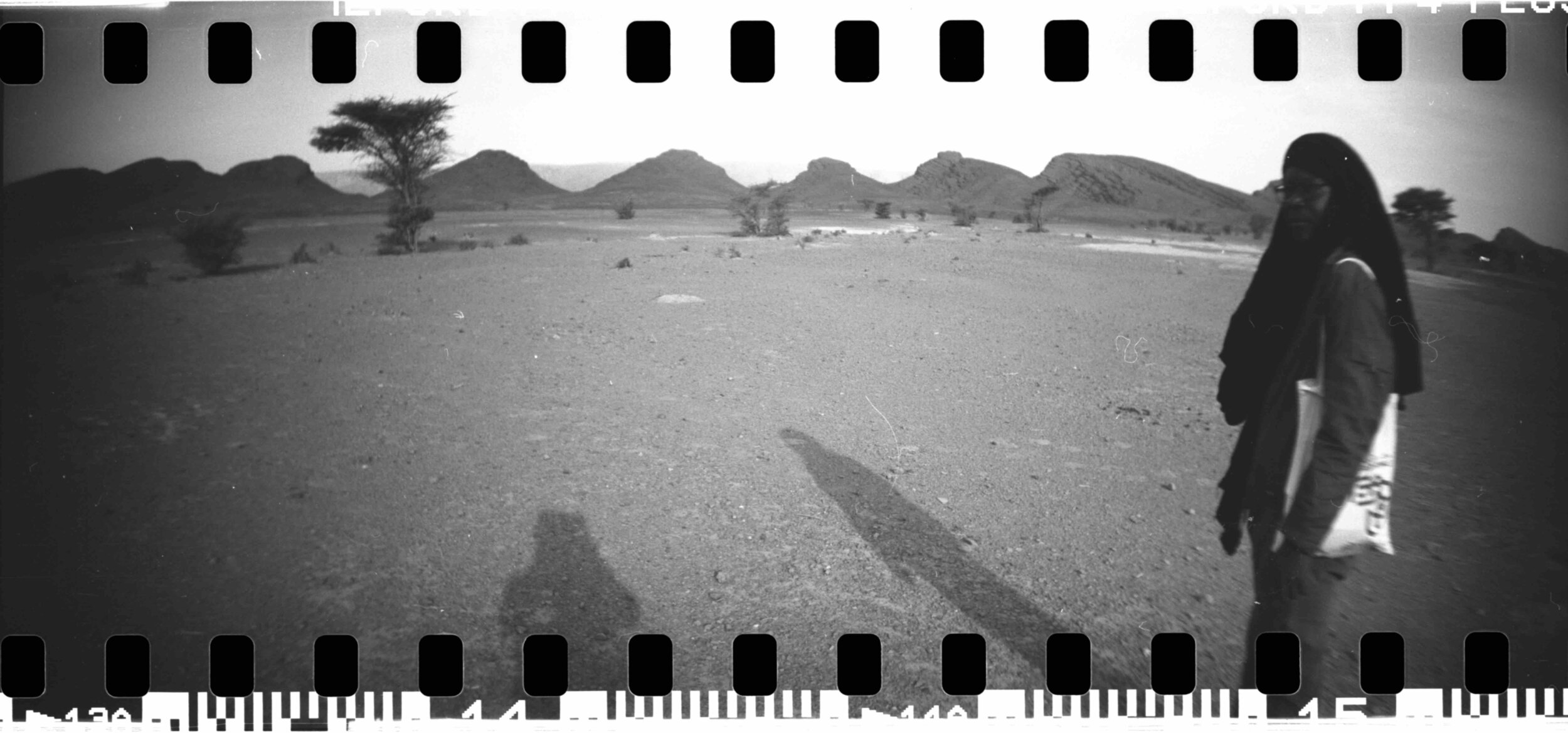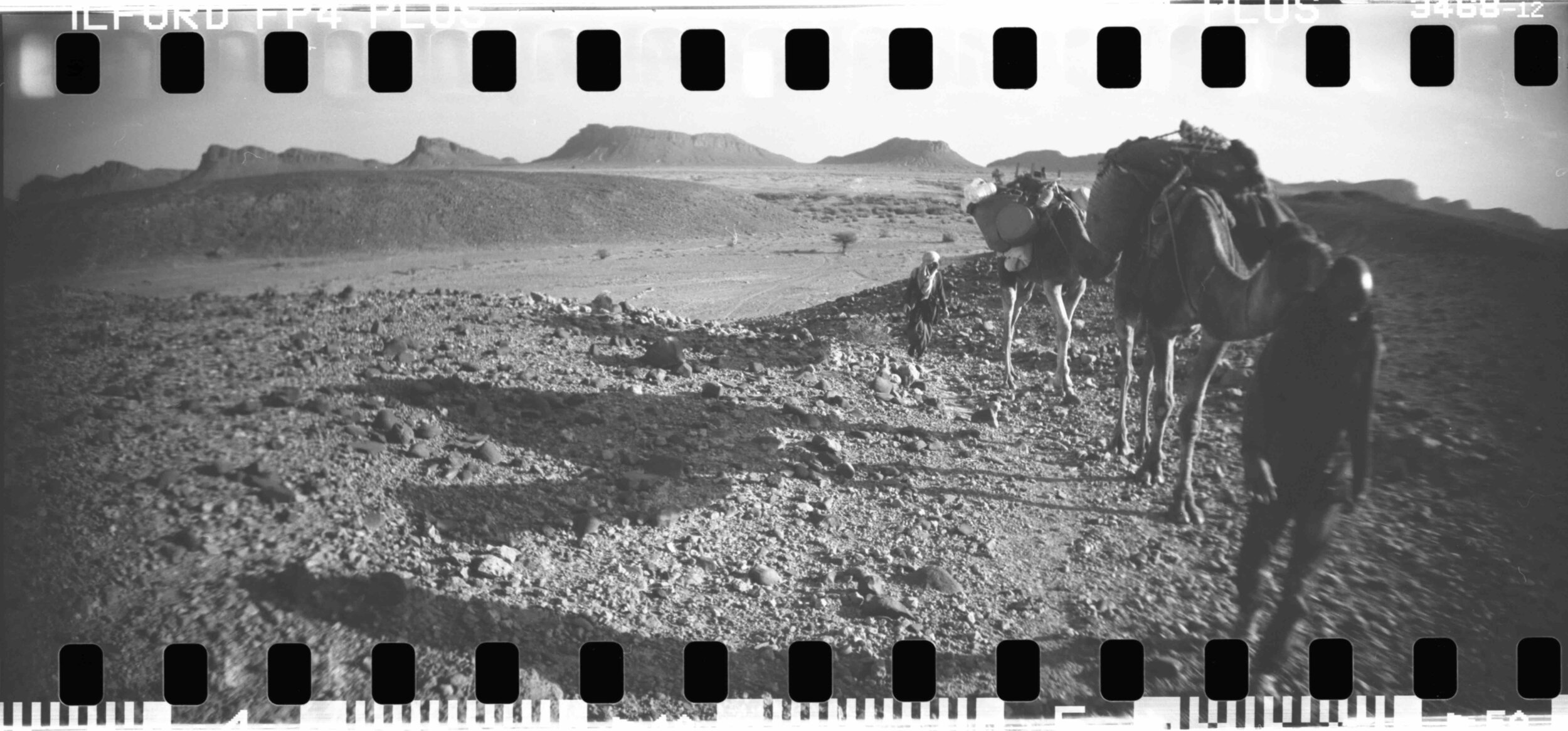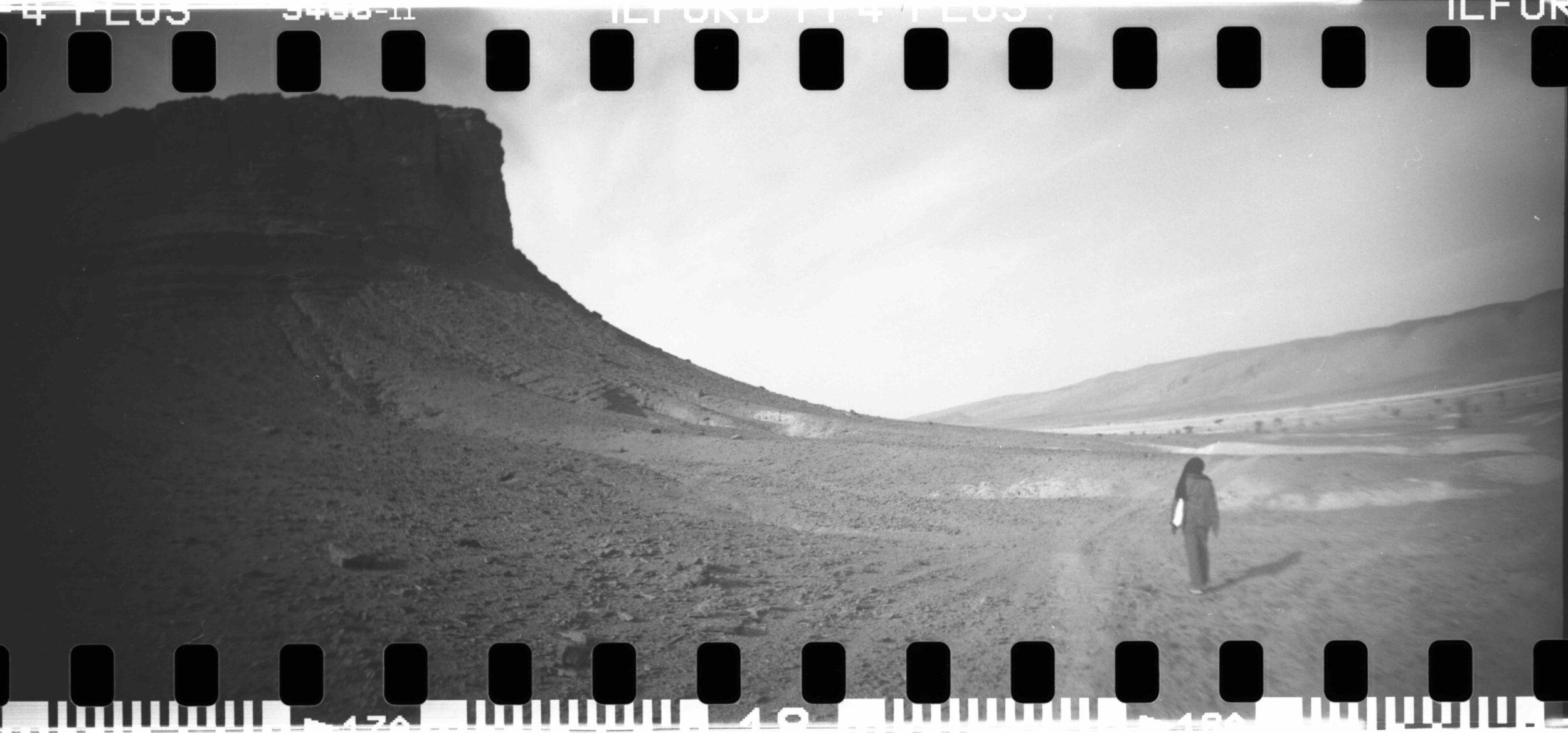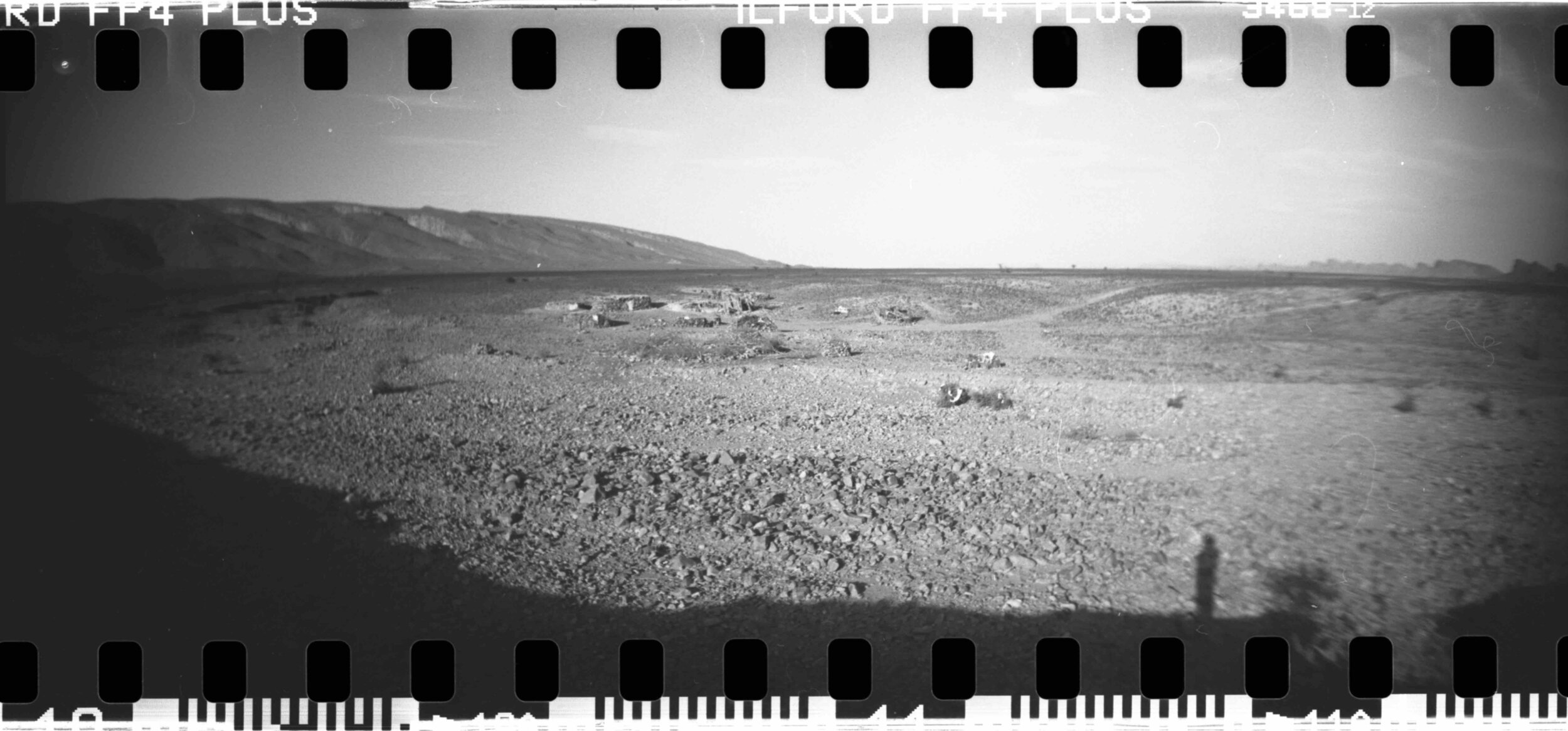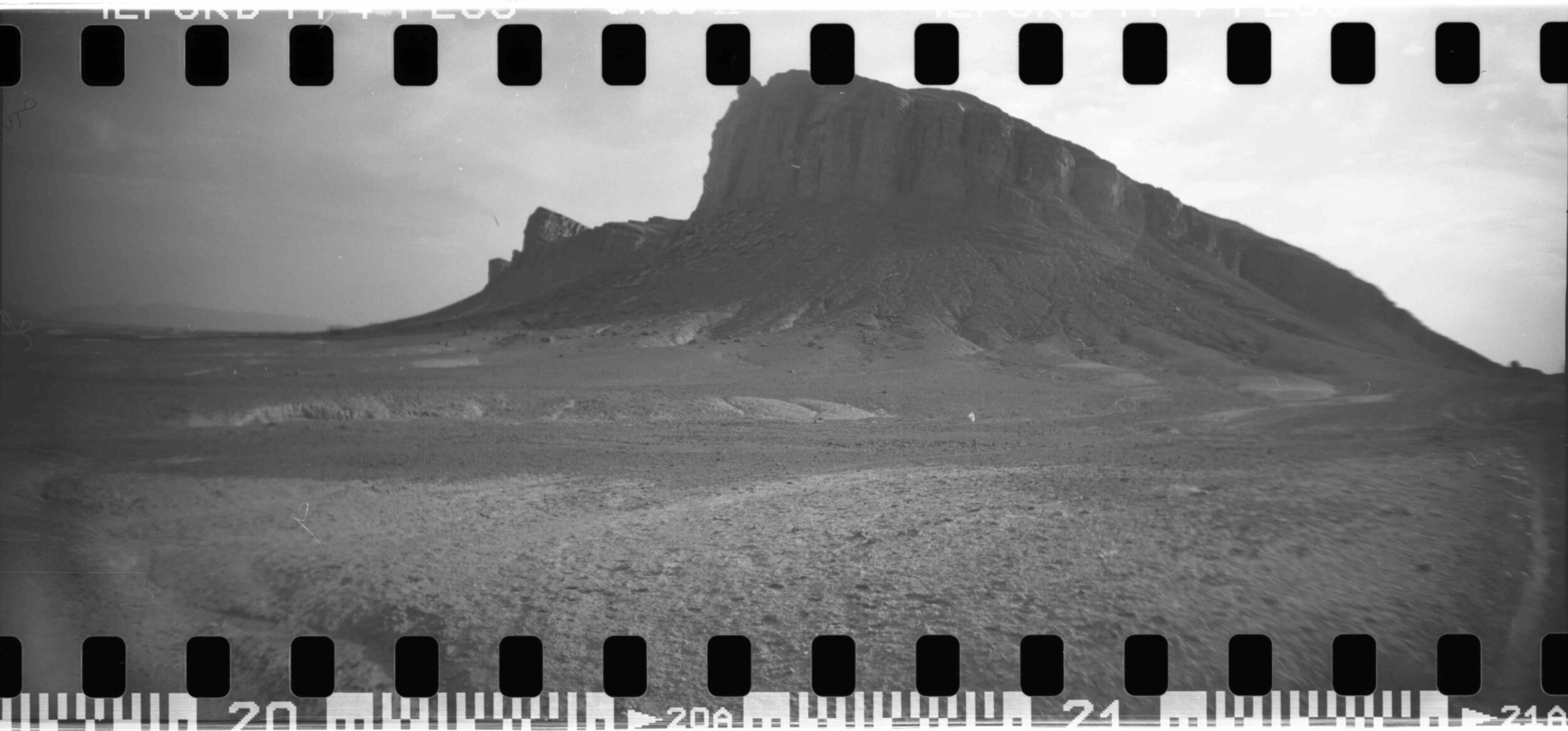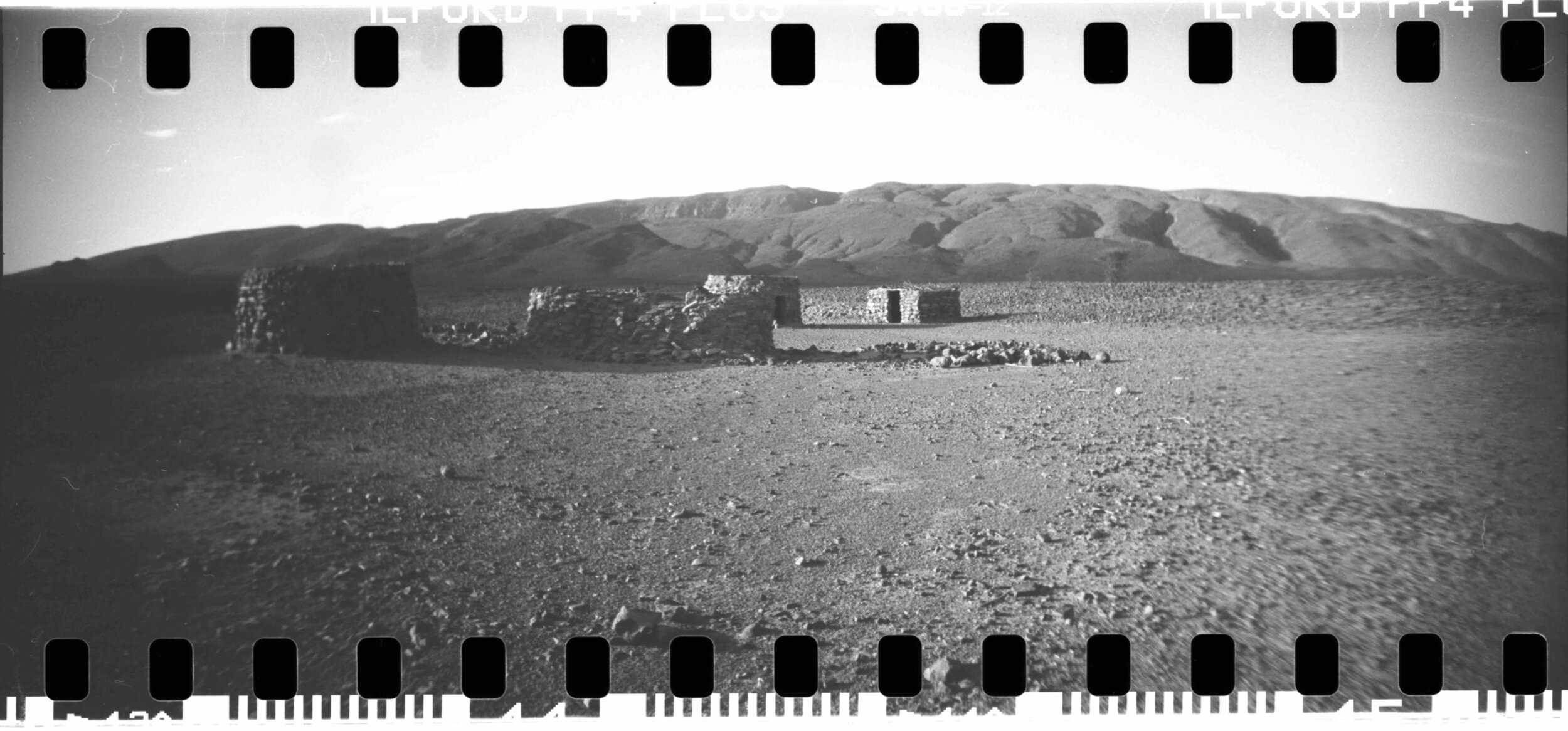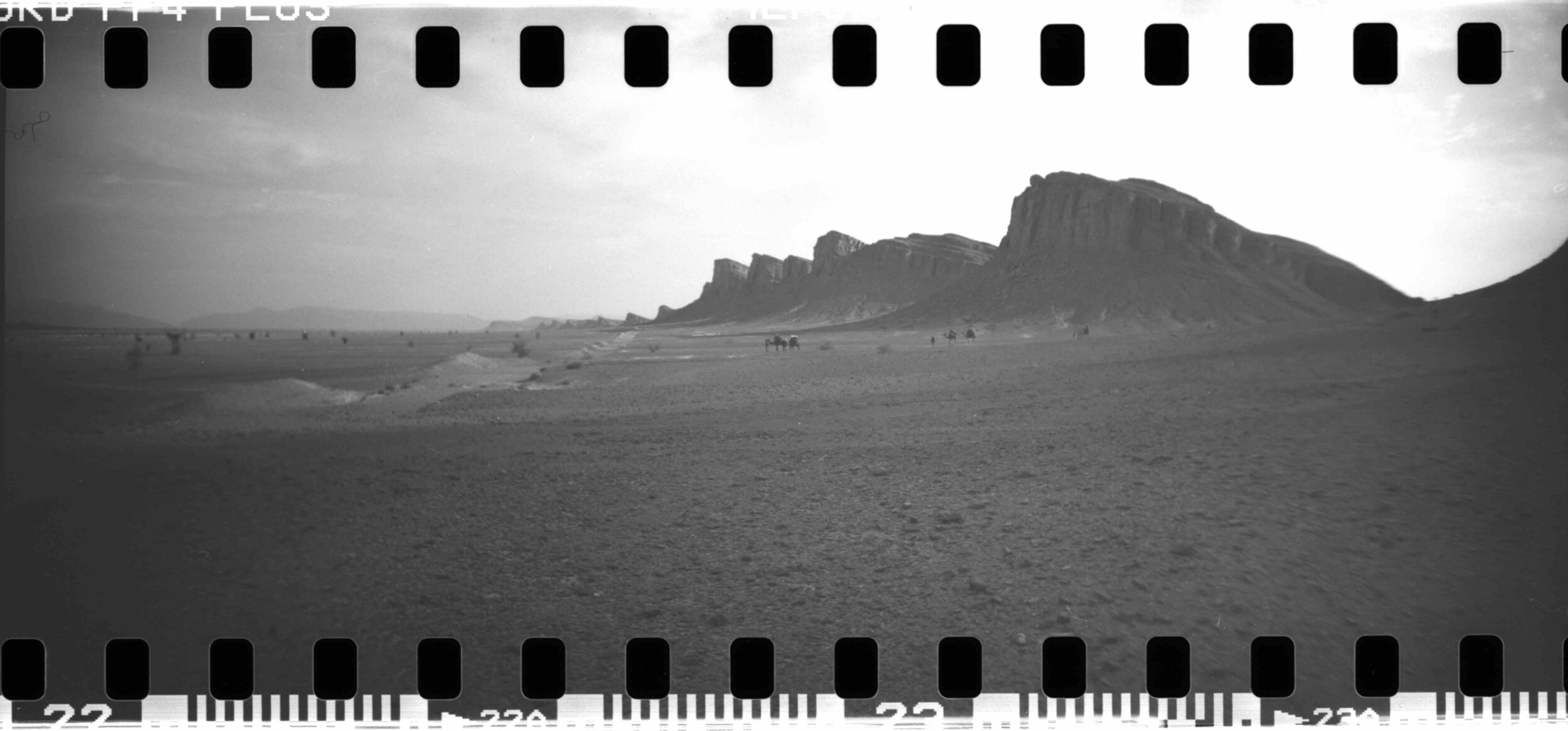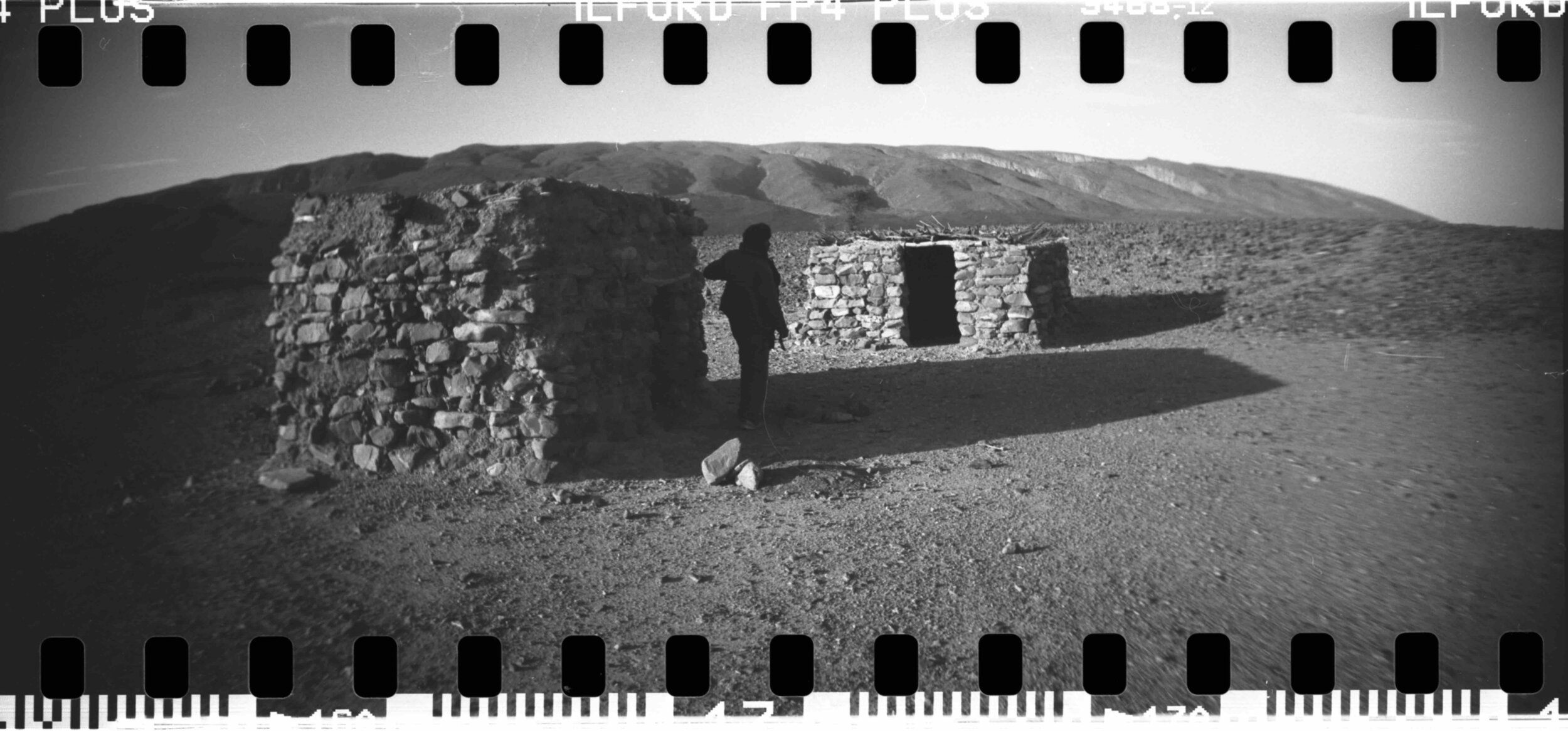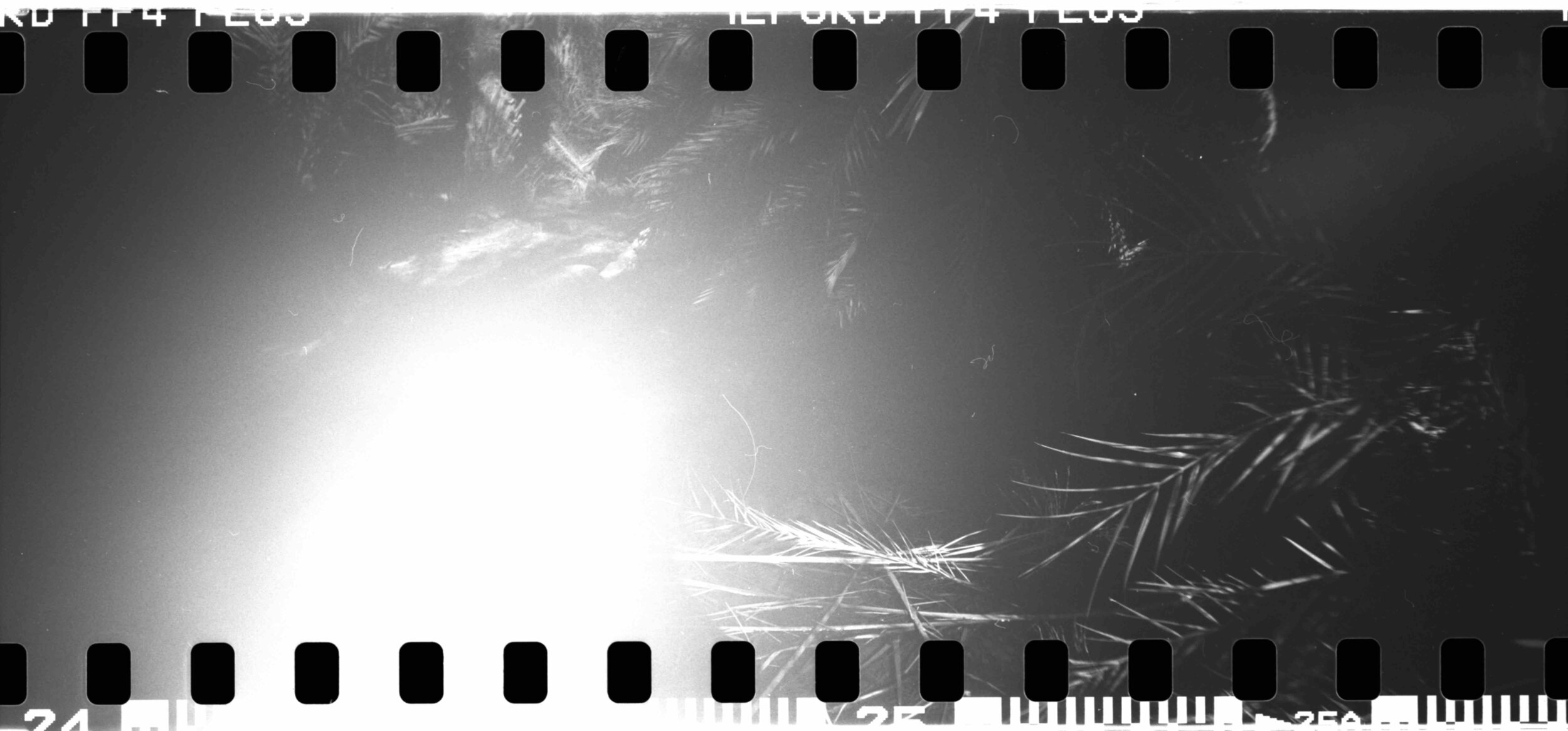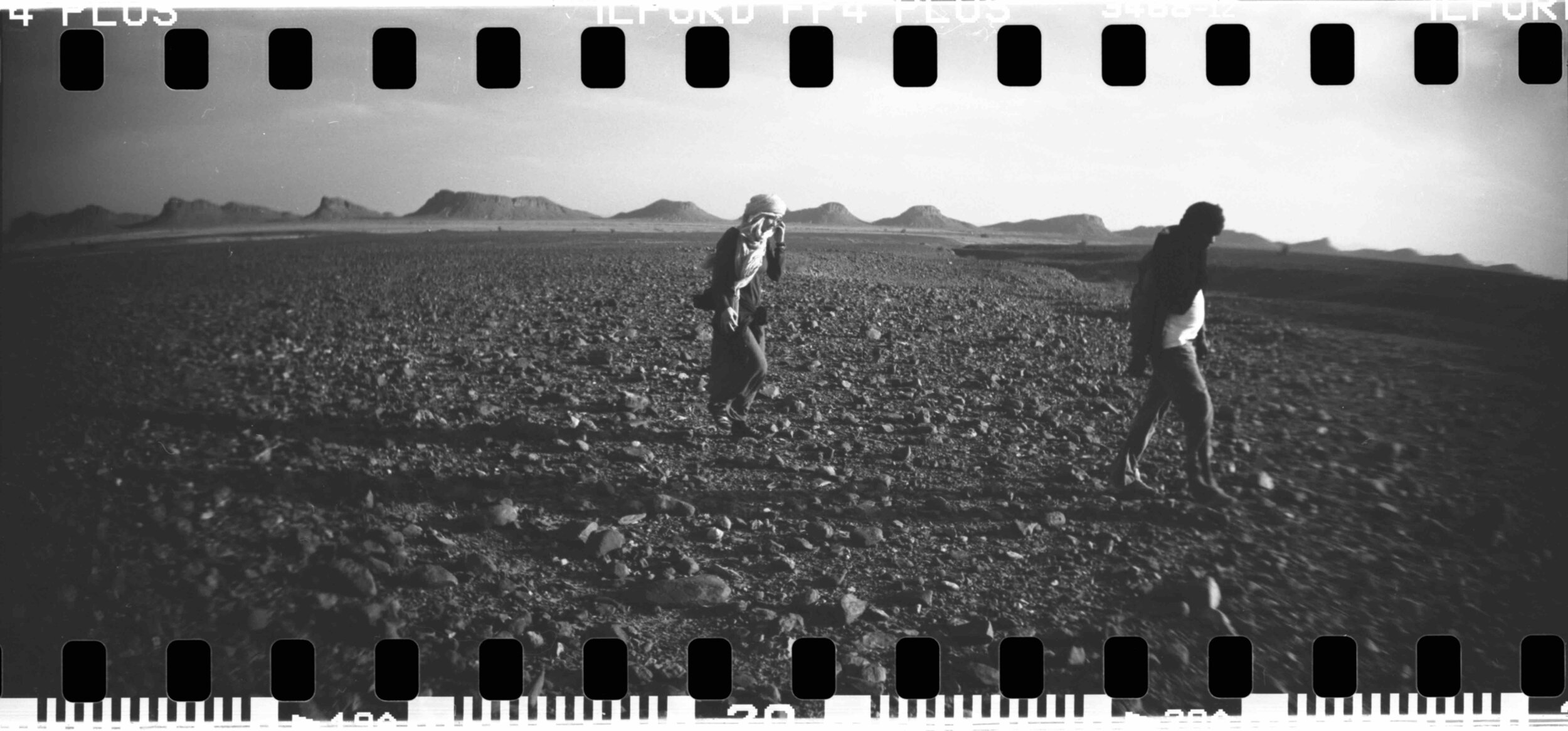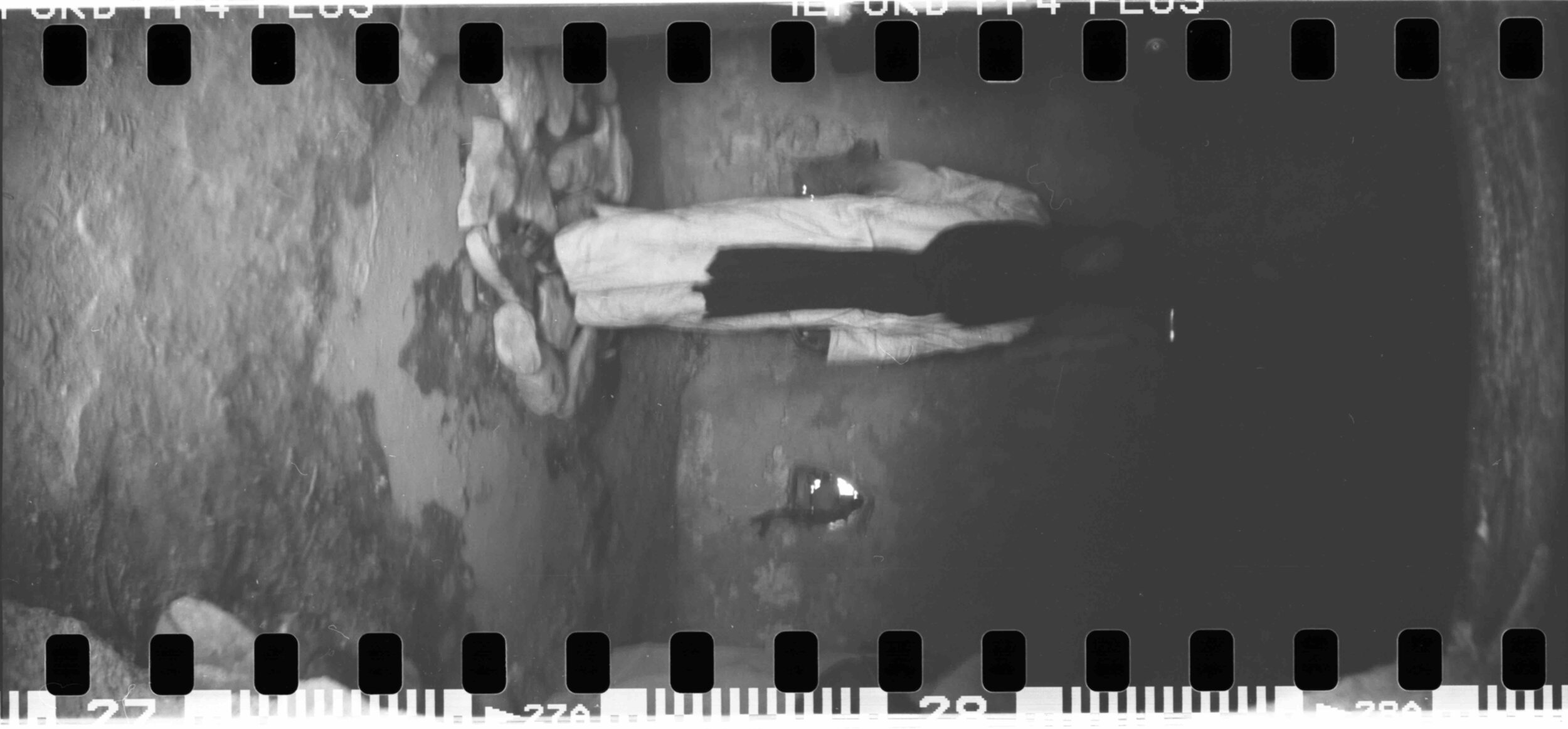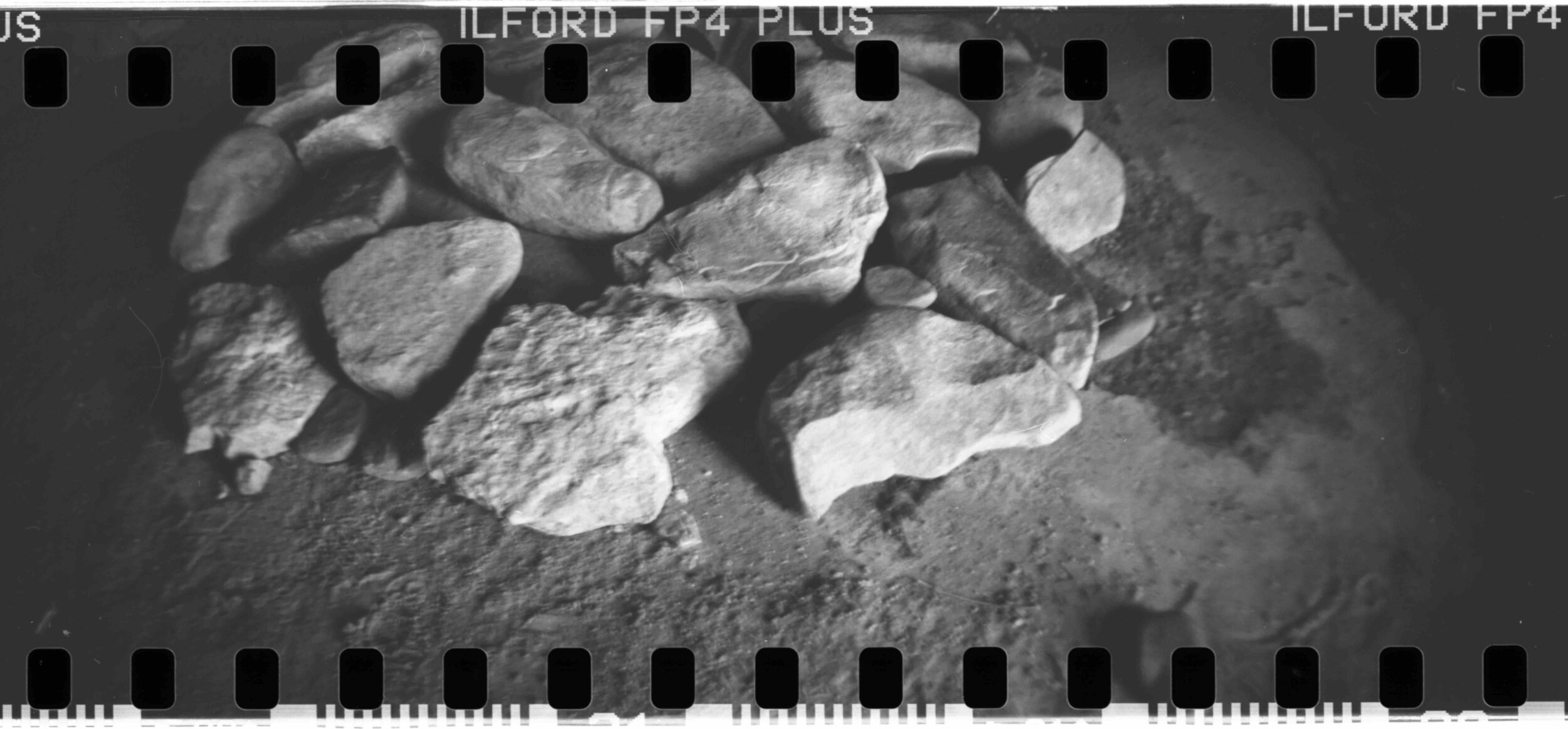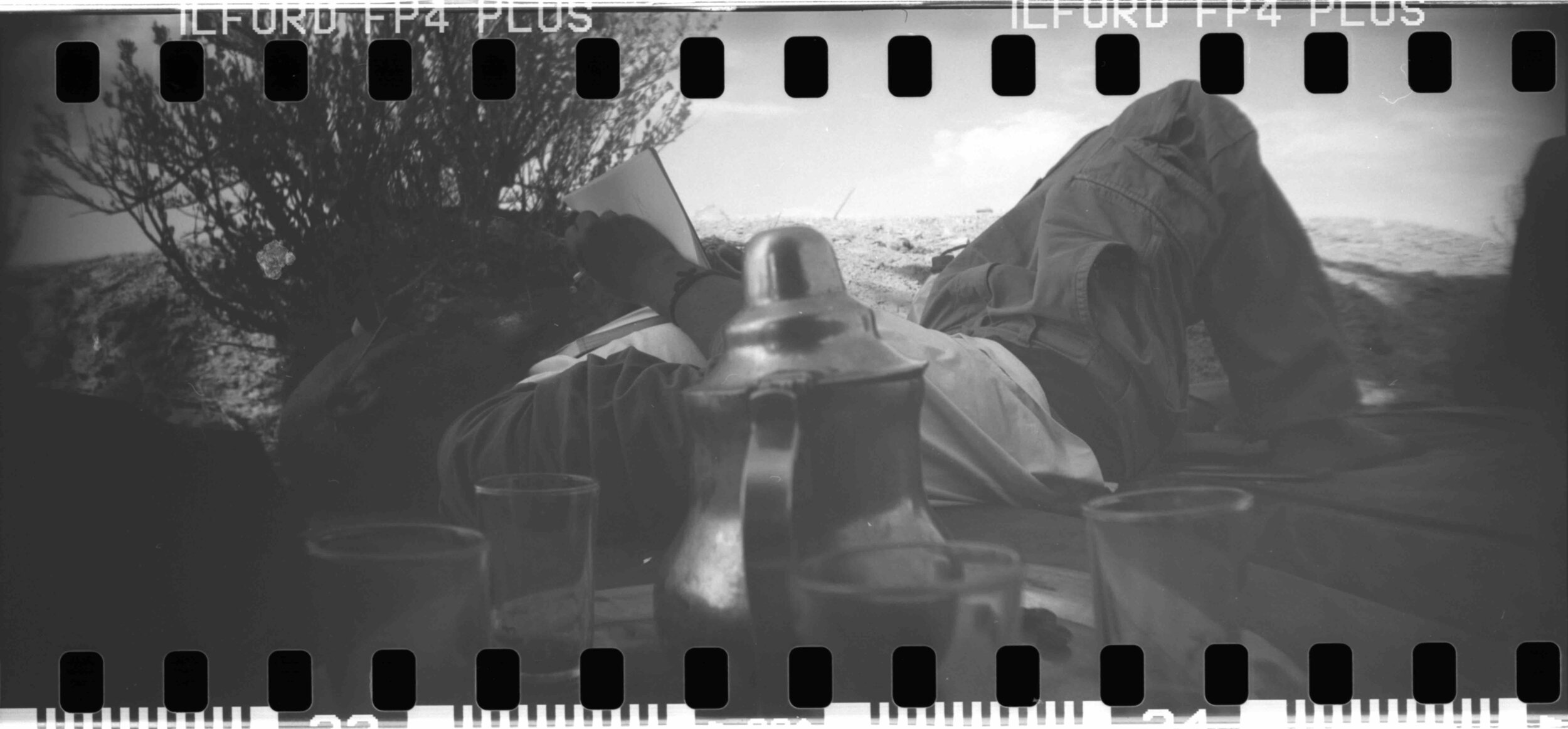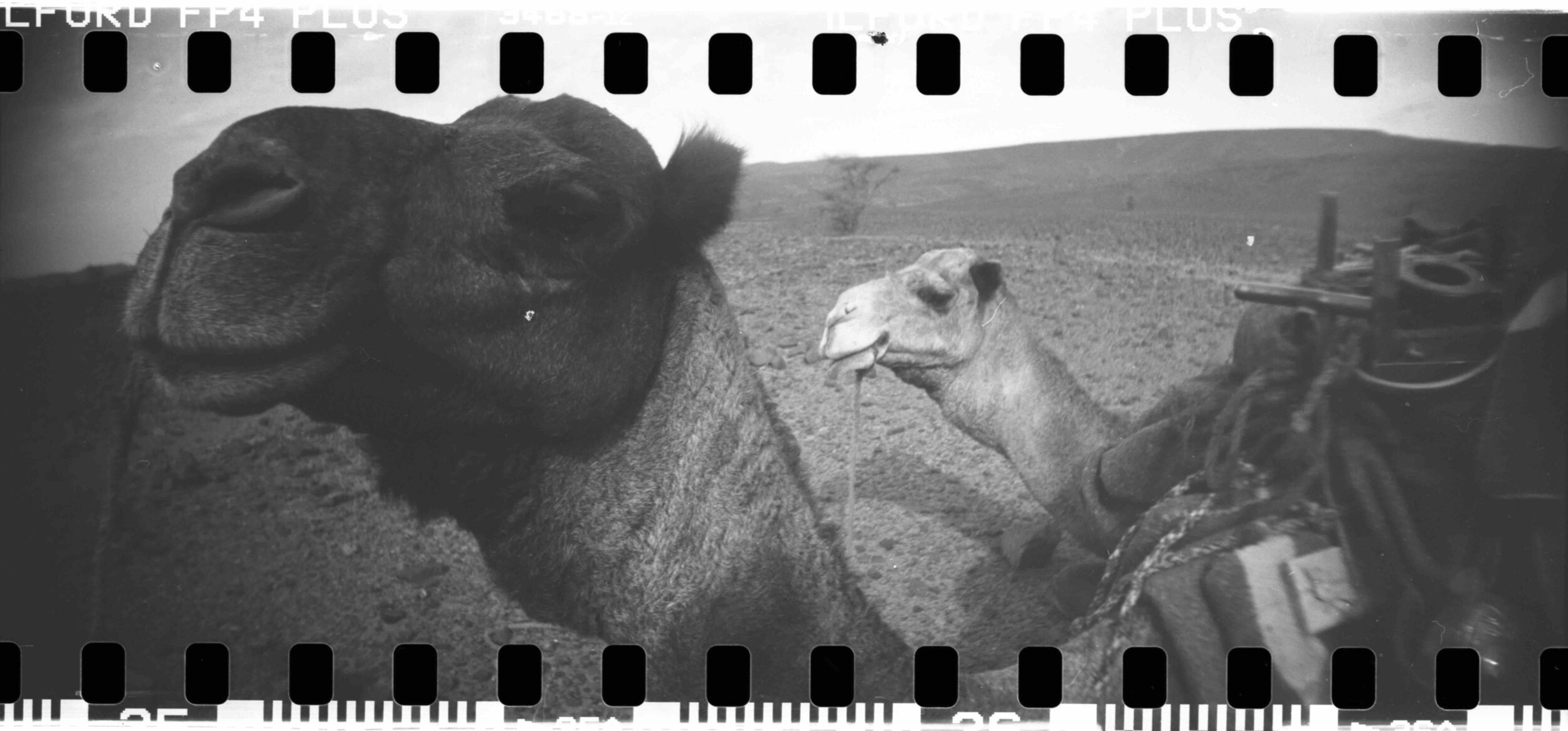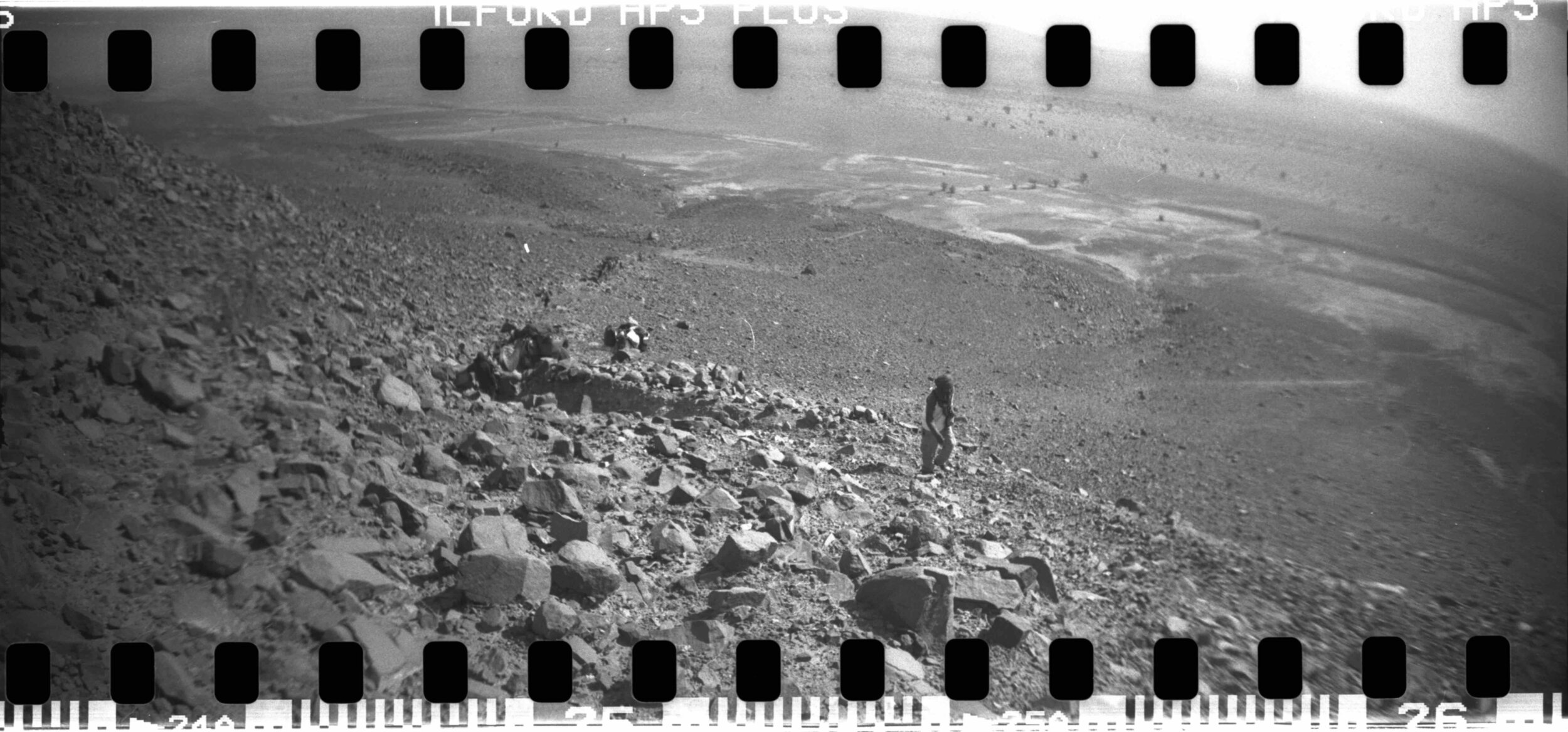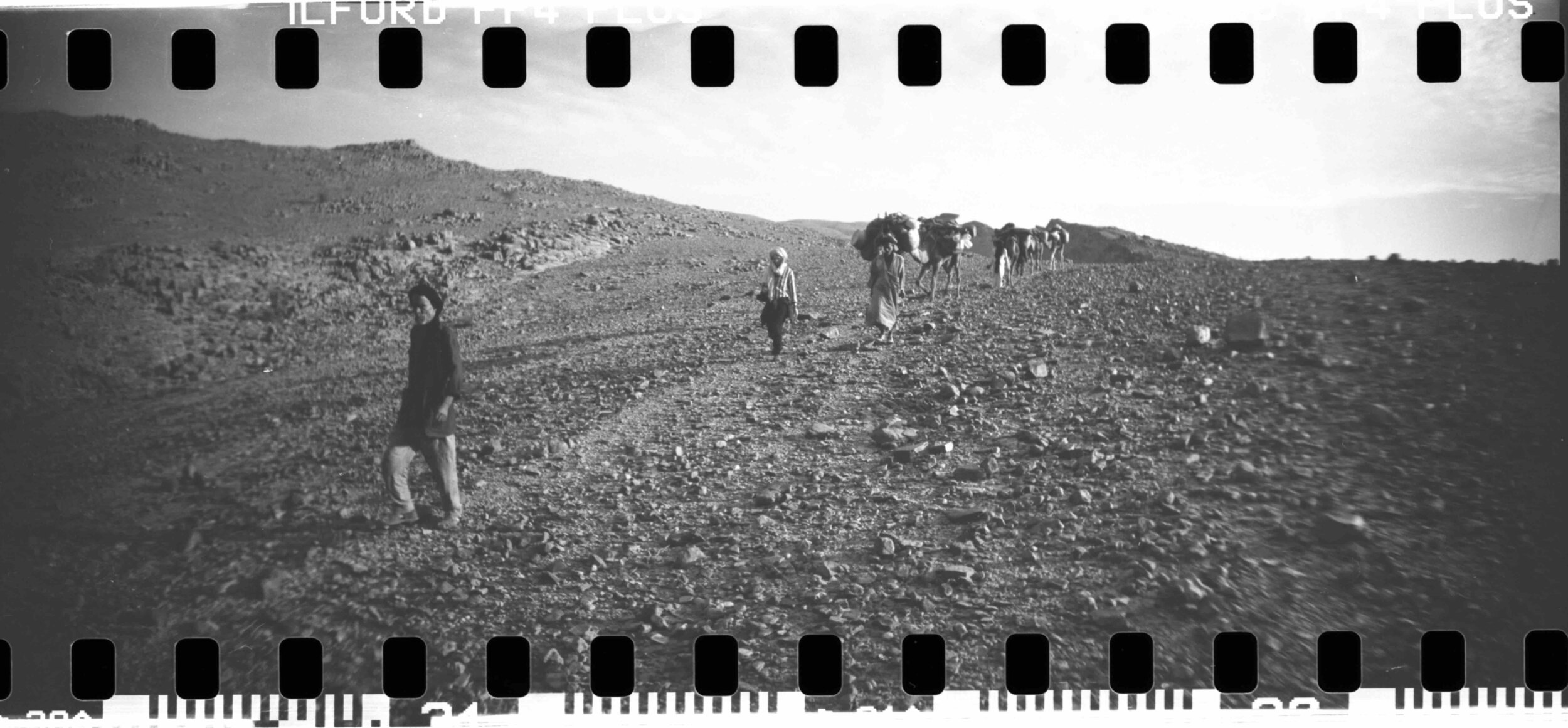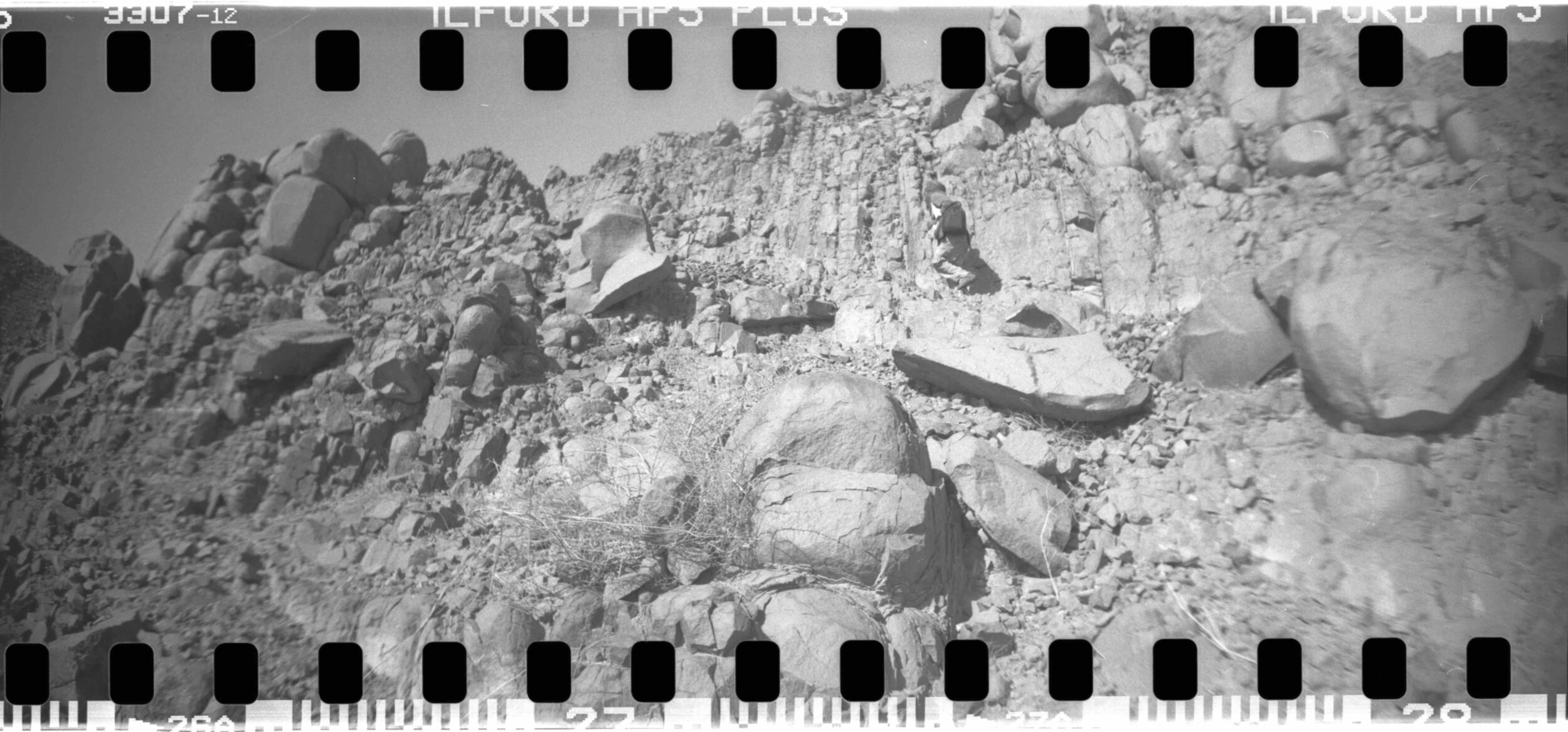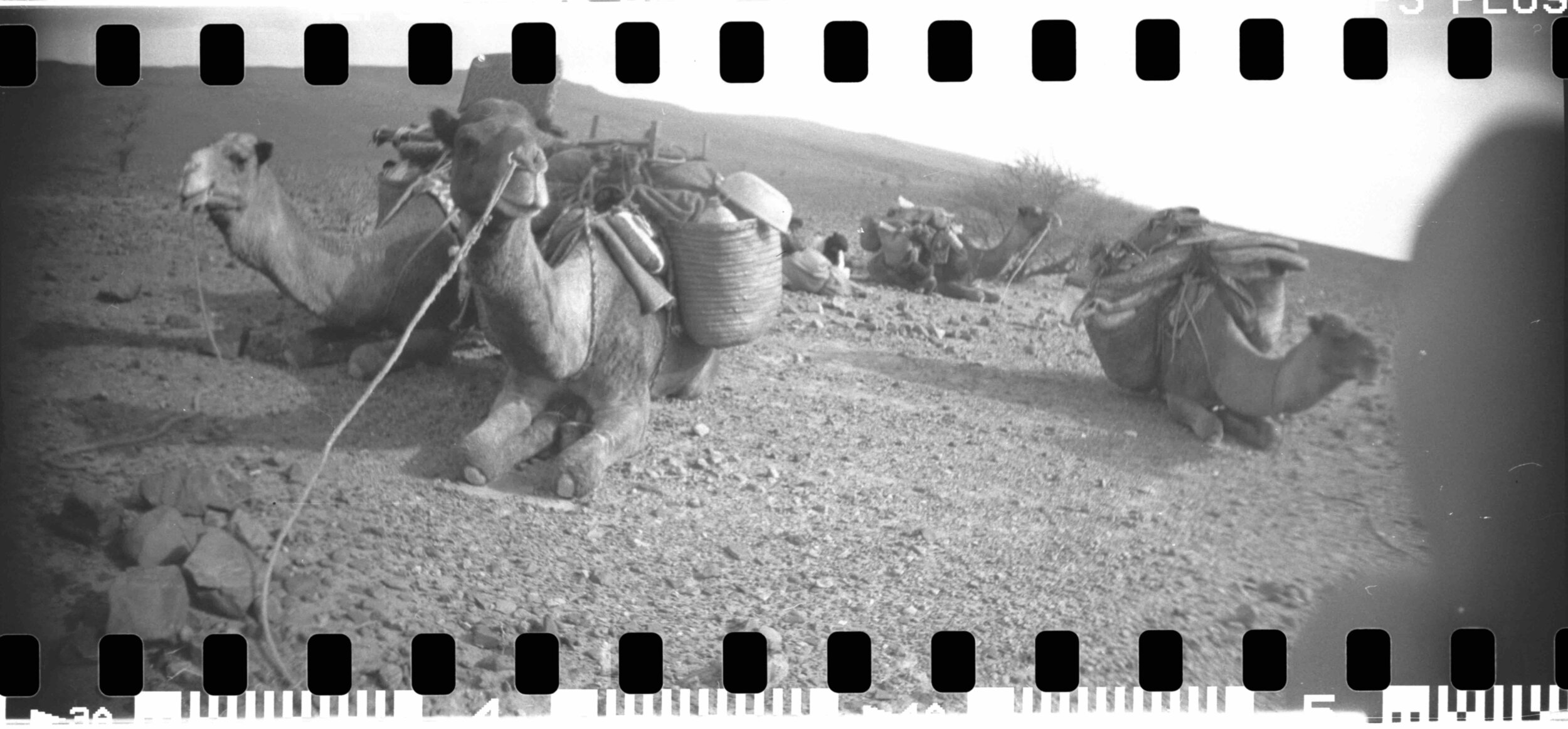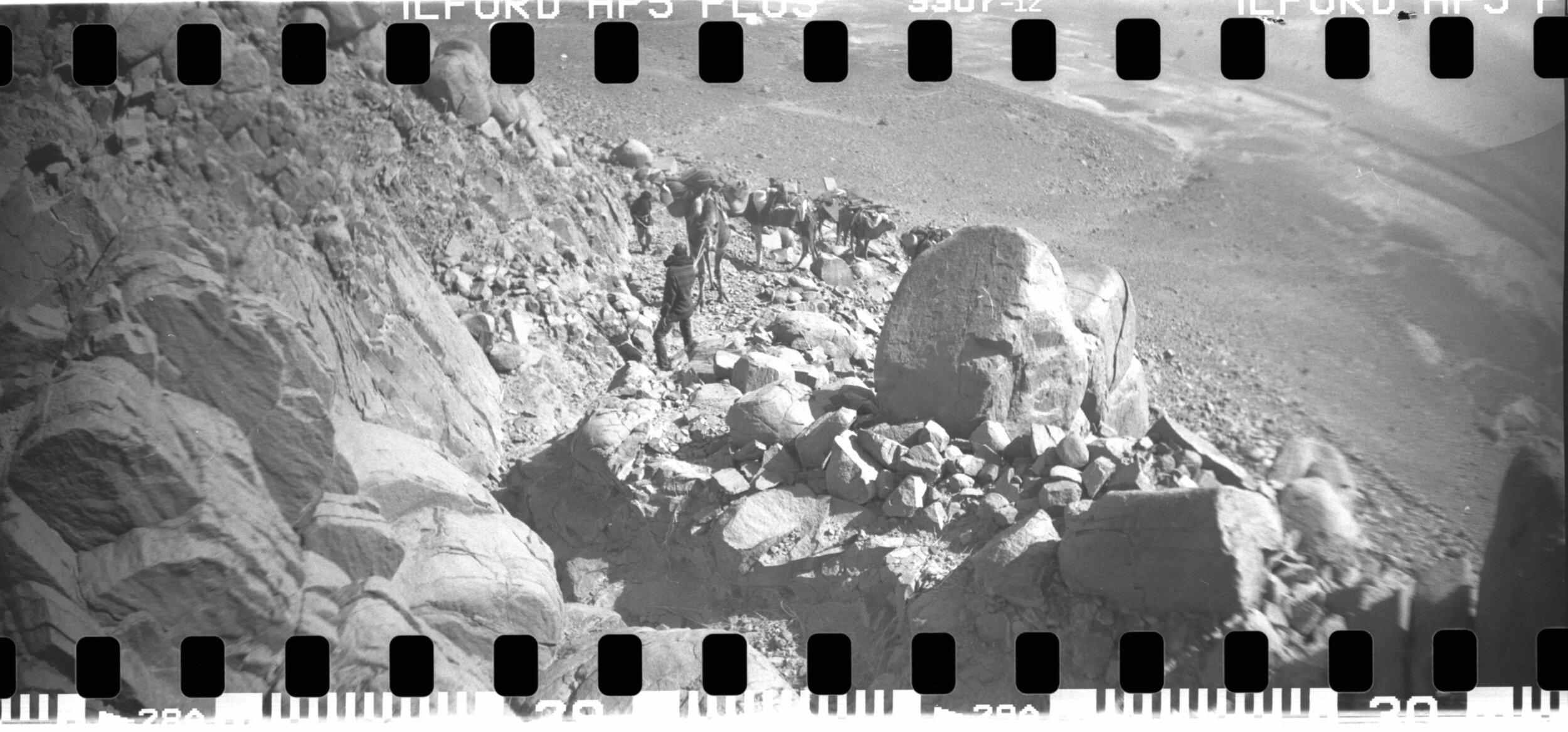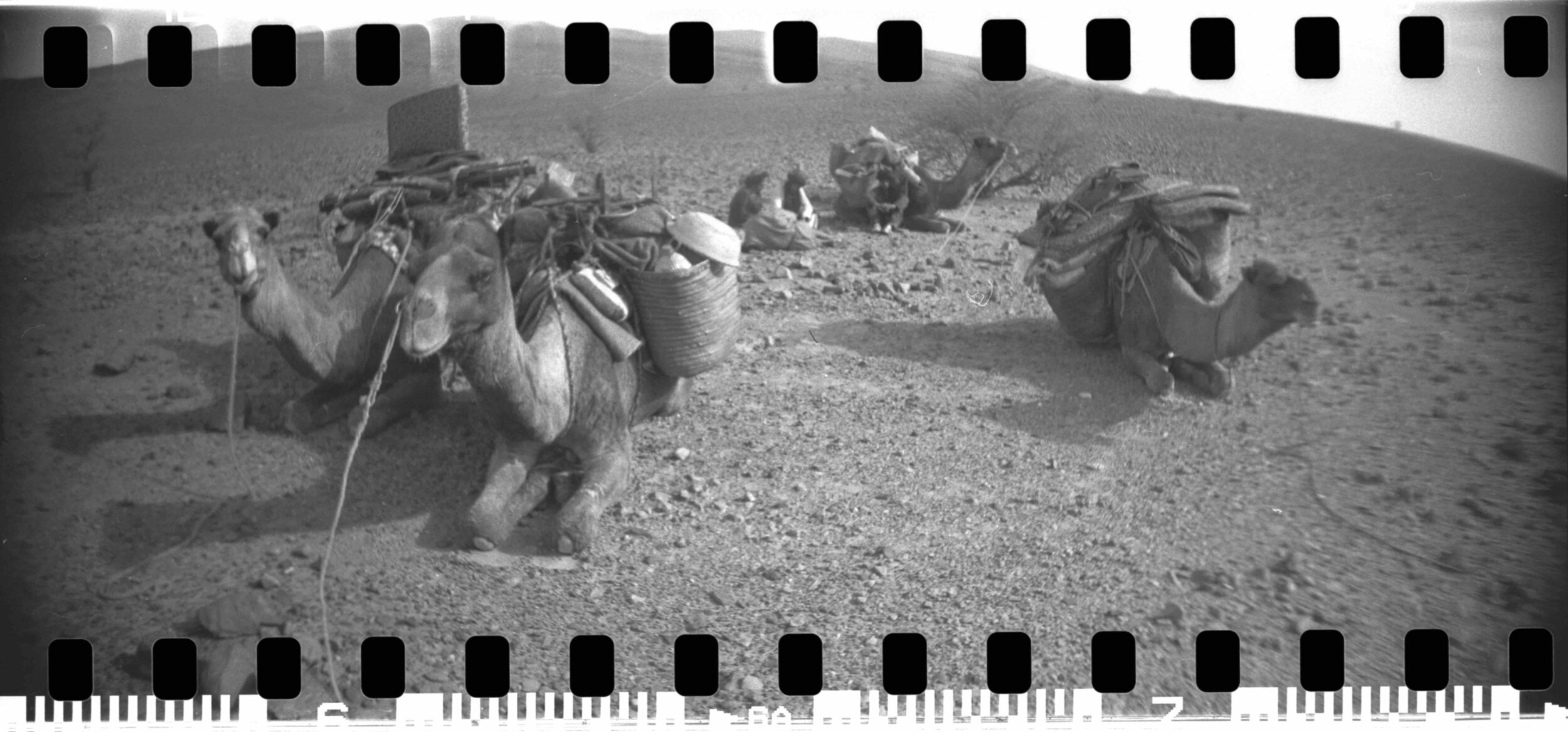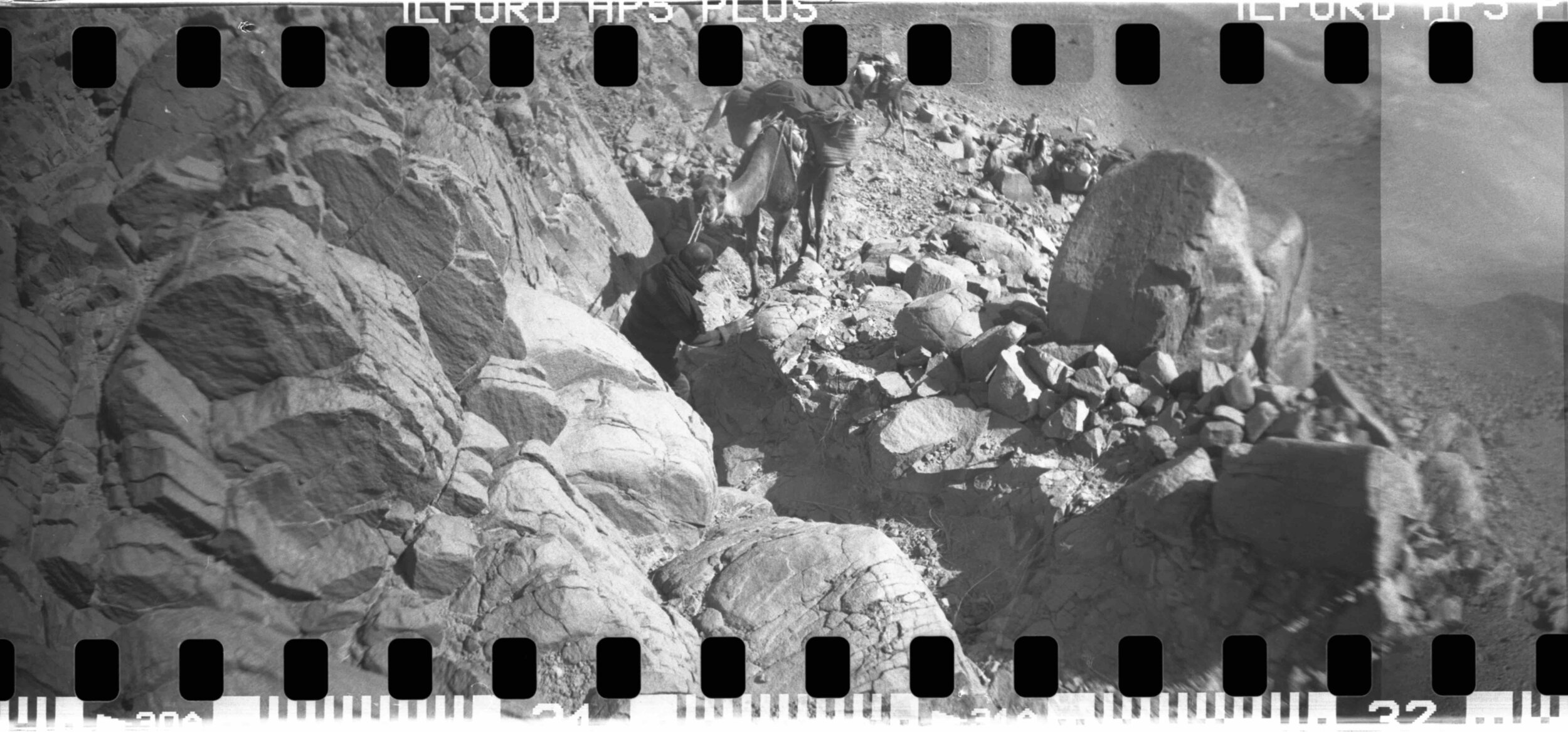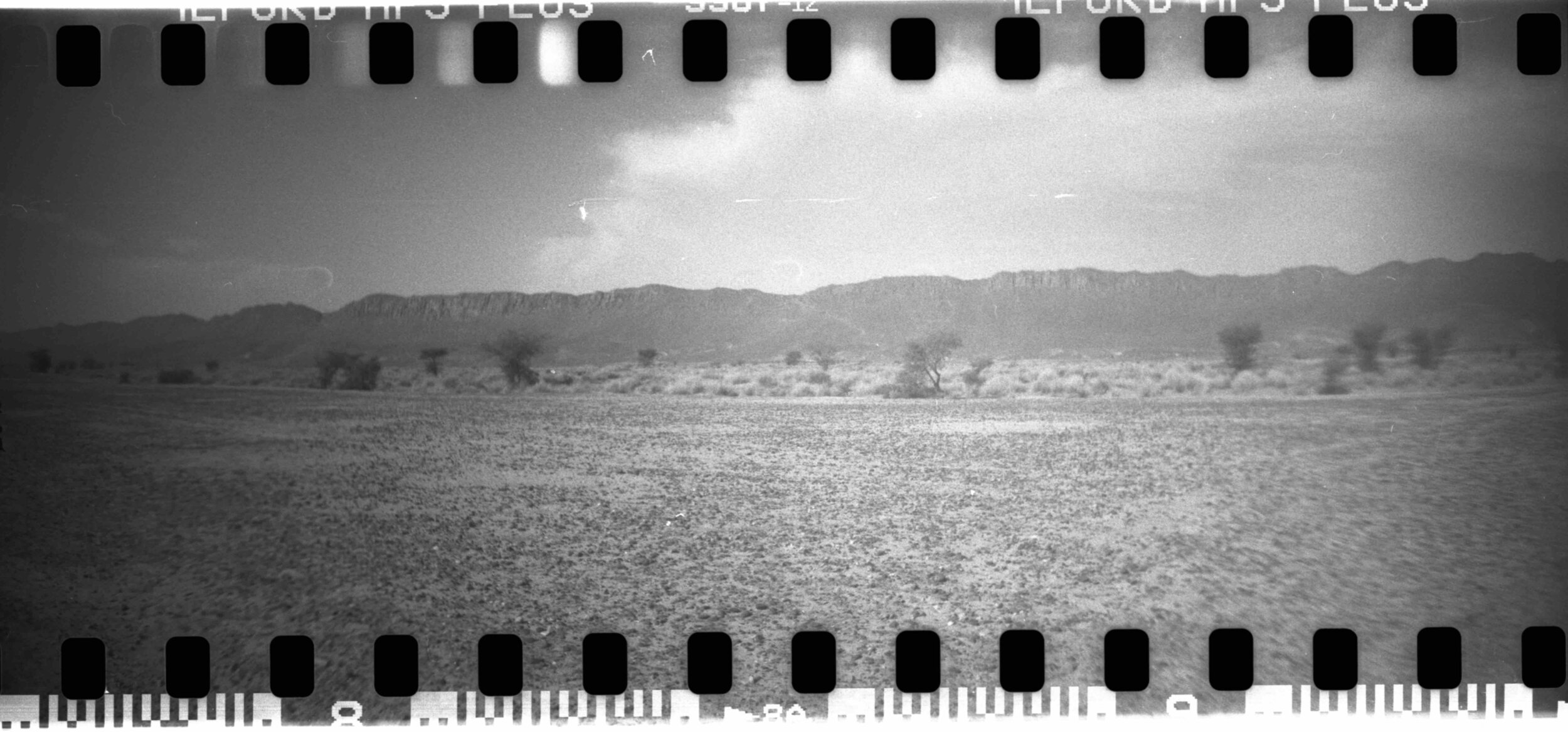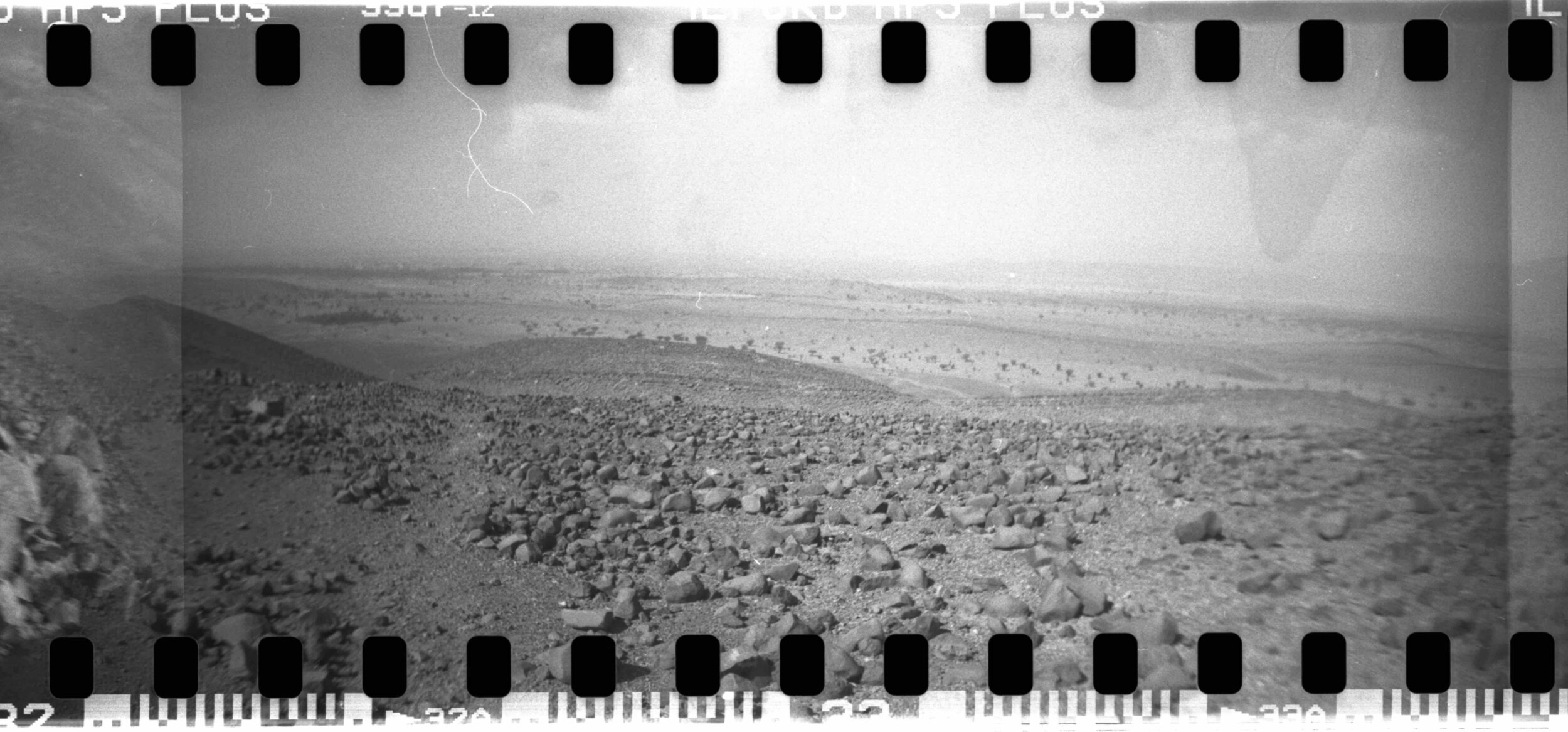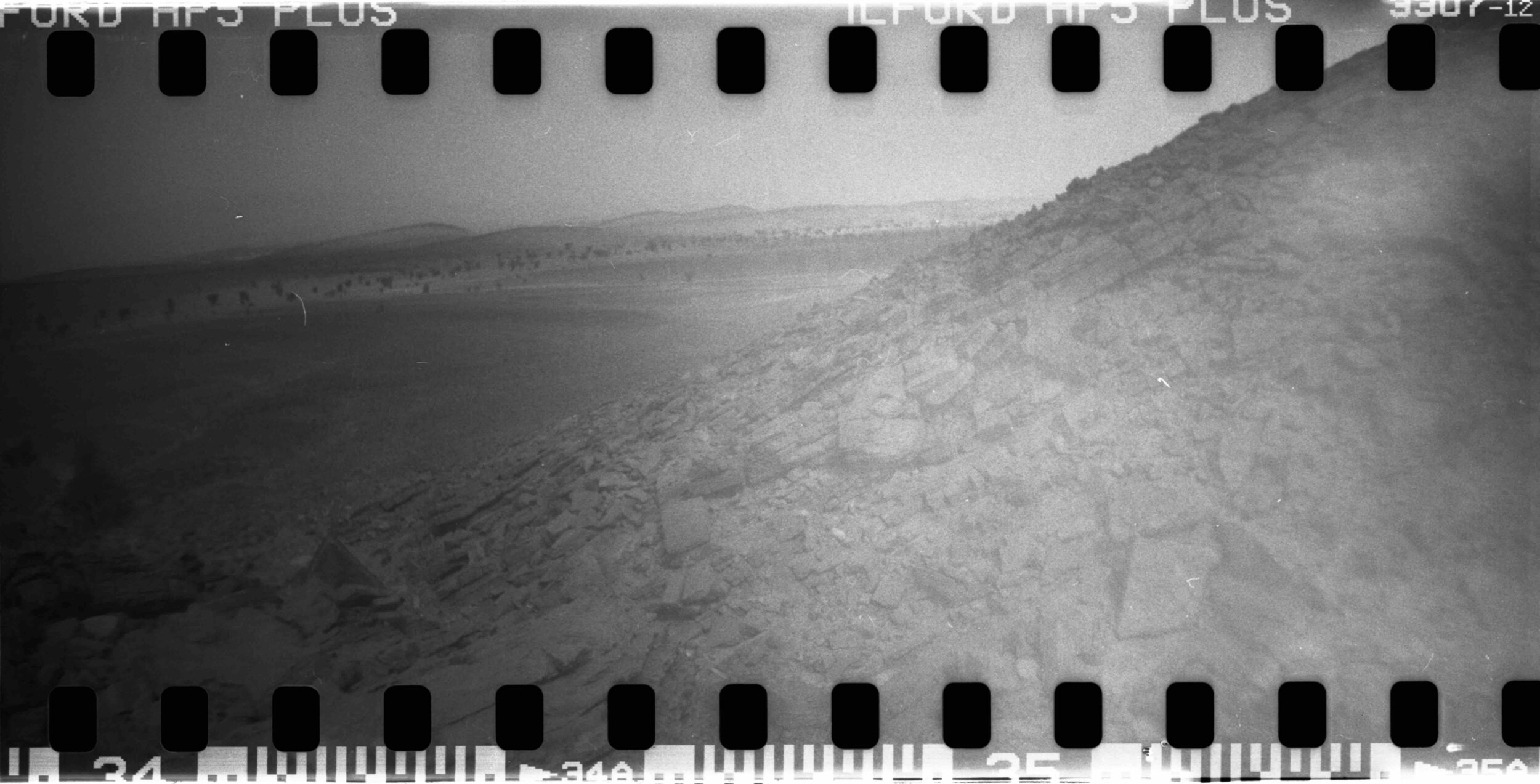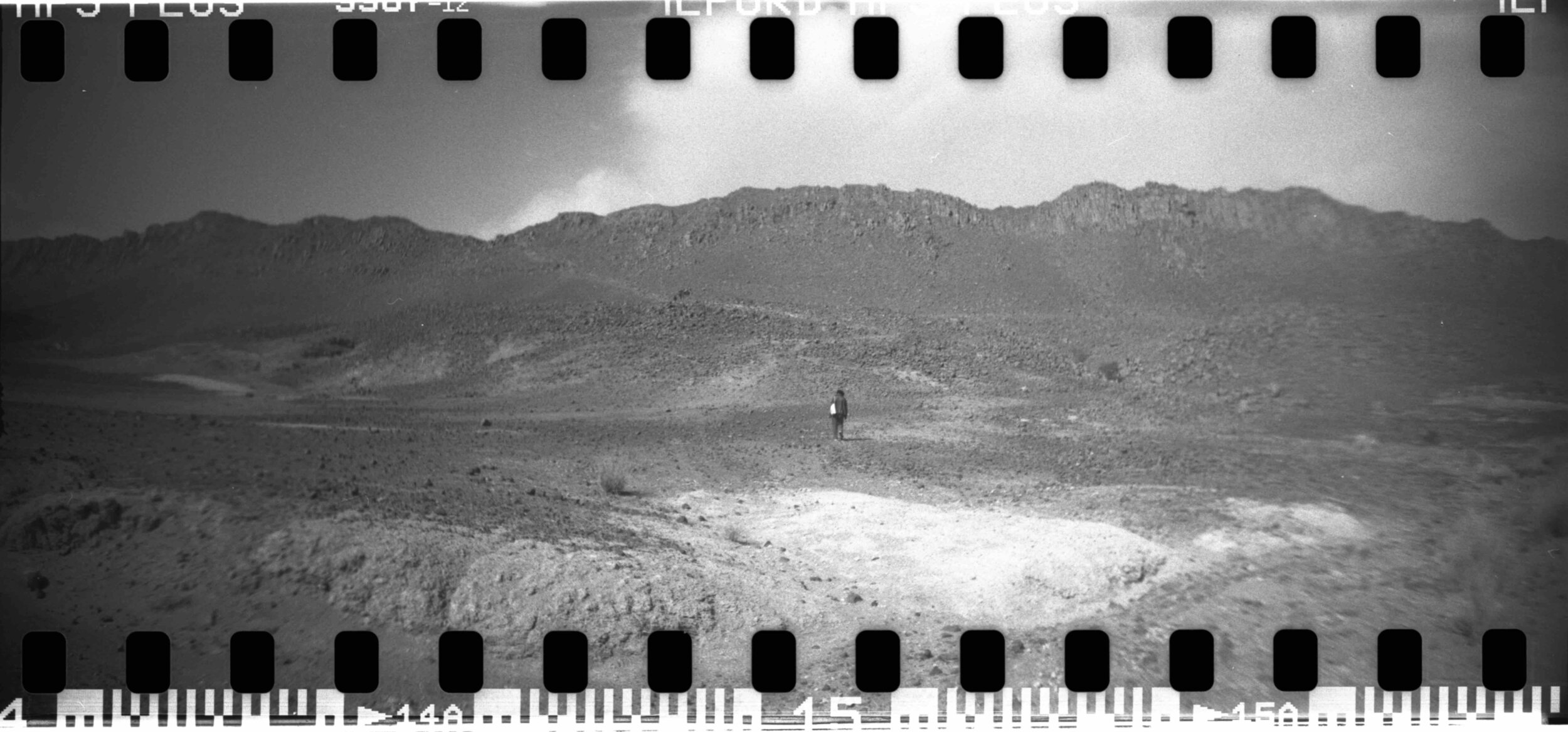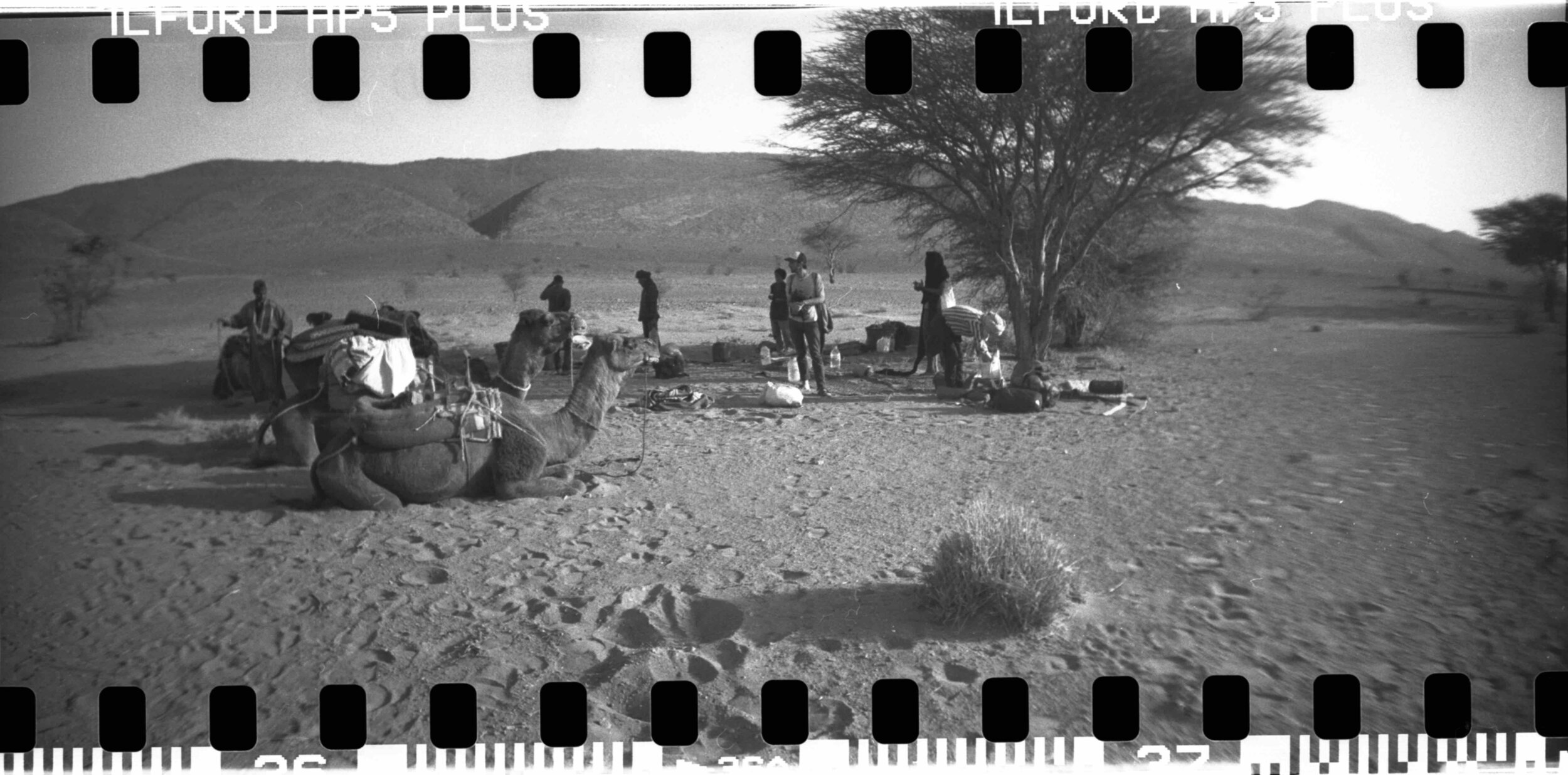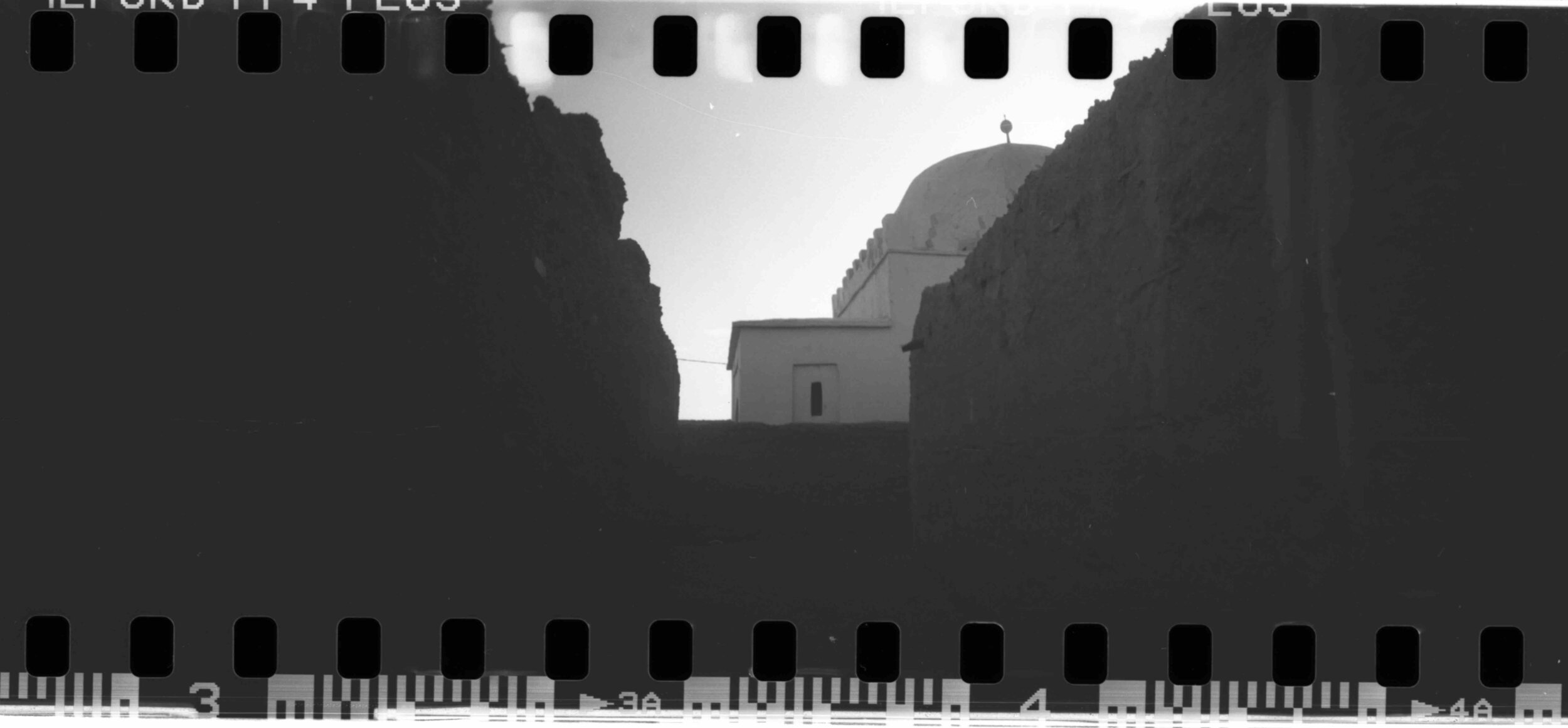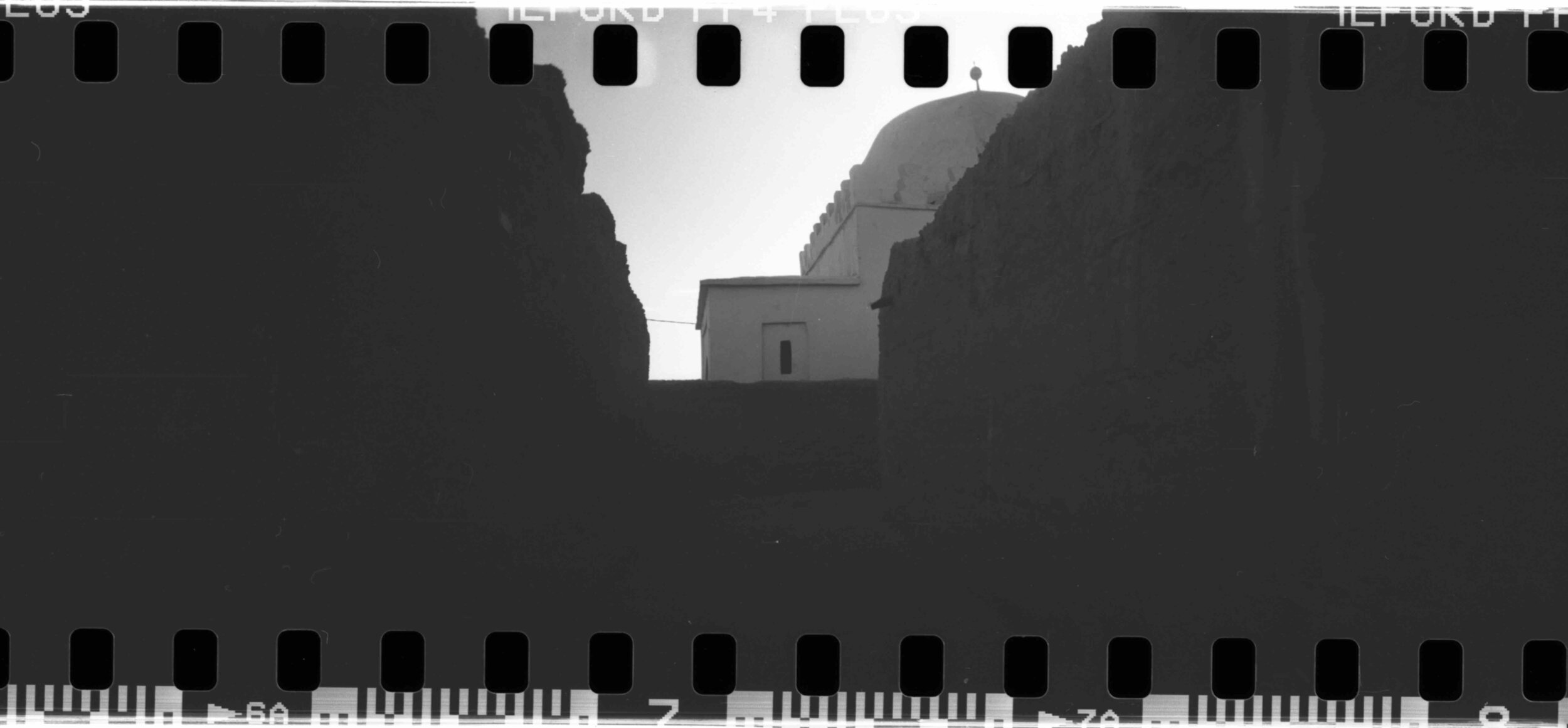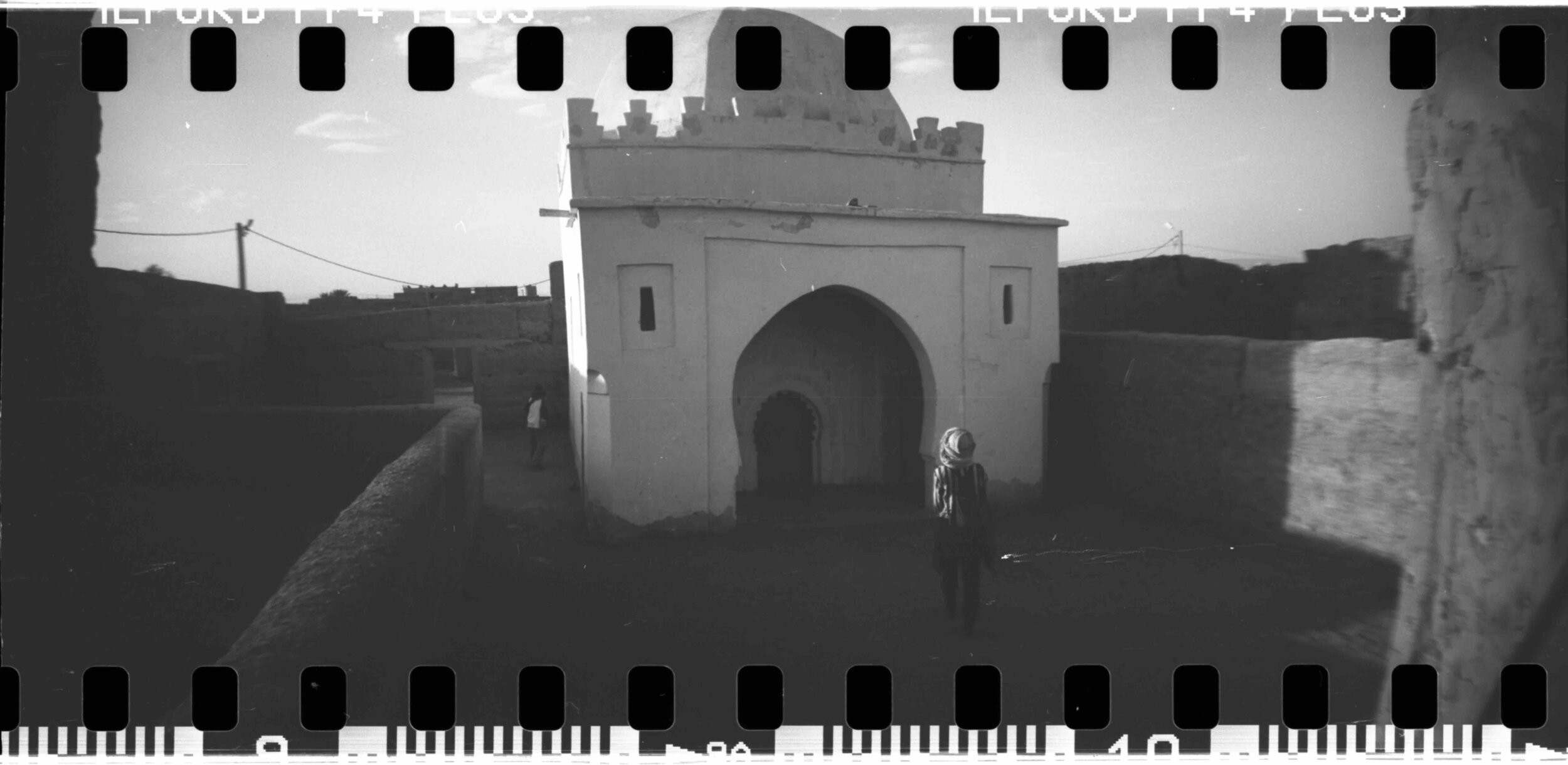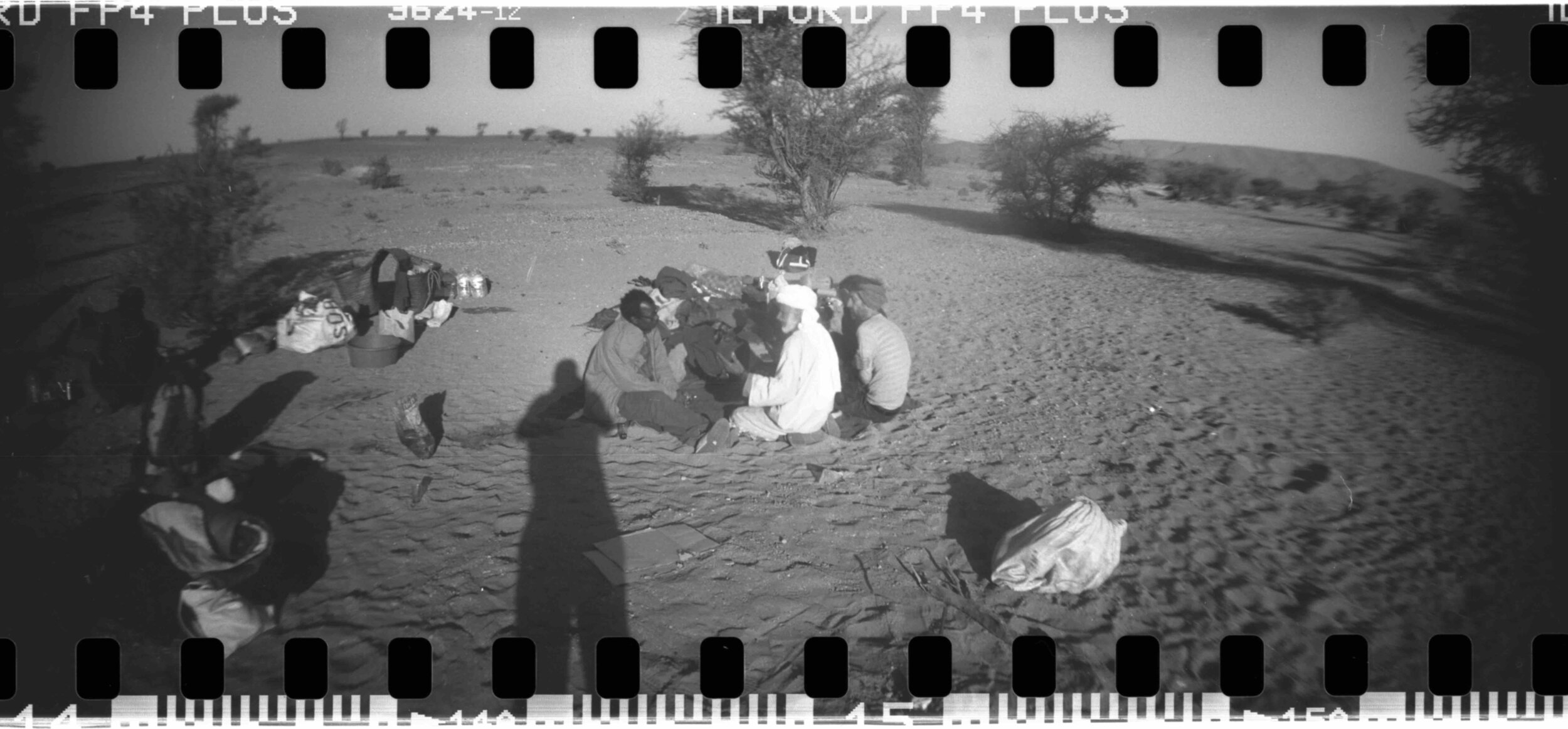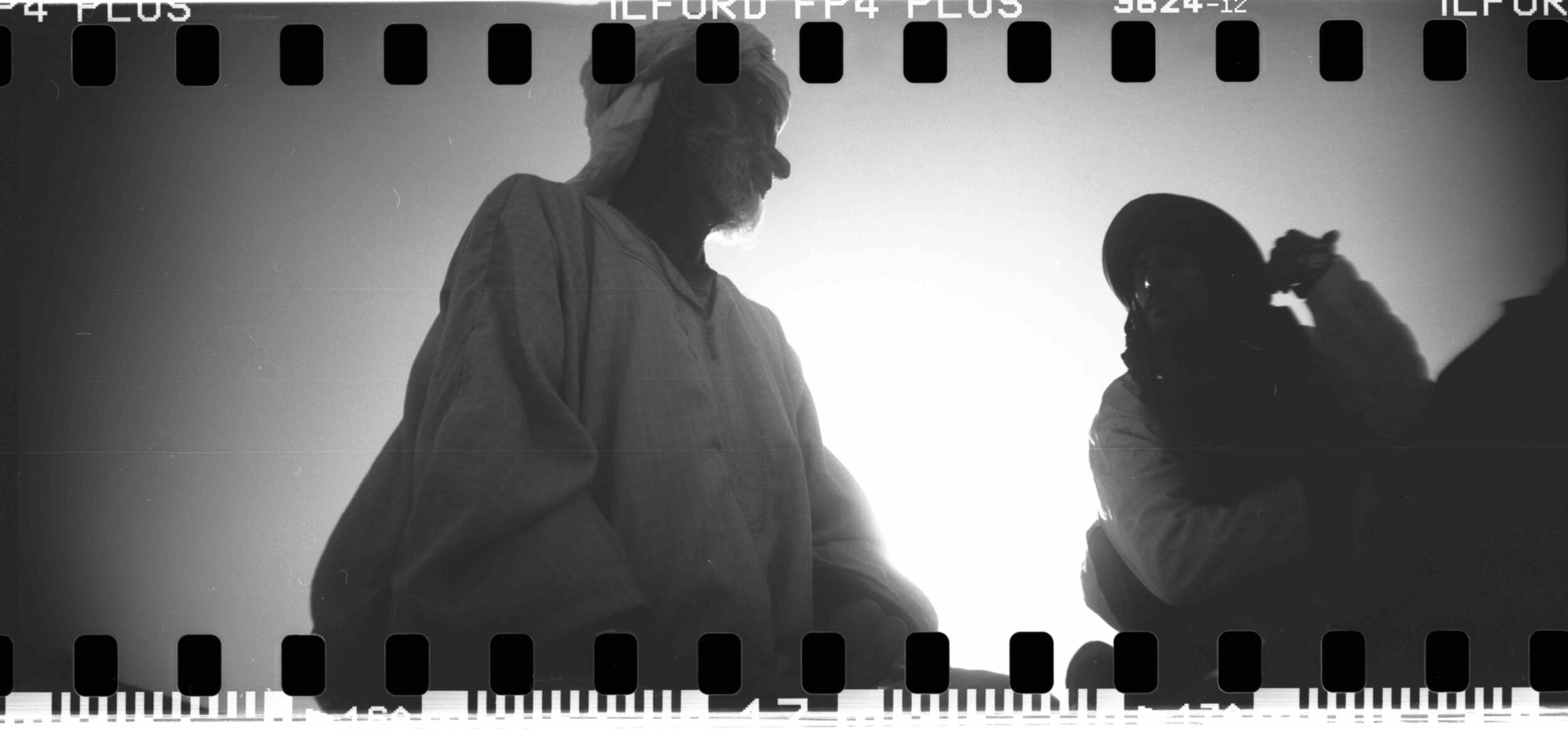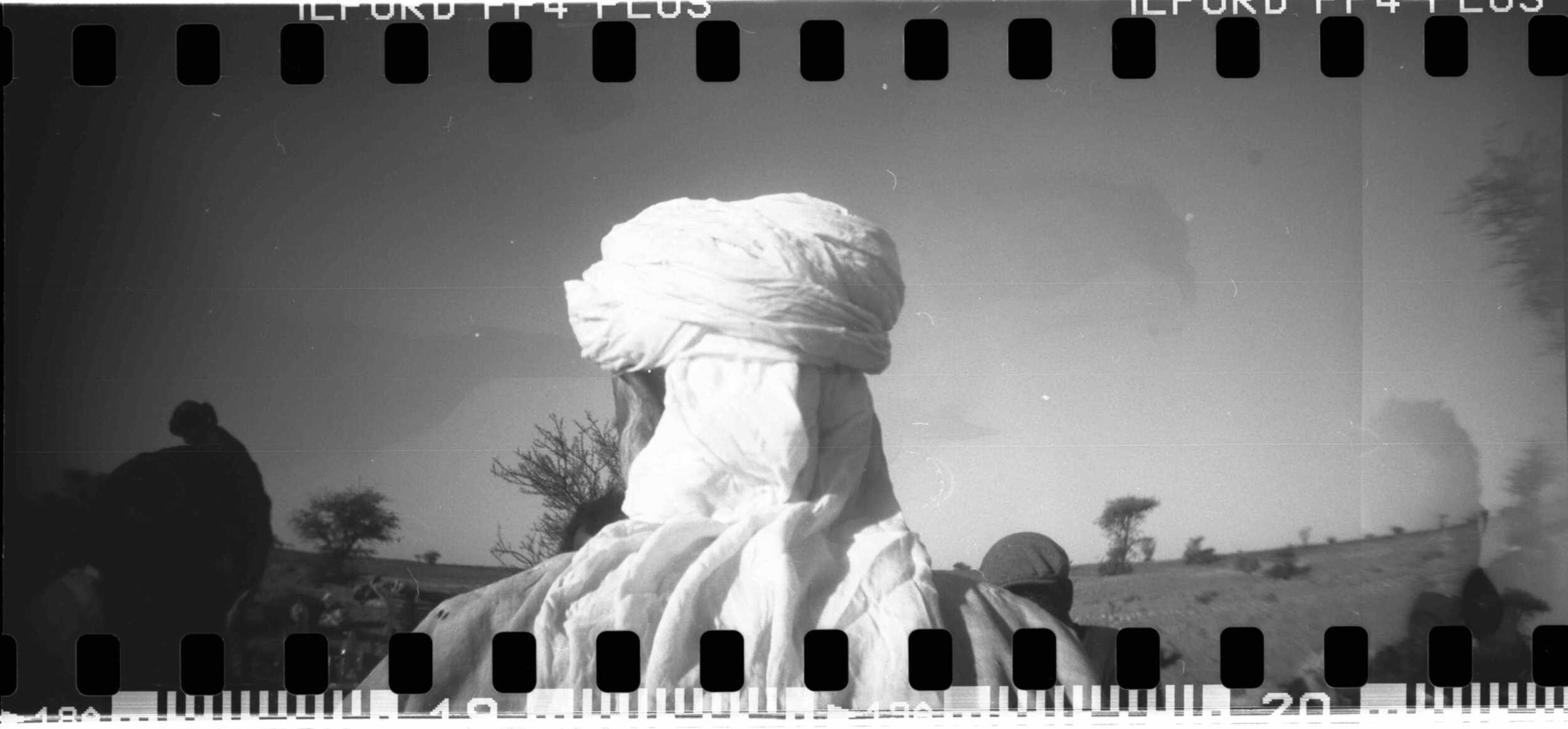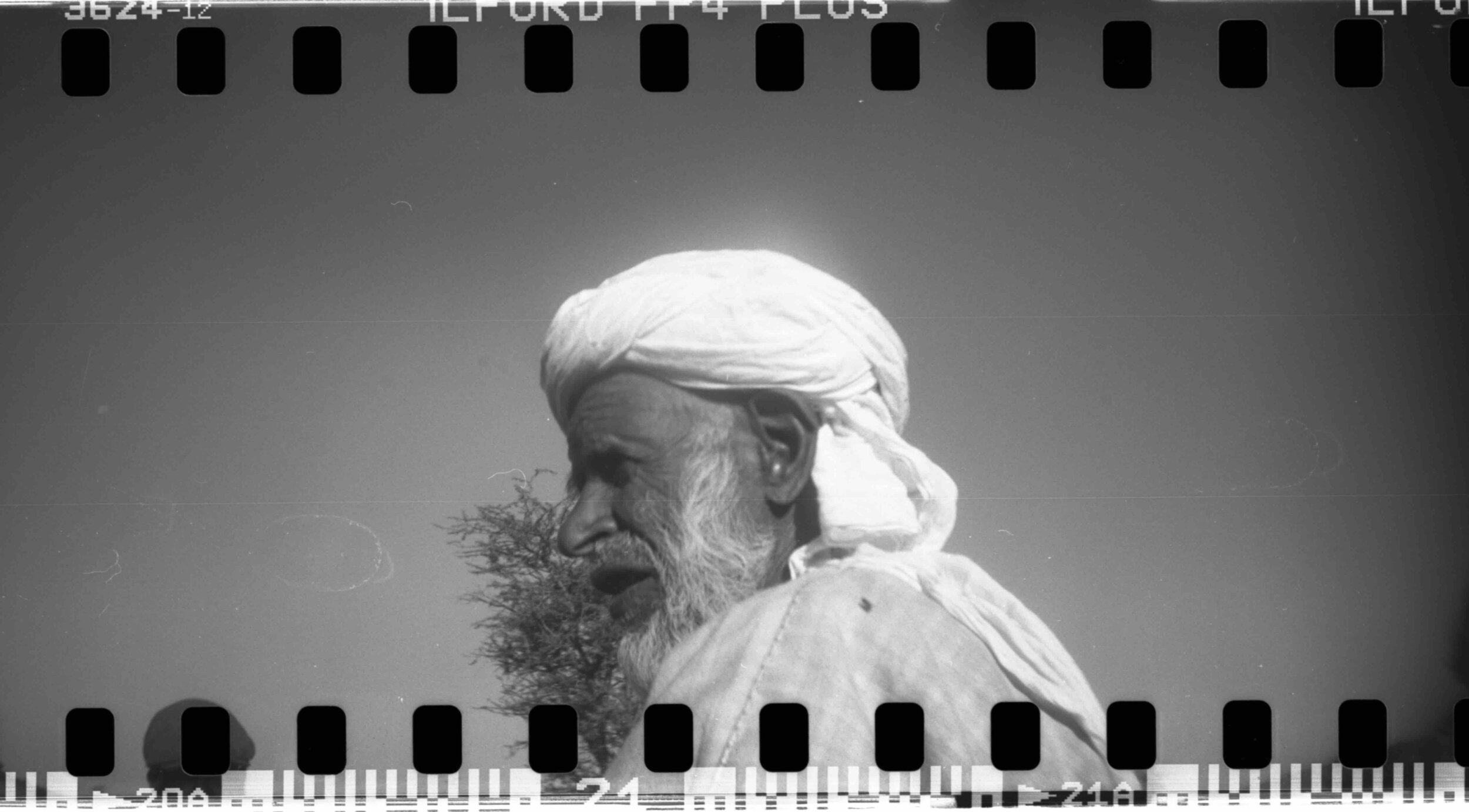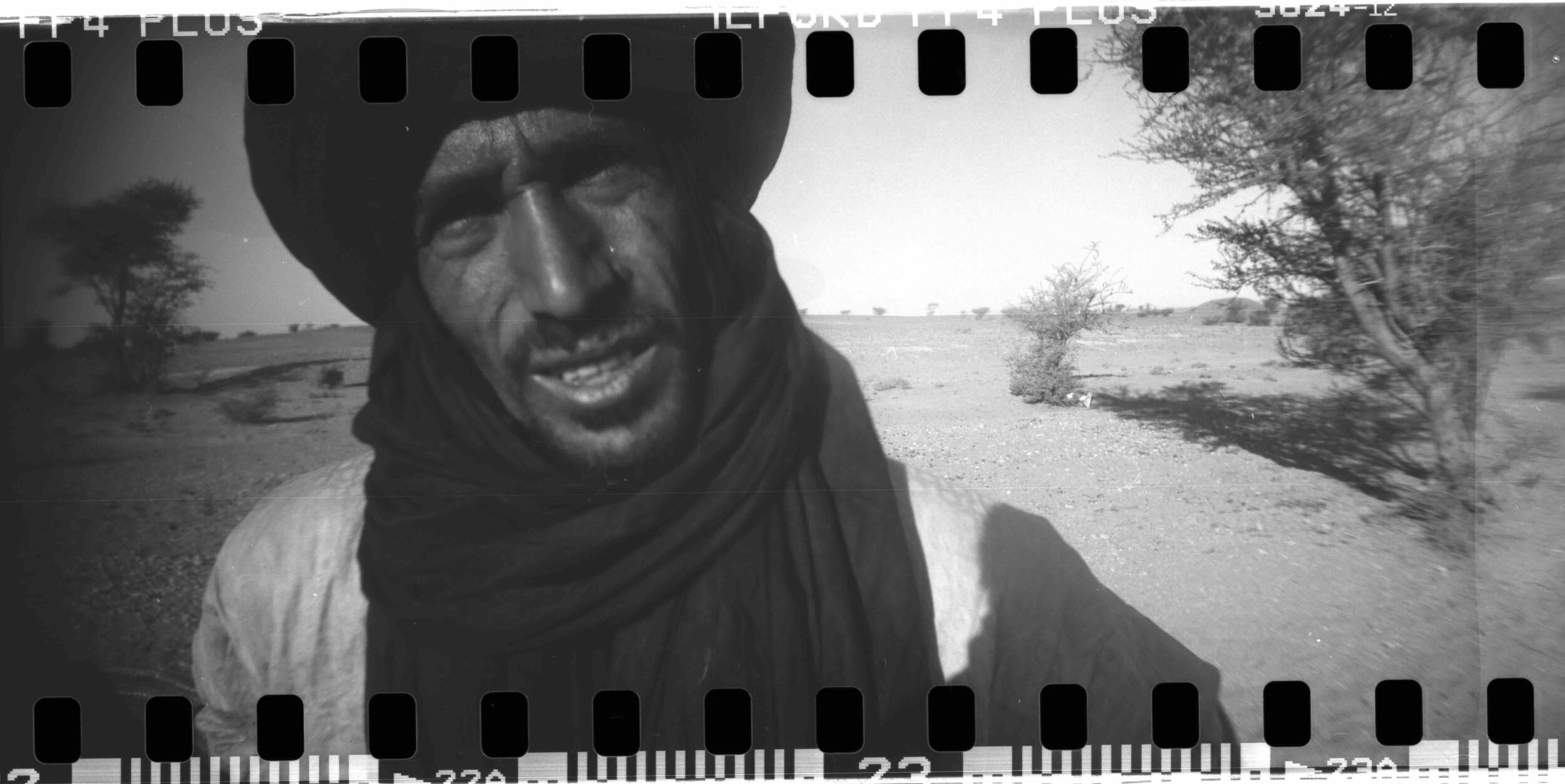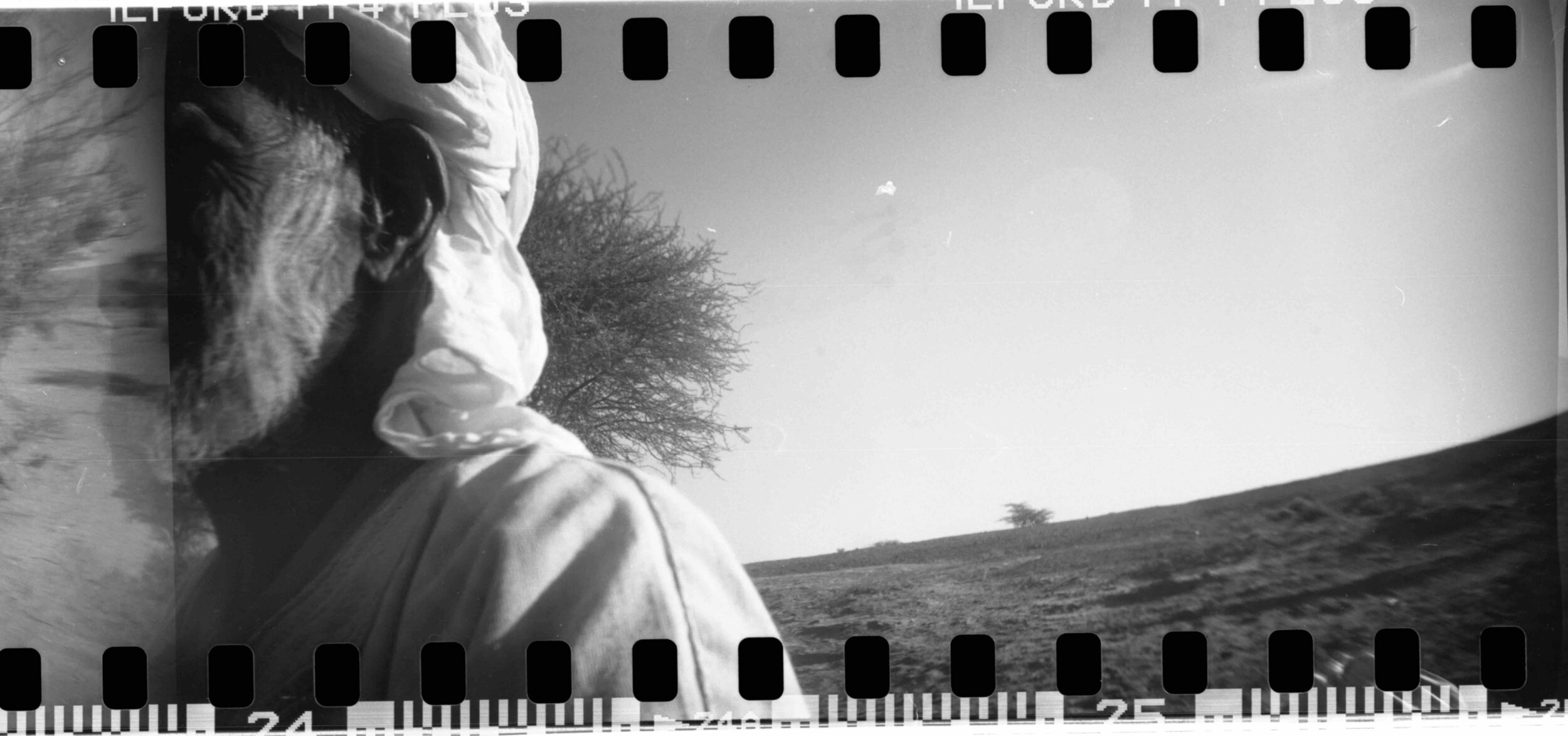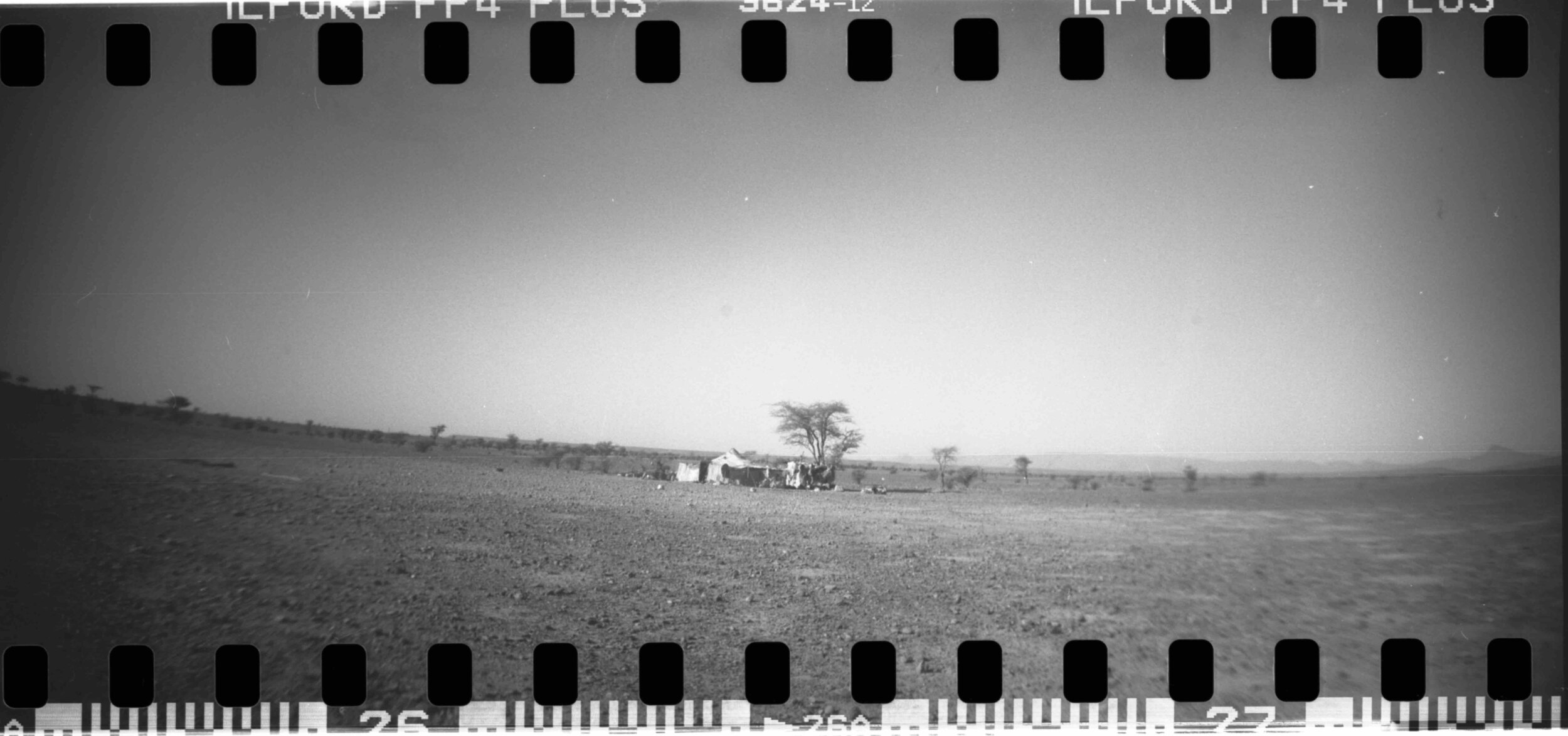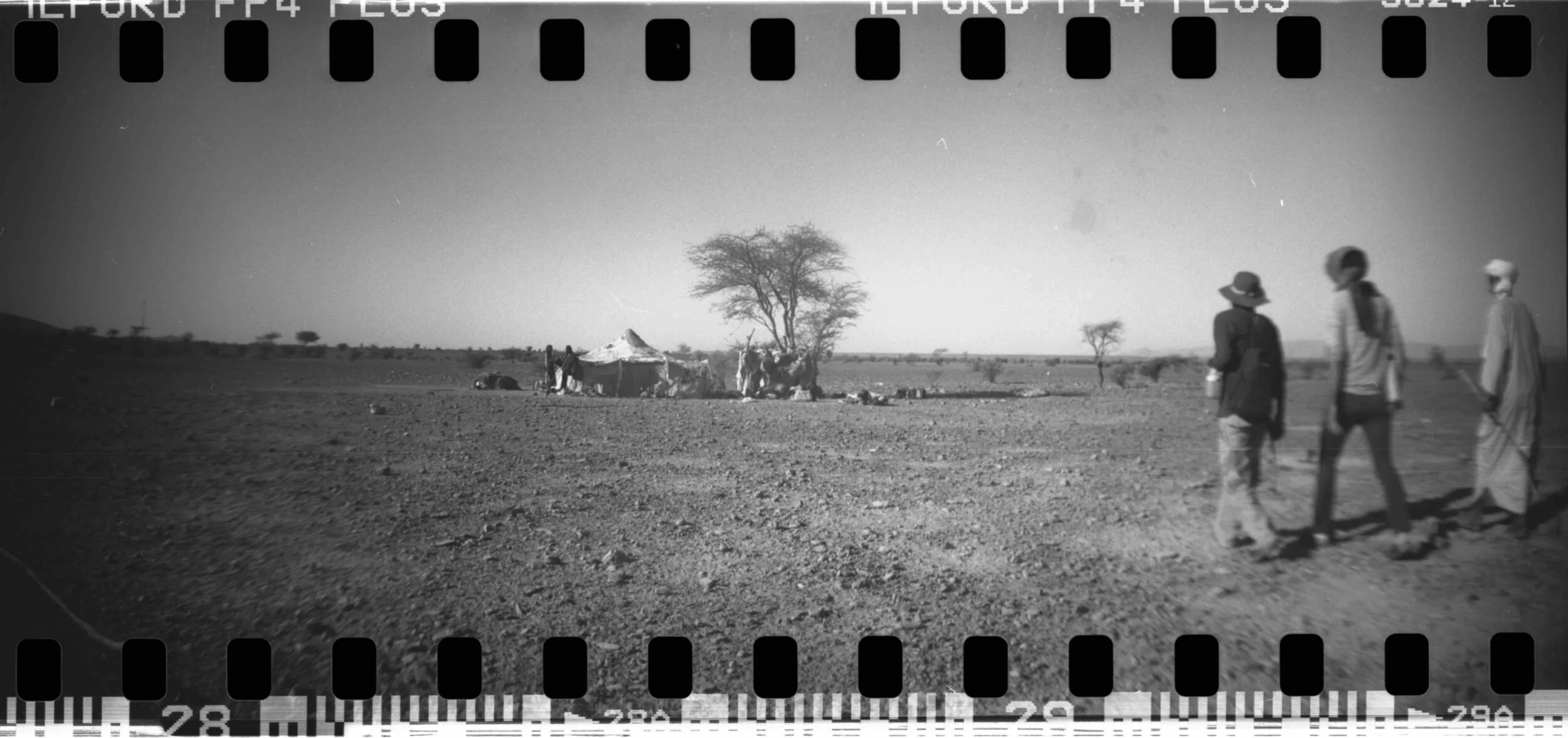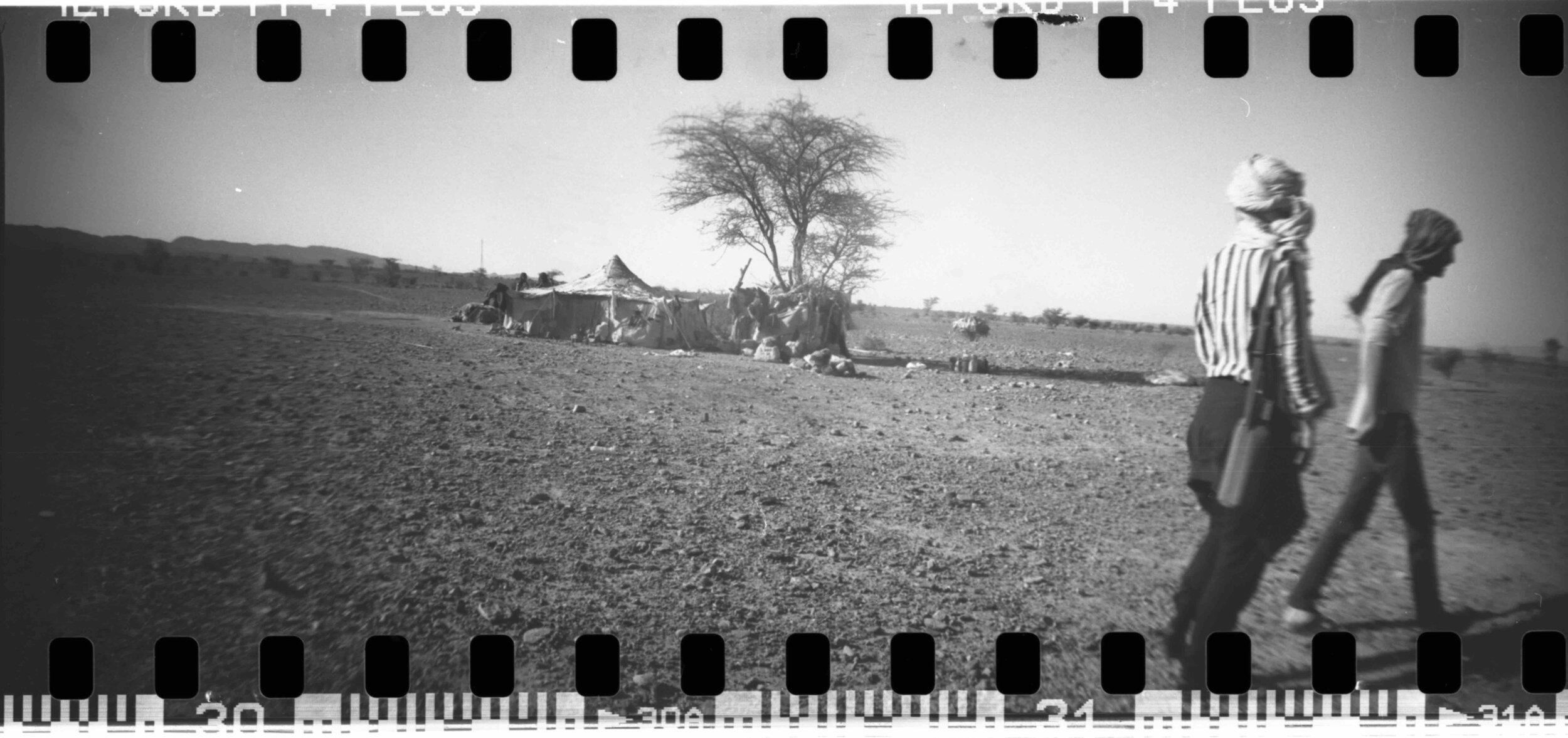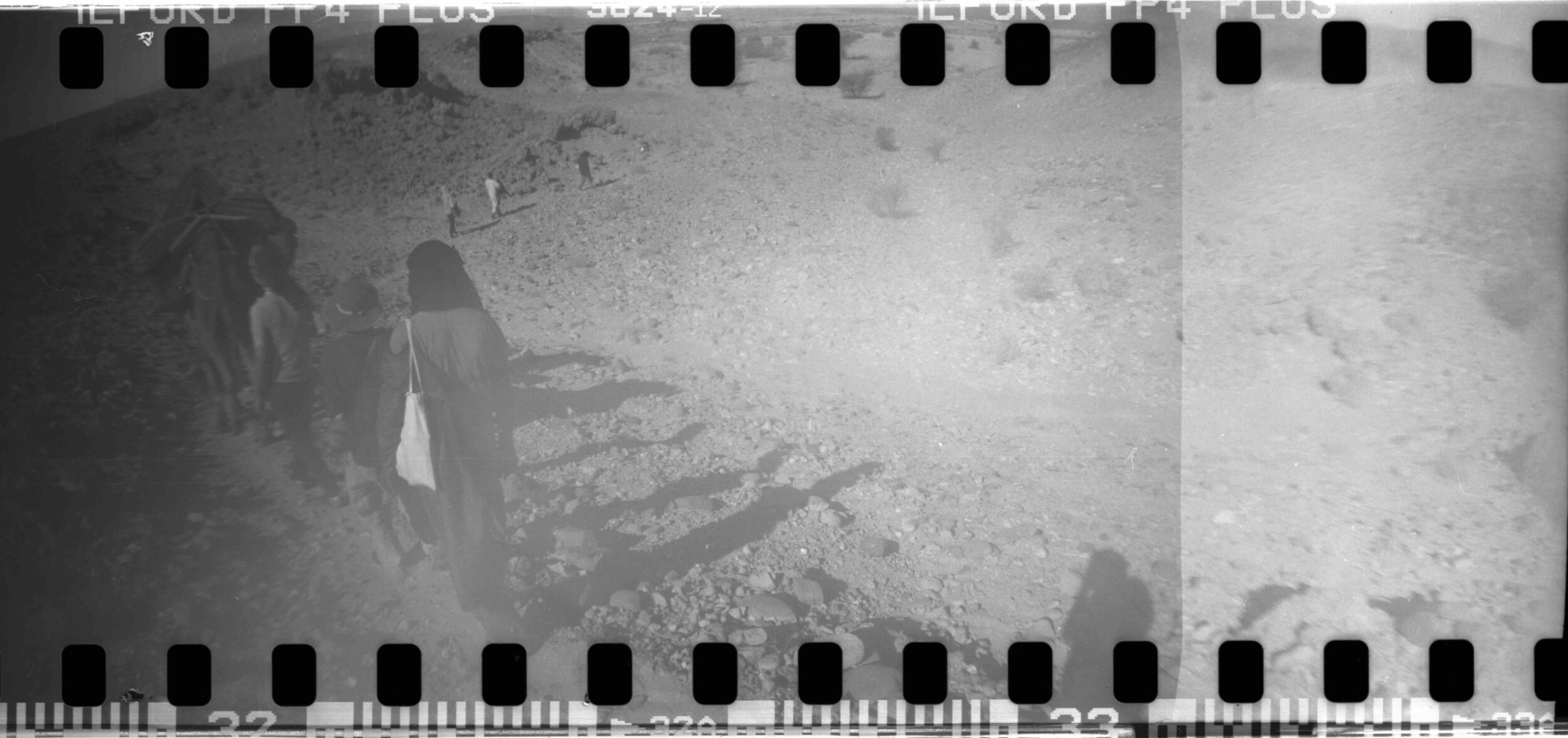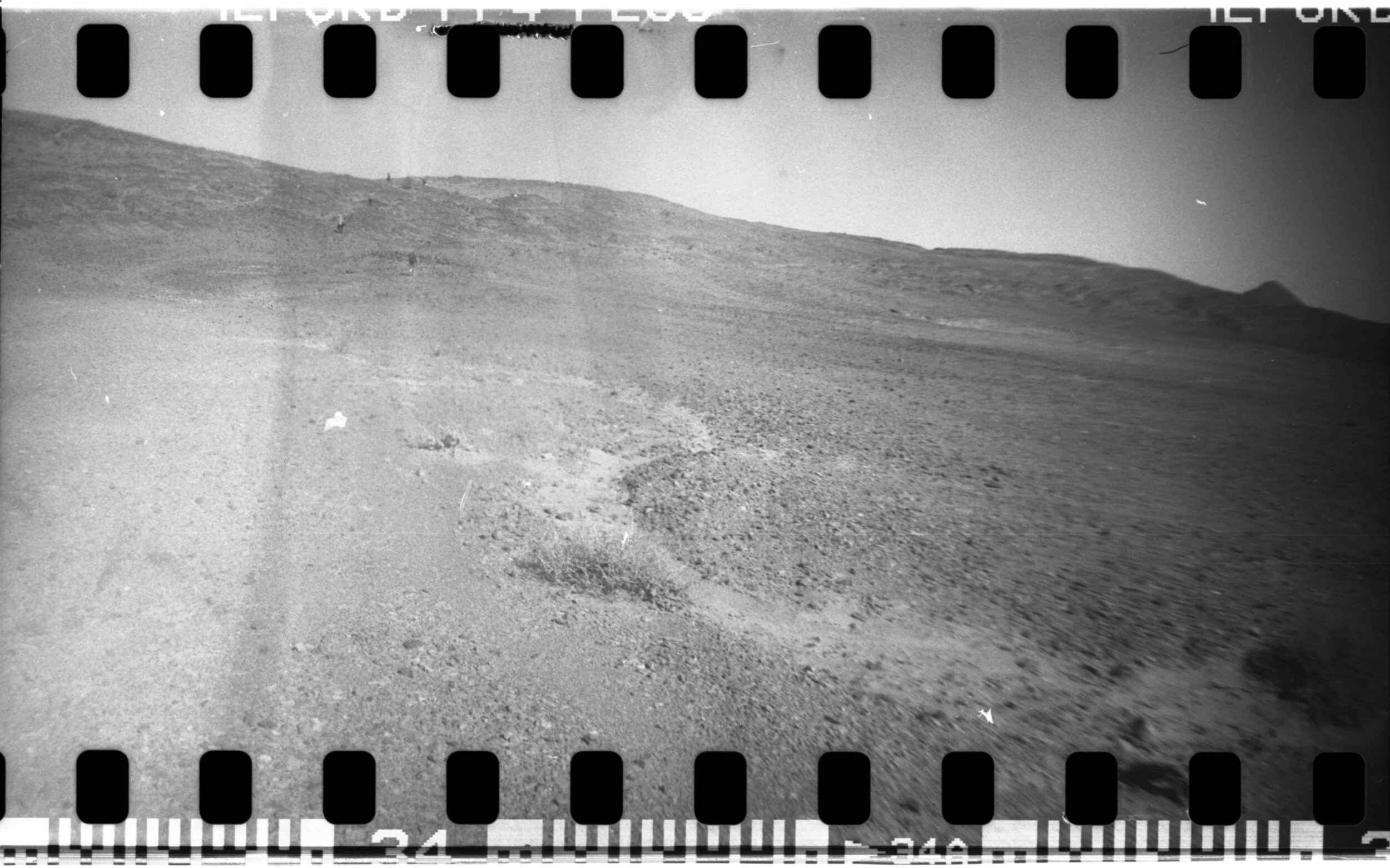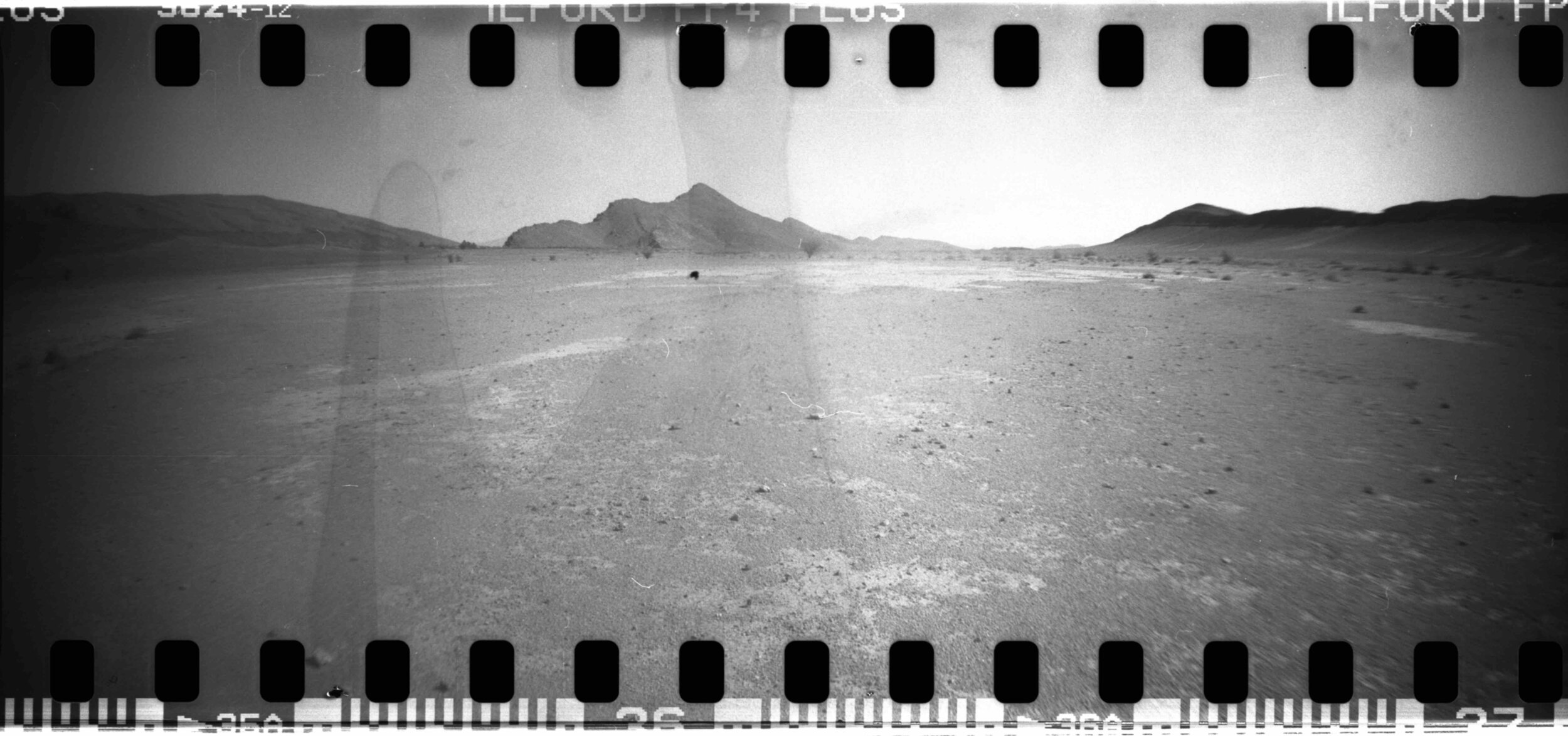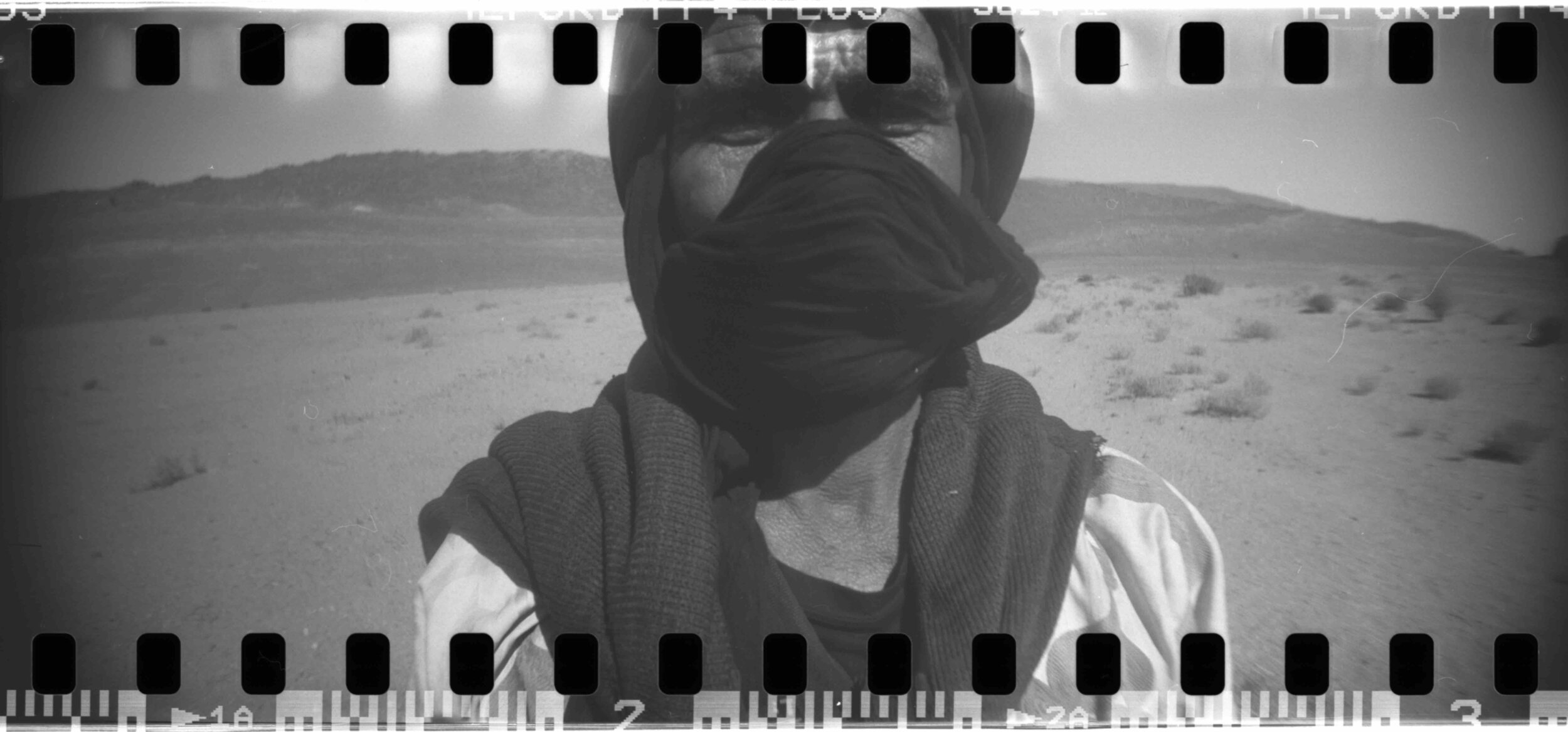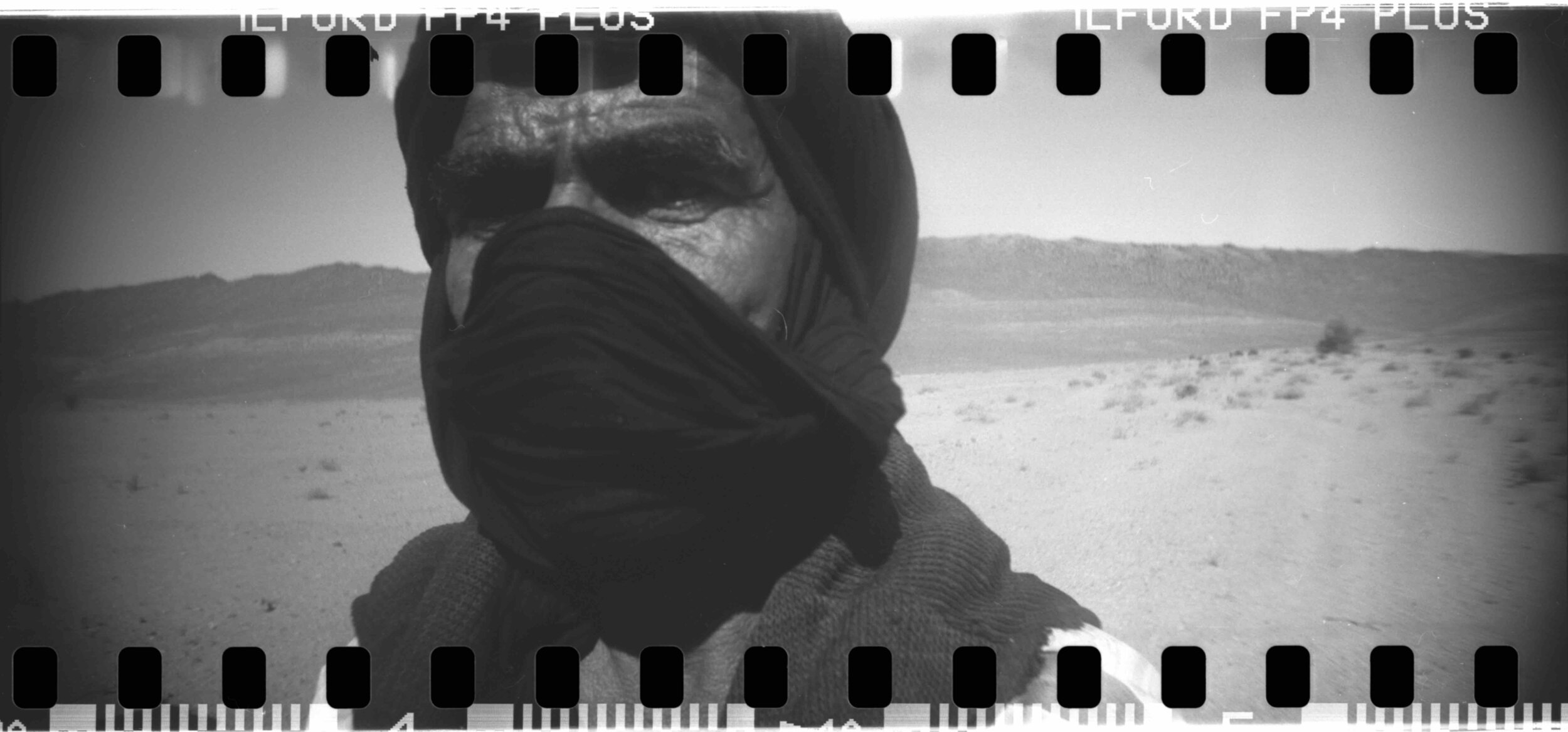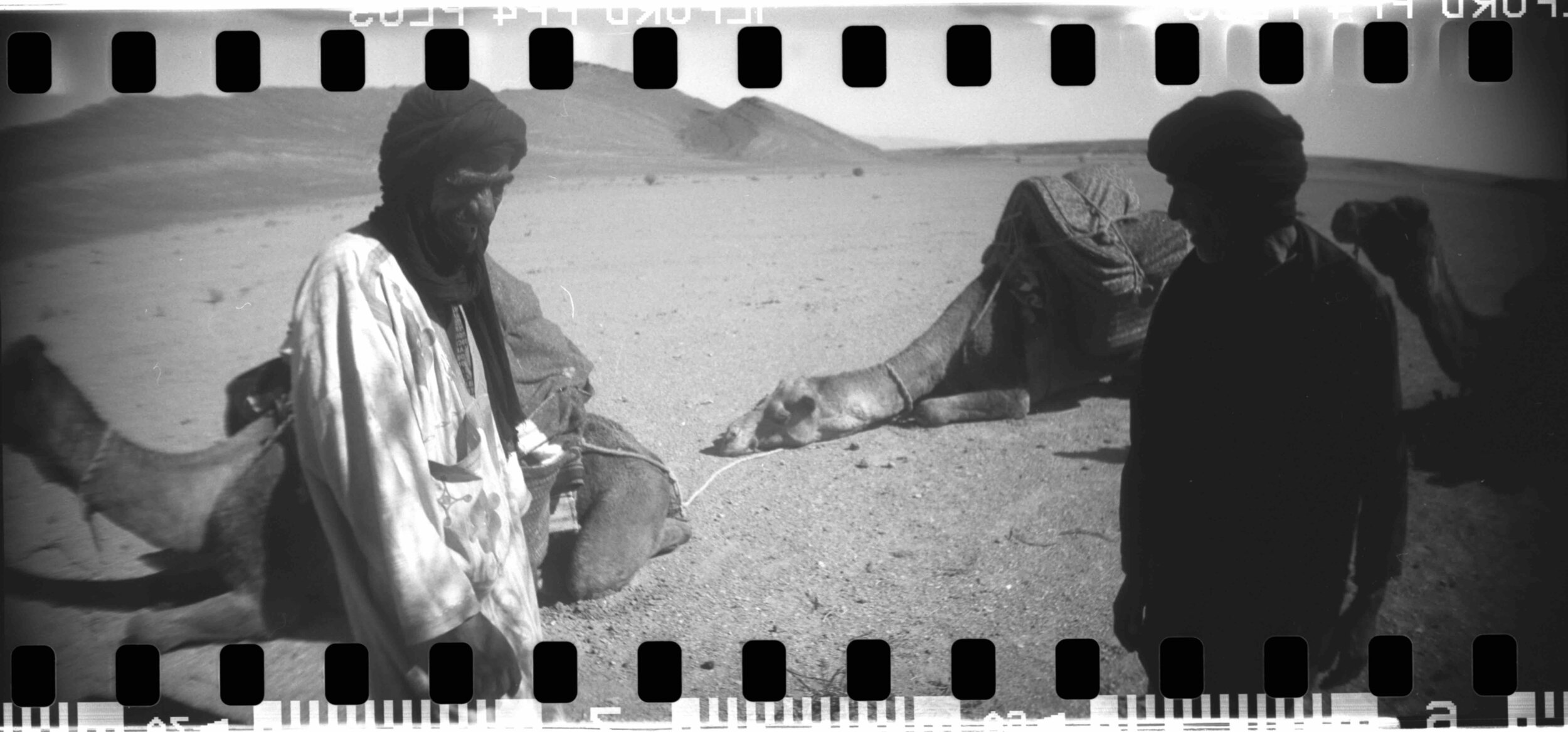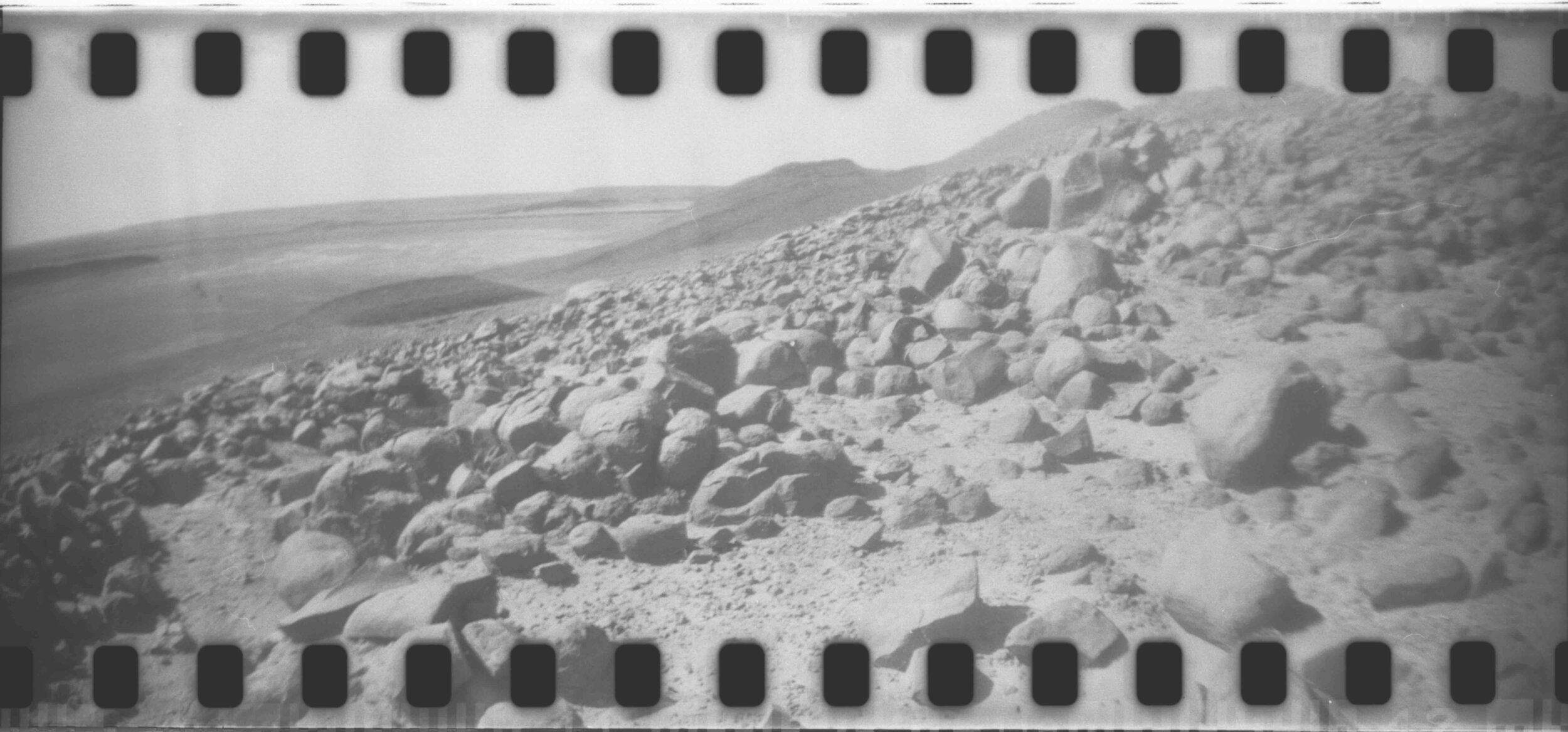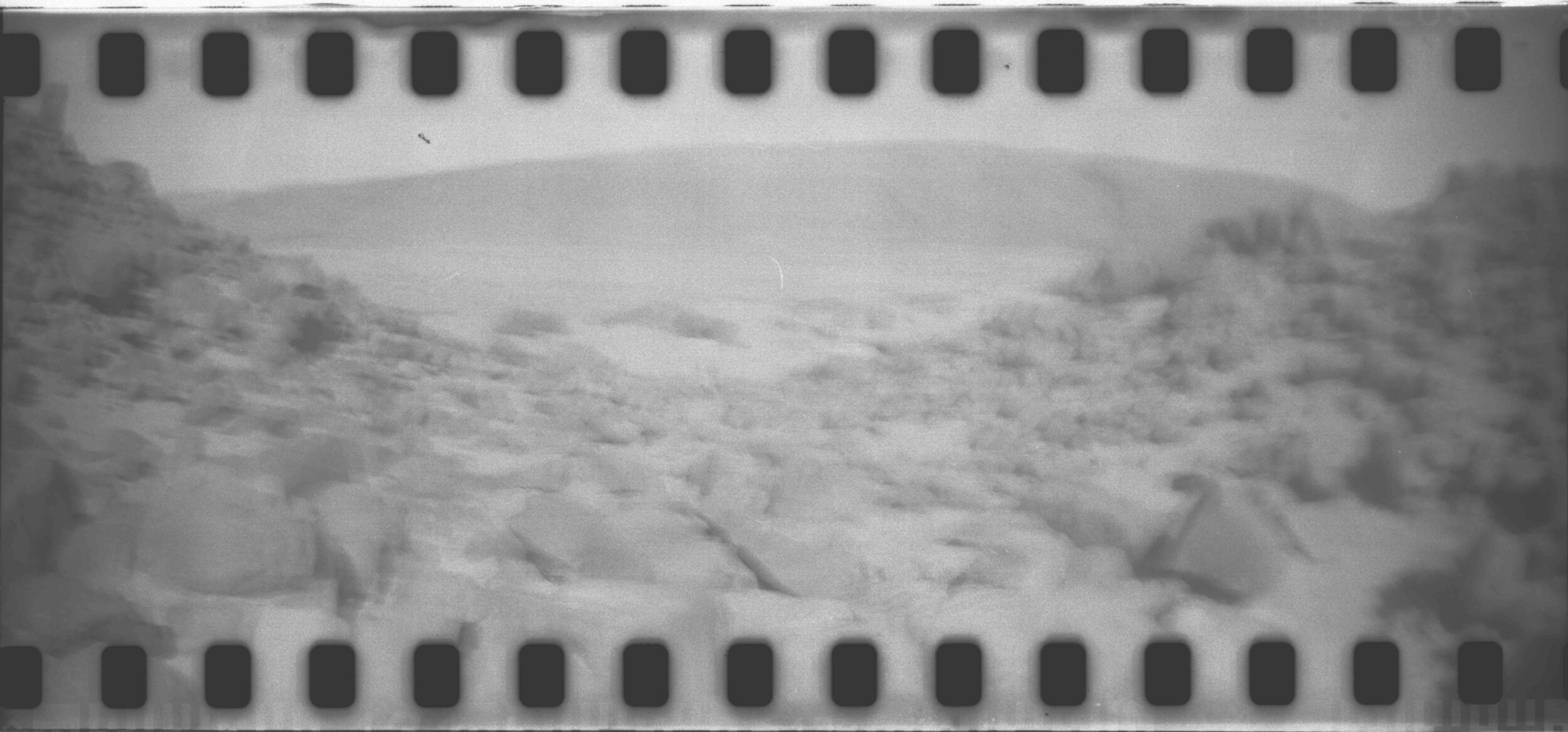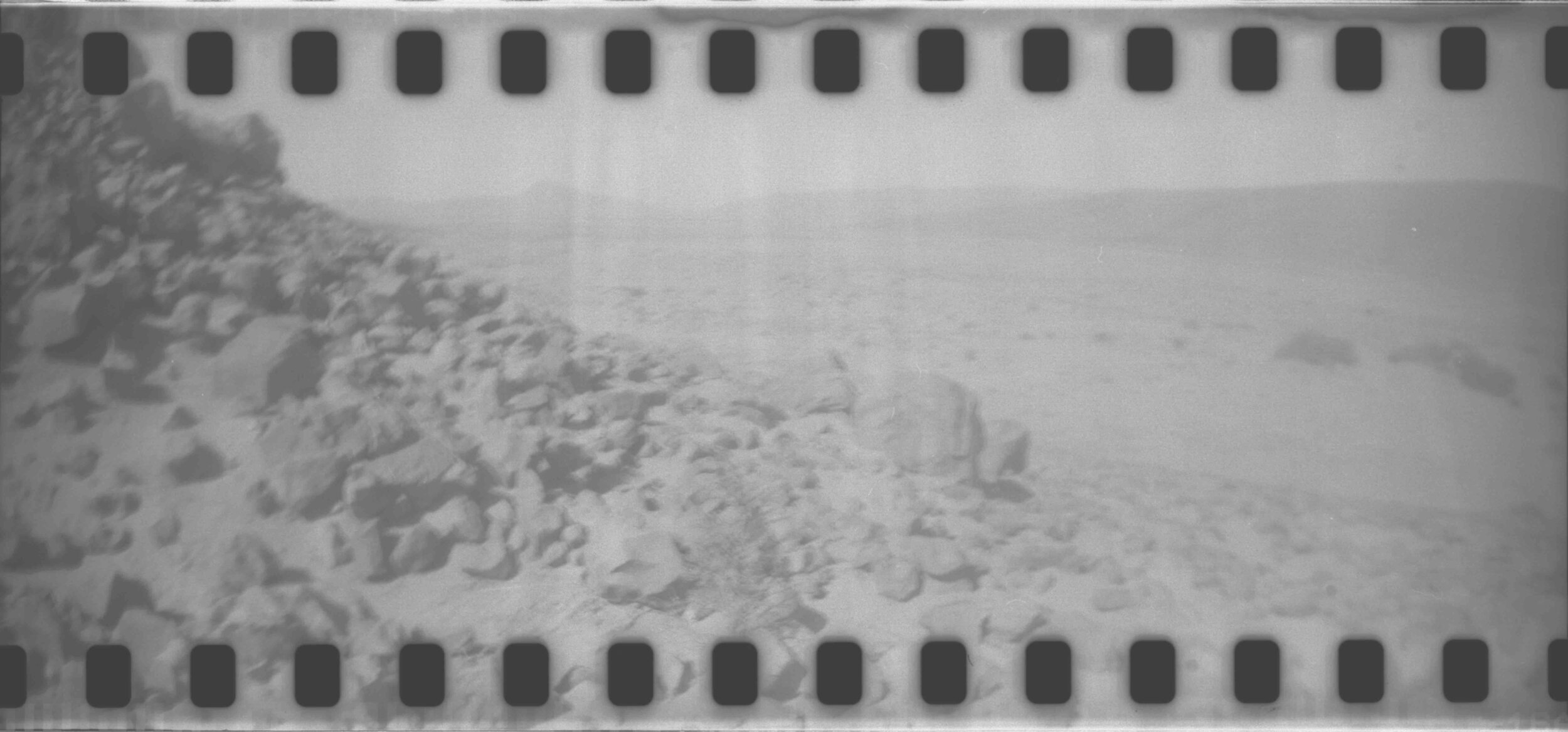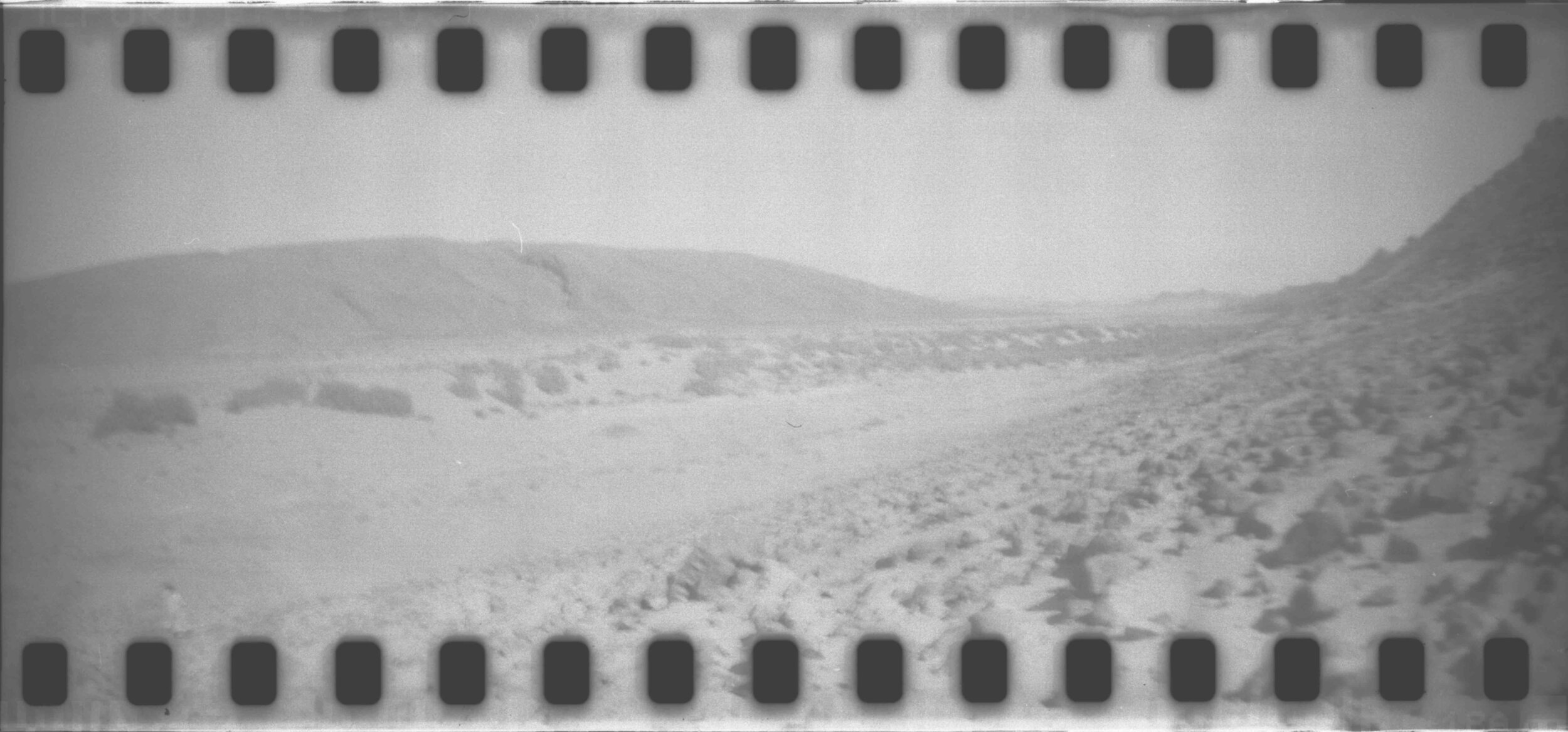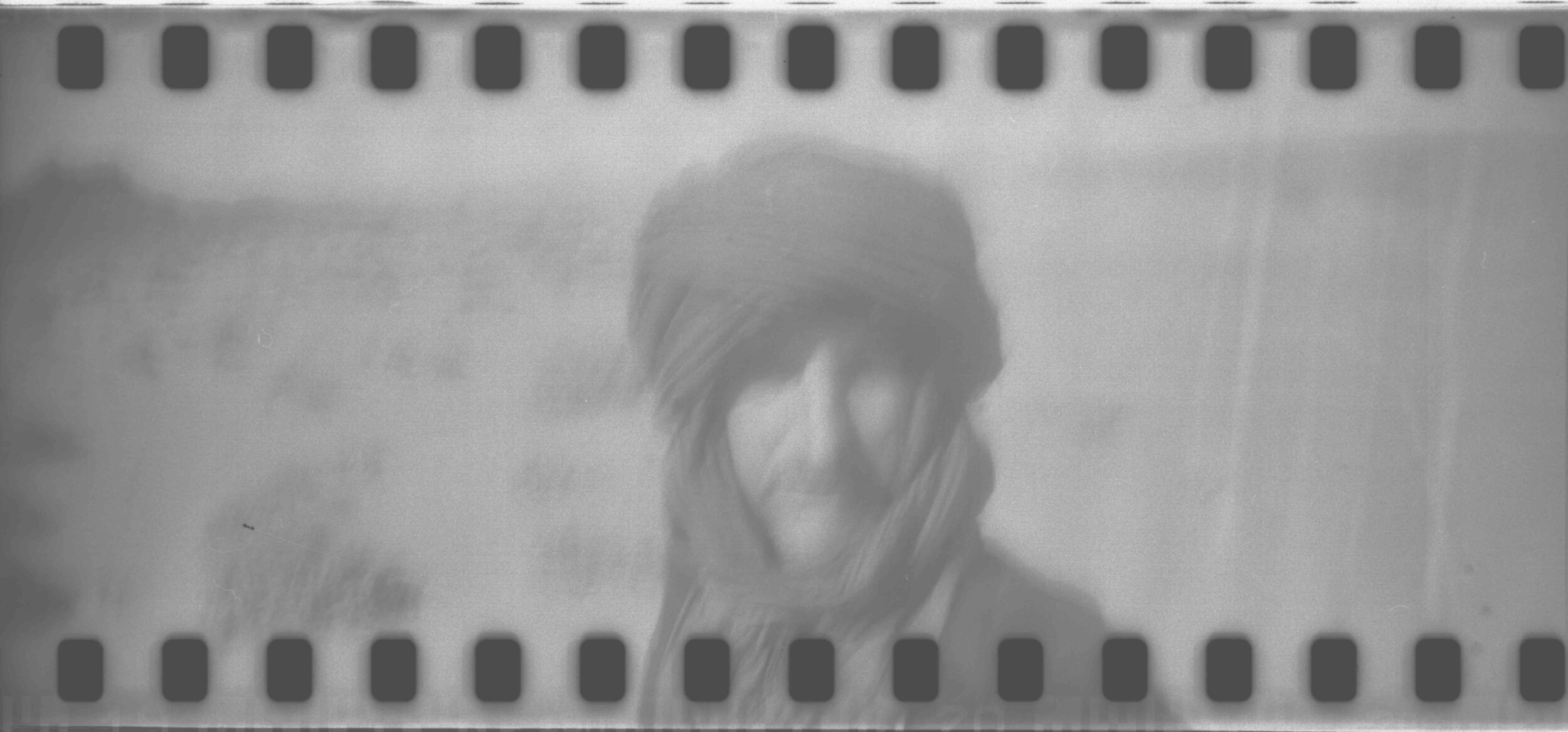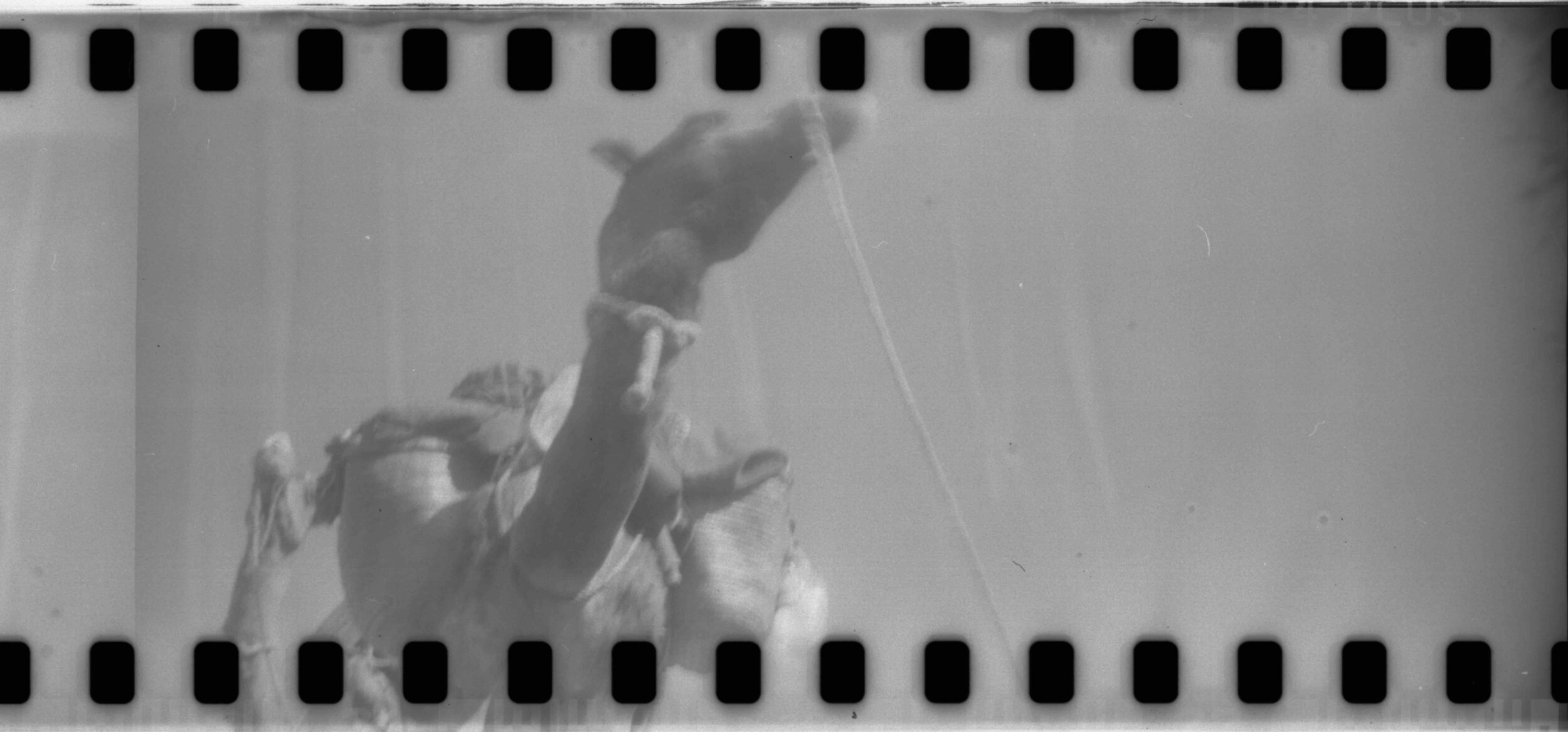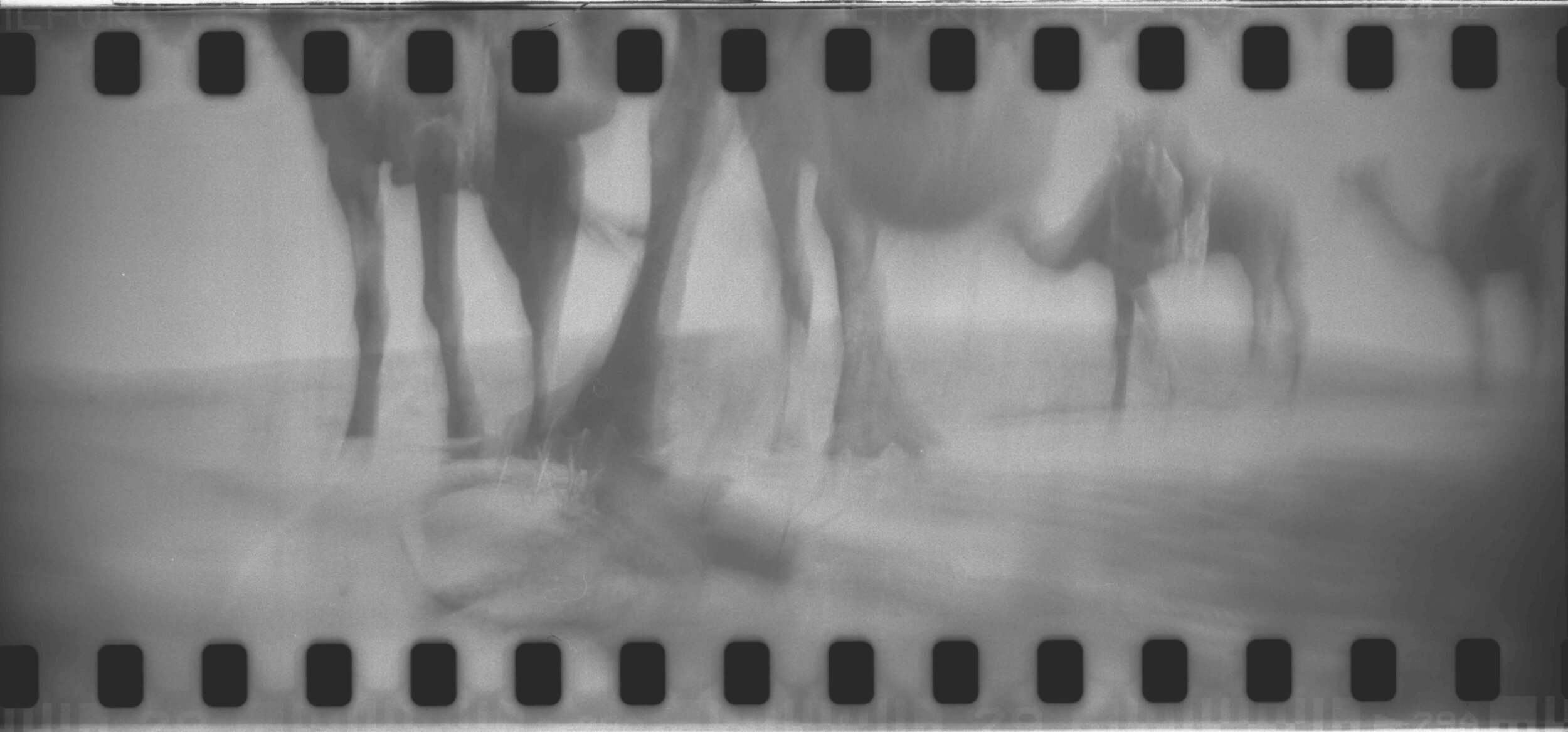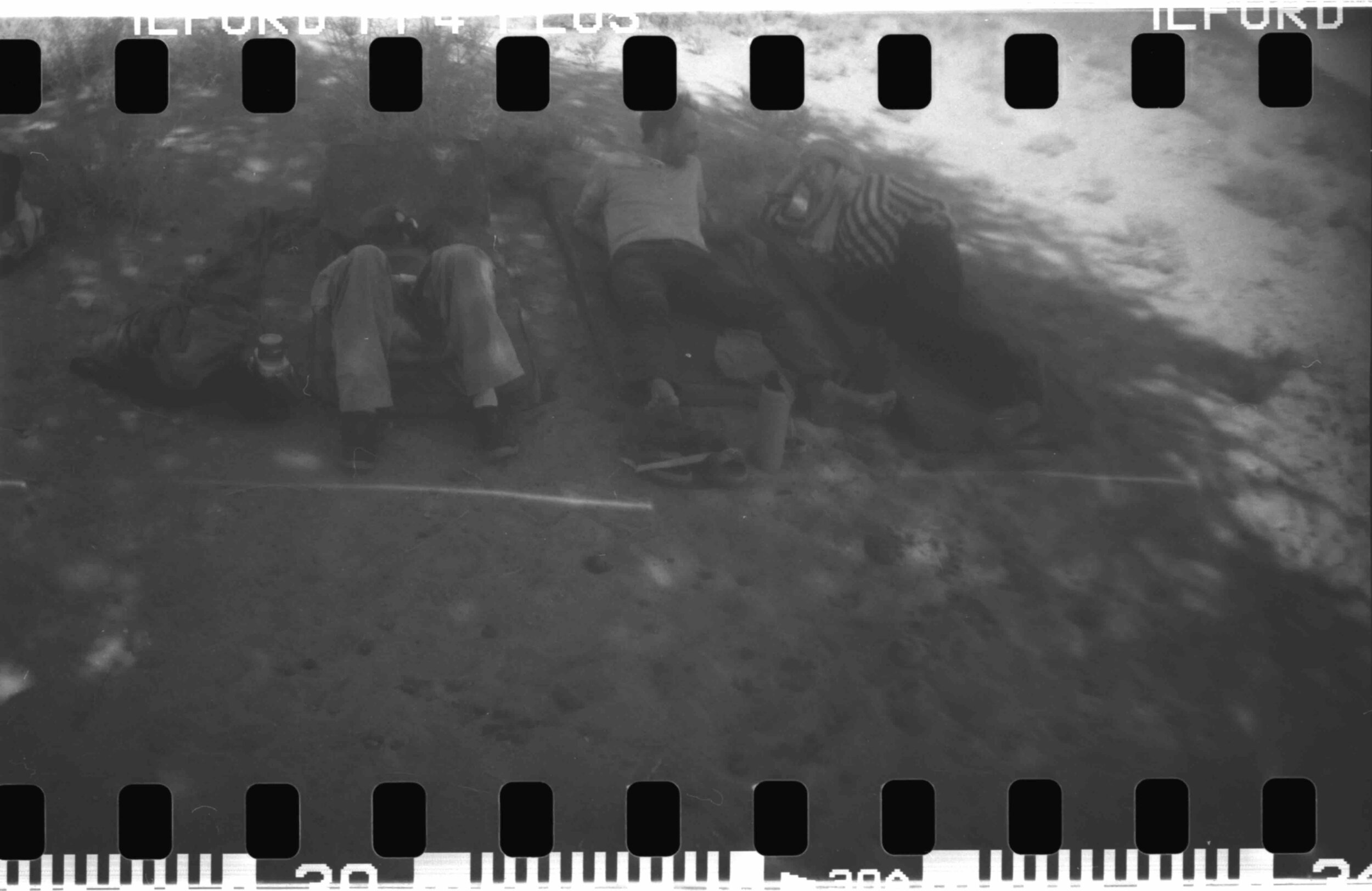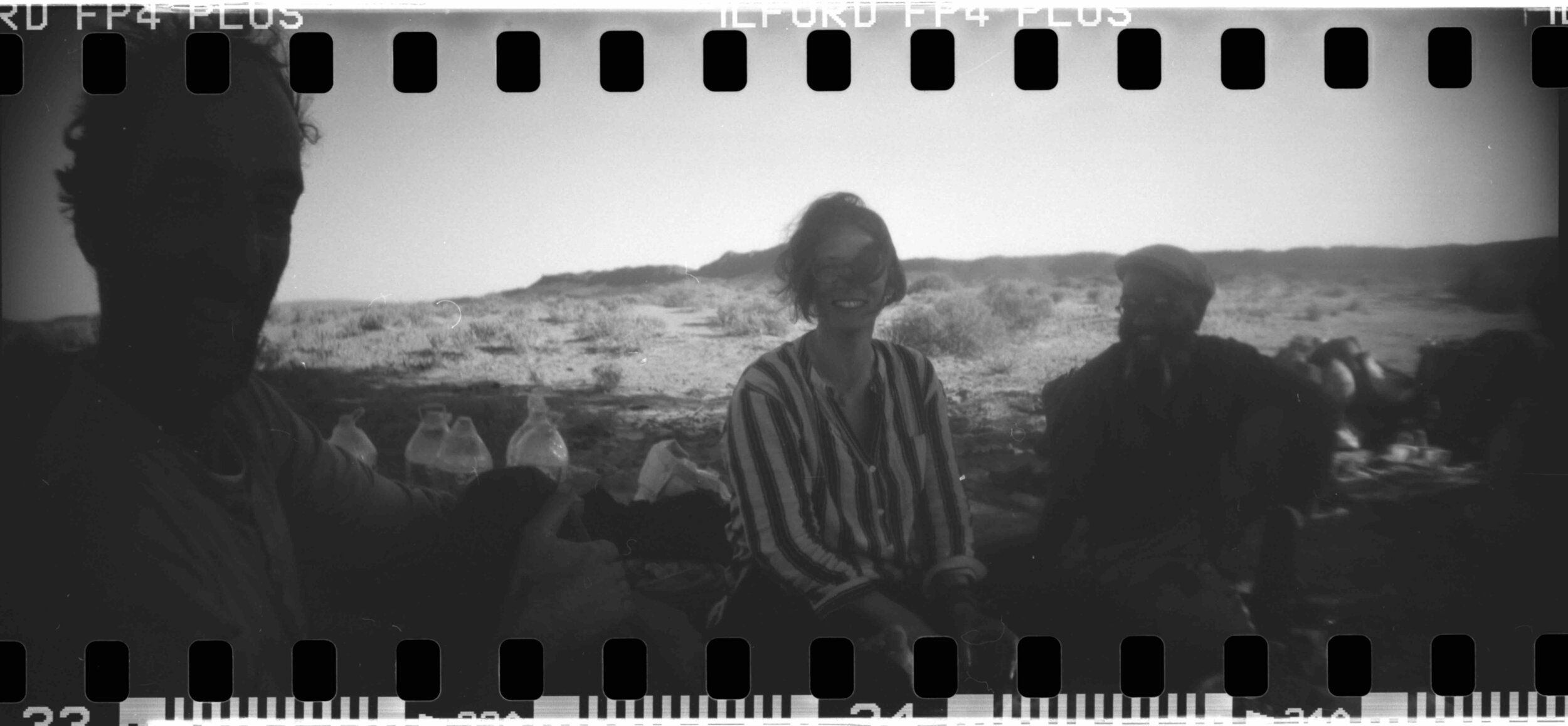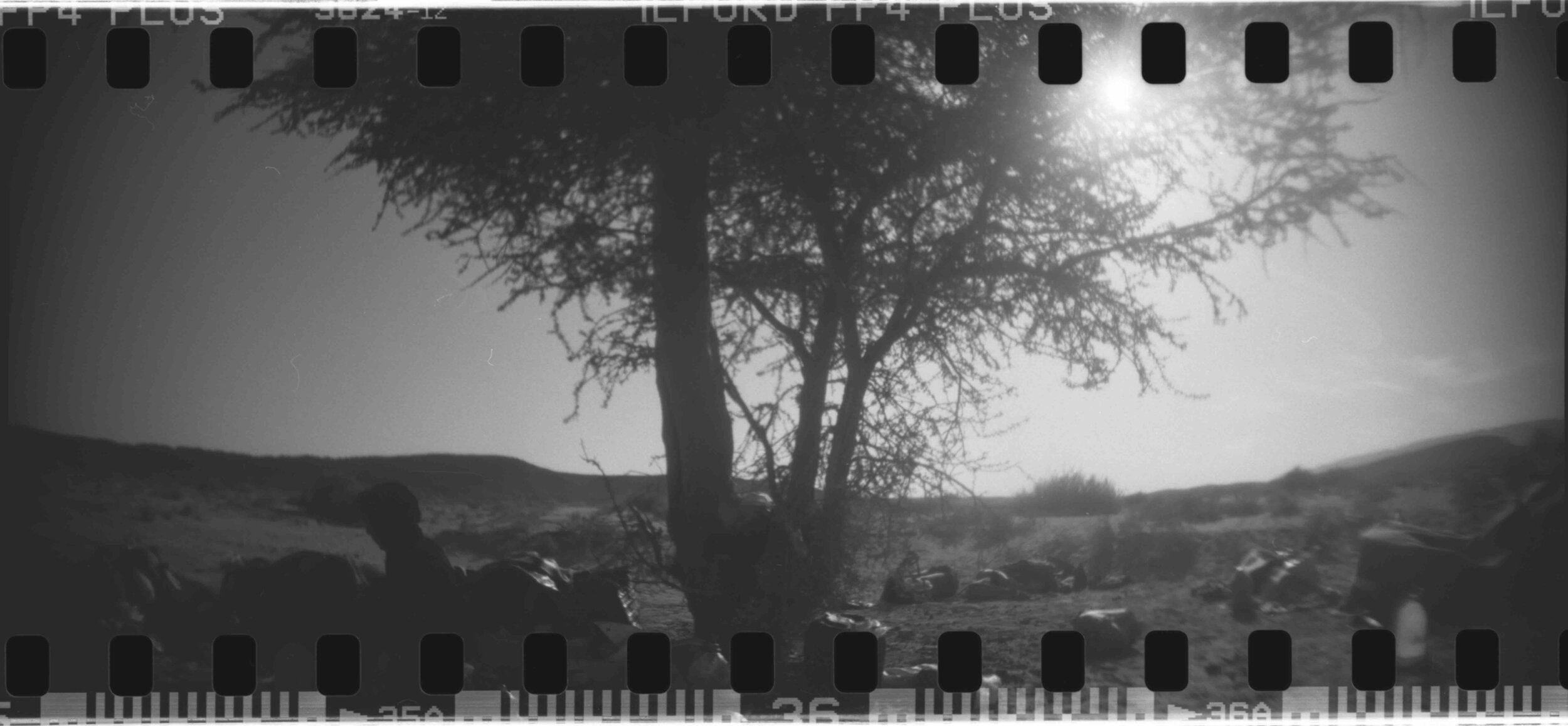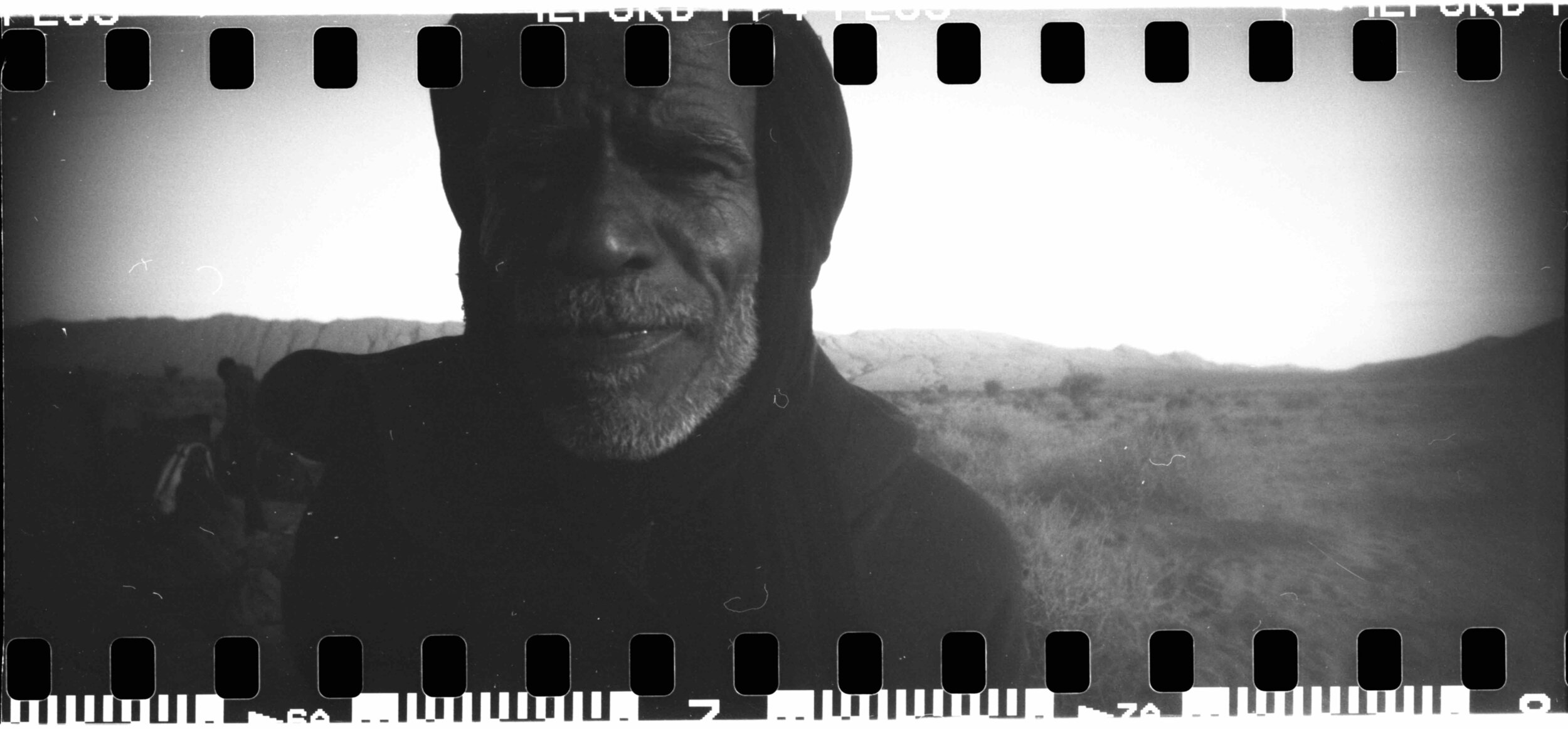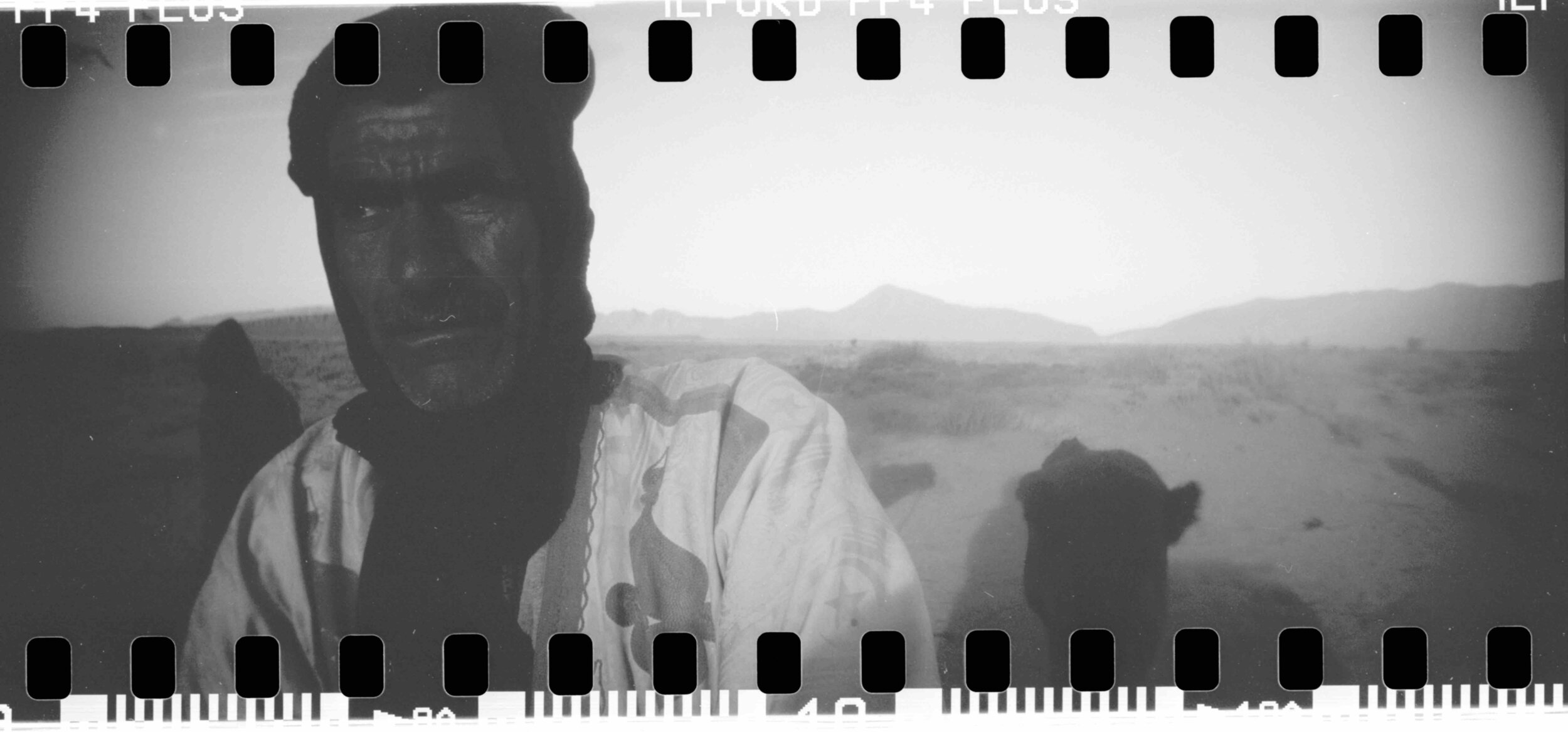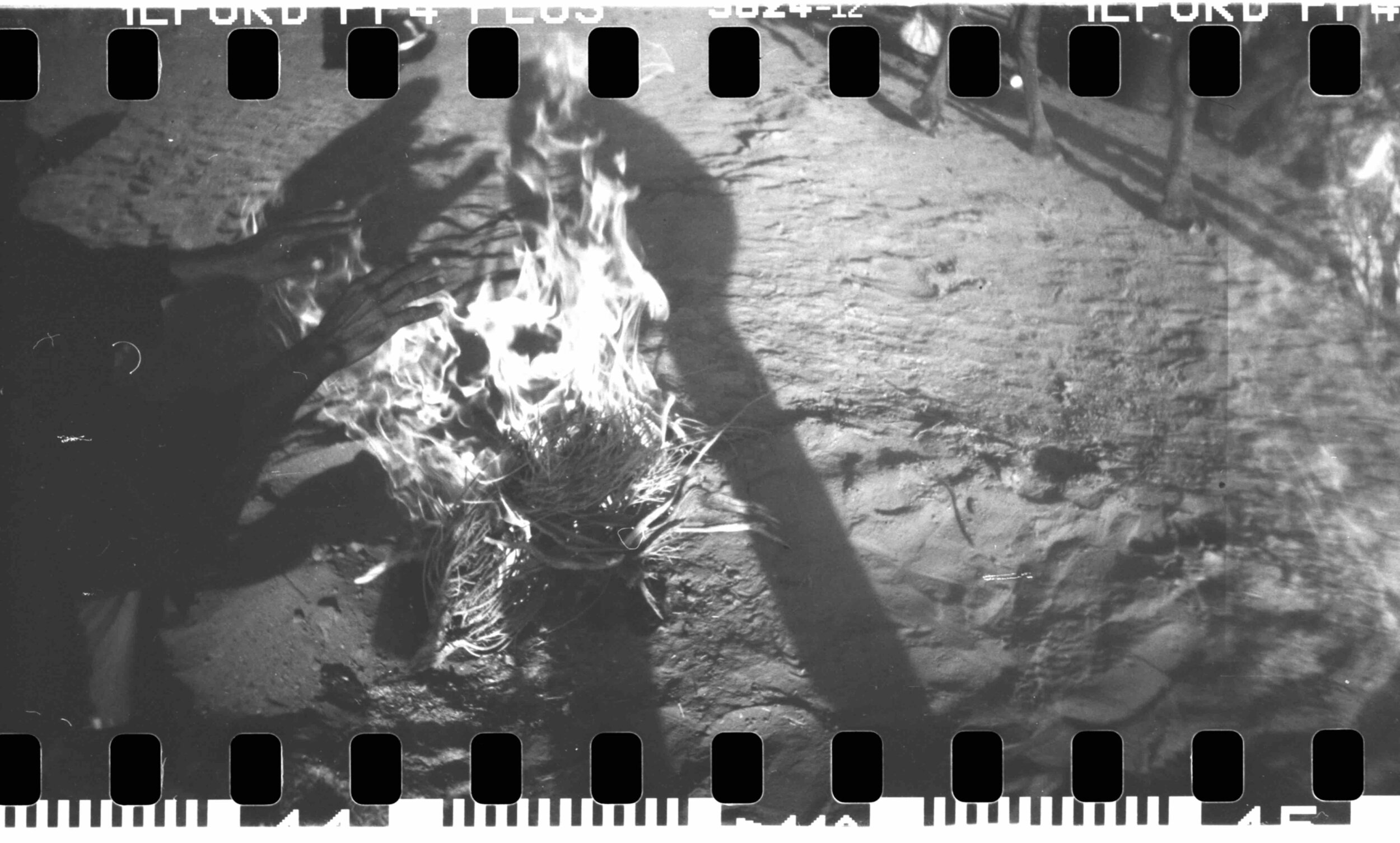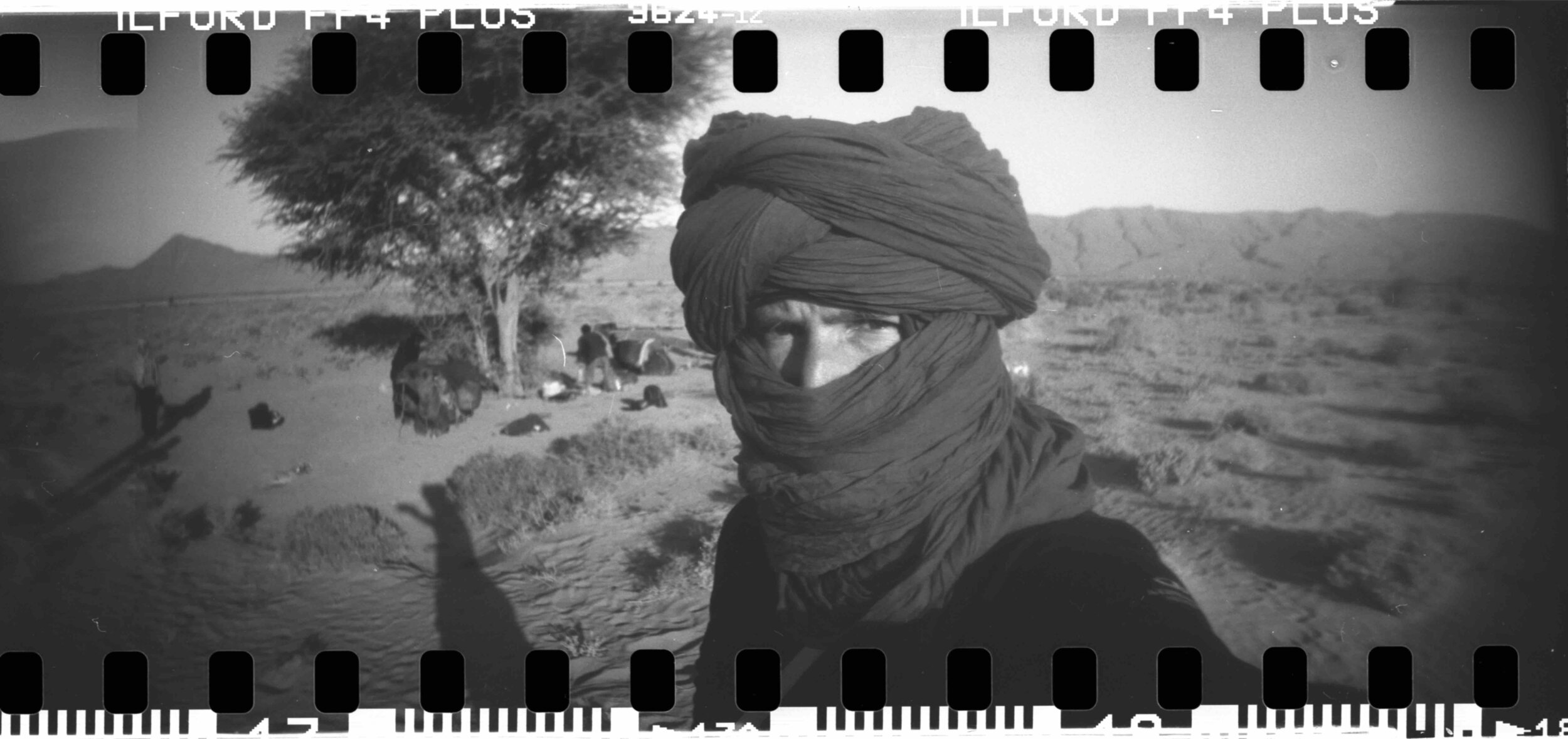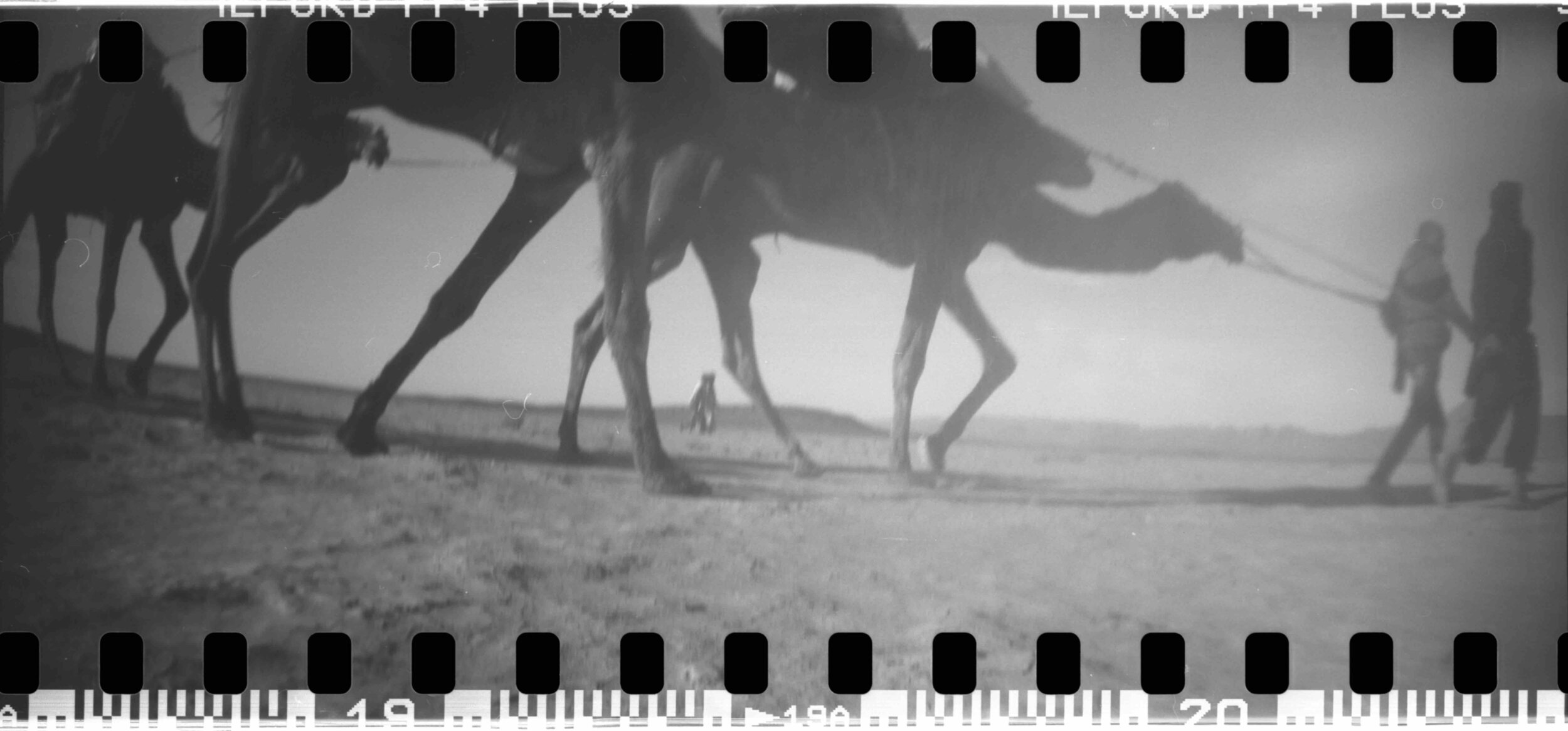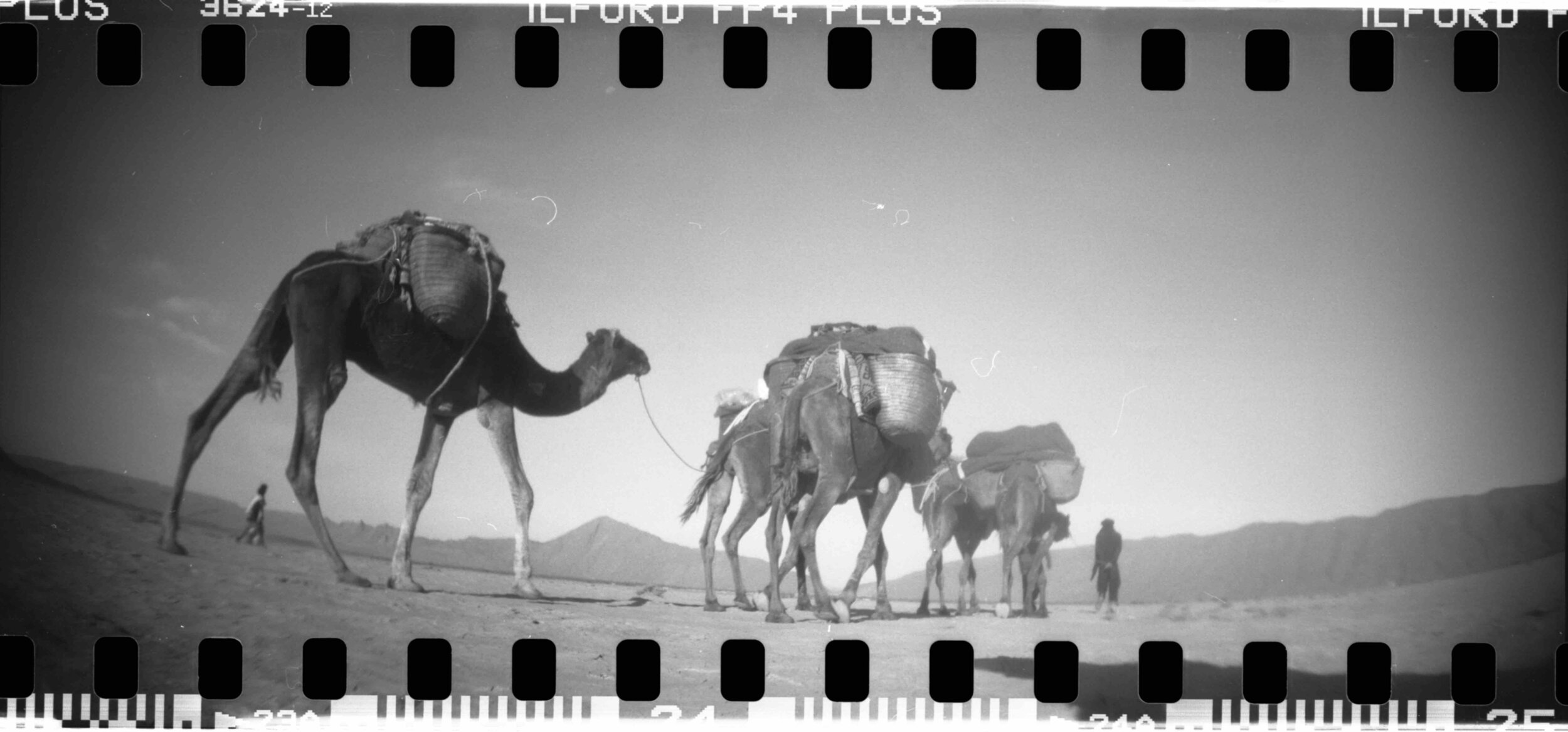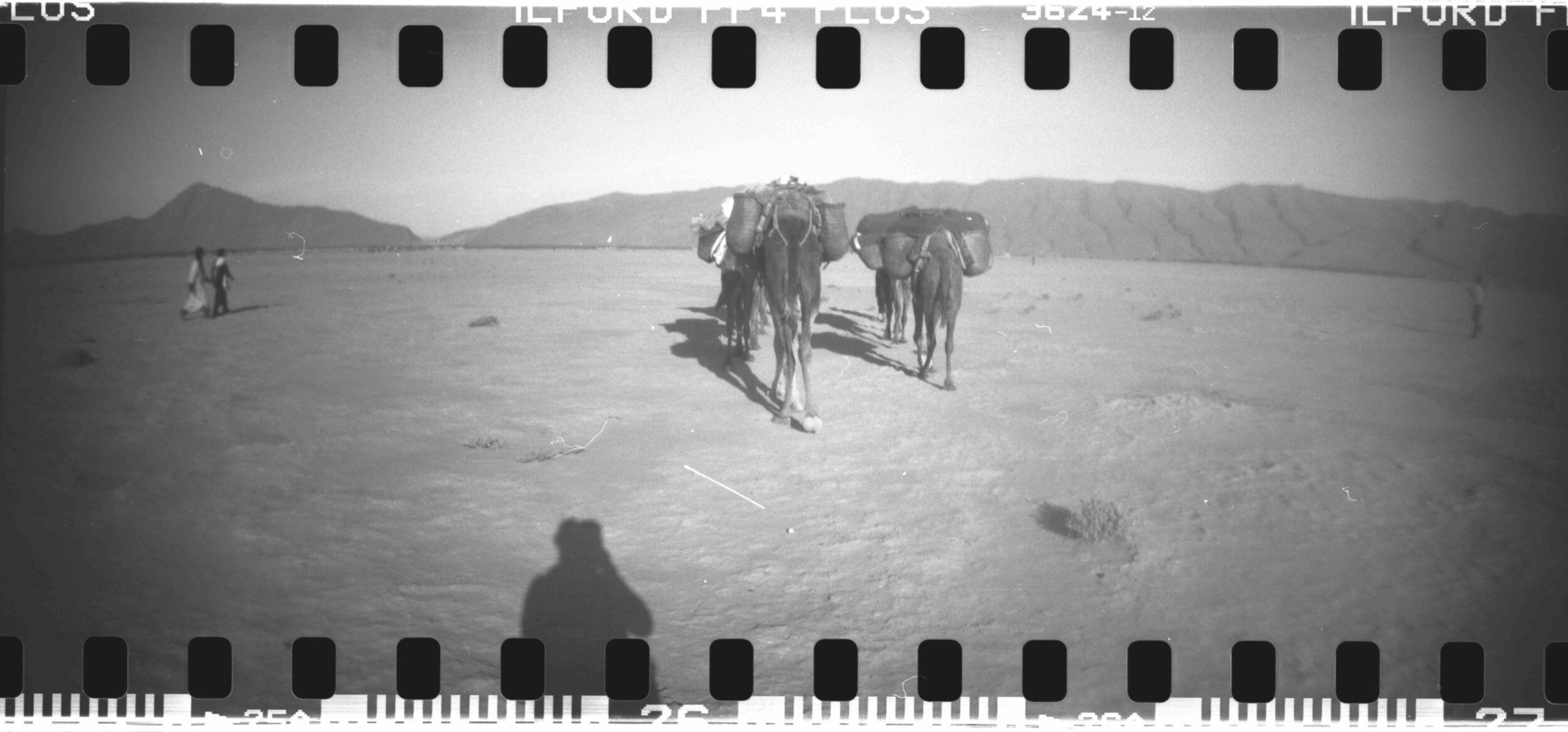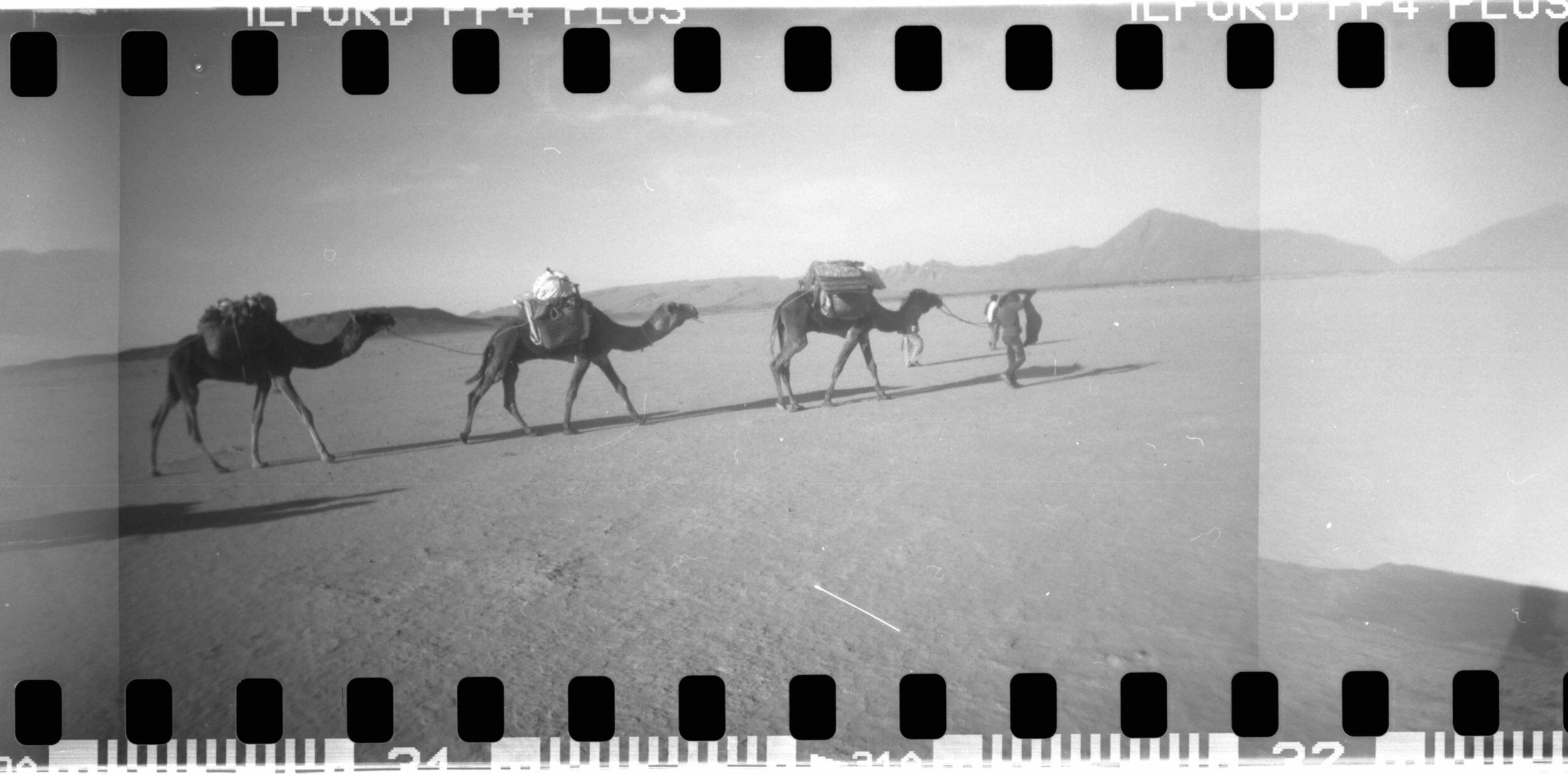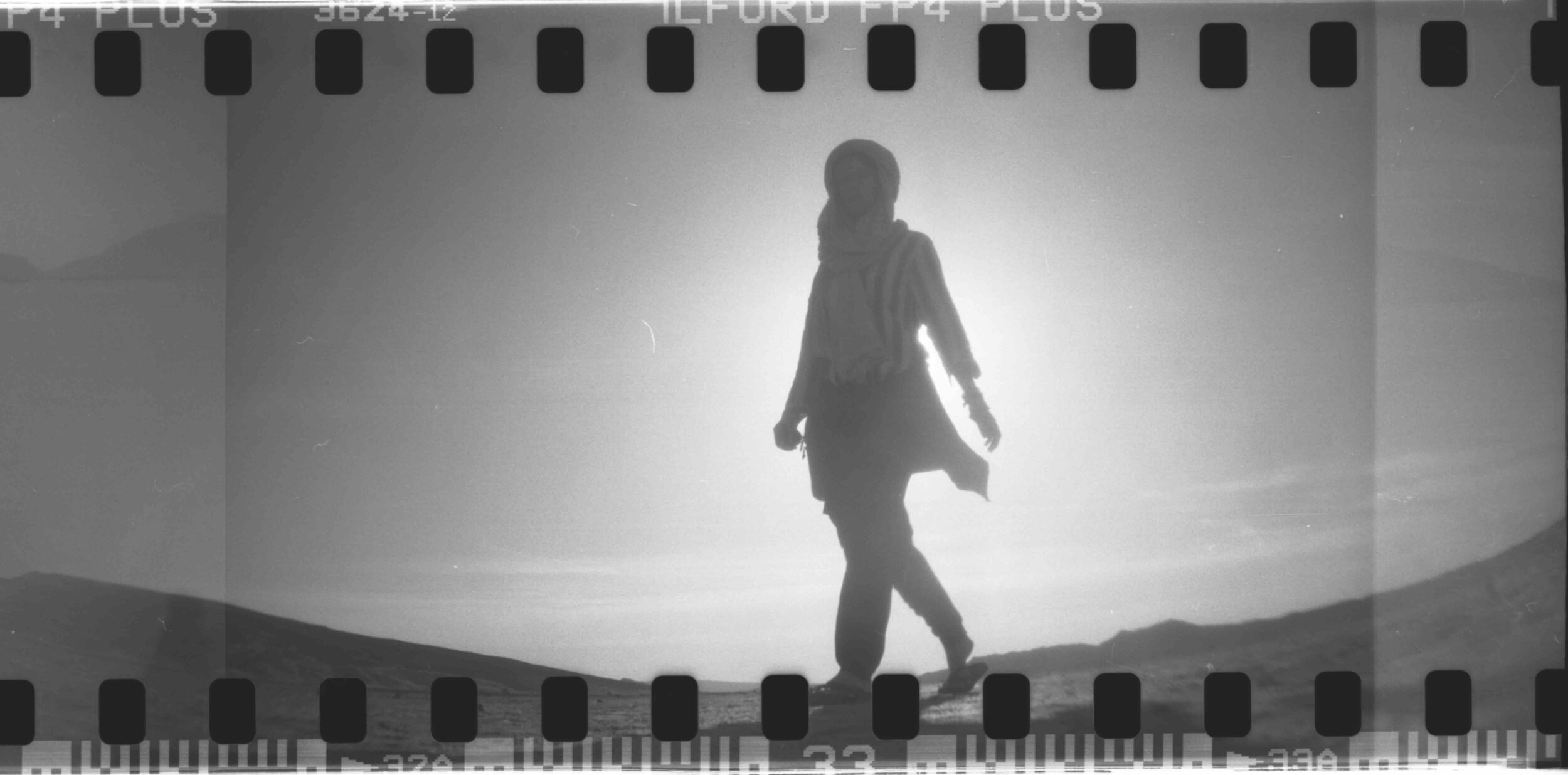qafila thania
INTRODUCTION
After several caravans, I had some friends that wanted to experience a caravan because they were already researching in aspects related to the desert and the caravans; Amado Alfadni (Sudan), M’barek Bouhchichi (Morocco), Pau Cata (Catalonia), Carlos Perez (Spain) and Heidi Vogels (The Netherlands).
Beyond Qafila Thania is a collaboration between CeRCCa and the Moroccan organizations Marsad Drâa through Platform HARAKAT, Project QAFILA and KIBRIT and is funded by SouthMed CV, a programme cofunded by the European Union within the framework of the regional programme MedCulture and the Departament de Cultura de la Generalitat de Catalunya. The logistic of the caravan was provided by Said Razgui.
TOPOGRAPHY
We used, again, the plans from The University of Texas at Austin because they showed how useful they can be, despite the existence of Google Maps.
Studying the geography of the region and applying the acquired experience during Qafila Oula, I proposed a route but of course nomads changed it we will adapt it to the route decided by nomads, which will depend on water wells and the existence of camel food, moreover the initial plan was to finish the first stage in Akka (Tata), and then I was going to continue alone (with two nomads) till Tighmert (Guelmim), however, the psychic tiredness made me change the plan and I finished with everybody in Tissint (Tata).
INTRODUCTION
I proposed to discover the Drâa valley before starting the caravan, a way to understand the importance caravans gave to this region. We stayed in ksar Tamnougalt (at Kasbah des Caïds) where Hassan showed as the agriculture system of the palm grove, as well as the irrigation system.
On our way to M’hamid we visited Tinzouline, Amezrou, Tamgroute and the zawiya of Sidi Salah.
At the end, we attended Taragalte Festival in M’hamid where we met Mokhtar, an old nomad that used to go to Timbuktu by walked, with the last caravans in the late 80s.
DAY 01
11.10.2016
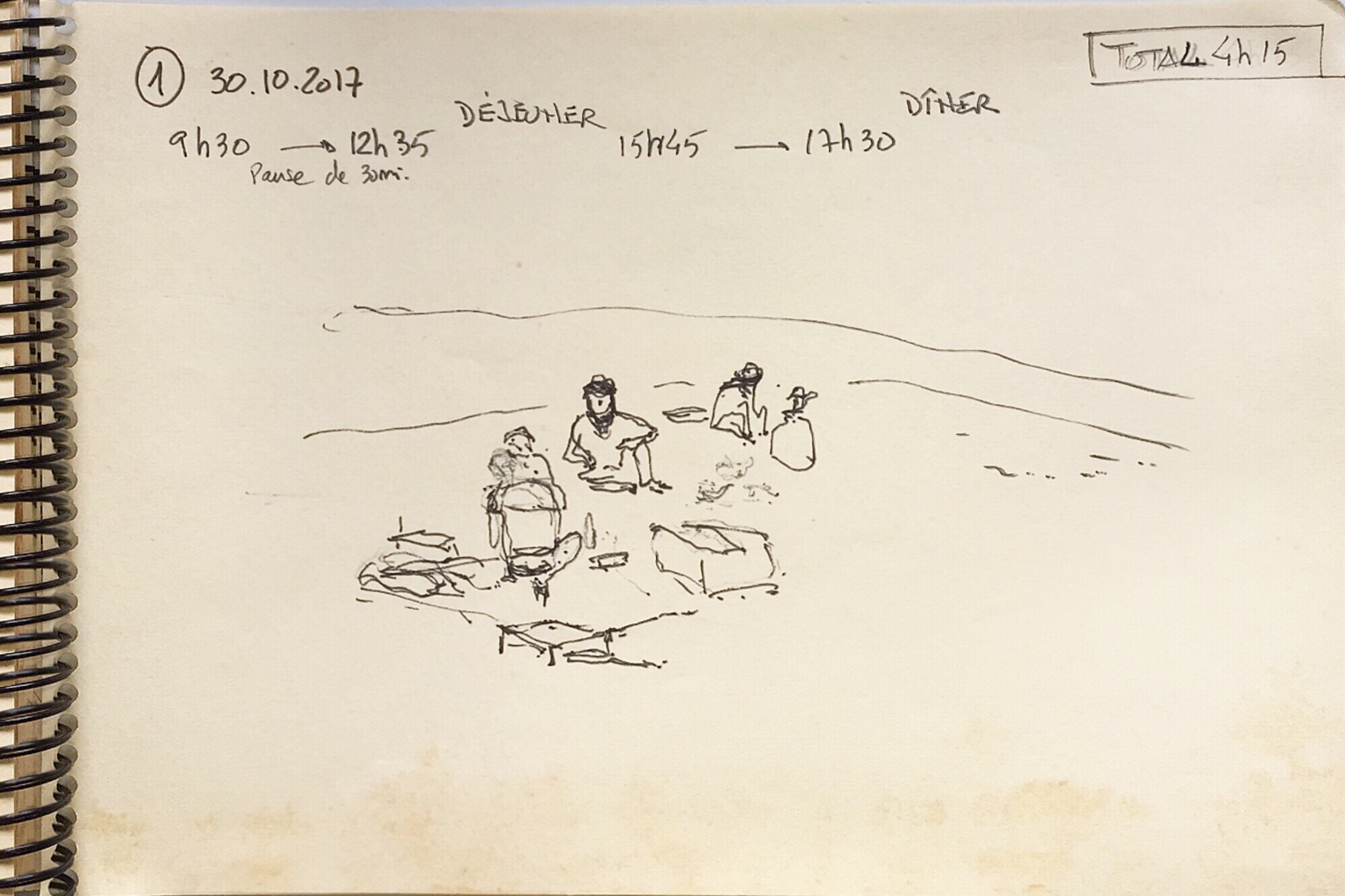
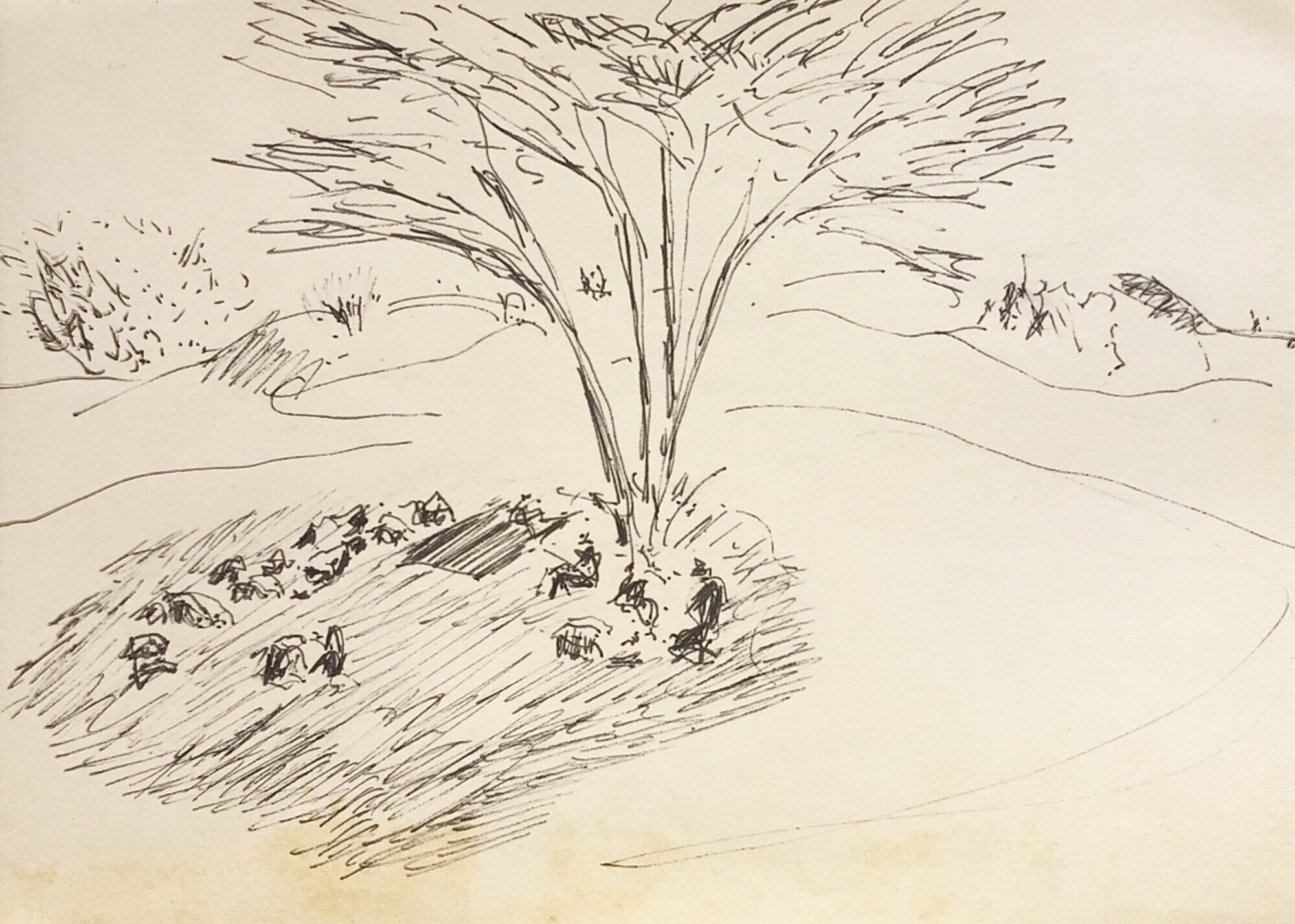
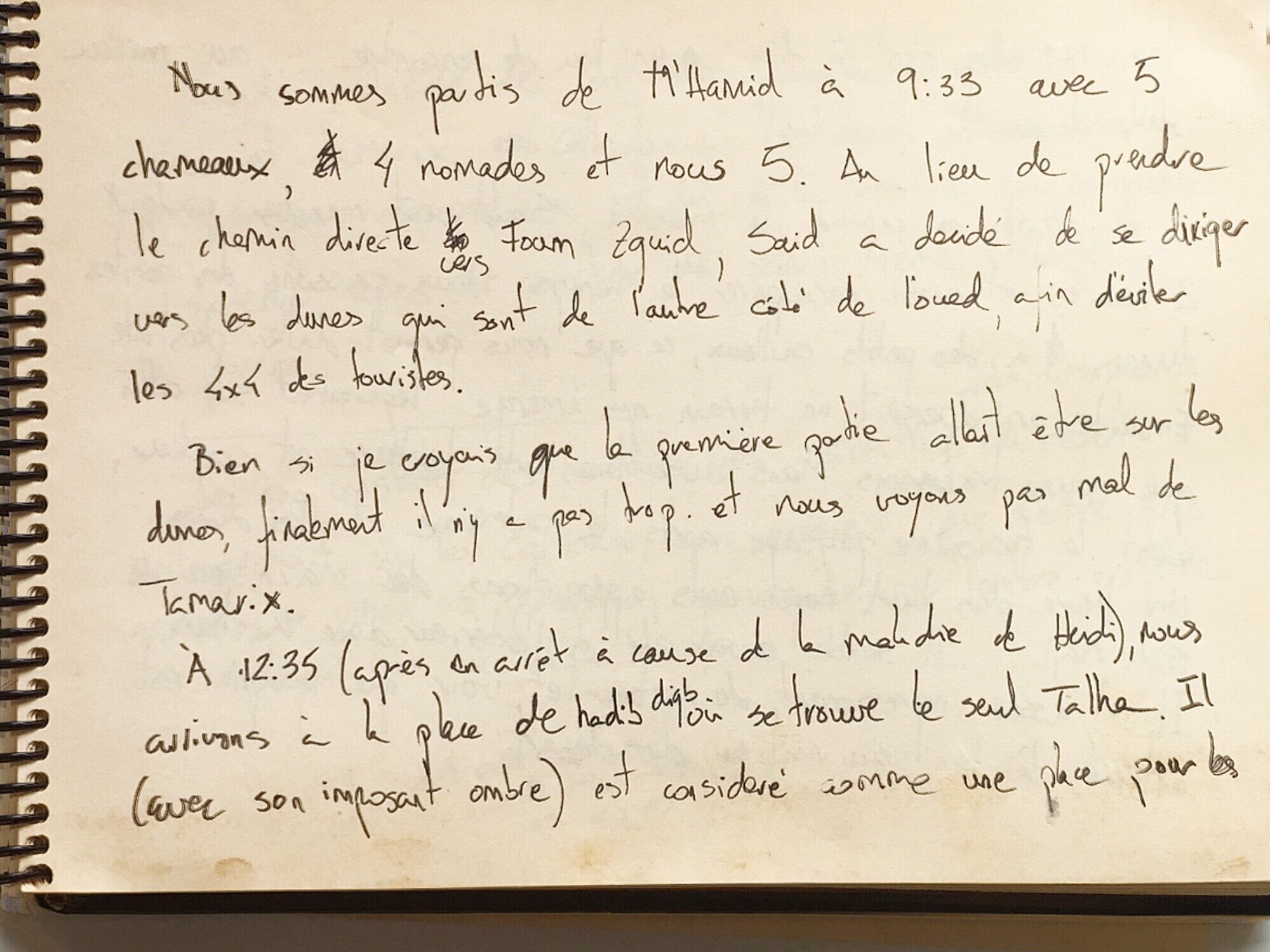
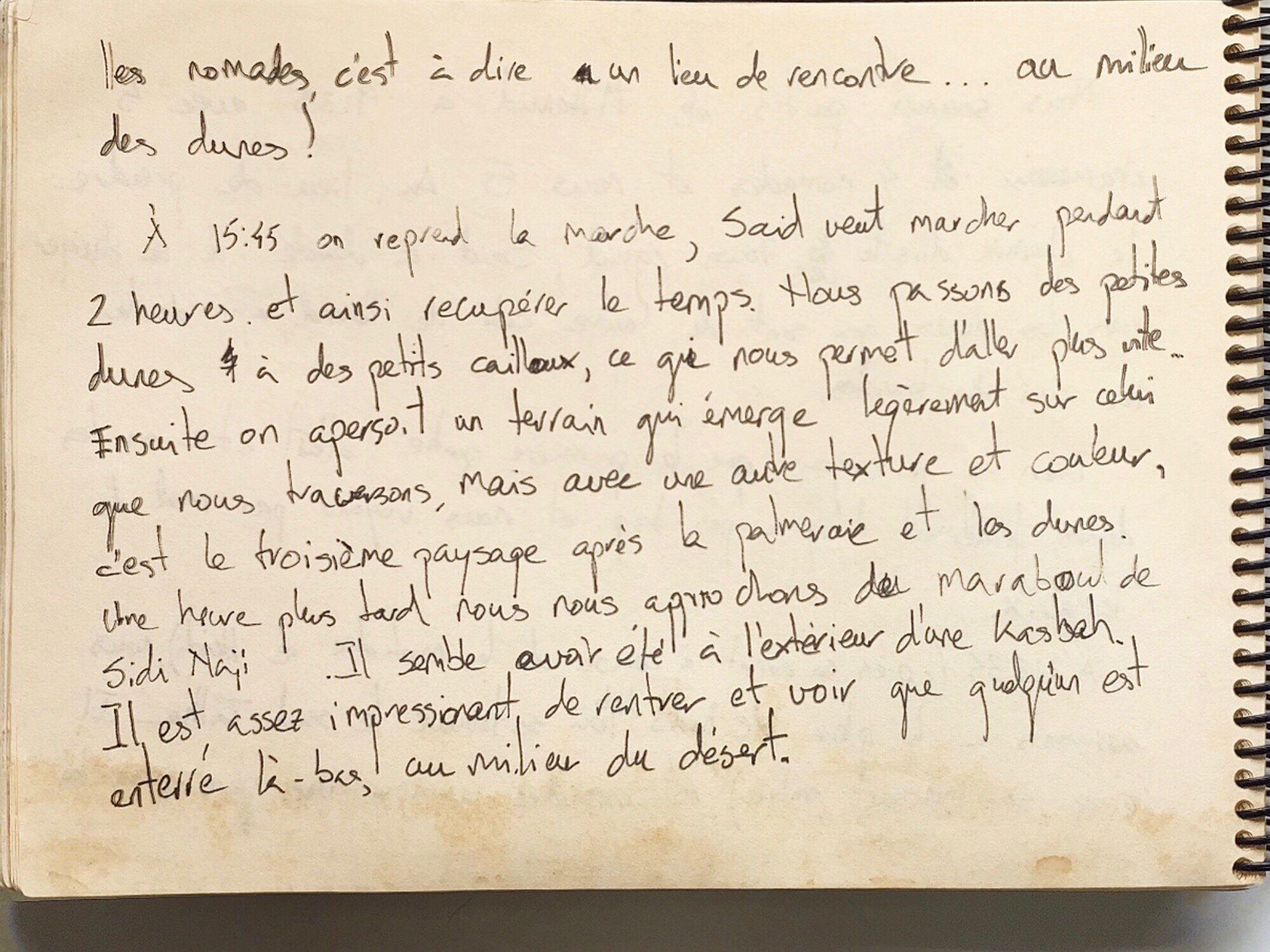
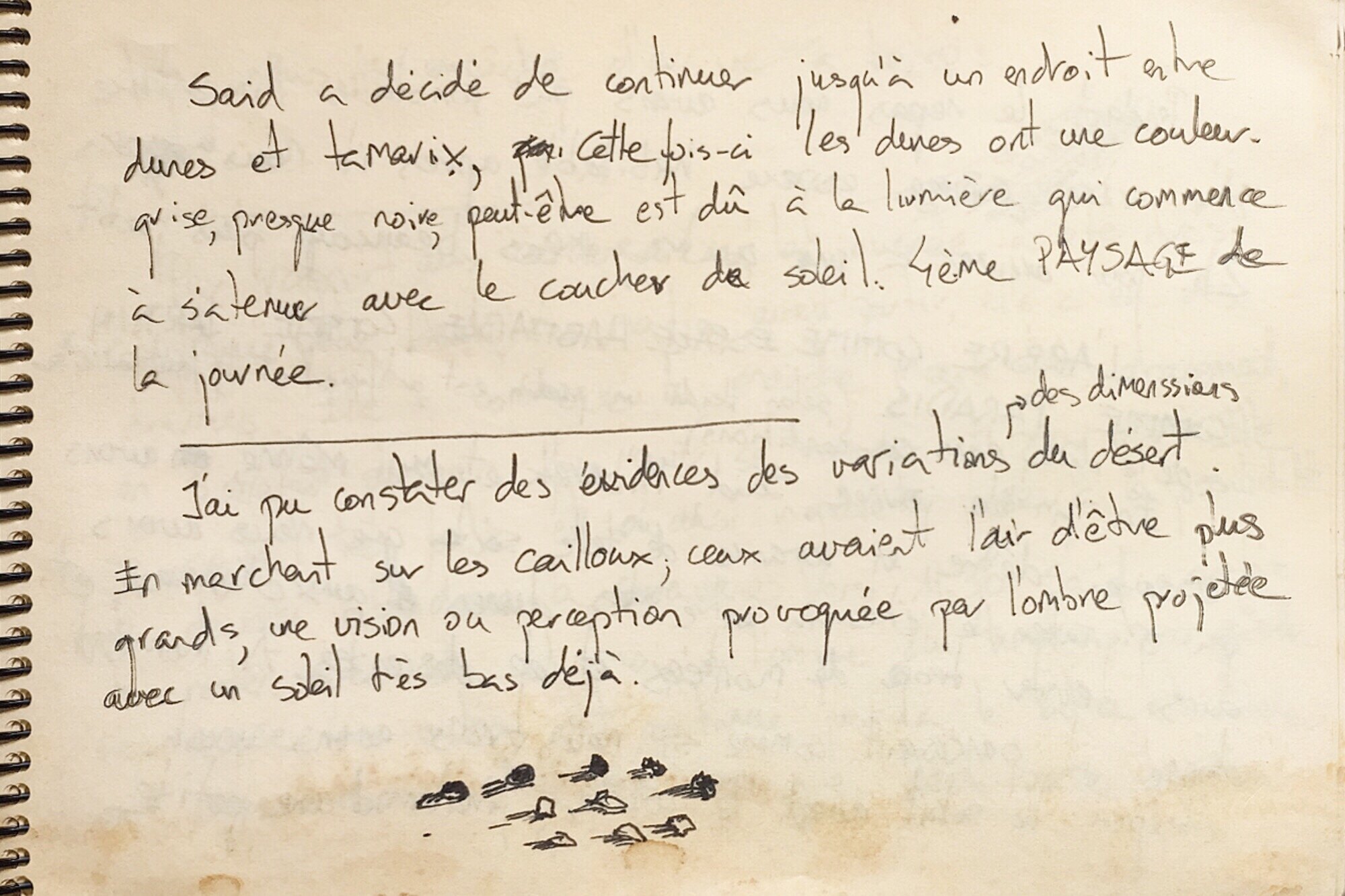
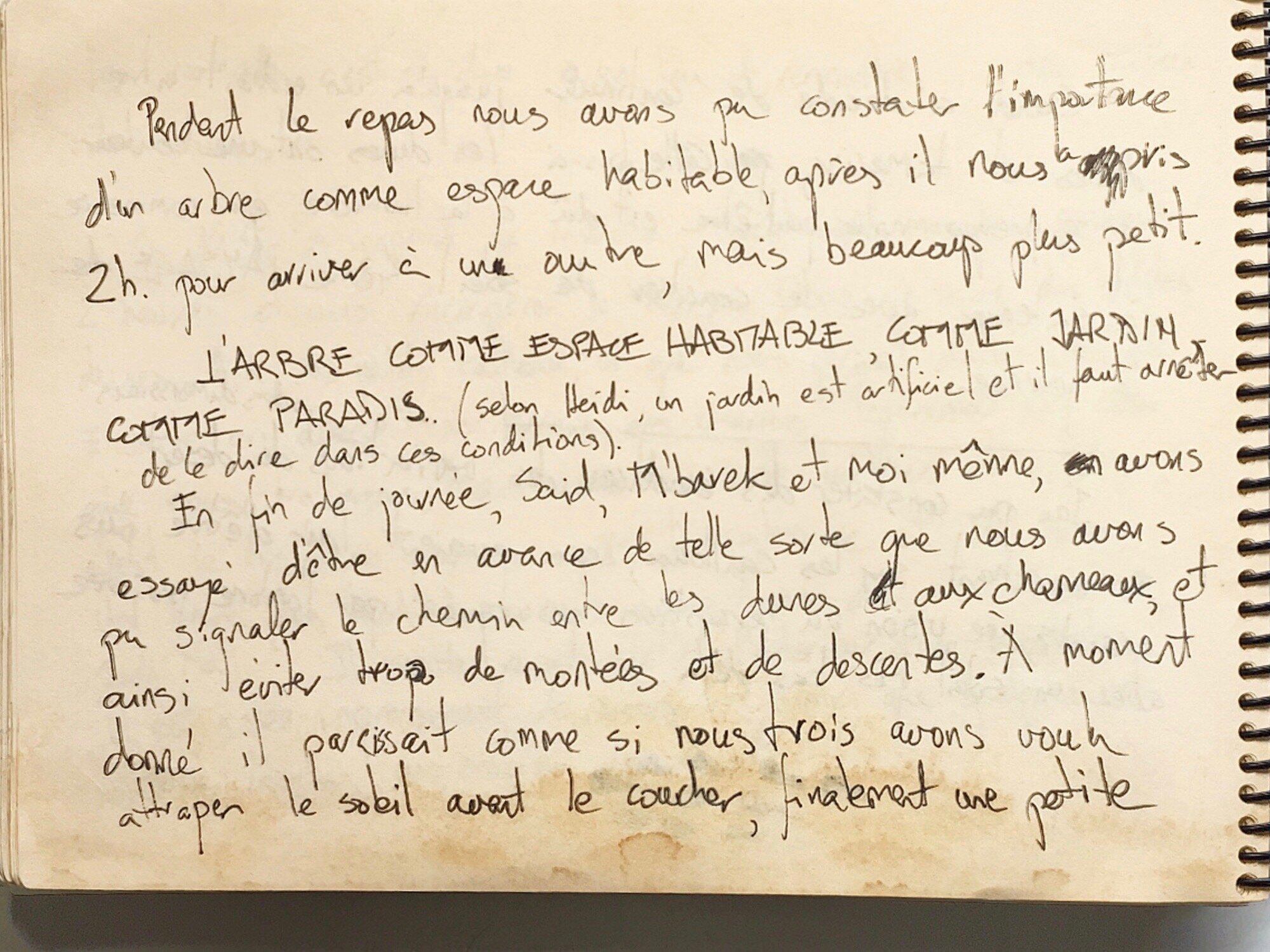
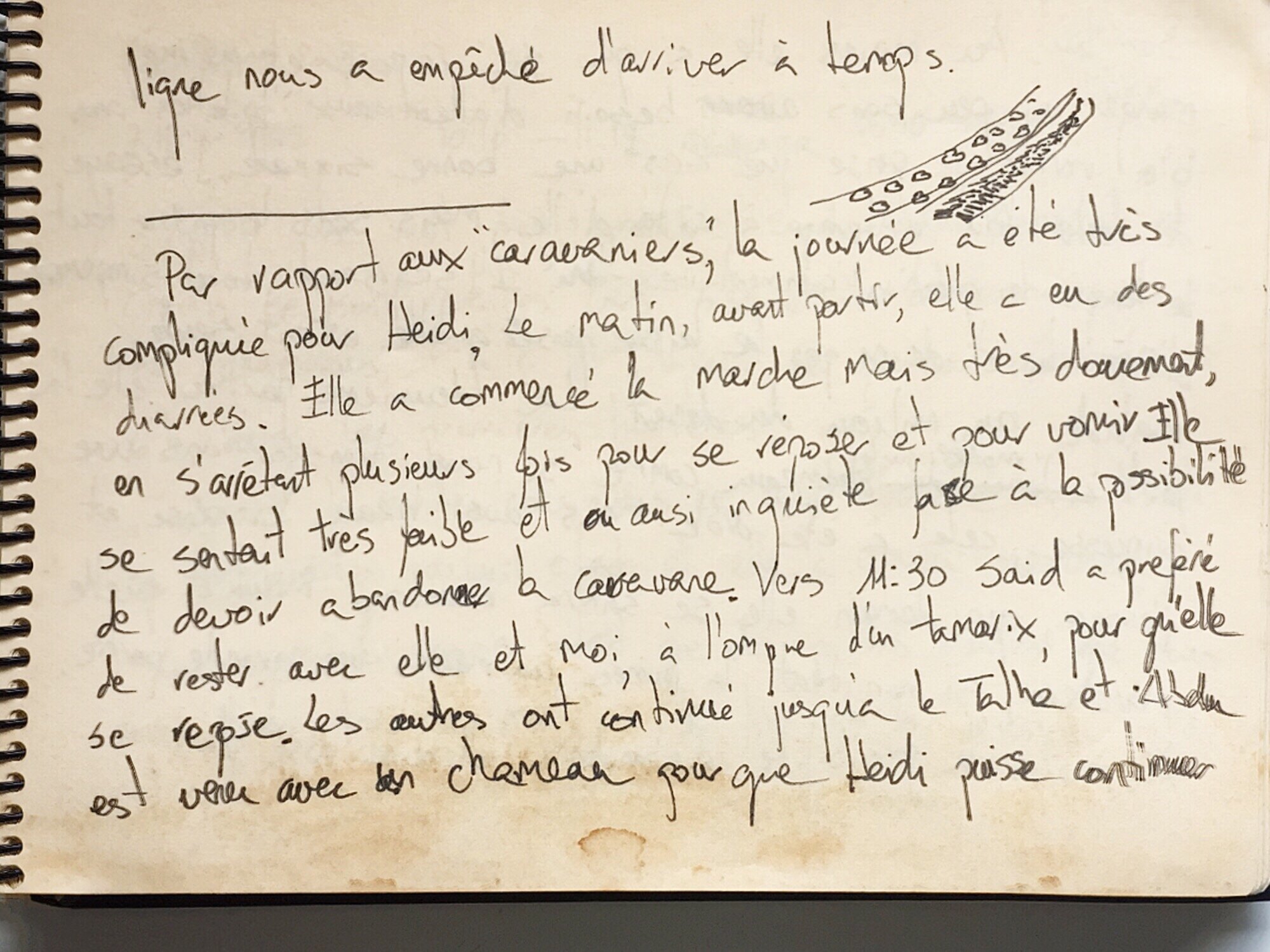
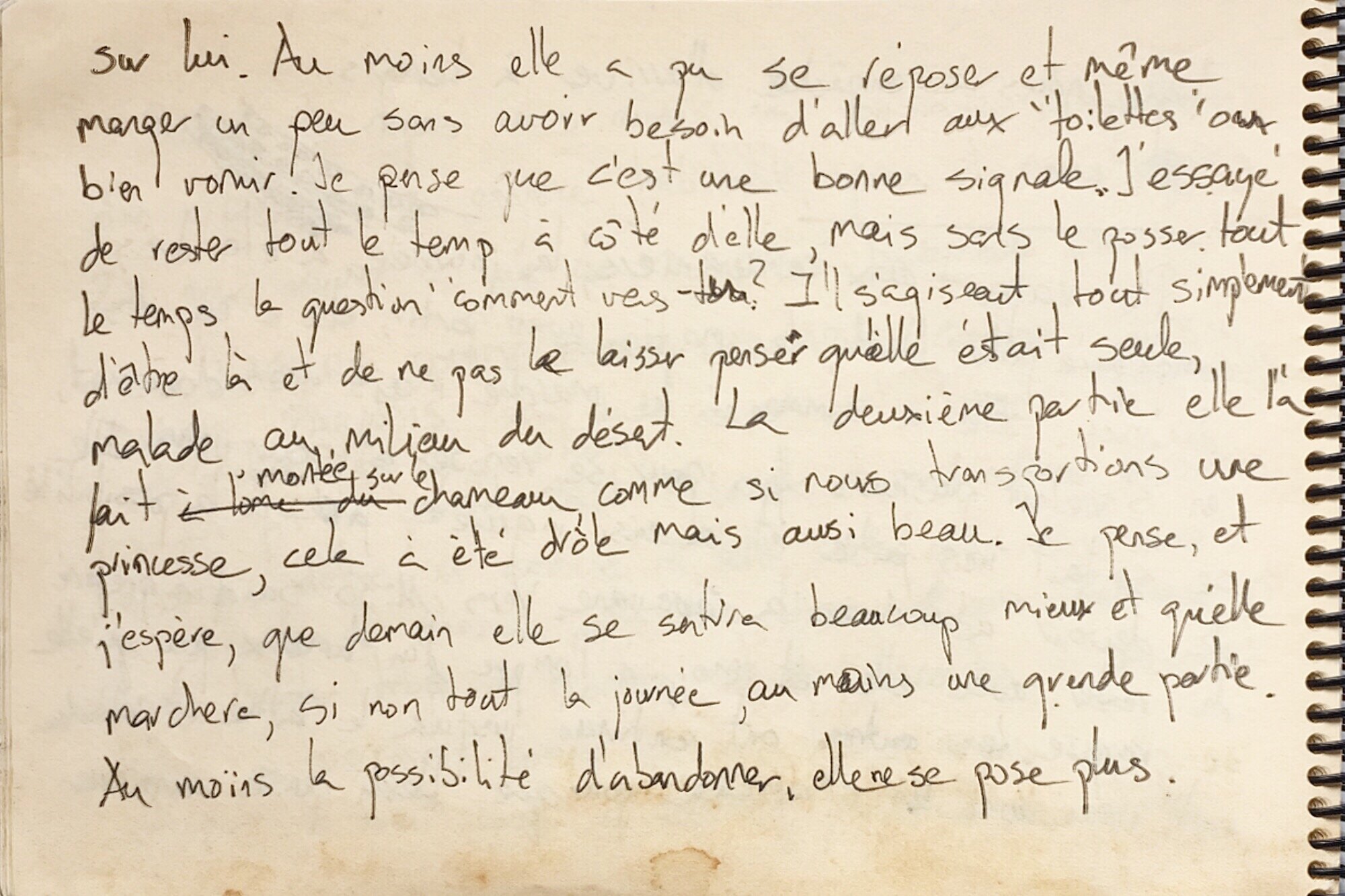
We left M'hamid at 9h33 with 5 camels, 4 nomads and the 5 of us. Instead of taking the direct route to Foum Zguid, Said decided to head us to the dunes that are on the other side of the river to avoid the tourists’ 4x4 cars.
Even if I thought the first part was going to be through dunes, finally there are not too much and we see a lot of tamarix trees.
At 12h35 (after a stop because of Heidi's disease), we arrive at the place of Hadib, where it is the only talha tree in the area. He (with his imposing shade) is considered a place for ...
----------
the nomads, that is to say a meeting place ... in the middle of the dunes!
At 15h45 we resume walking, Said wants to walk for 2 hours and thus recover time. We go from small dunes to small pebbles, which allows us to go faster. Then we see a soil that emerges slightly over the one we are crossing, but with another texture and color, it is the third landscape after the palm grove and the dunes. One hour later we approach the marabout of Sidi Naji. It seems to have been located outside of a casbah. It is quite impressive to come in and see that someone is buried there, in the middle of the desert.
----------
Said decided to continue till a place between dunes and tamarix trees. These dunes have a gray color, almost black, maybe due to the light that begins to fade with the sunset. 4th landscape of the day.
I have seen evidence of variations in the dimensions of the desert. While walking on the pebbles, those seemed to be bigger, a vision or perception caused by the shade projected by a very low sun rays.
----------
During lunch we could realise the importance of a tree as habitable space, later, it took us two hours to get to another, but much smaller.
THE TREE AS HABITABLE SPACE, LIKE GARDEN, AS PARADISE
(according to Heidi, a garden is artificial and it is necessary to stop saying it in these conditions)
At the end of the day, Said, M'barek and myself, tried to be ahead so we could point the way between the dunes to the camels and avoid too many climbs and descents. At some point it seemed as if we had wanted to catch the sun before the sunset, finally a small ...
----------
line prevented us from arriving in time.
Concerning the "caravanners", the day was very complicated for Heidi. In the morning, before leaving, she had diarrhoea. She started walking but very slowly, stopping several times to rest and vomit. She felt very weak and worried about the possibility of abandon. Around 11h30 Said preferred to stay with her and me, under the shade of a tamarix tree, so she could have a rest. The others continued till the talha tree and later Aadou came with a camel so Heidi could continue ...
----------
riding him. At least she could rest and even eat a little bit without having to go to the "toilets" or vomiting. I think it's a good sign. I tried to stay with her, but without asking every second, how was she doing. It was just a matter of being there and not to let her think that she was alone, sick in the middle of the desert. The second part of the journey she rode a camel, as if we were carrying a princess, it was funny but also beautiful. I think, and I hope, tomorrow she will feel much better and she will walk, if not all day, at least a large part. At least the possibility of giving up, it doesn’t arise anymore.
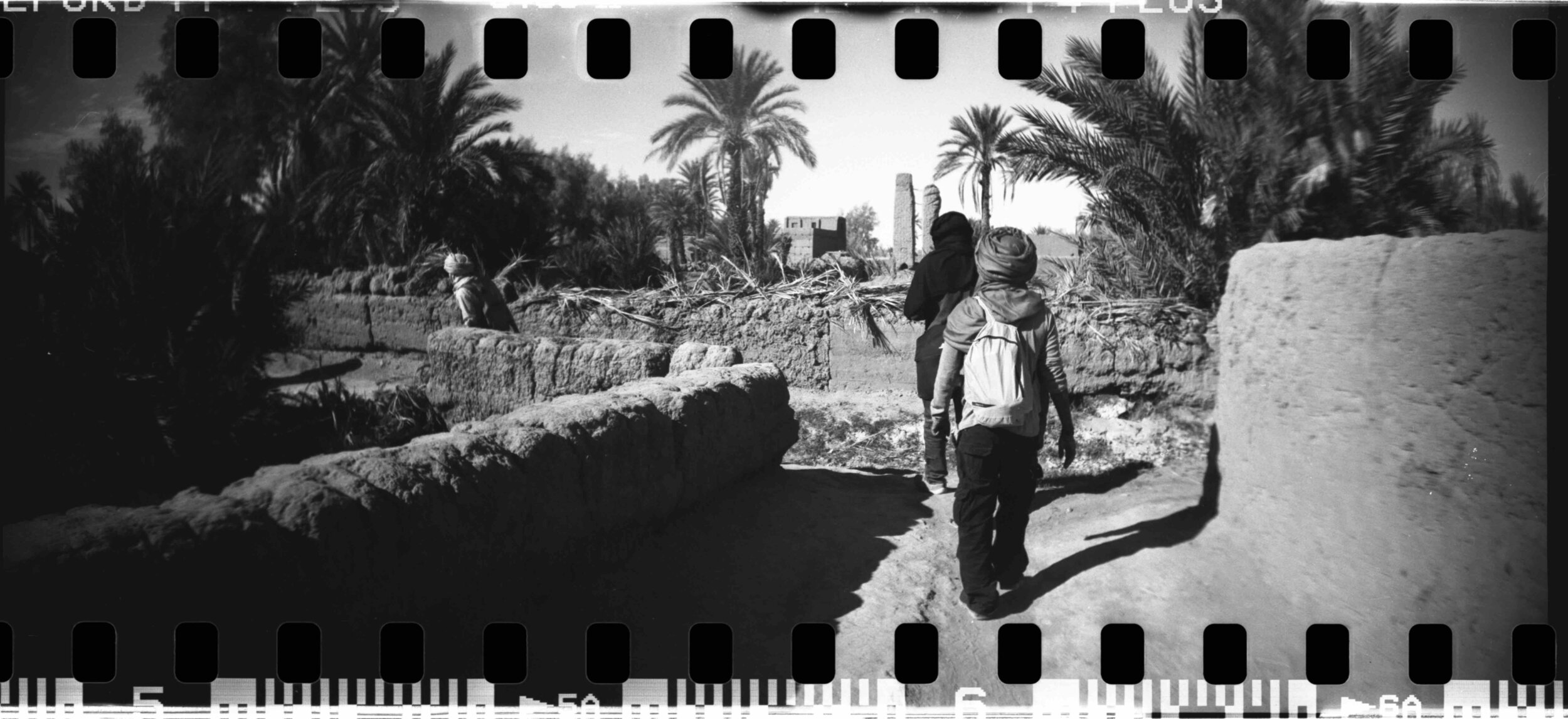

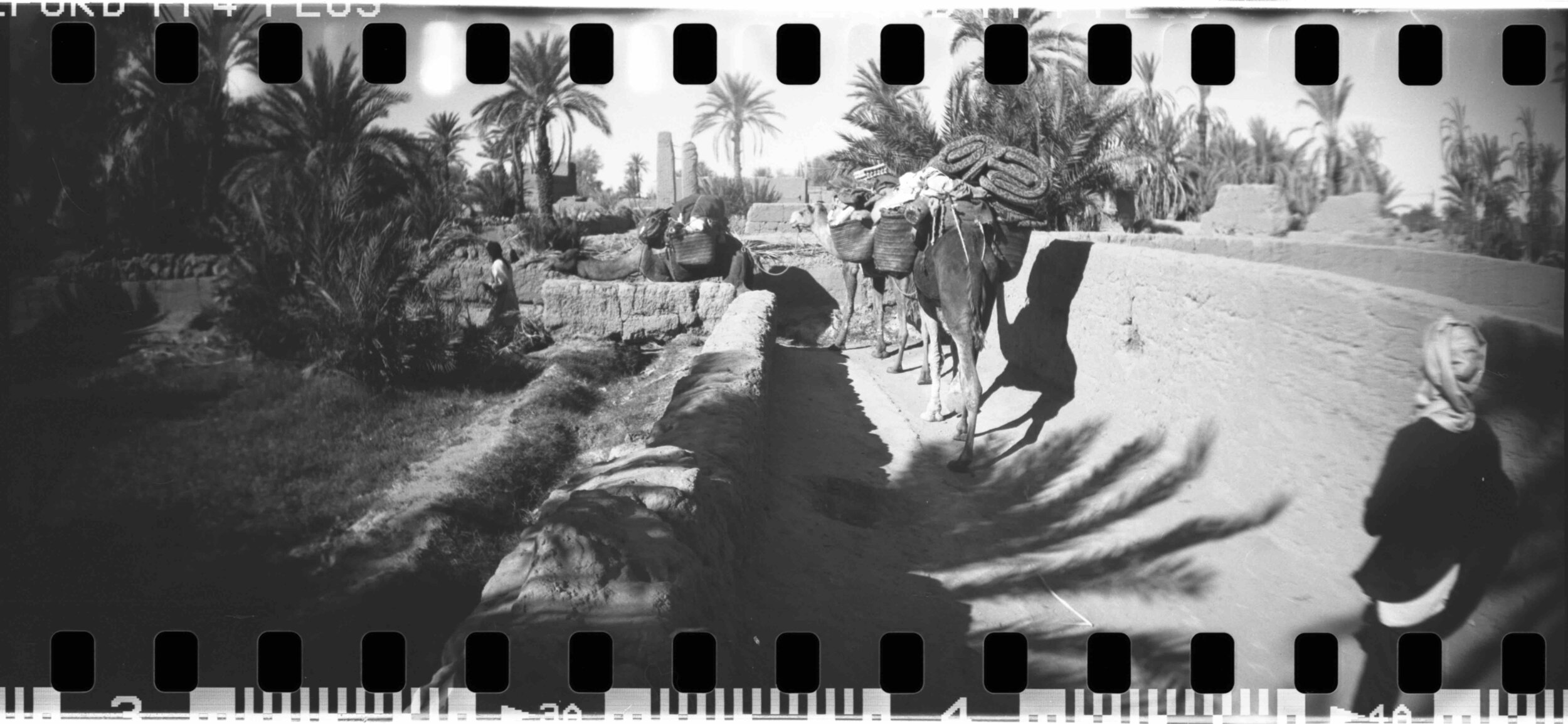


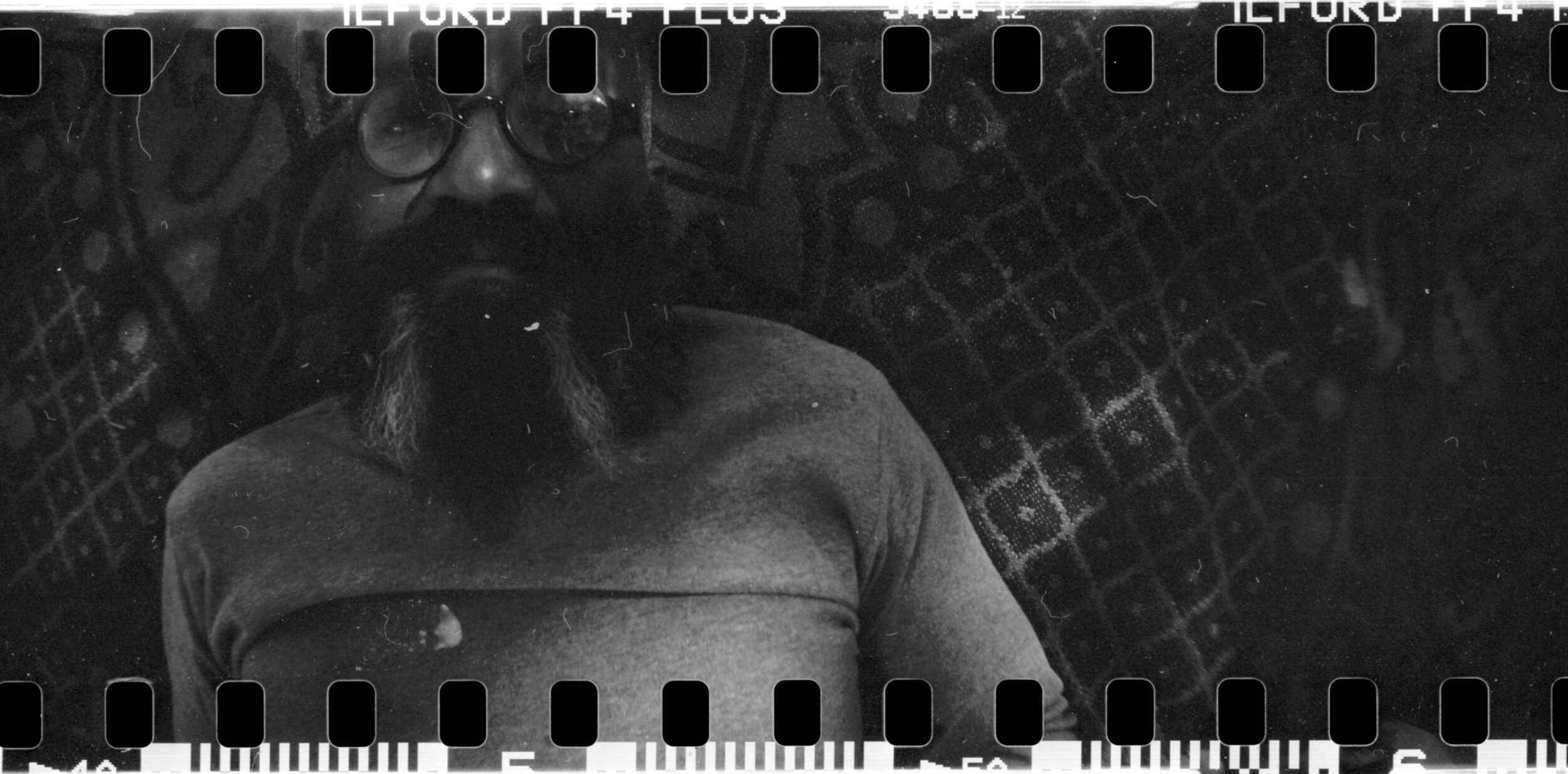
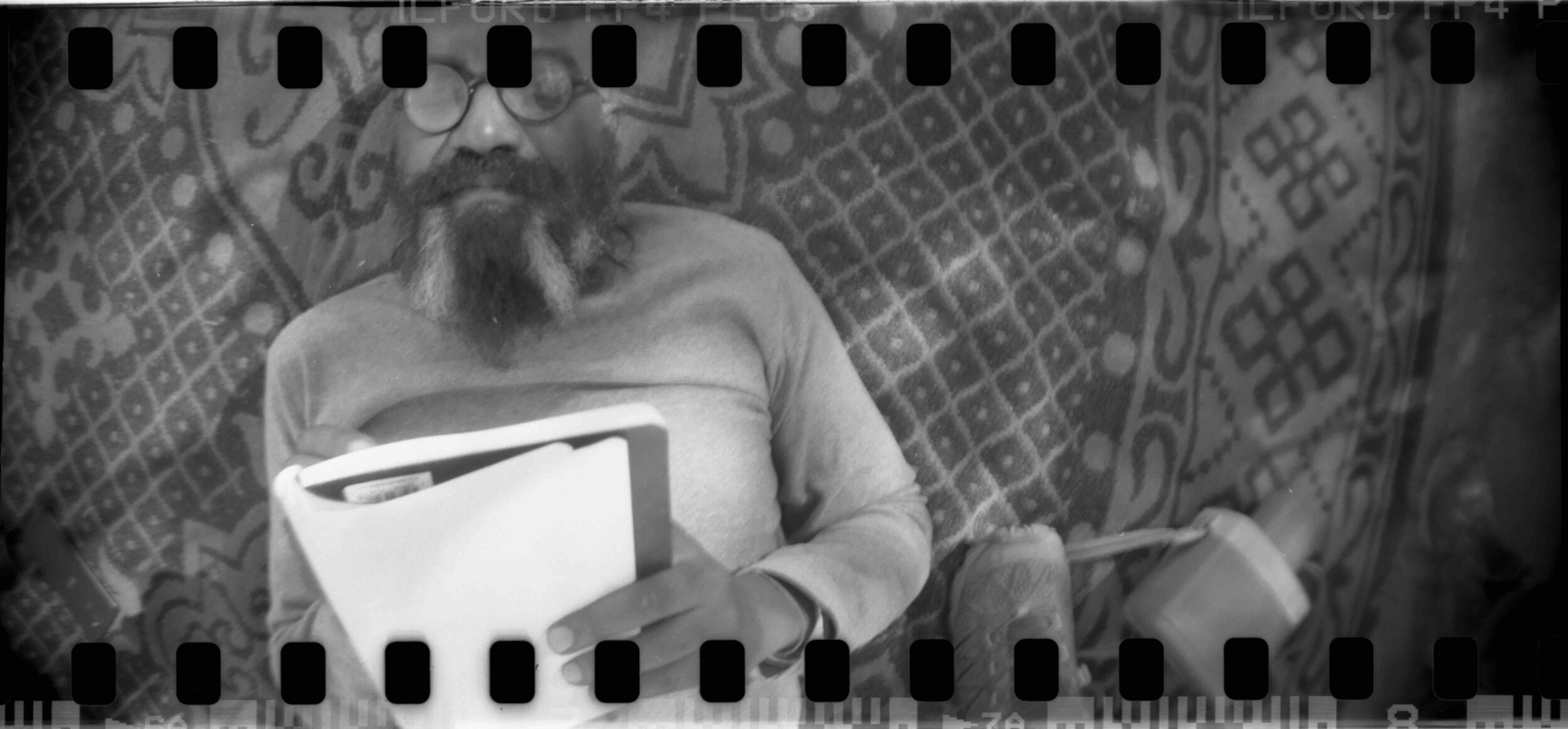
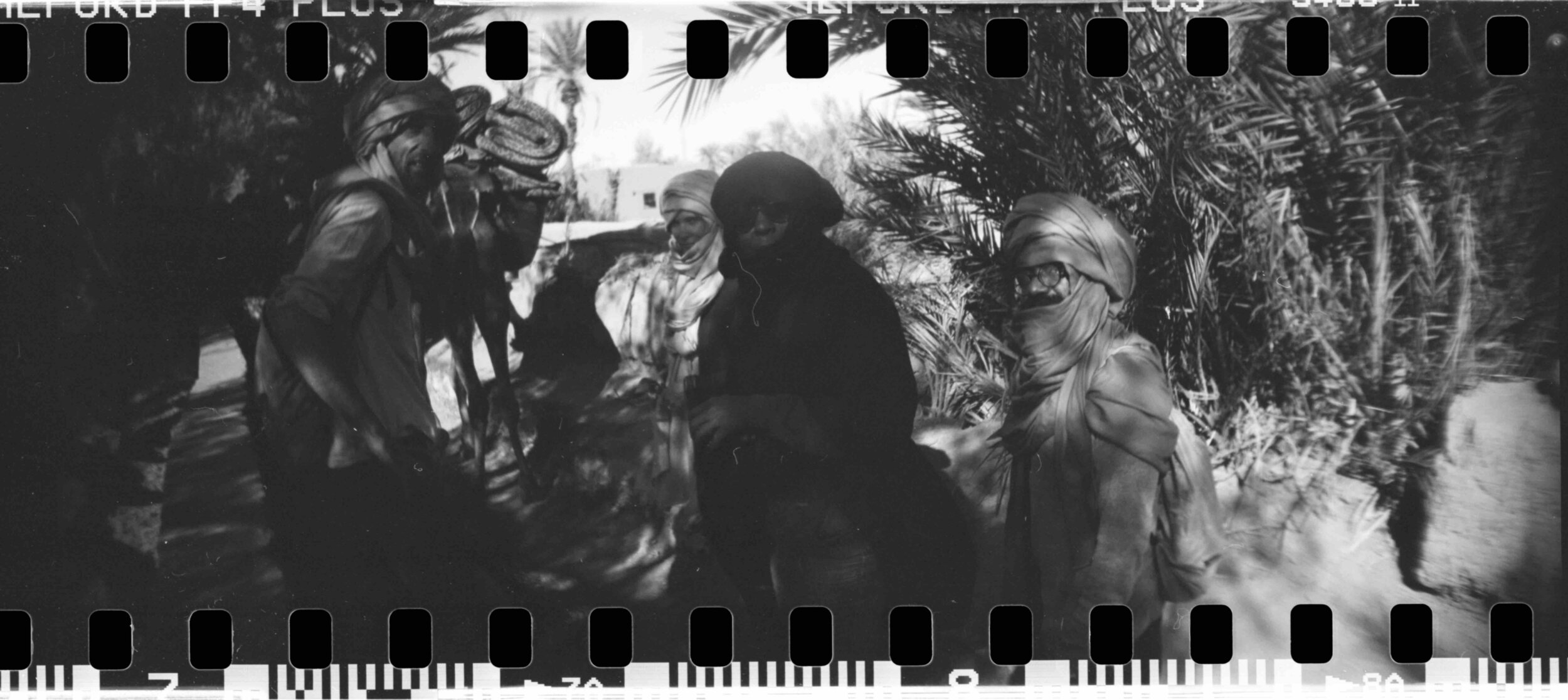
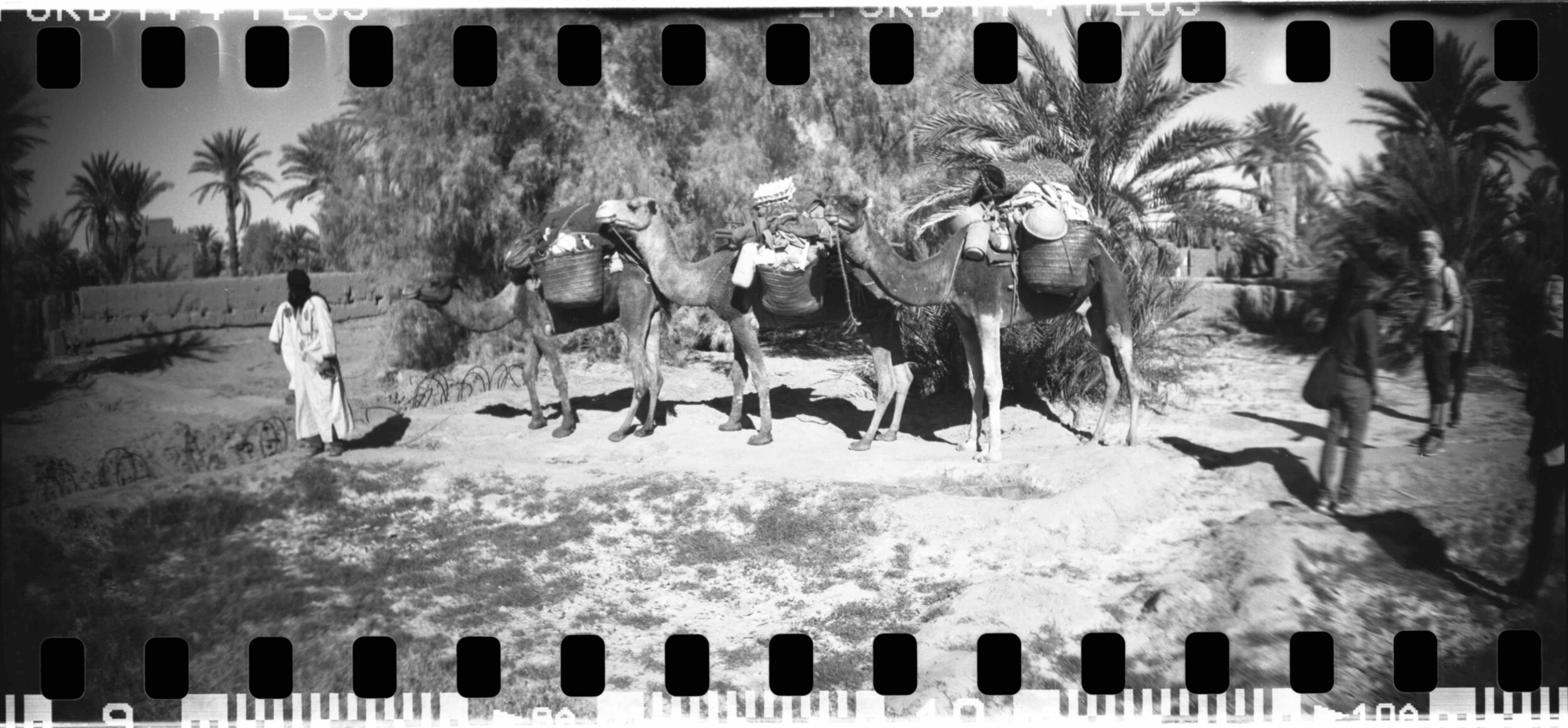
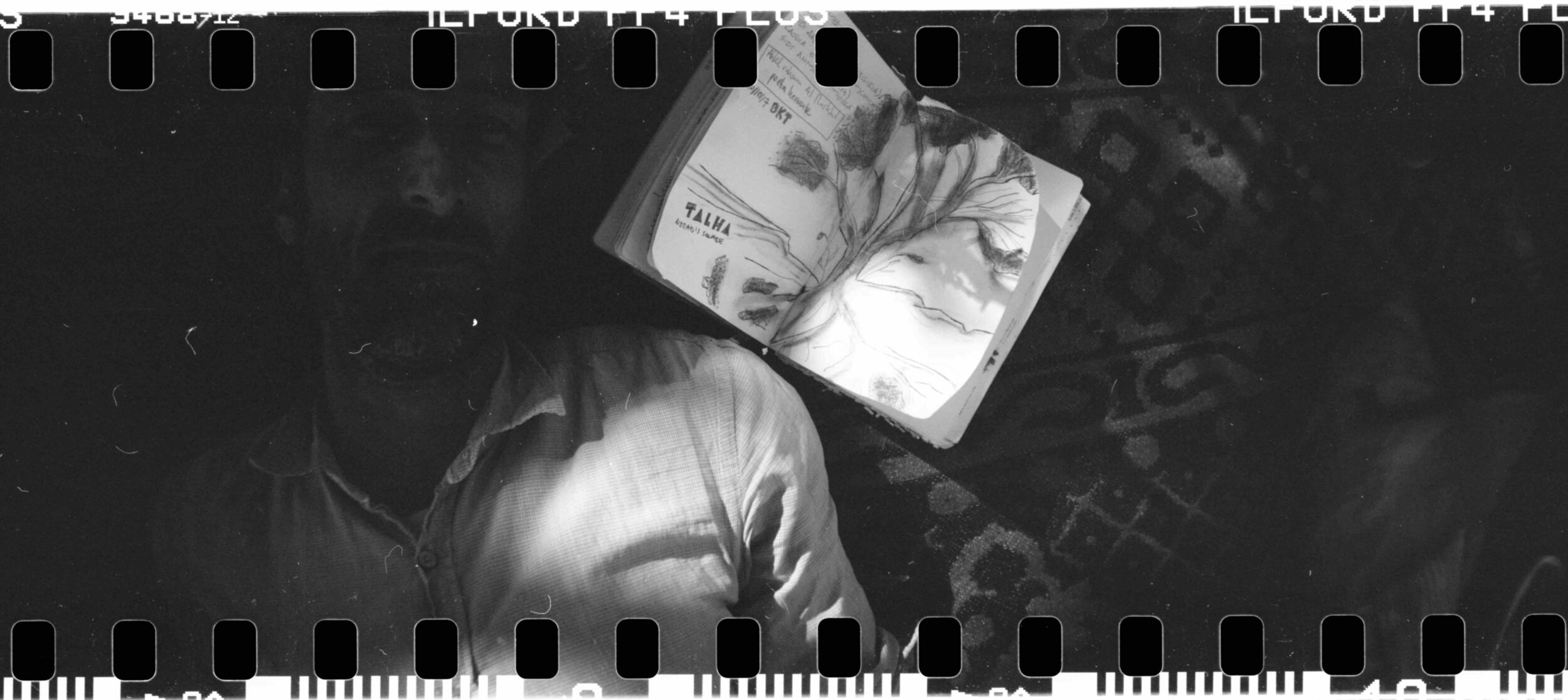
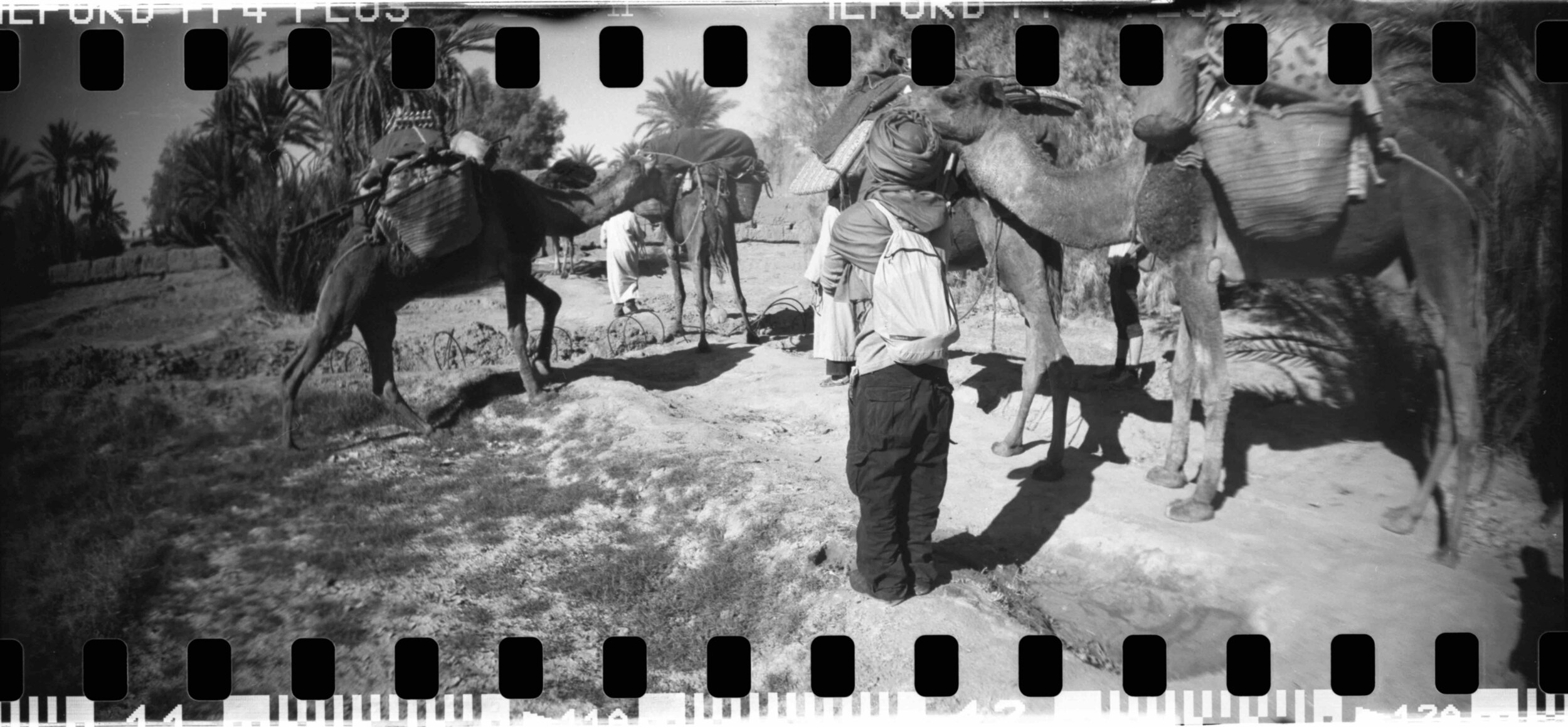
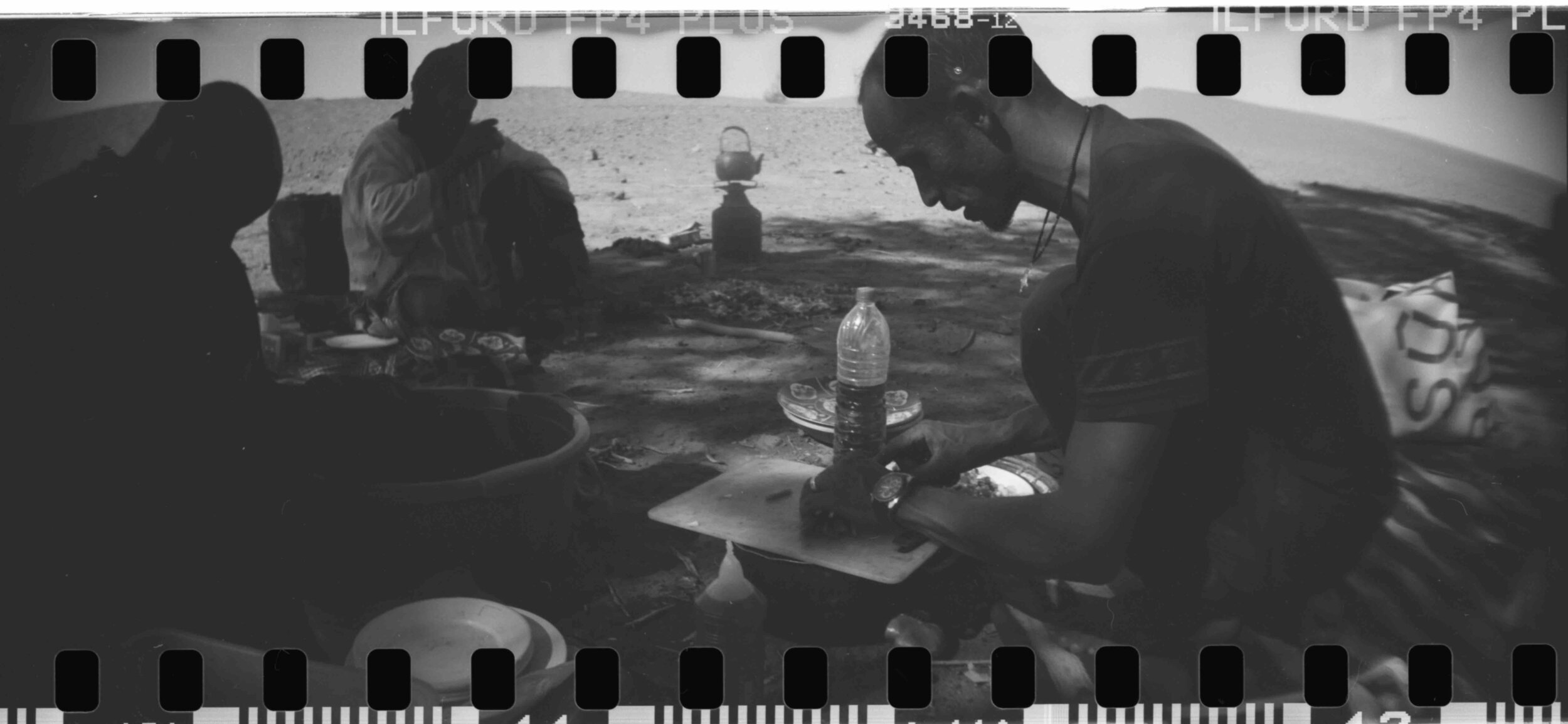
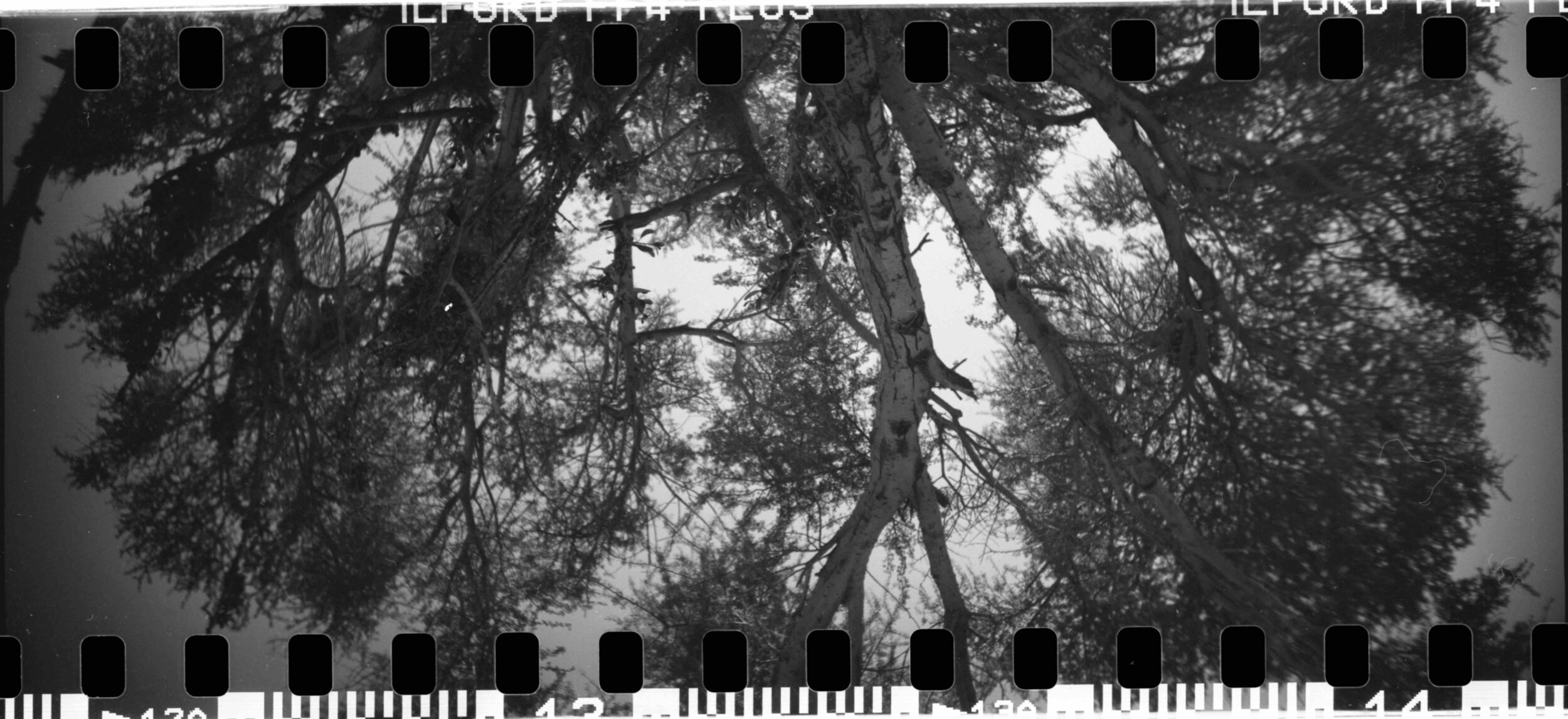
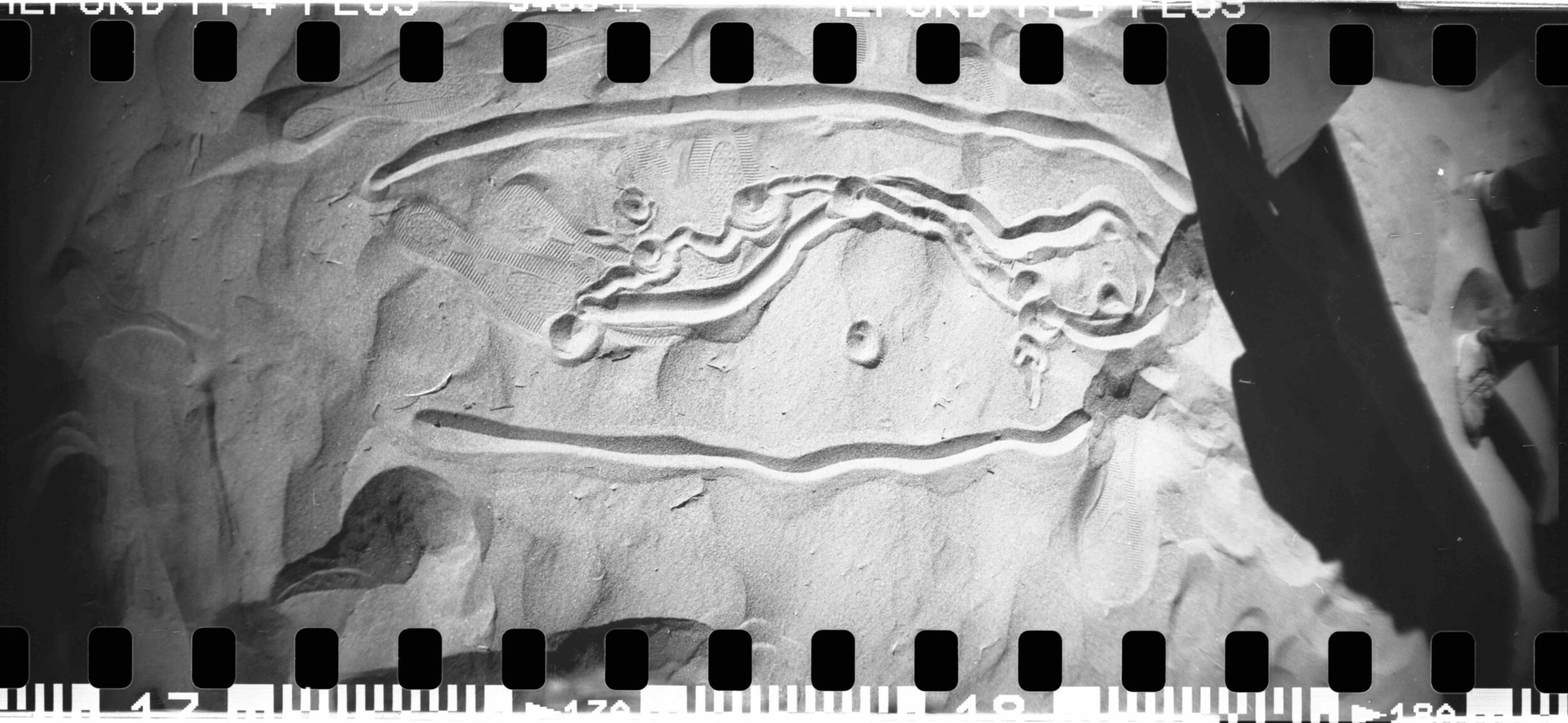
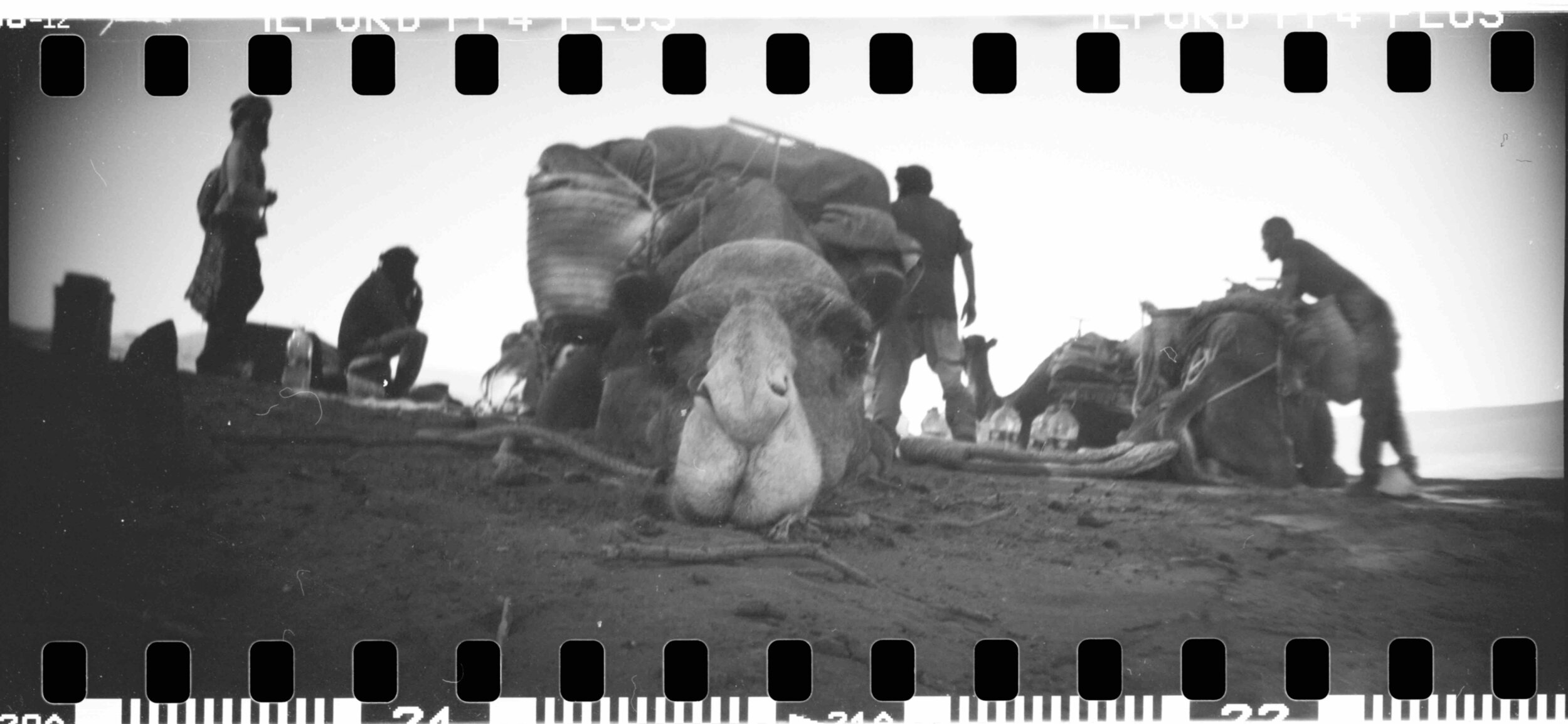

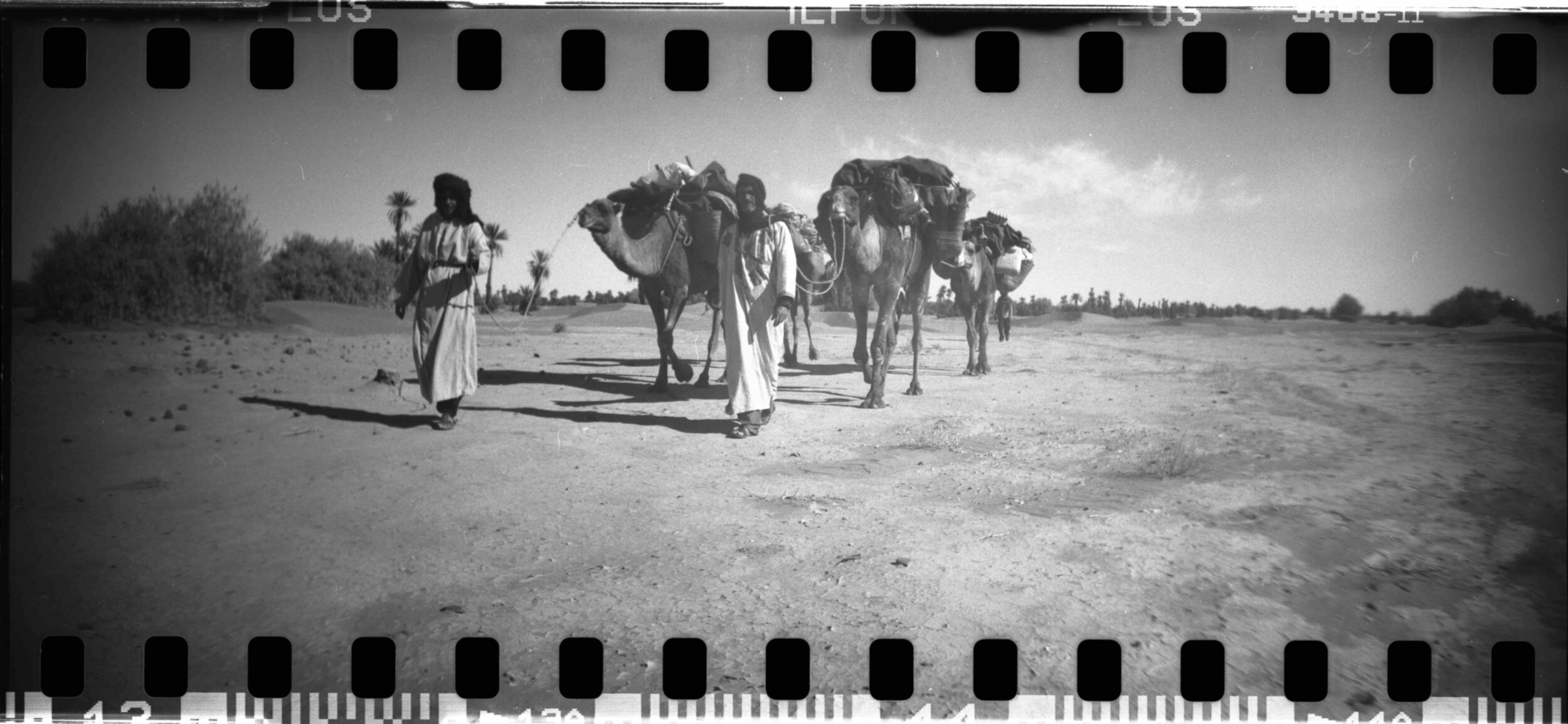
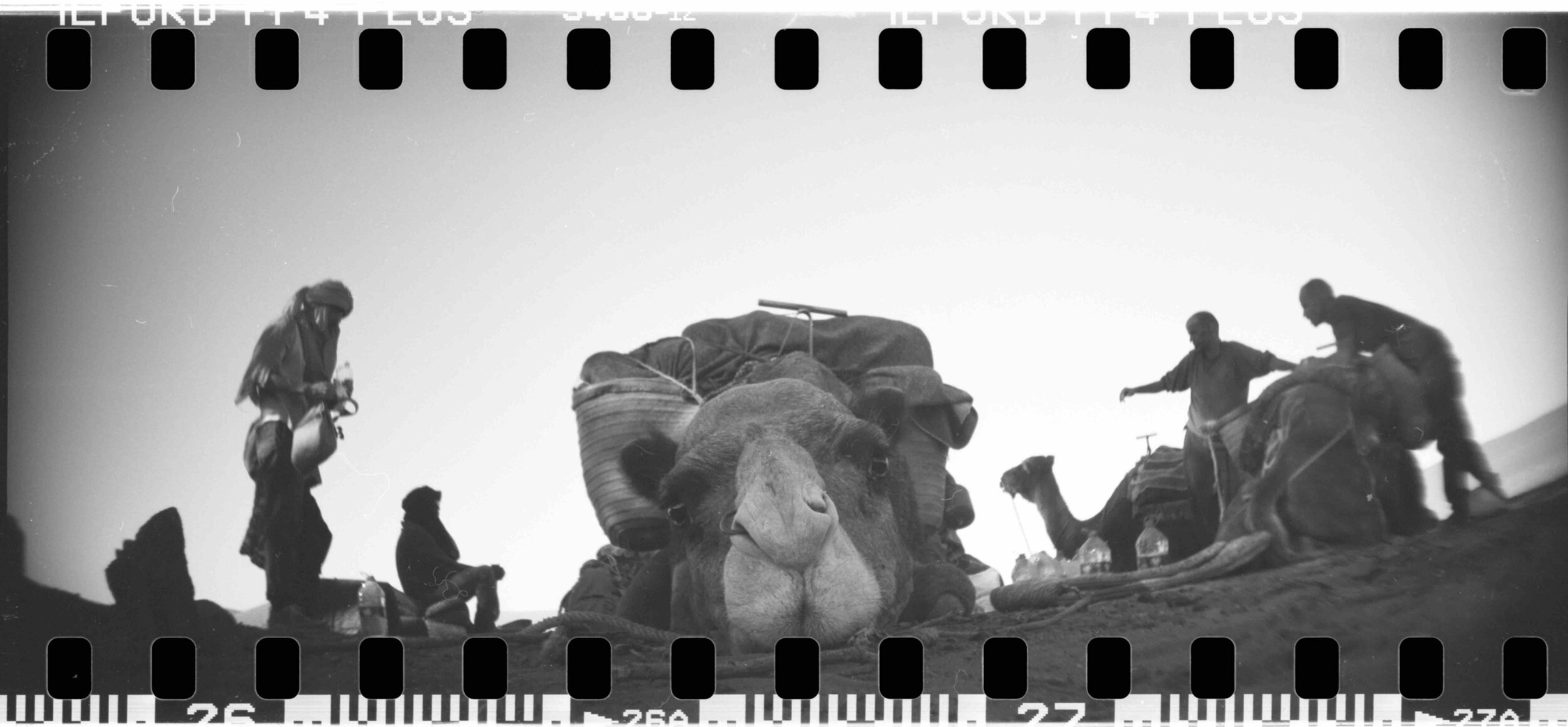
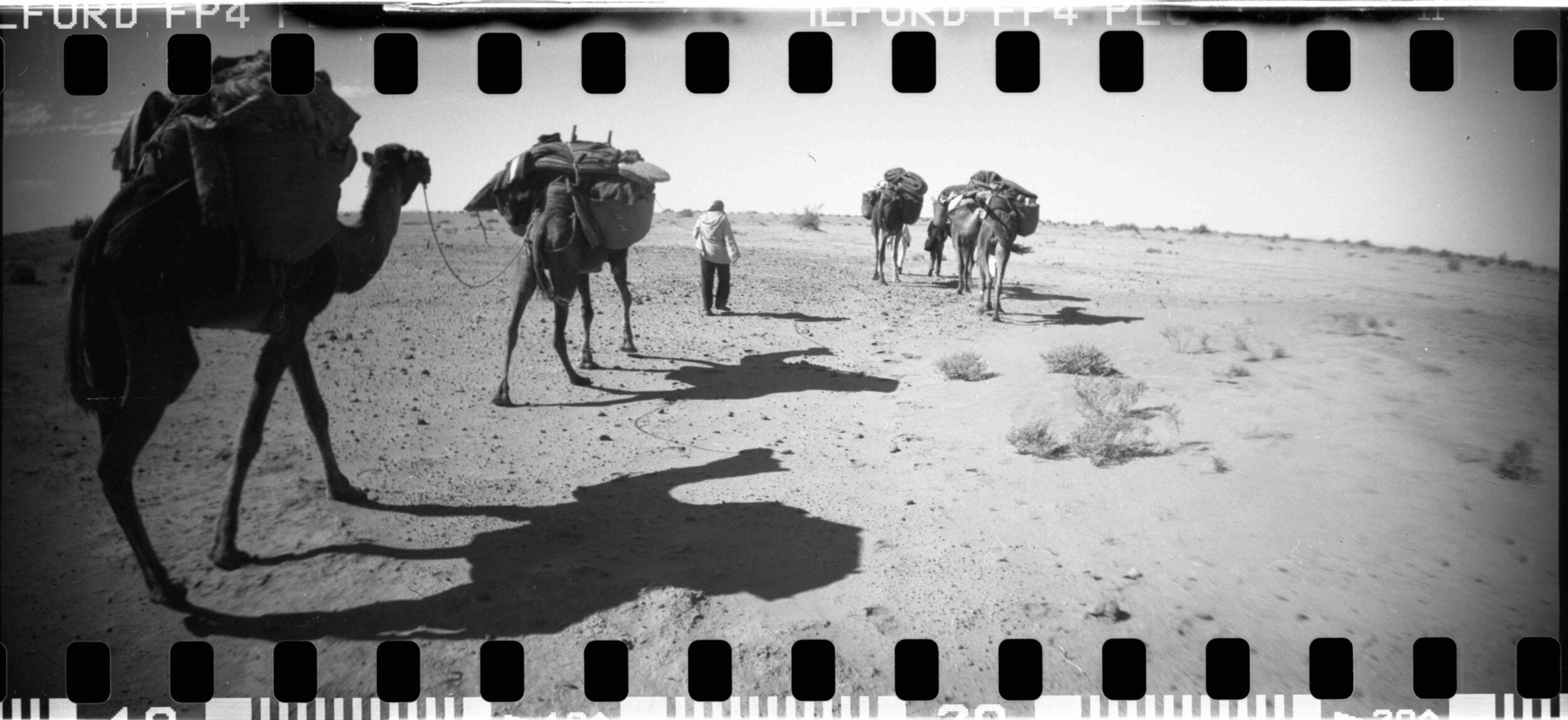
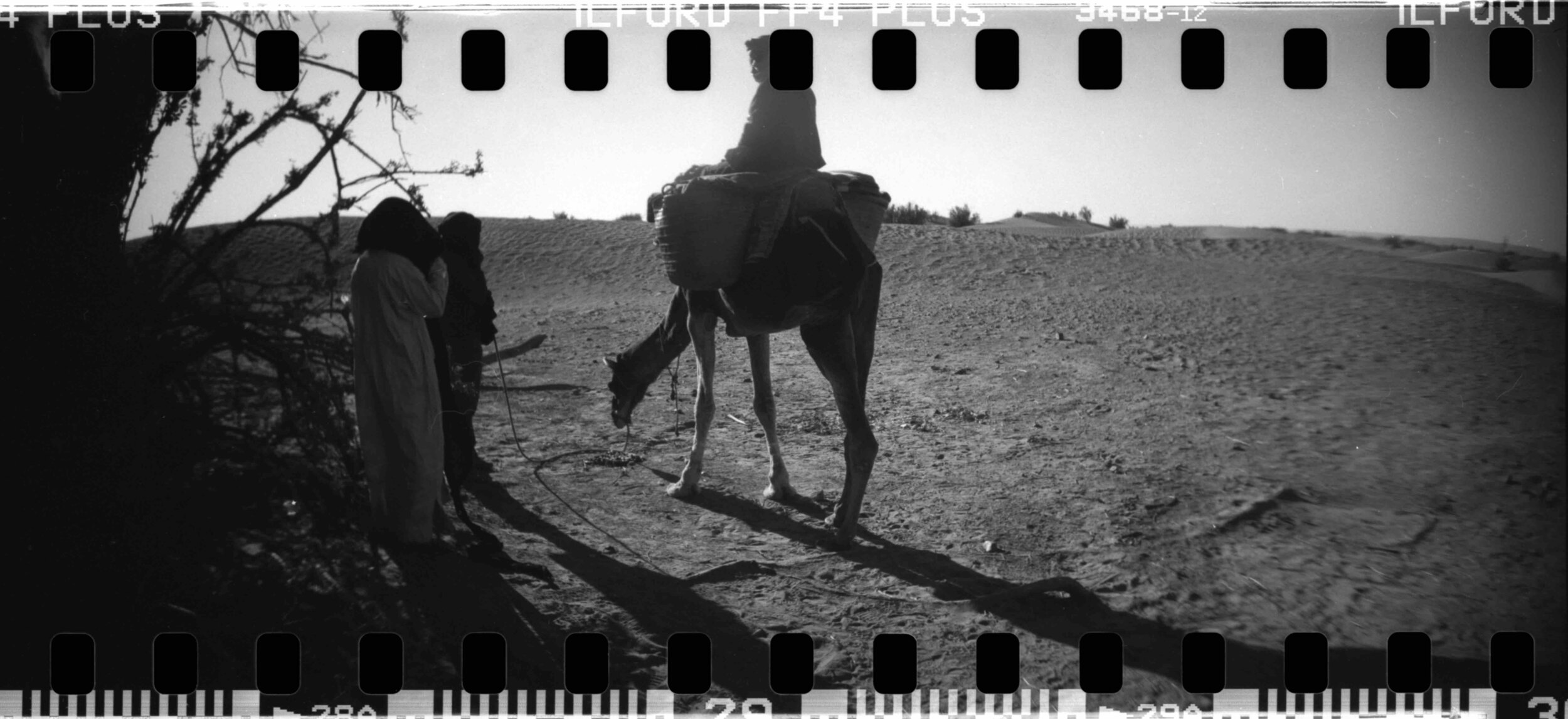
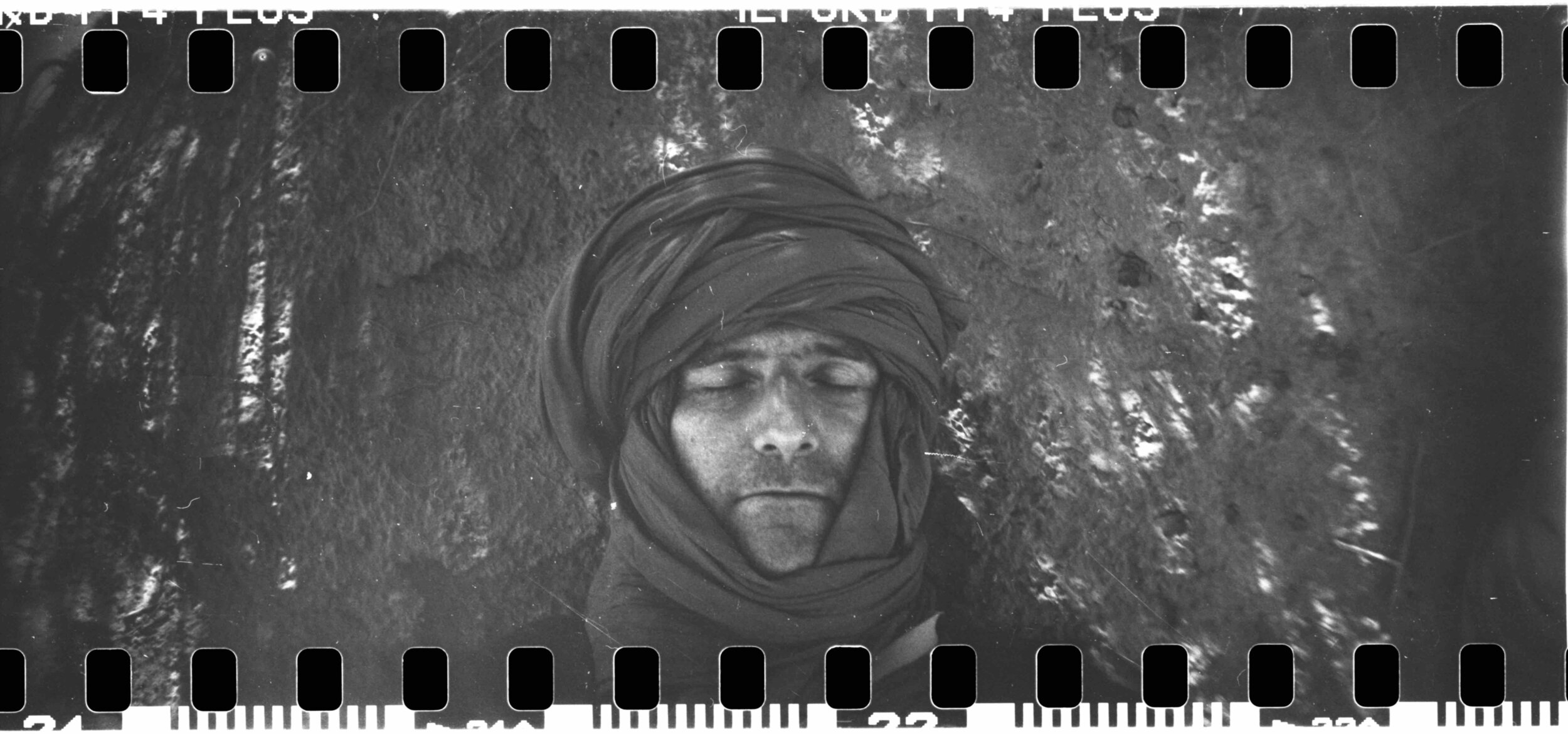
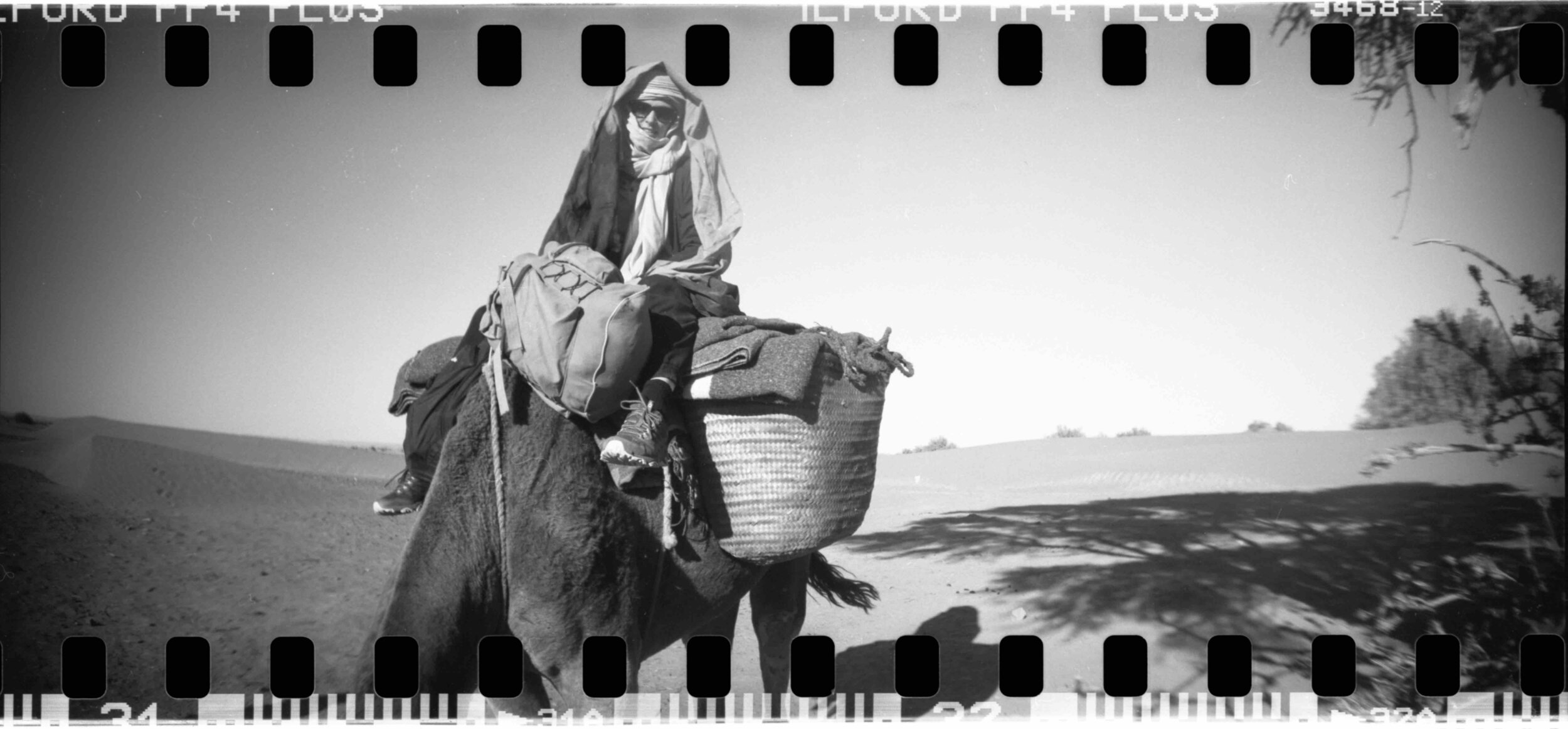

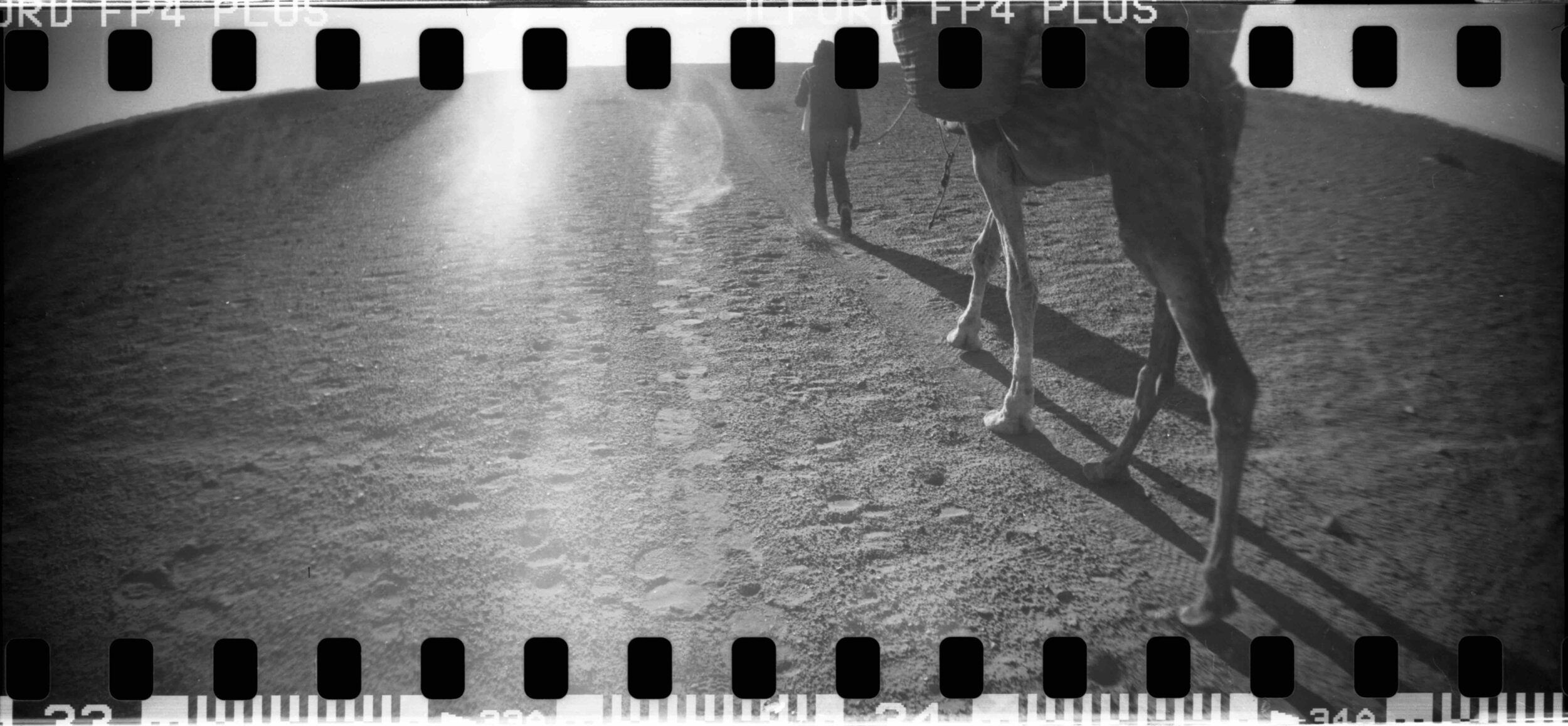
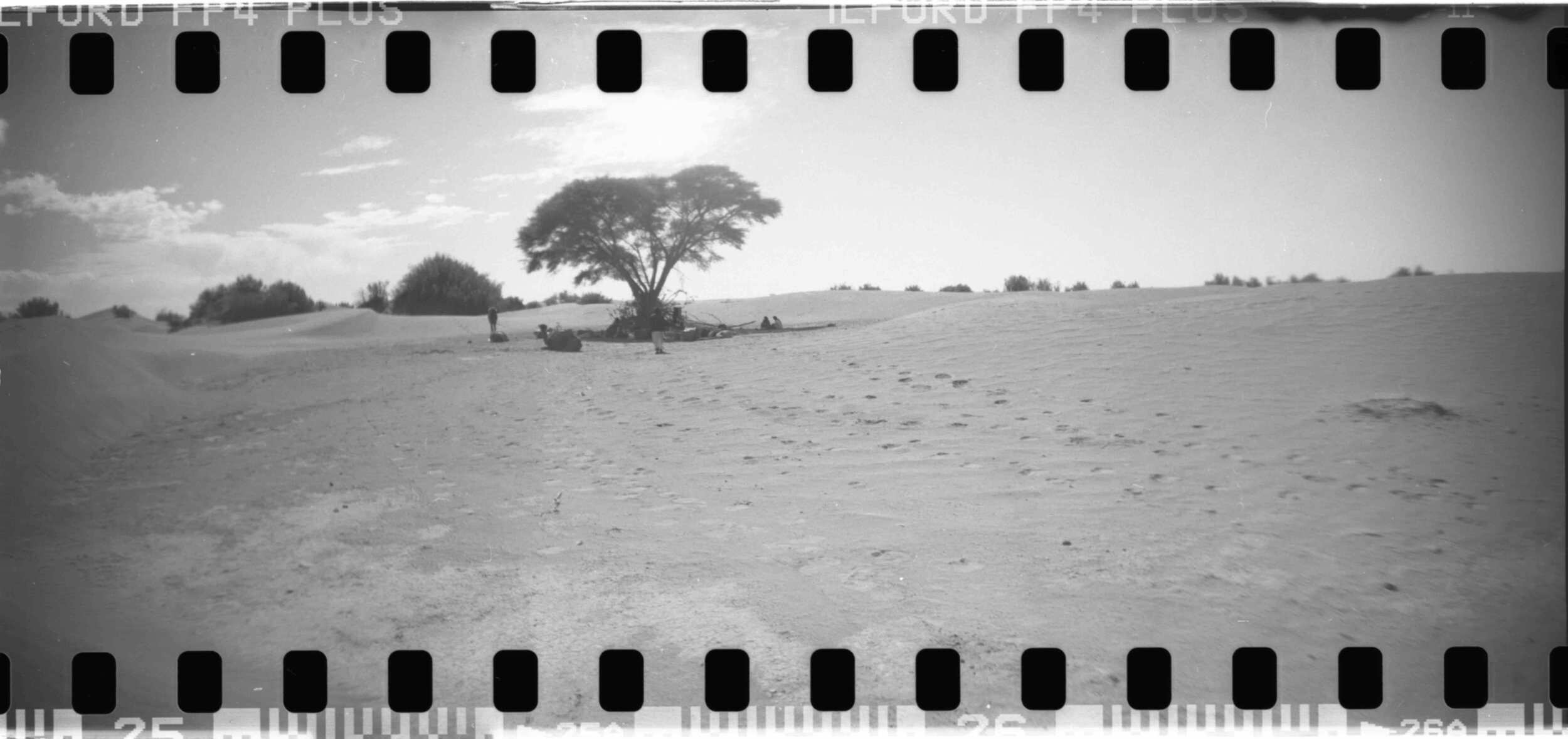
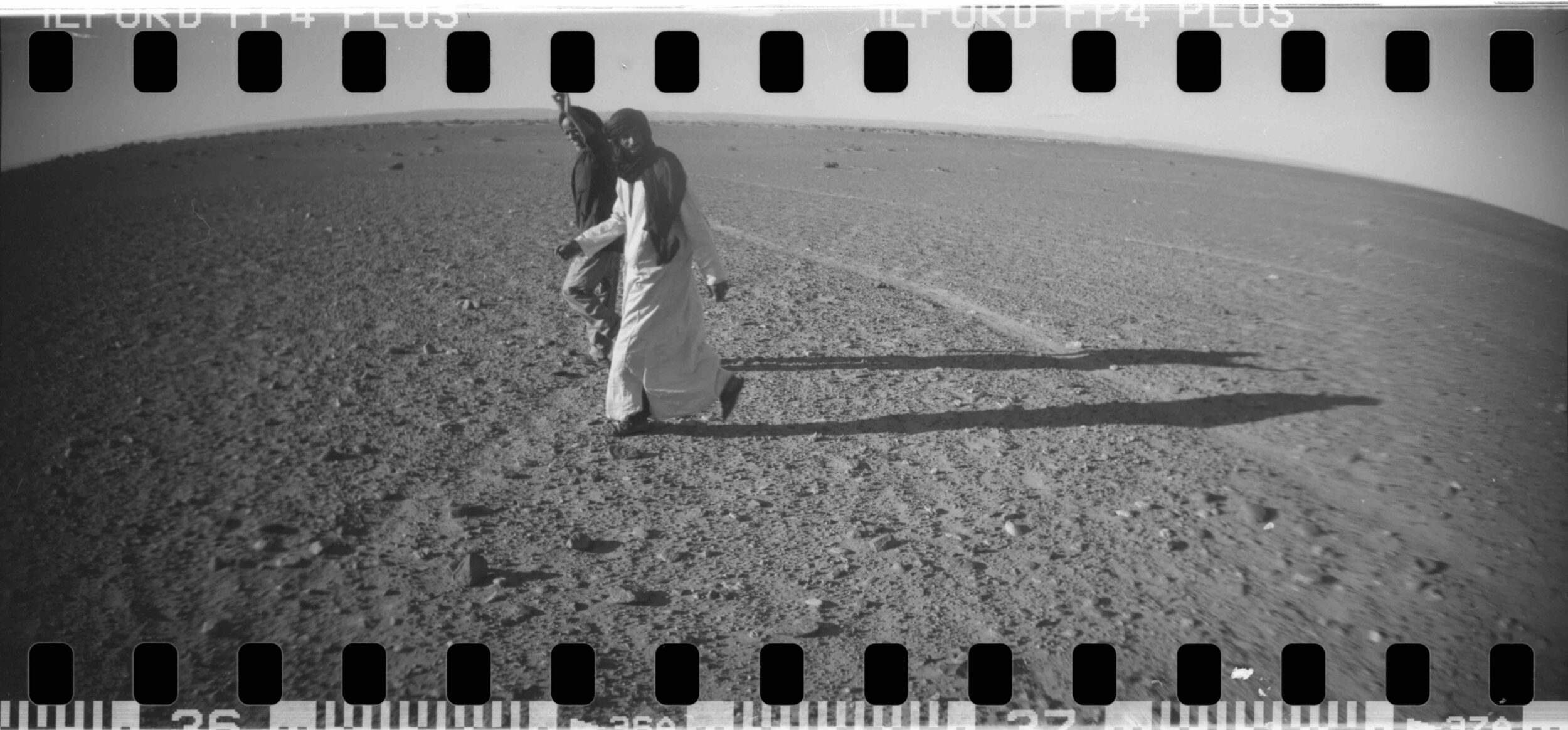
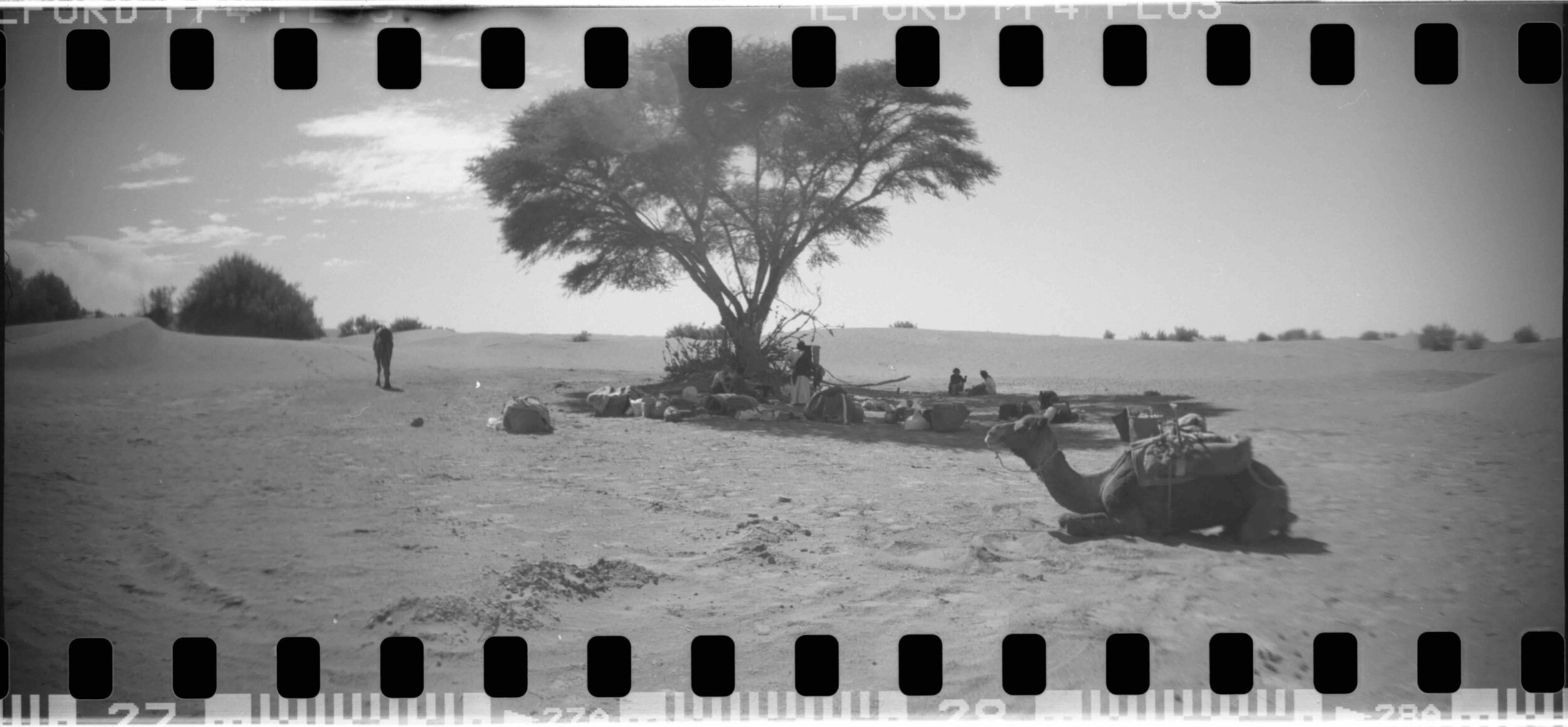
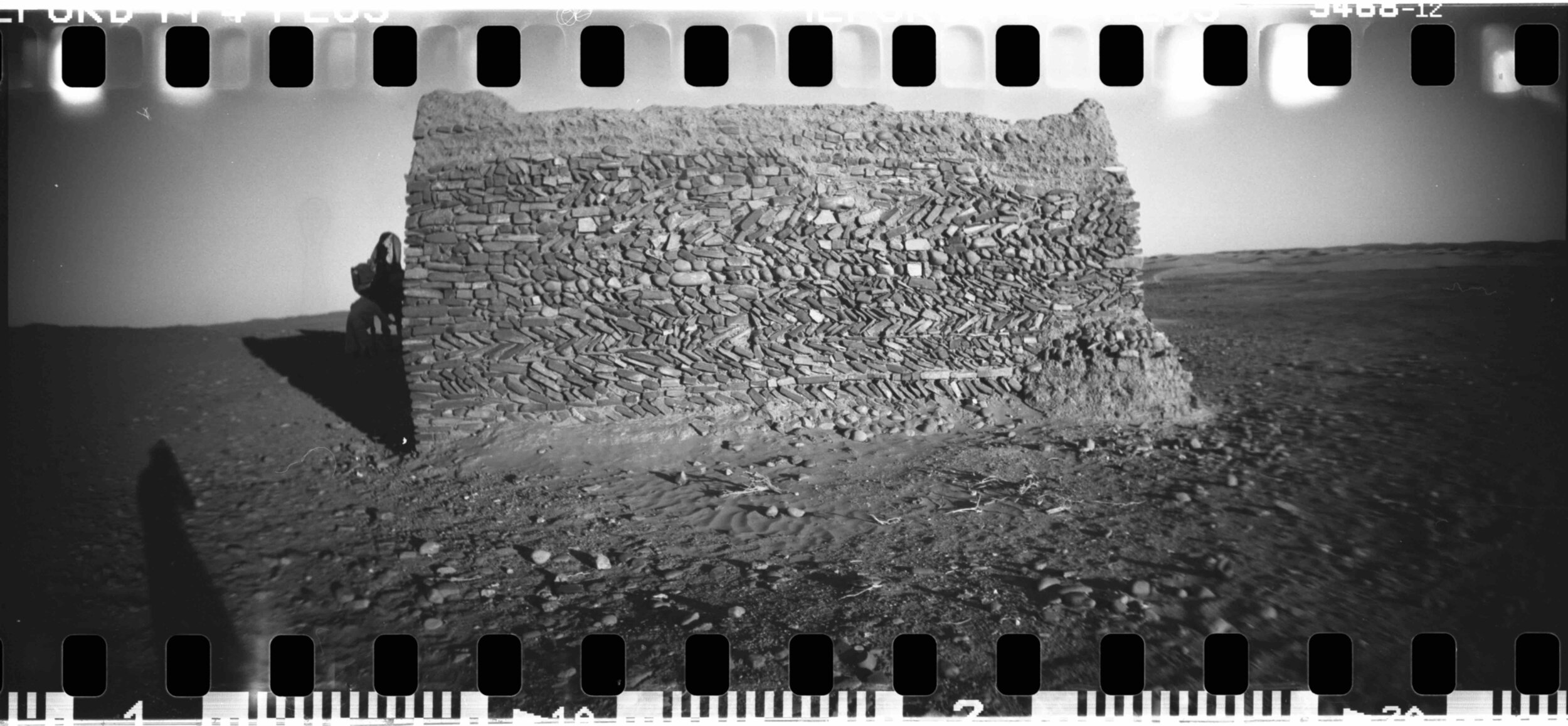
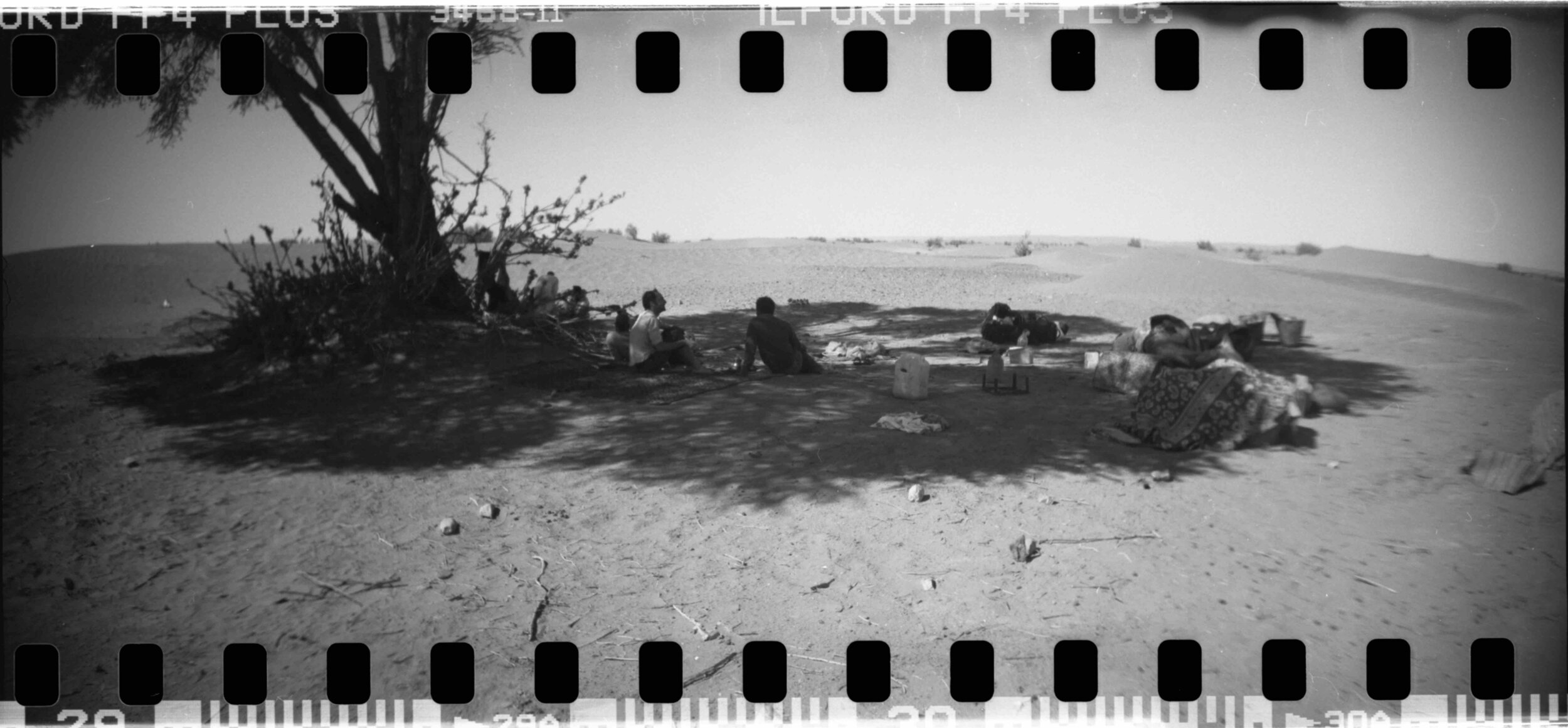
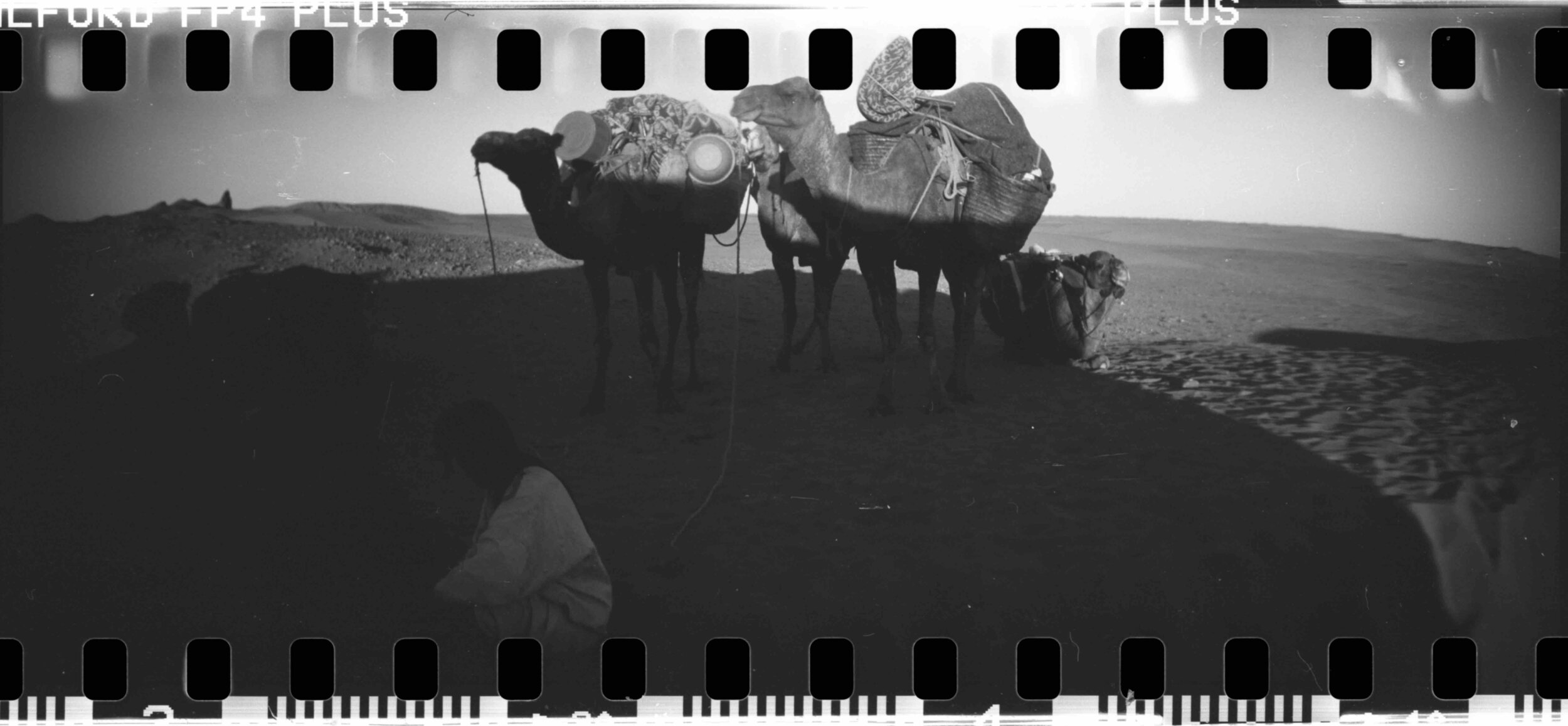
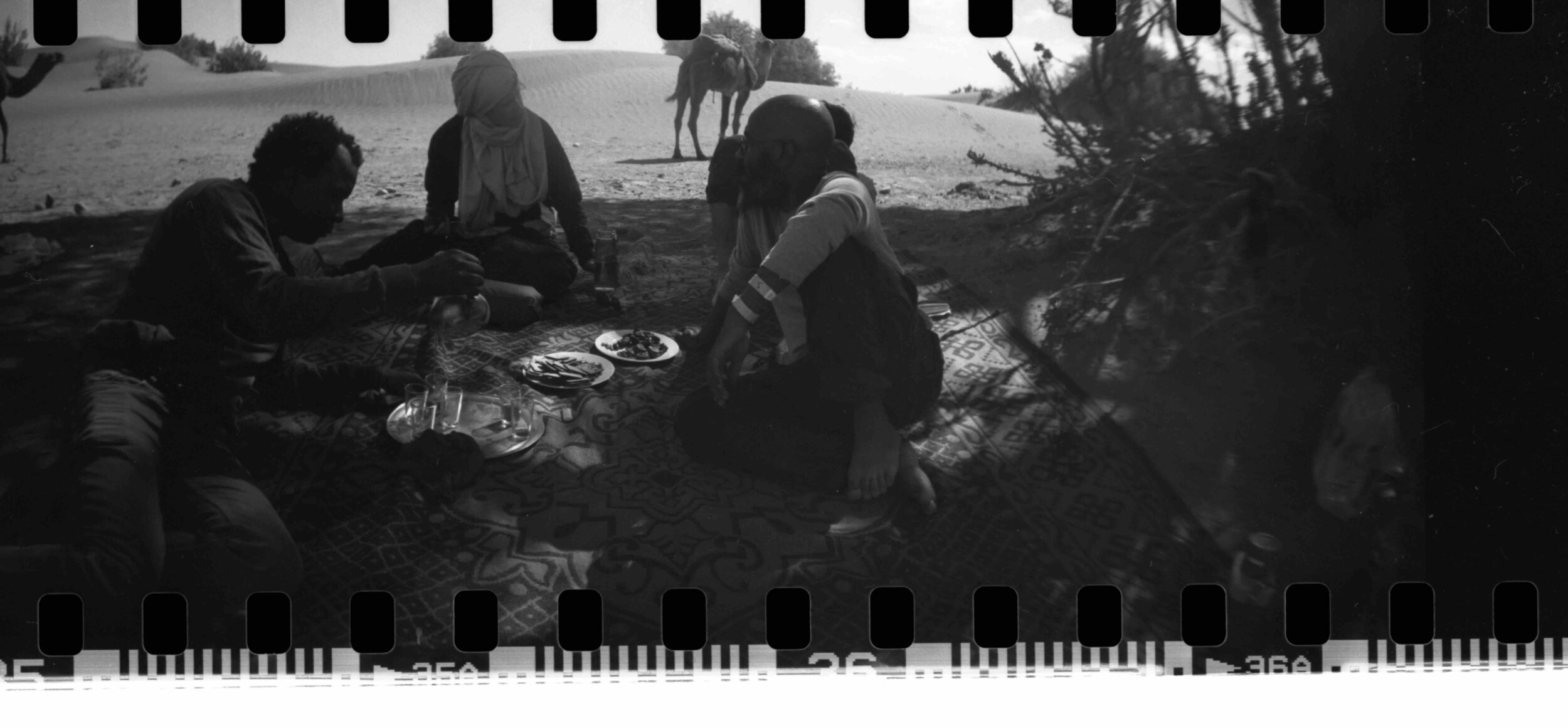
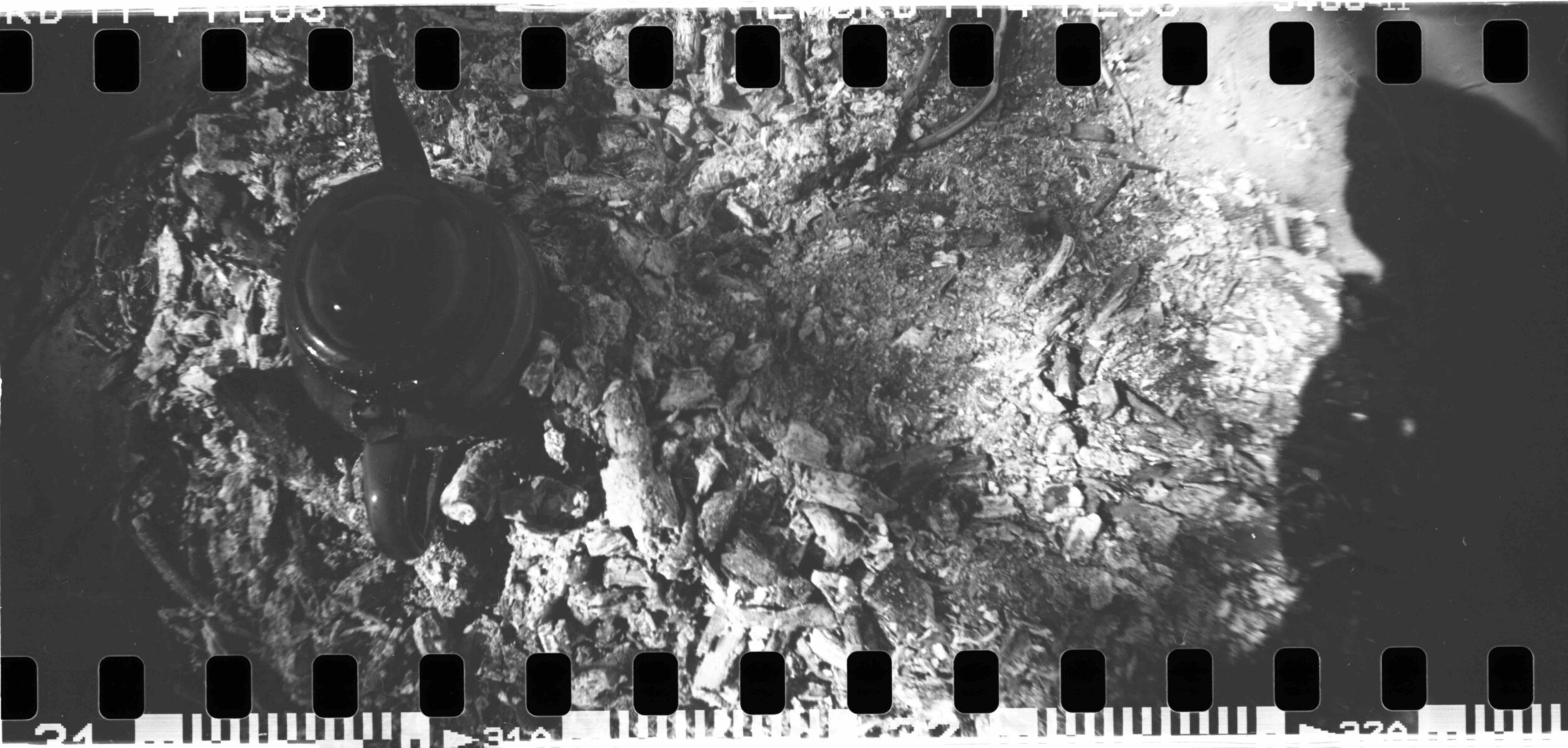
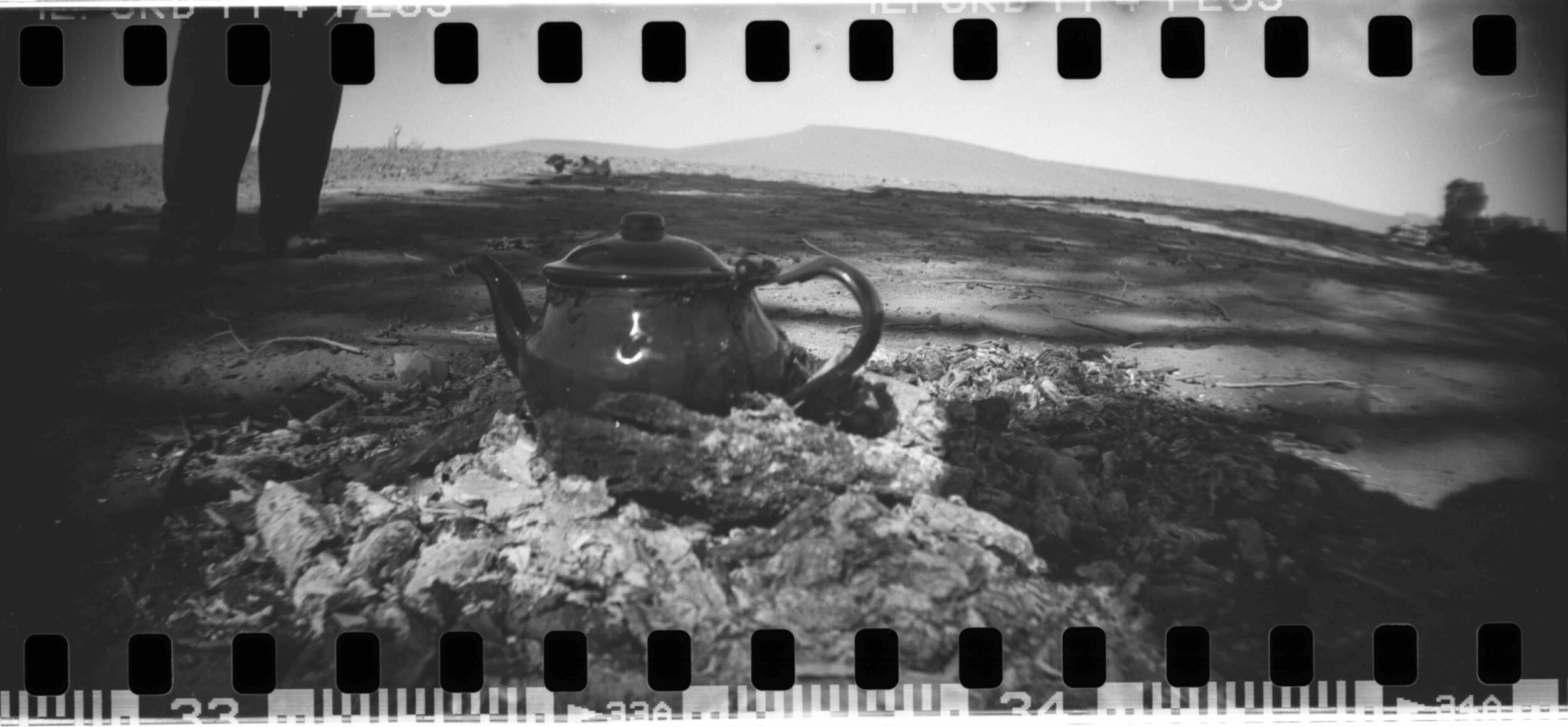
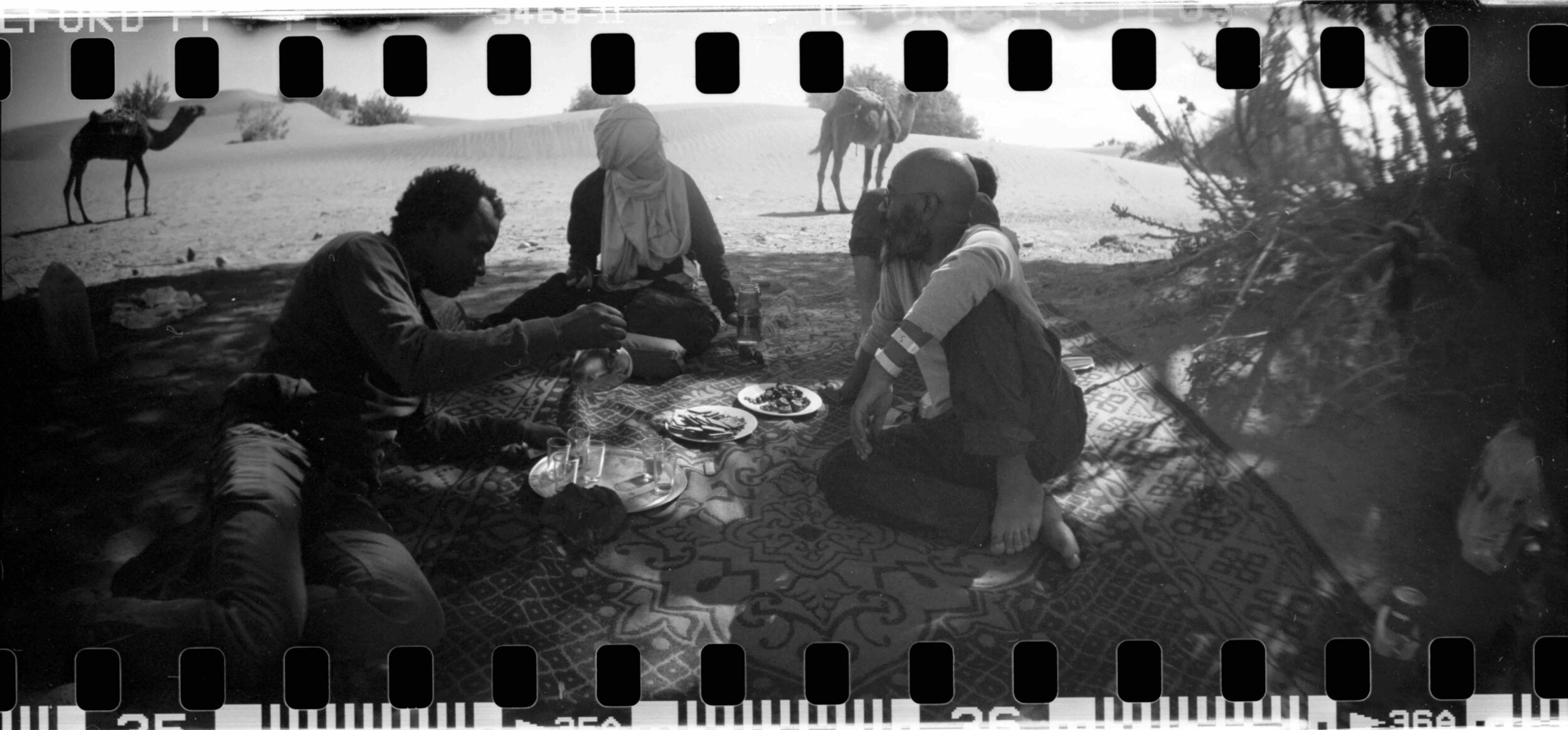
DAY 02
12.10.2016
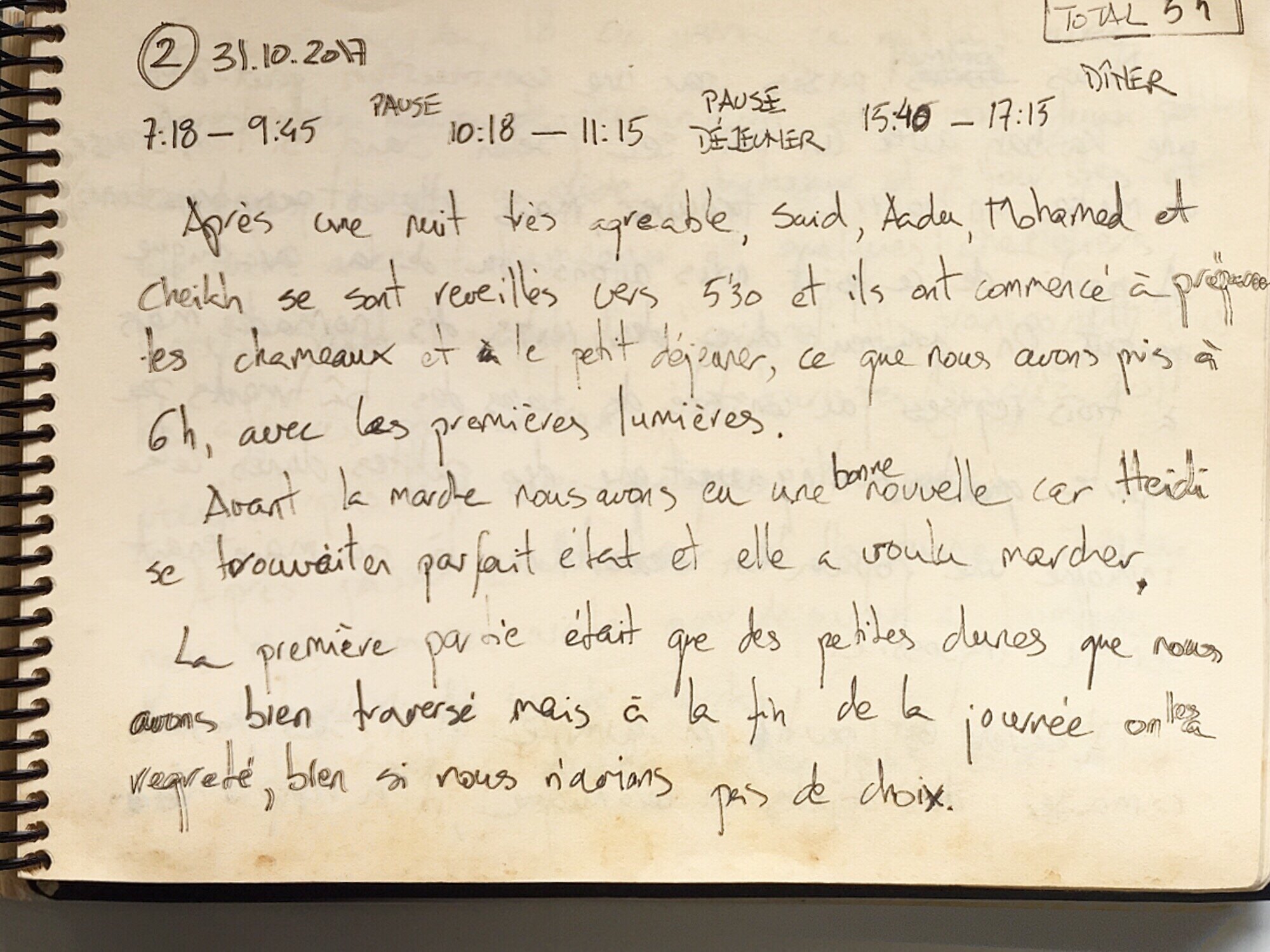
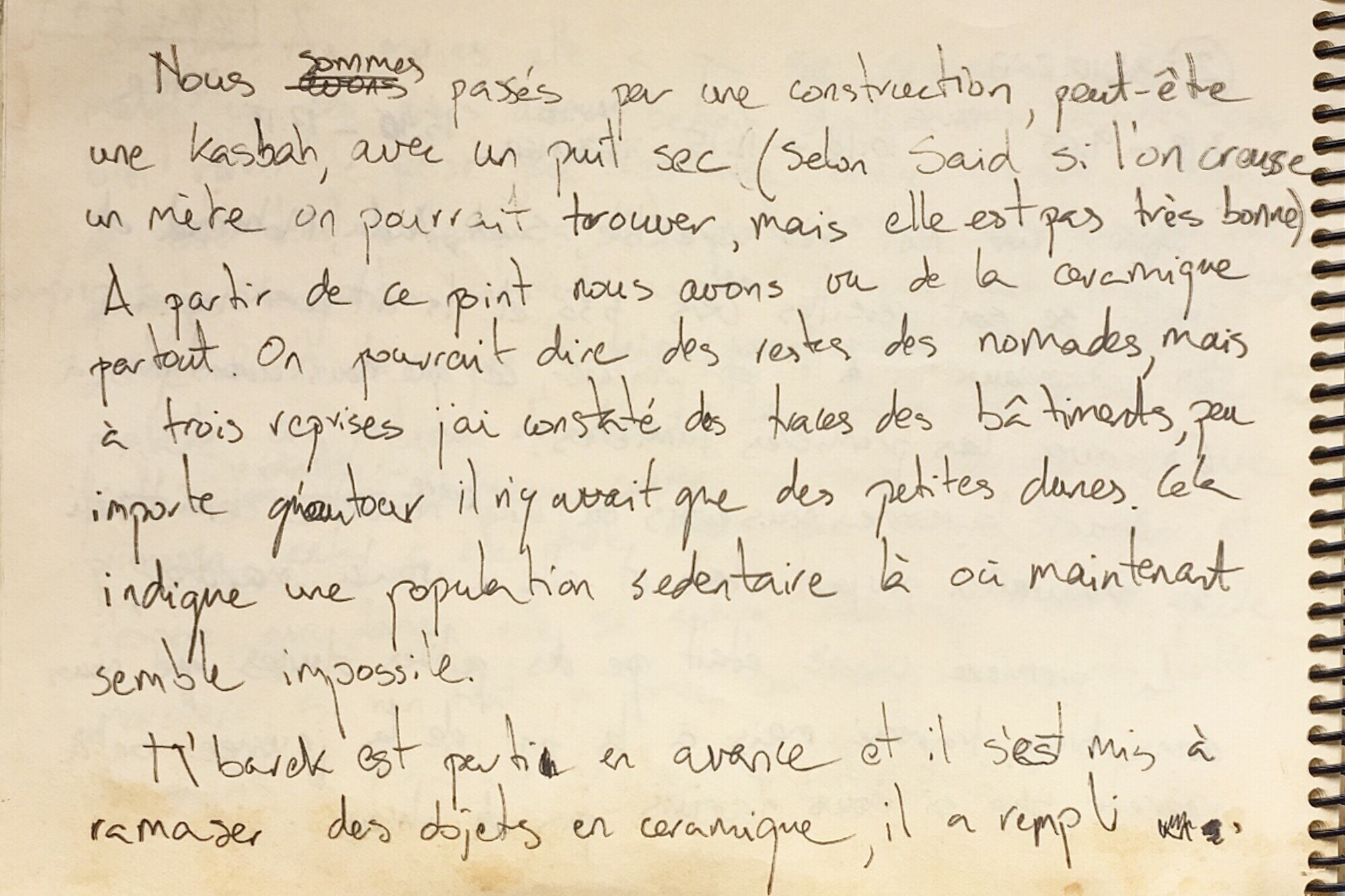
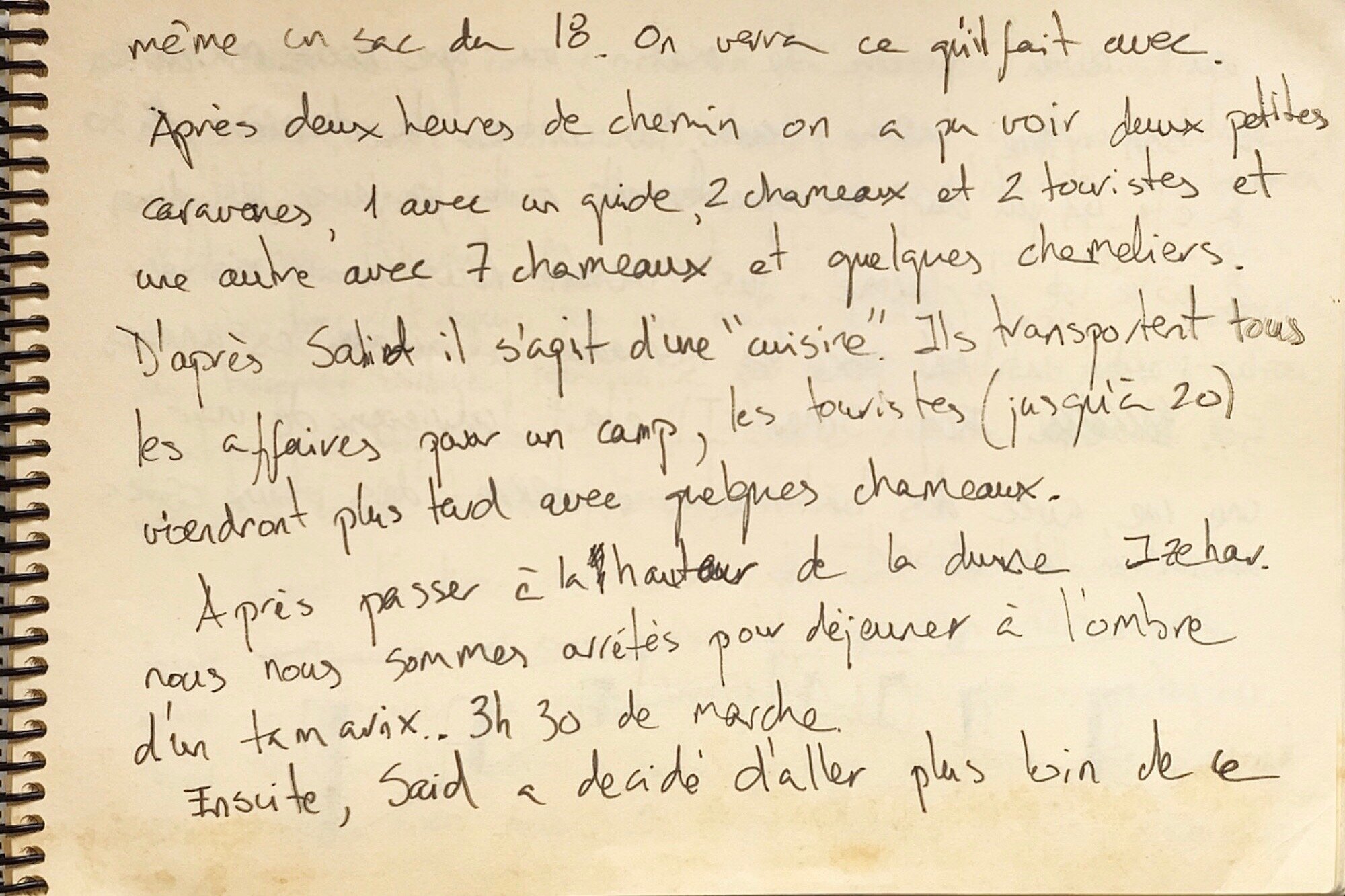
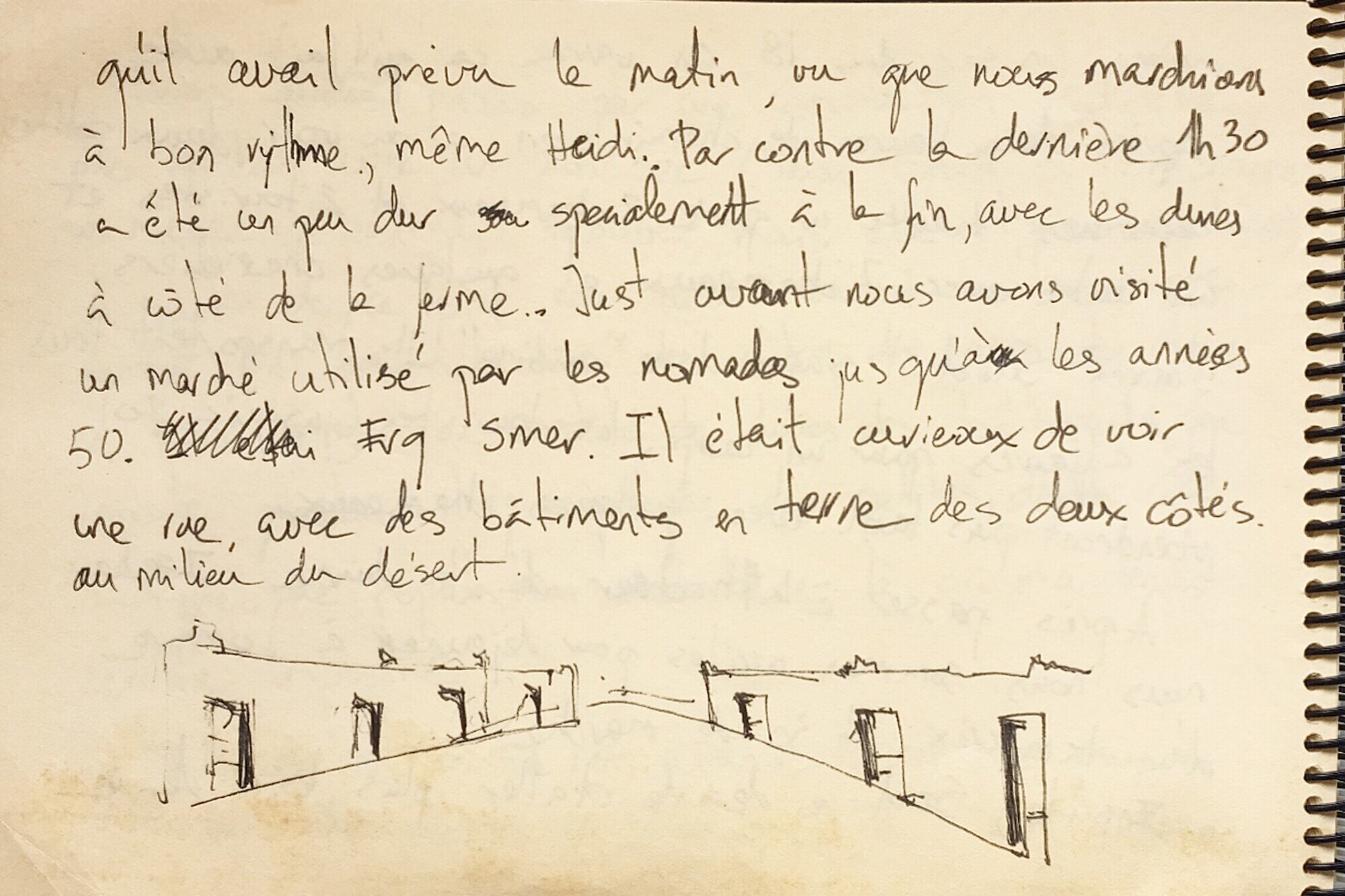
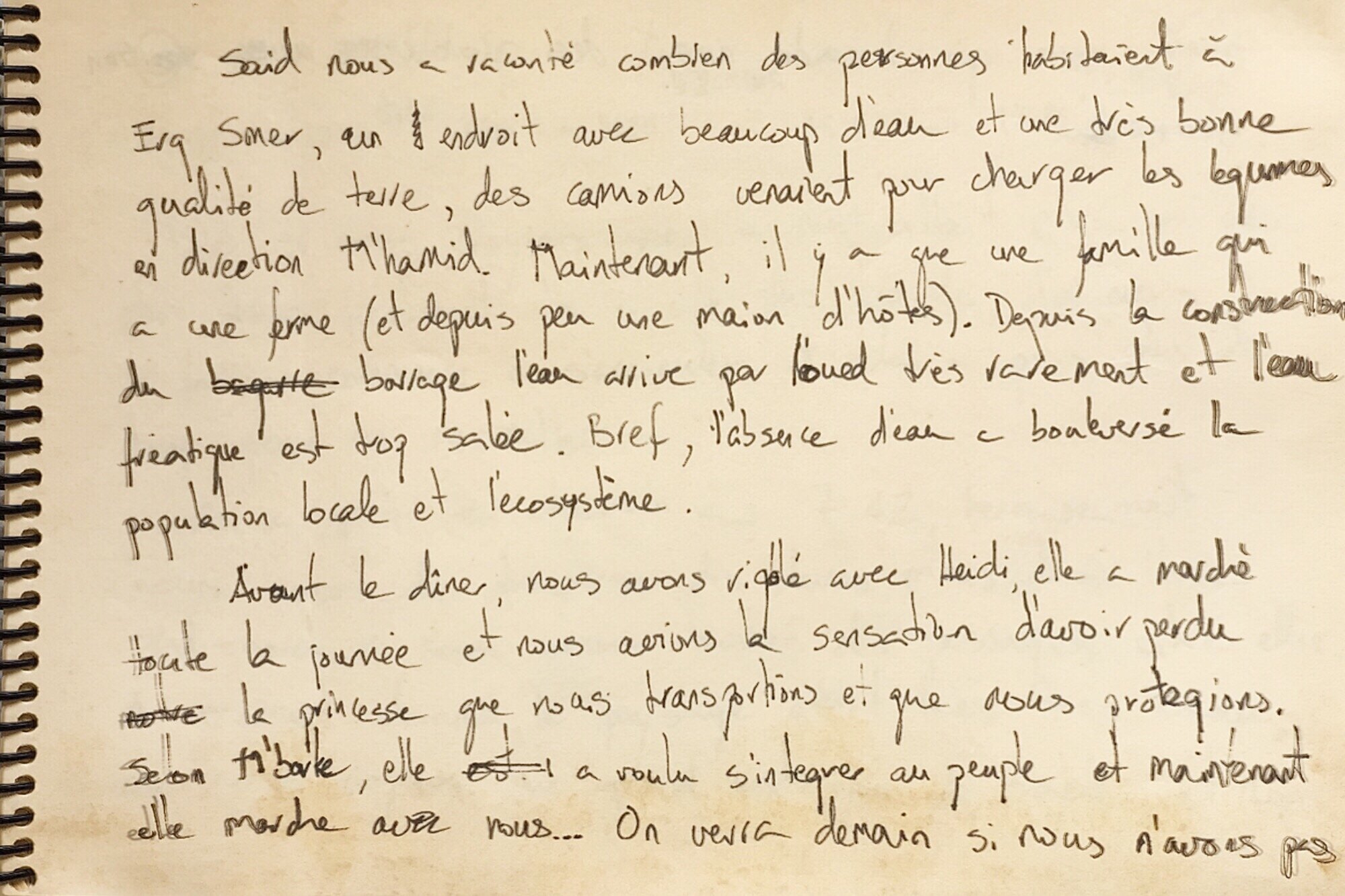
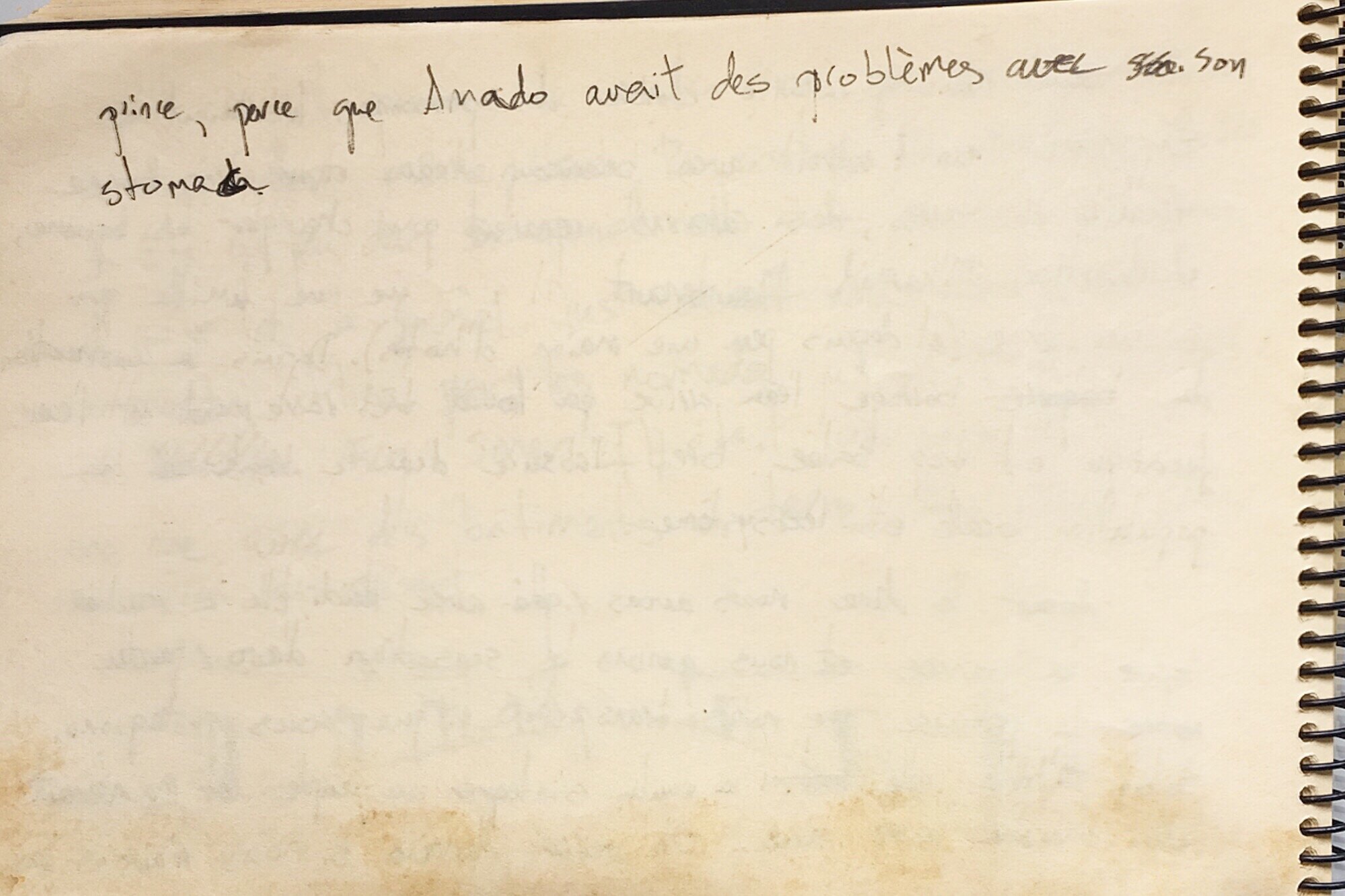
After a very pleasant night, Said, Aadou, Mohamed and Sheikh woke up around 5h30 and they started to prepare the camels and the breakfast, which we had at 6am, with the first lights.
Before the walk, we had good news because Heidi was in perfect condition and she wanted to walk.
The first part there were only small dunes that we crossed without problems but at the end of the day we regretted them, we had no choice.
----------
We went through a building, maybe a casbah, with a dry well (according to Said if we dug a meter, we could find some, but it is not very good).
From this point we have seen ceramics everywhere. One could say remains of the nomads, but on three occasions I also noticed traces of buildings, it doesn’t matter if there were only small dunes around. This indicates a sedentary population where now it seems impossible.
M'barek left in advance and started to pick up some ceramic pieces, he filled
----------
even a bag of Le 18. We'll see what he does with them.
After two hours, we saw two small caravans, one with a guide, two camels and two tourists and another with seven camels and some camel drivers. According to Said, it is a "kitchen". They carry all that is necessary for a camp, the tourists (until 20) will come later with some others camels.
After passing Erg Zahar dune, we stopped for lunch in the shade of a tamarix tree. 3h30 walk.
Afterwards Said decided to go further…
----------
than he had planned in the morning, as we were walking at a good pace, even Heidi. On the other side, the last 1h30 was a little bit hard, especially at the end, with the dunes next to the farm. Just before, we visited a market used by nomads until the 50's, in Erg Smer. It was curious to see a street, with earthen buildings on both sides in the middle of the desert.
----------
Said told us how many people lived in Erg Smer, a place with a lot of water and a very good quality of soil, trucks came to load the vegetables towards M'hamid. Now, there is only one family that has a farm (and recently a guest house). Since the construction of the dam, water has been coming through the river very rarely and the water is too salty. In short, the lack of water has upset the local population and the ecosystem.
----------
Before dinner, we laughed with Heidi, she walked all day and we had the feeling of having lost the princess we were transporting and protecting. According to M'barek, she wanted to integrate with the people and now she walks with us. We'll see tomorrow if we do not have…
----------
a prince, because Amado had problems with his stomach.
DAY 03
13.10.2016
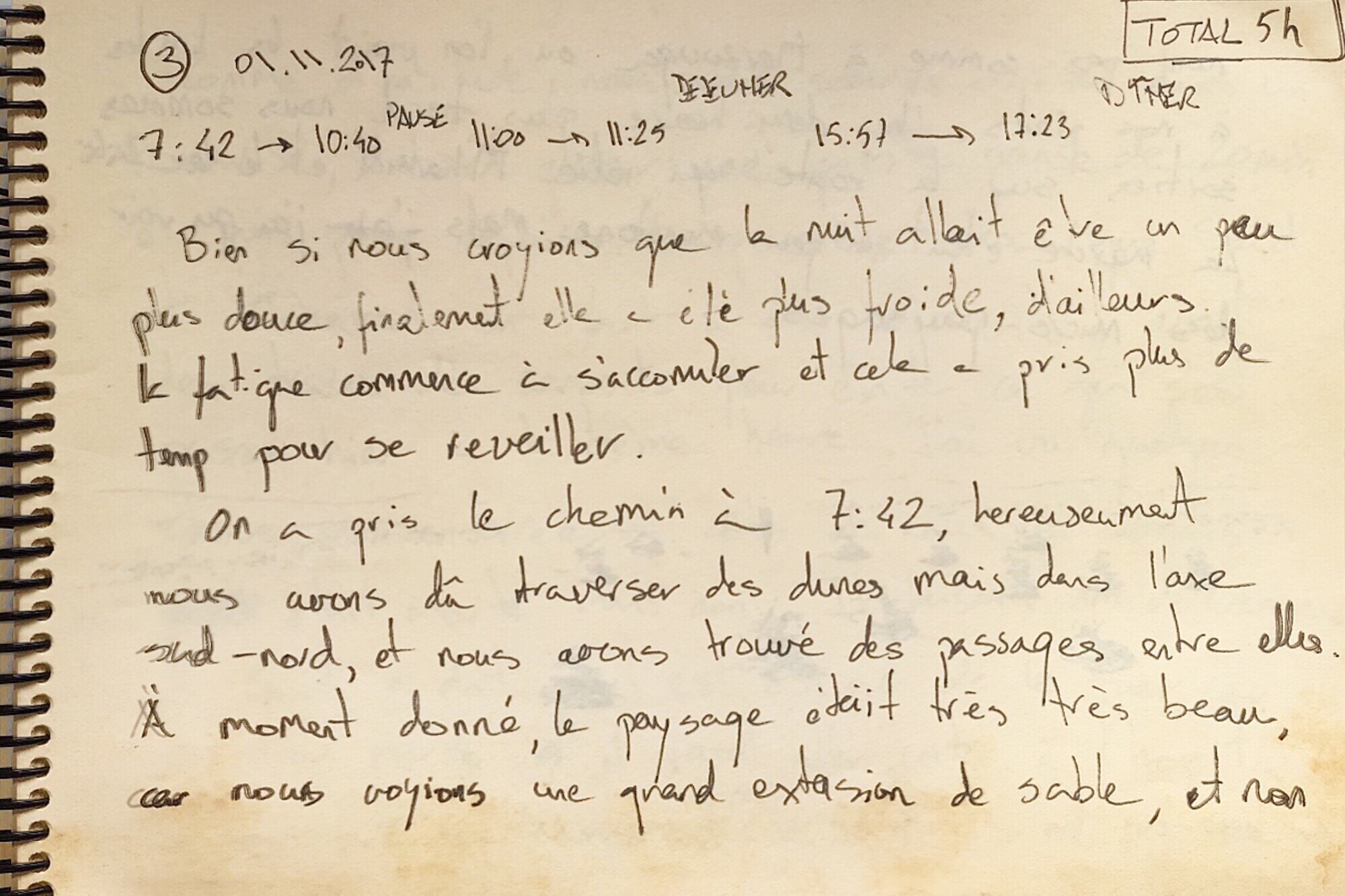
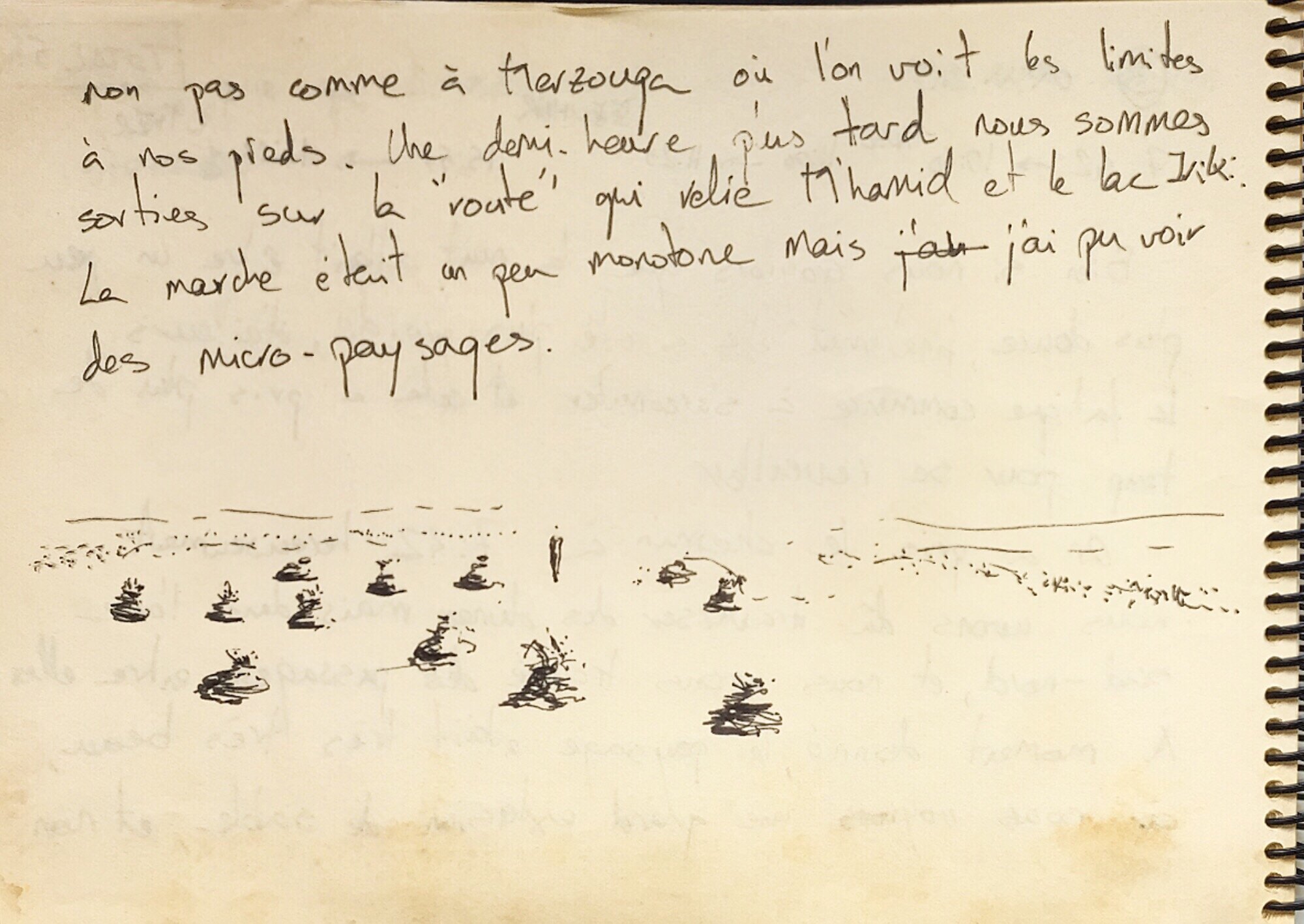
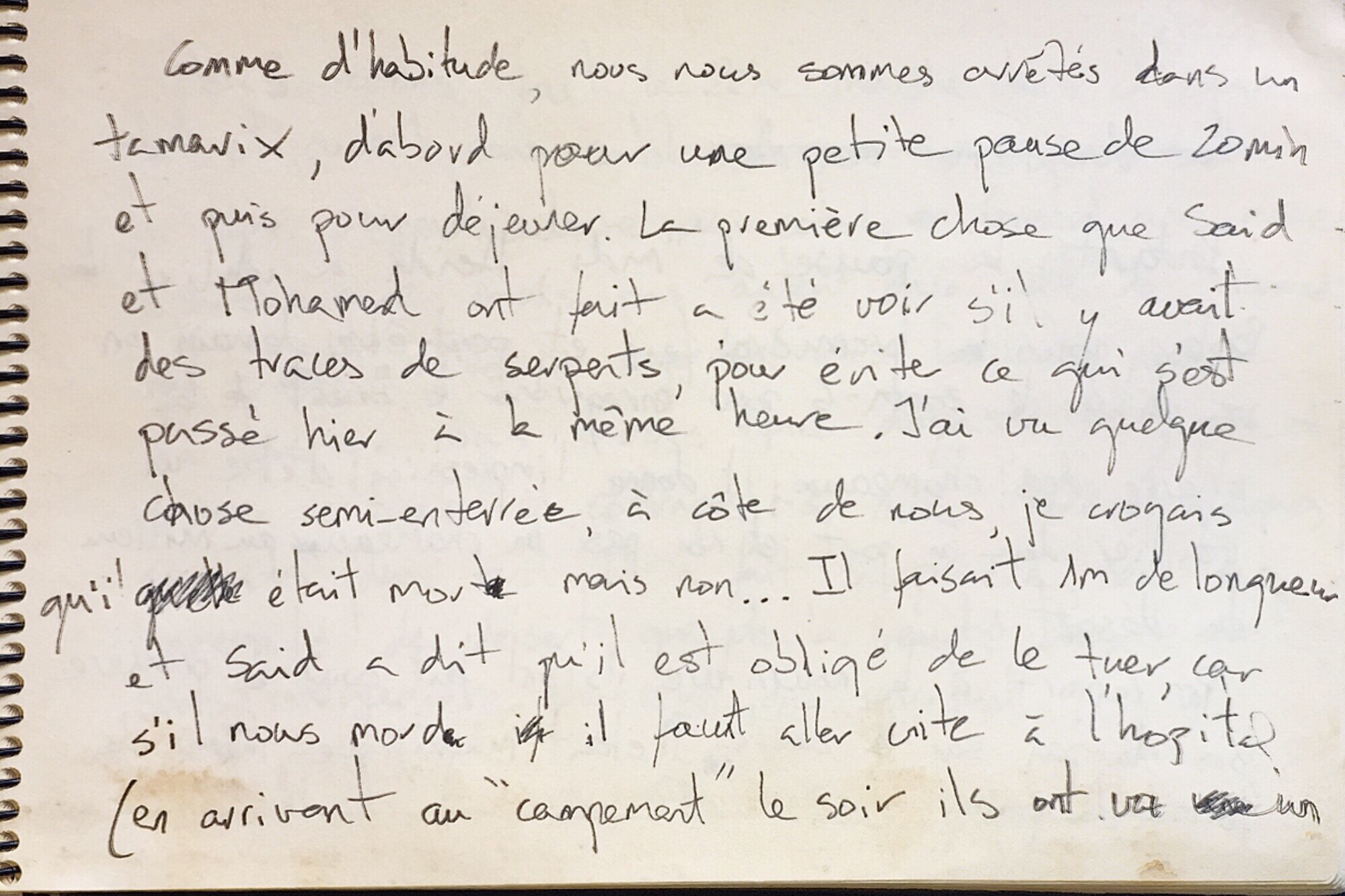
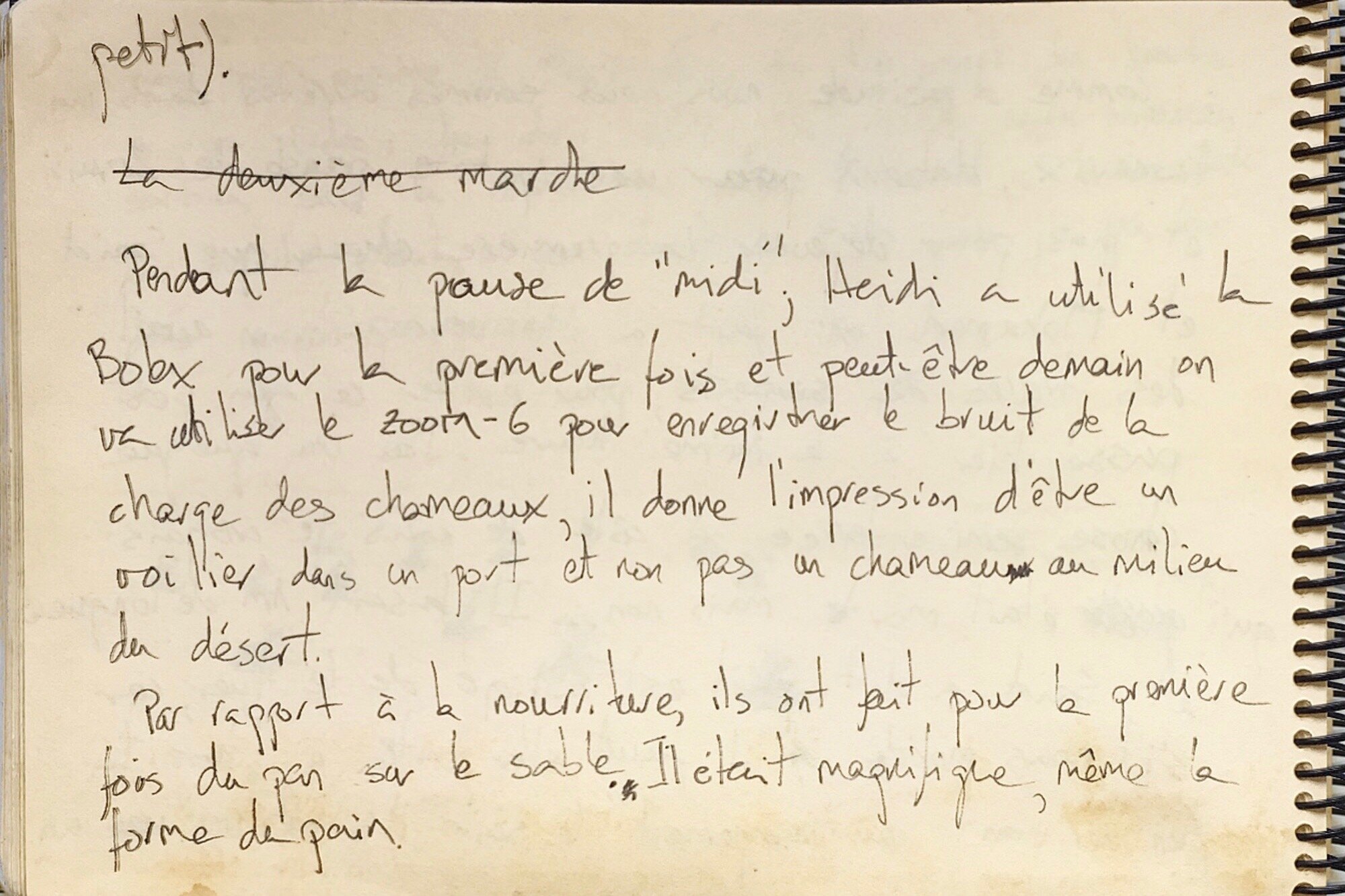
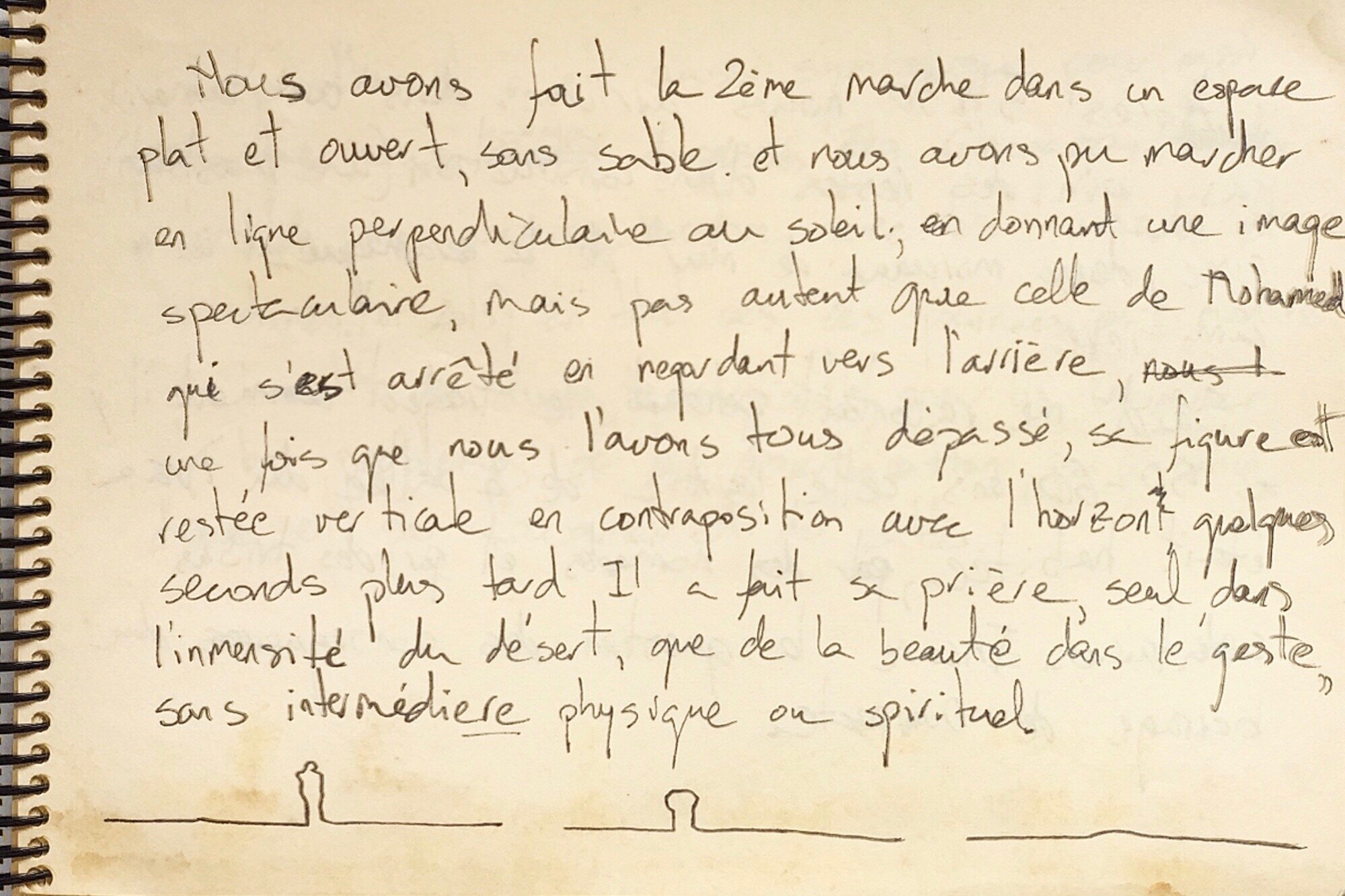
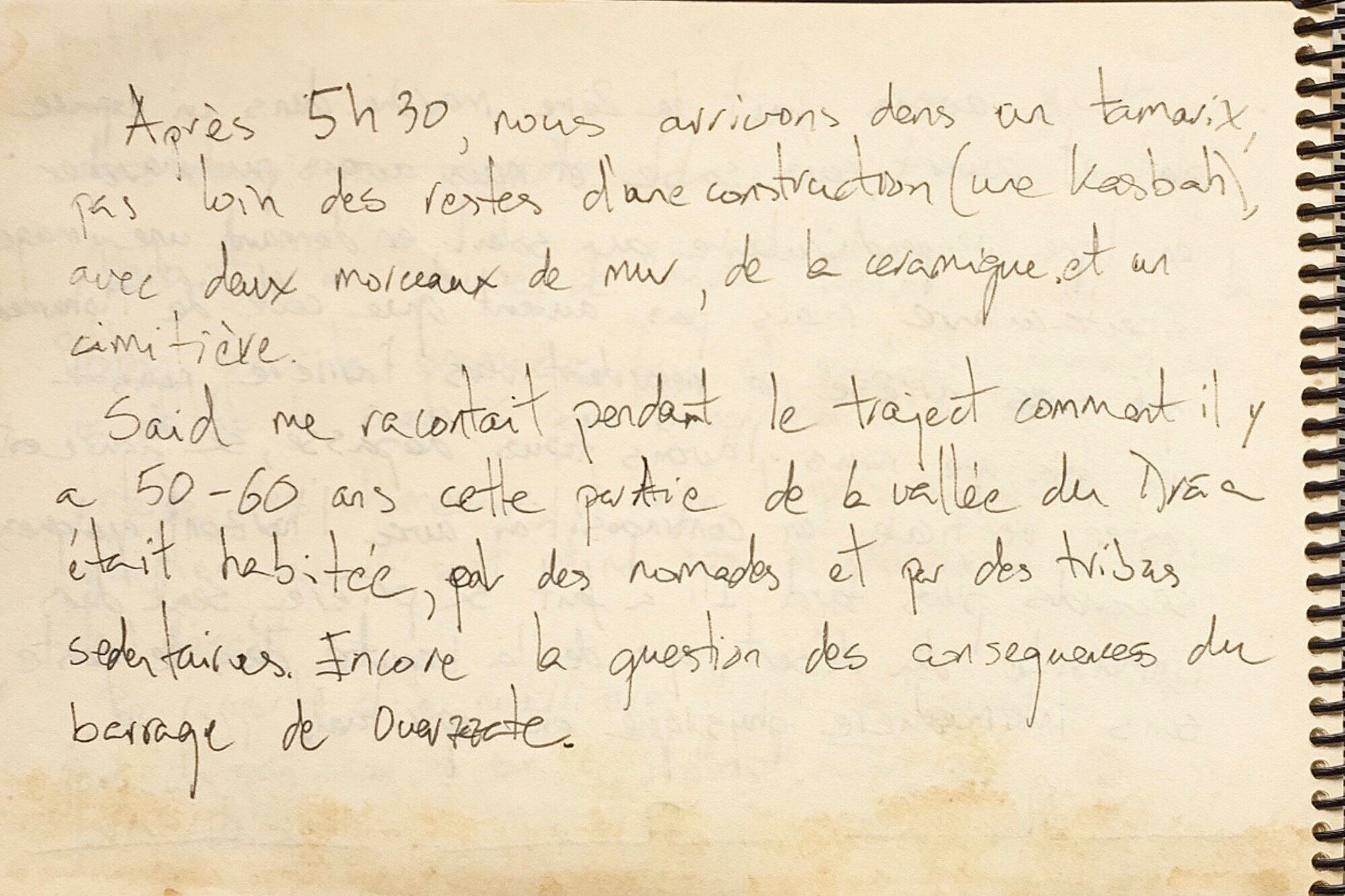
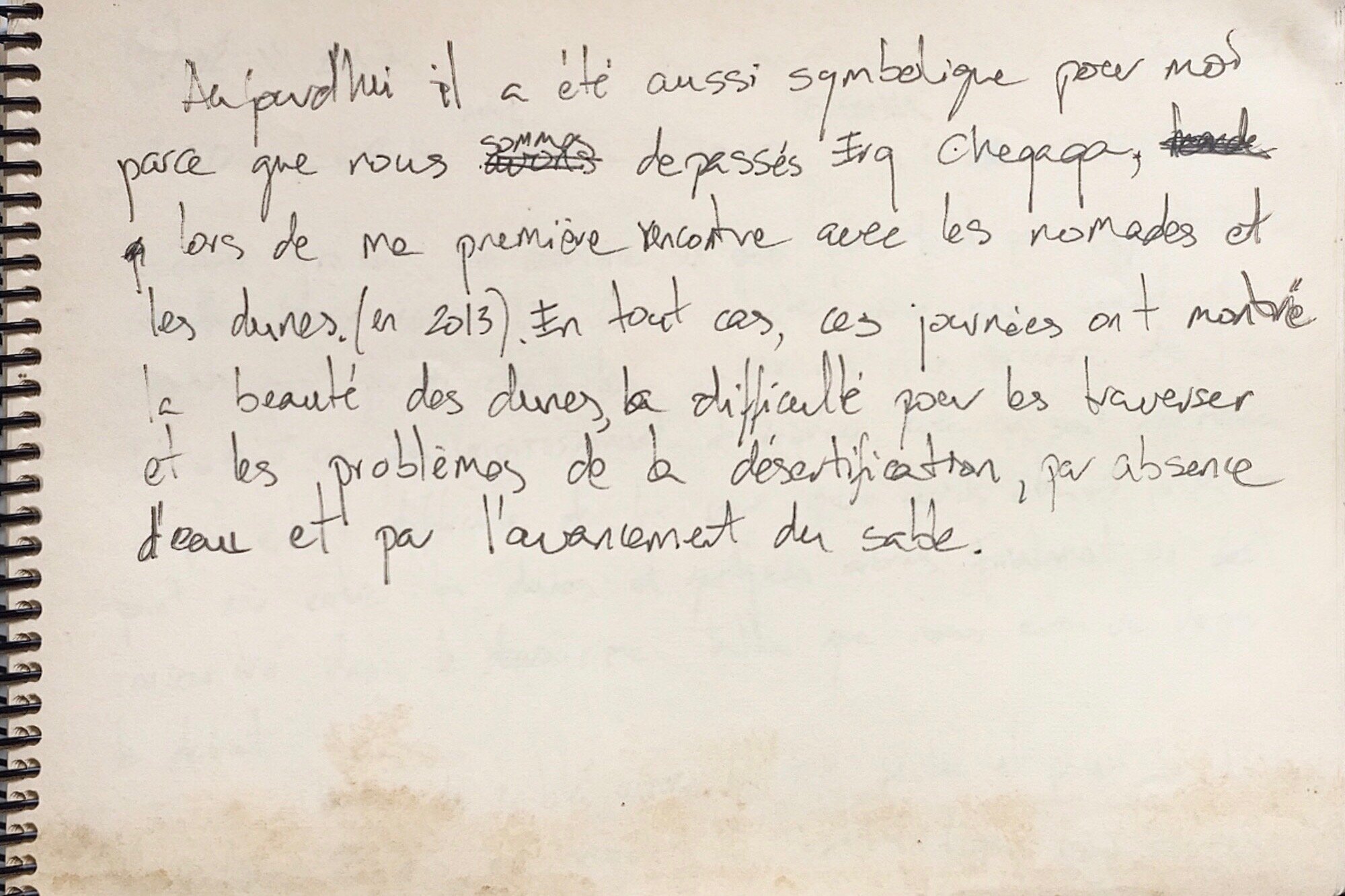
Even if we thought that the night was going to be a little softer, finally it was colder, besides, the fatigue begins to be accumulated and it took more time to wake up.
We took the road at 7h42, fortunately we had to cross dunes but in the south-north axis, and we found passages between them. At a given moment, the landscape was very, very beautiful, because we saw a large extension of sand, and not…
----------
not like in Merzouga, where we see the limits at our feet. Half an hour later we went out on the "road" that connects M'hamid and lake Iriki. The walk was a little monotonous but I could see micro-landscapes.
As usual, we stopped in a tamarix tree, first for a short break of 20 minutes and then for lunch. The first thing Said and Mohamed did was to see if there were snake tracks, to avoid what happened yesterday at the same time when I saw something semi-buried next to us. I thought he was dead but no ... He was one meter long and Said said he has to kill him because if he bites us you have to go quickly to the hospital (arriving at the camp at night they saw another one but
----------
small).
During the noon break, Heidi used the Bolex for the first time and maybe tomorrow we will use the Zoom-6 to record the noise of the camel charge, it gives the impression of being a sailboat in a port instead of camels in the desert.
In relation to food, they made bread for the first time on the sand. It was fantastic, even the shape of the bread.
----------
We did the second walk in a flat and open space, without sand and we could walk in a perpendicular line to the sun, giving a spectacular image, but not as much as the one of Mohamed, who stopped looking towards the back once we all passed him, his figure remained vertical in contraposition with the horizon, a few seconds later, he made his prayer, alone, in the immensity of the desert, what a beautiful image, without physical or spiritual intermediary.
----------
After 5h30, we arrive to a tamarix, not far from the remains of a construction (maybe a casbah), with some pieces of rammed earth walls, ceramics and a cemetery.
Said told me during the journey that 50 or 60 years ago, this part of the Drâa valley was inhabited by nomads and sedentary tribes. Again the question of the consequences of Ouarzazate’s dam was mentioned.
----------
Today it was also symbolic for me because we passed Erg Chegaga, where I had the first encounter with nomads and dunes (in 2013). In any case, these days have shown the beauty of the dunes, the difficulty to cross them and the desertification problems, the lack of water and the advancement of sand.
DAY 04
14.10.2016
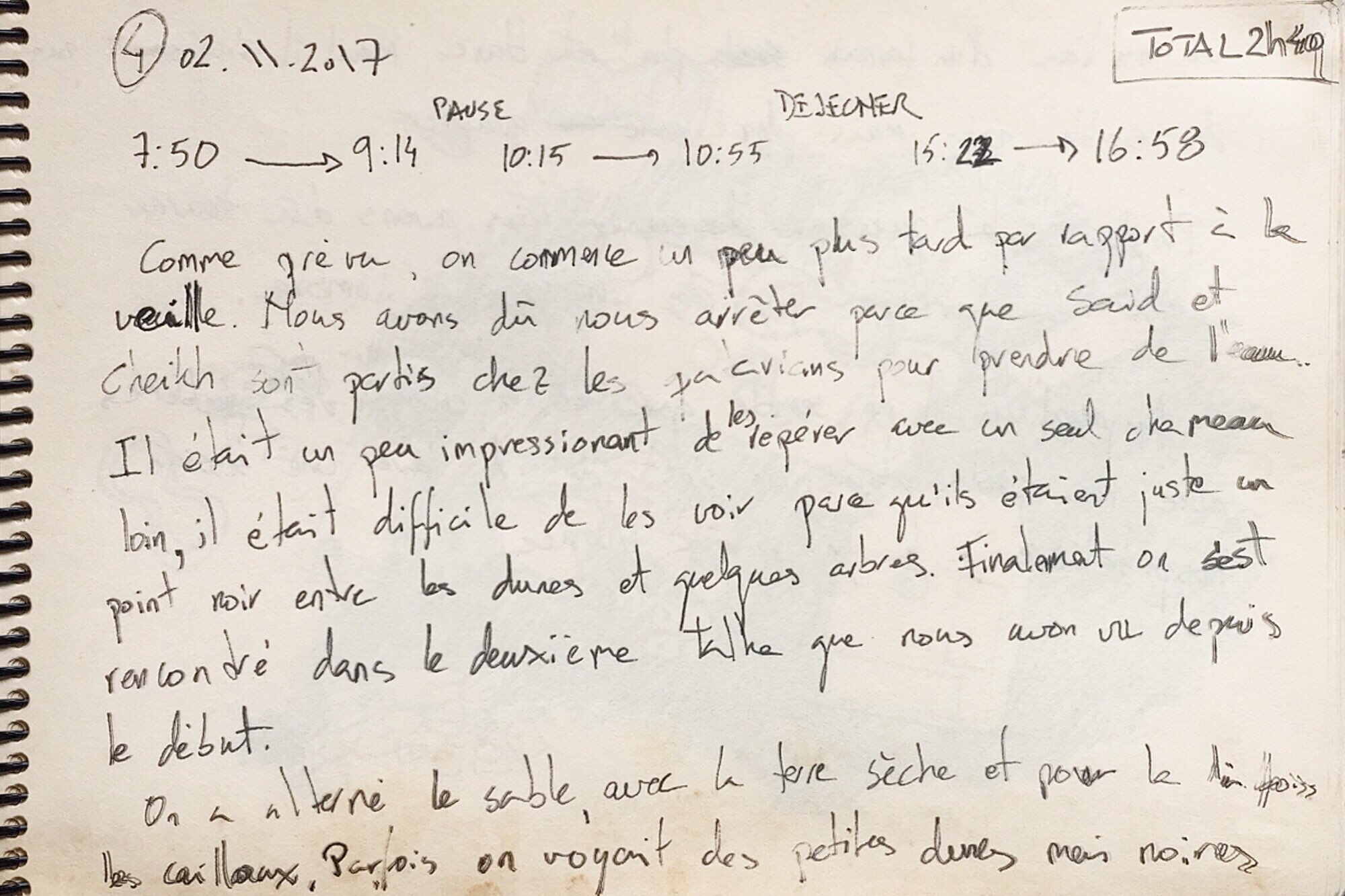
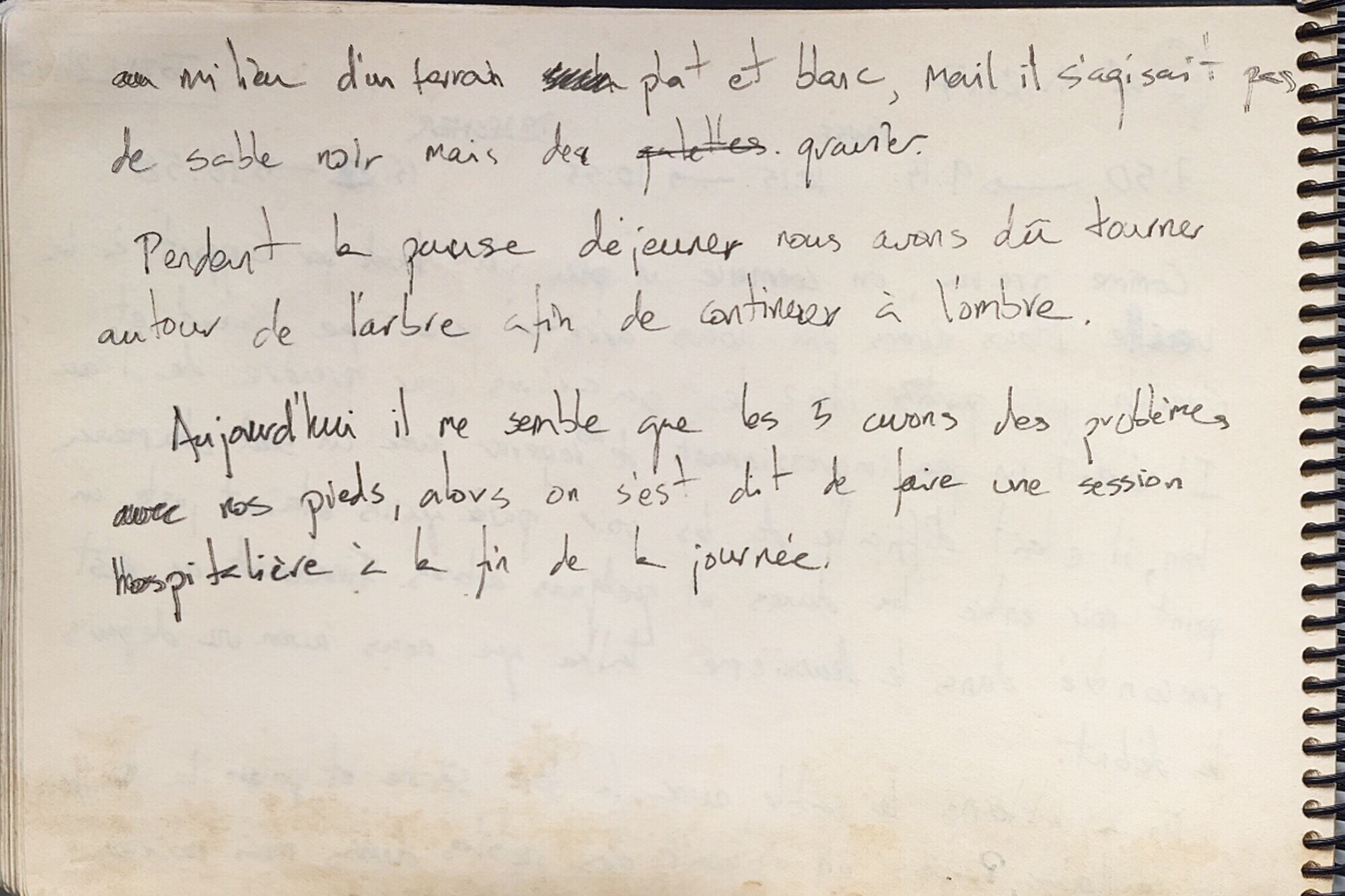
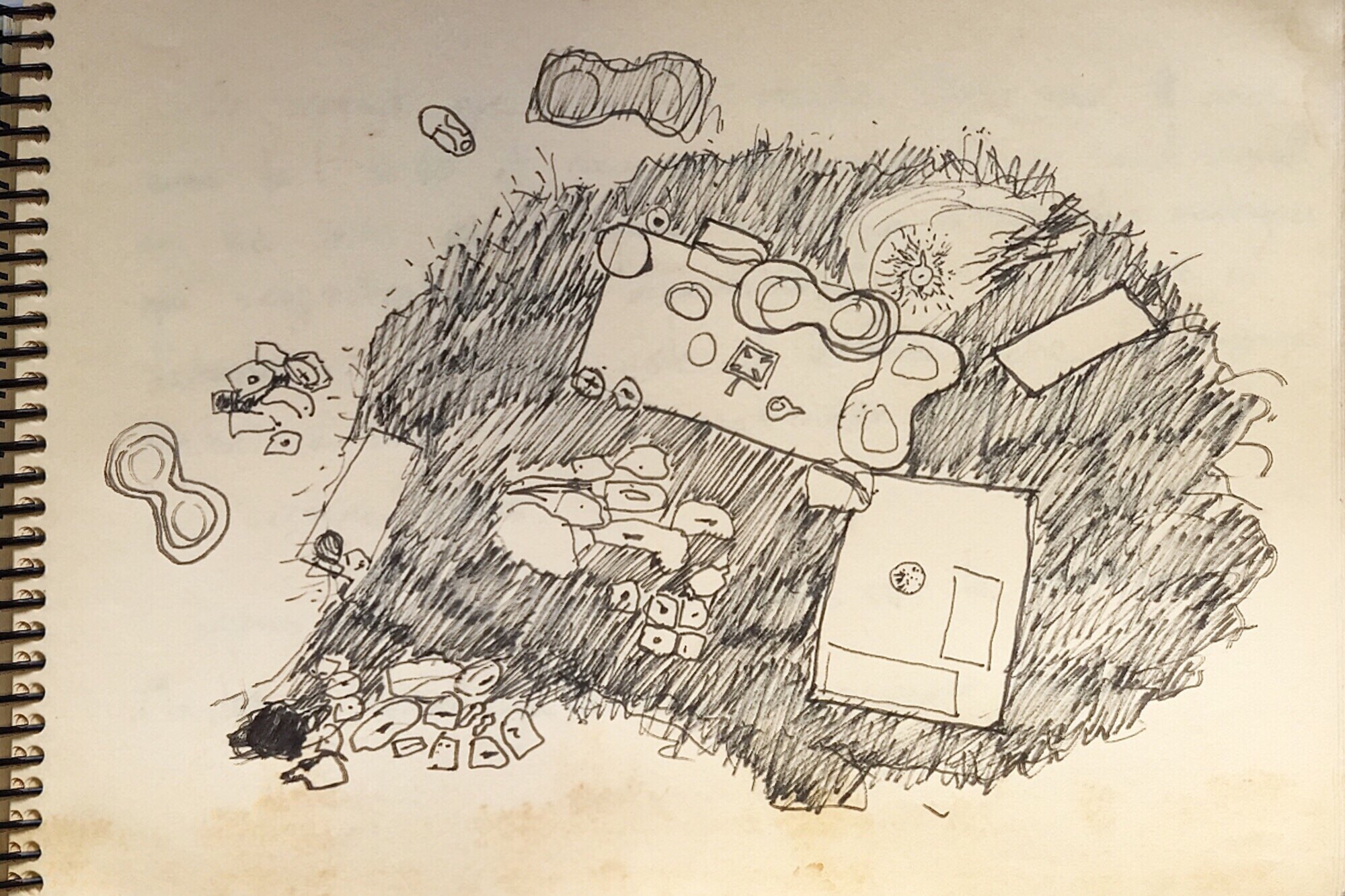
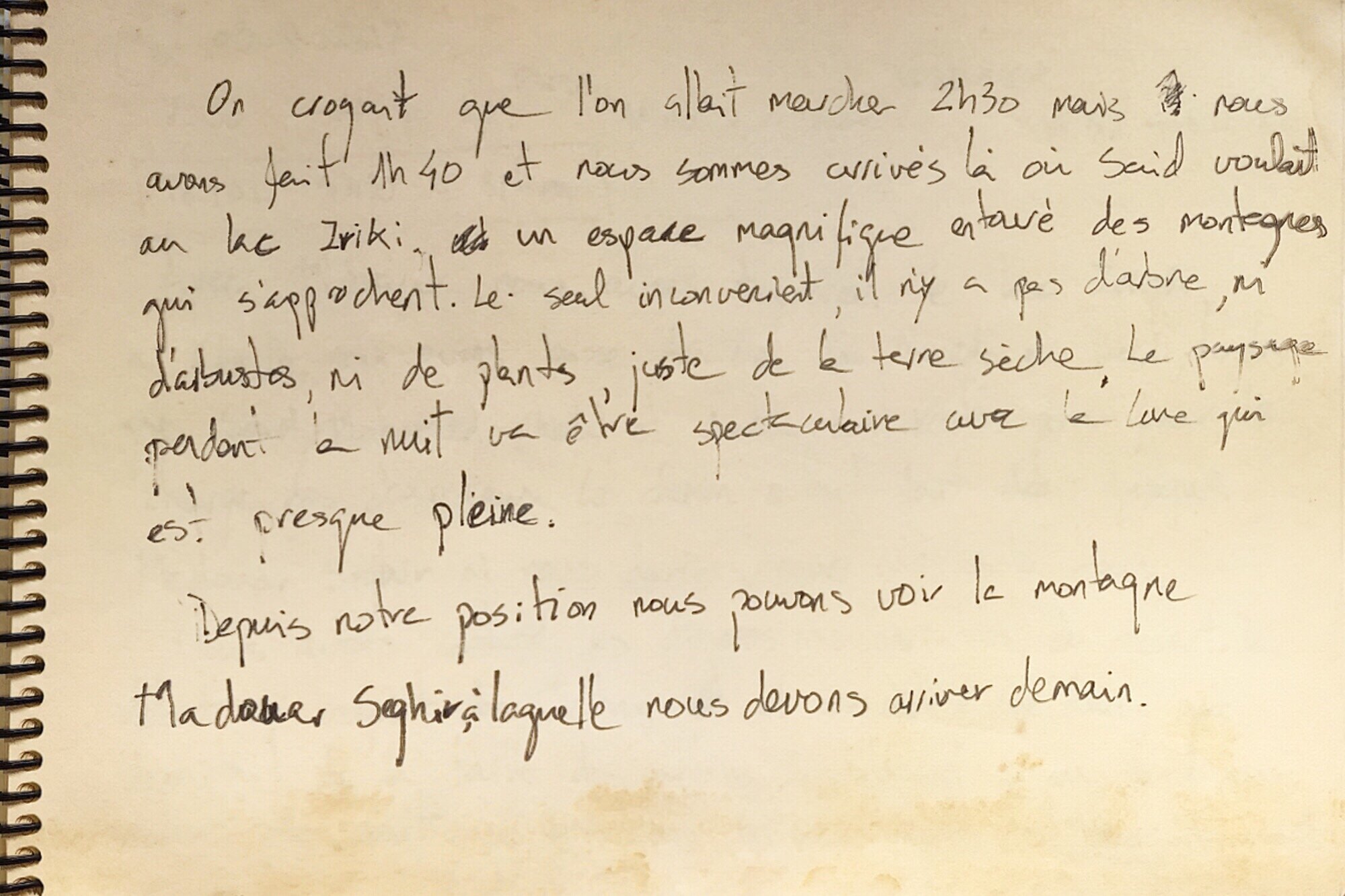
As expected, we start a little later than the day before. We had to stop because Said and Sheikh went to the Qataris to get some water. It was a little bit awesome to spot them with a single camel far away, it was hard to see them because they were just a black dot between the dunes and some trees. Finally we met in the second talha tree we have seen from the beginning.
Sand was alternated with dry soil and for the first time pebbles. Sometimes we saw small dunes but black.
----------
in the middle of a flat and white land, but it was not black sand but gravel.
During the lunch break we had to turn around the tree in order to keep us in the shade.
Today it seems to me that the five of us have problems with our feet, so we decided to do a hospital session at the end of the day.
----------
We thought we were going to walk 2h30 but we did only 1h40 and we arrived where Said wanted, at lake Iriki, a beautiful space surrounded by mountains. The only drawback is that there are no trees, shrubs or plants, just a dry land. The landscape during the night is going to be spectacular with the moon being almost full.
From our position we can see the mountain Madouar Sghir, to which we must arrive tomorrow.
DAY 05
15.10.2016

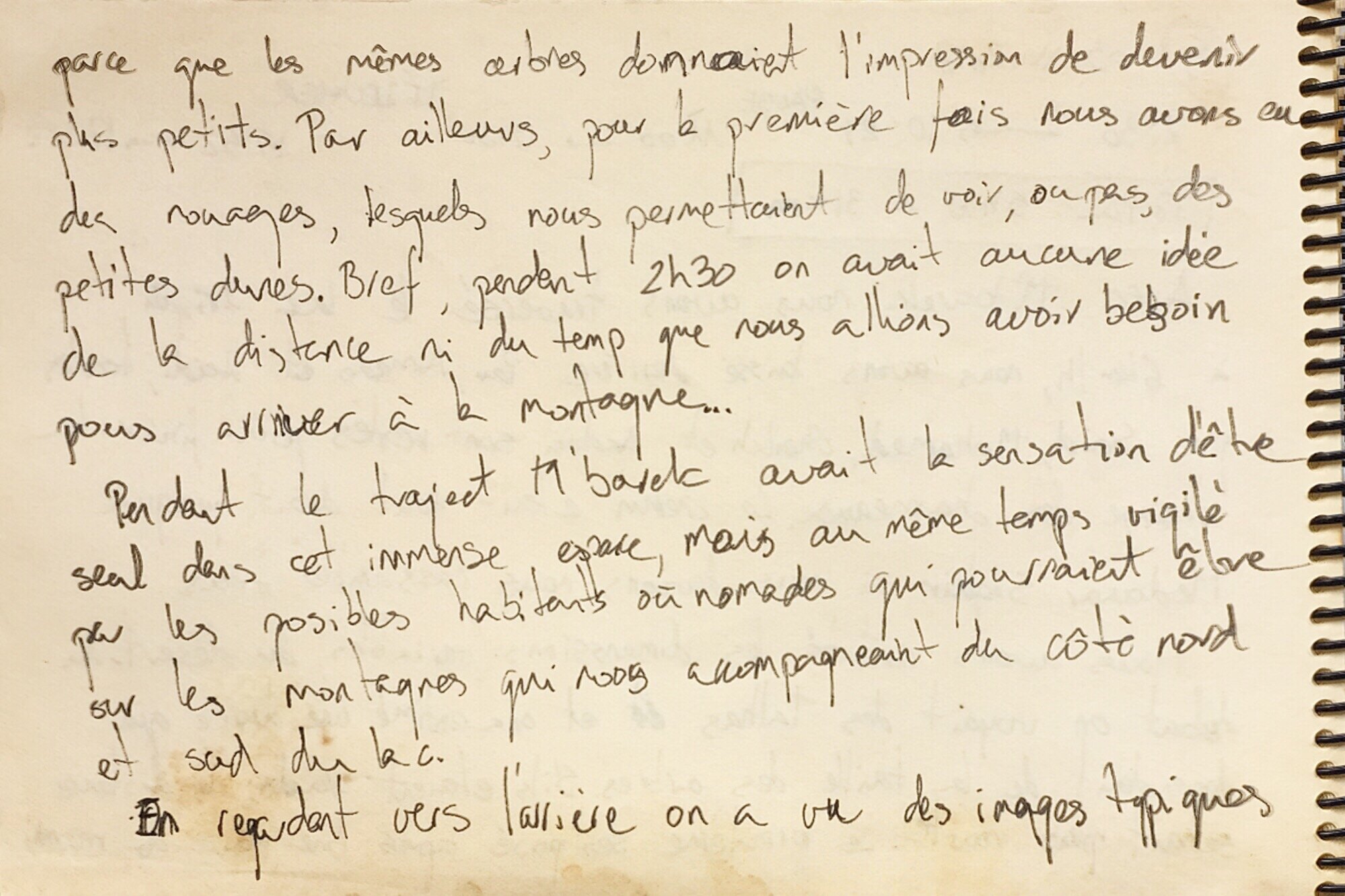
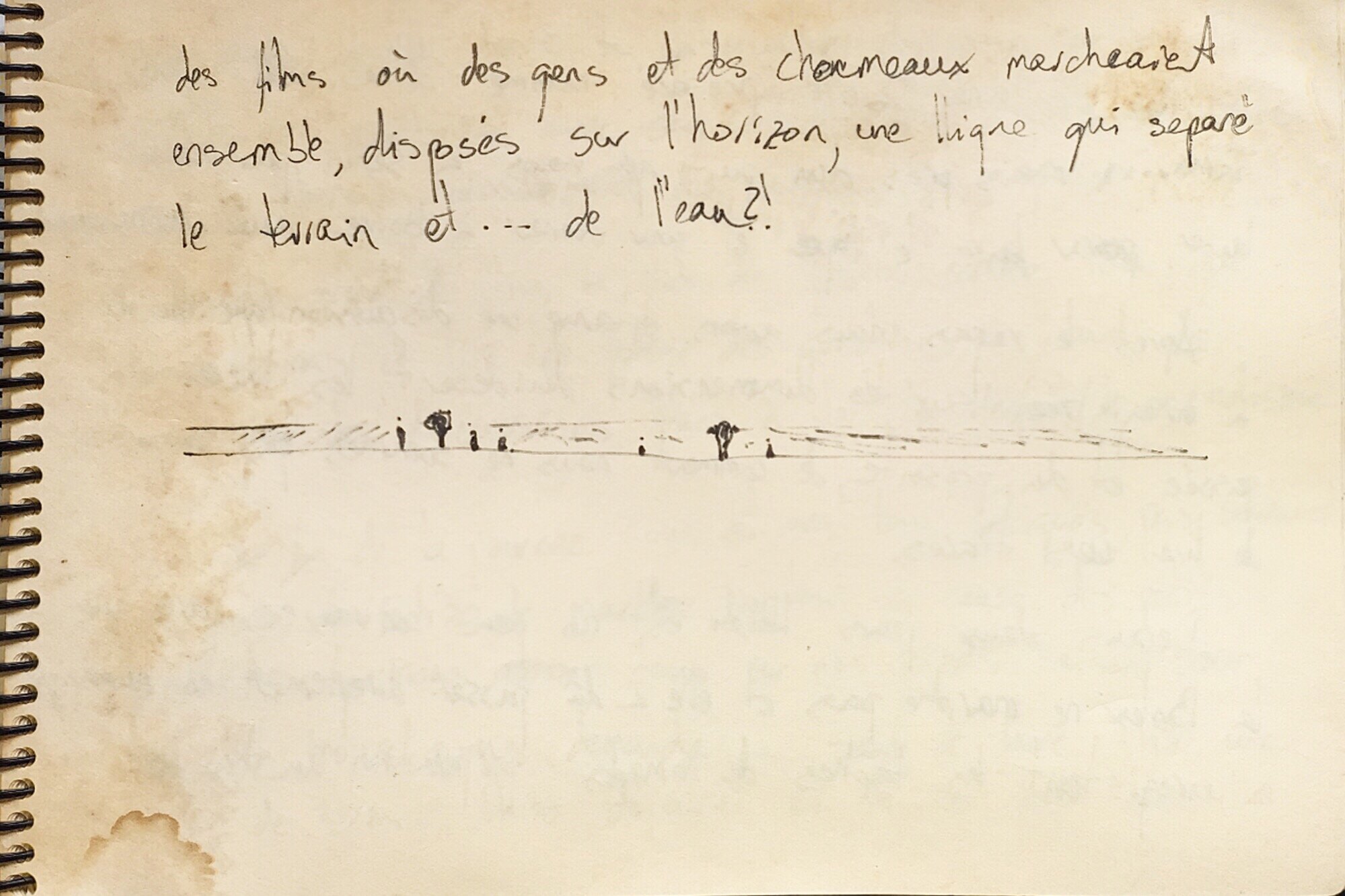
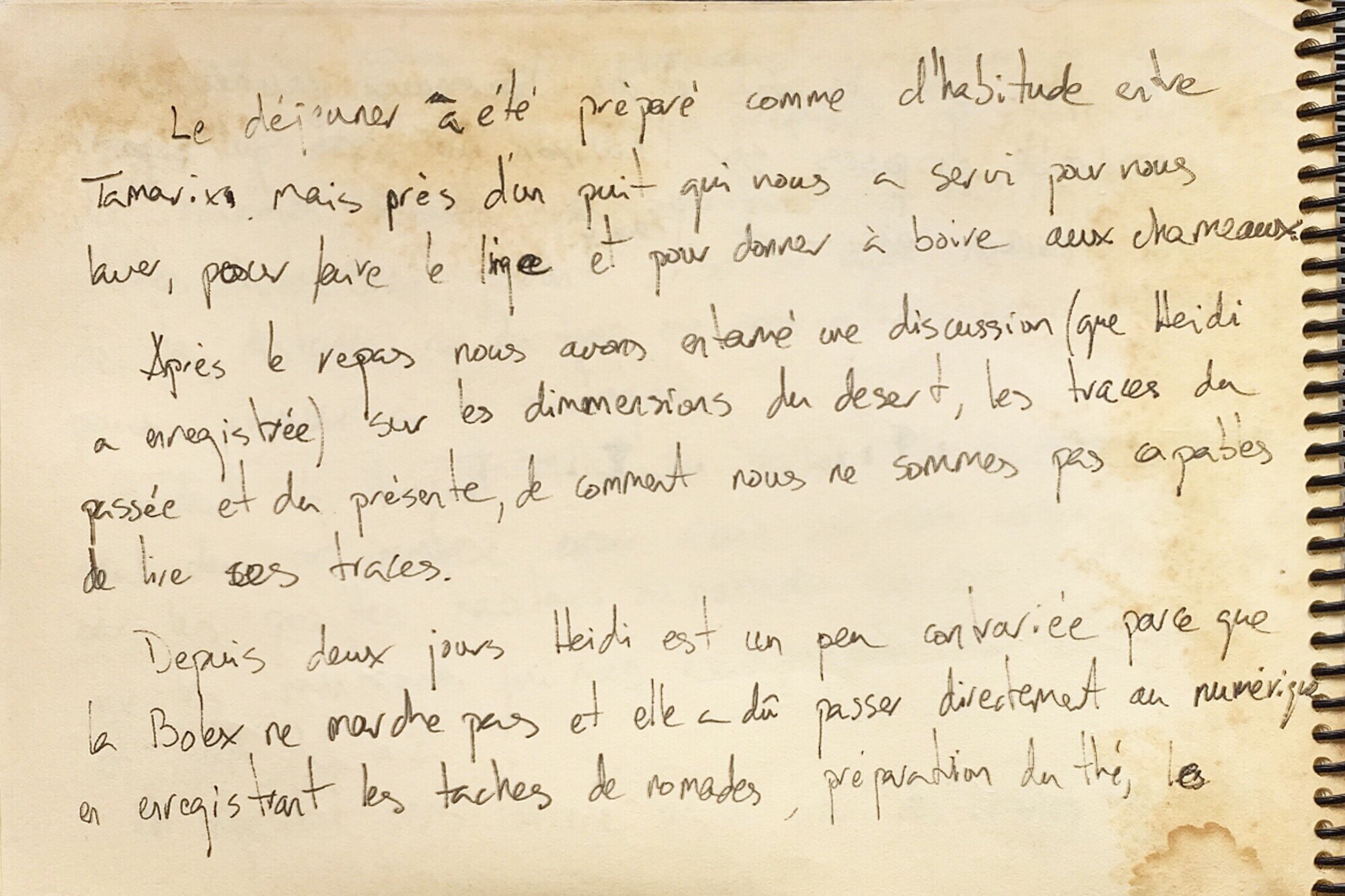
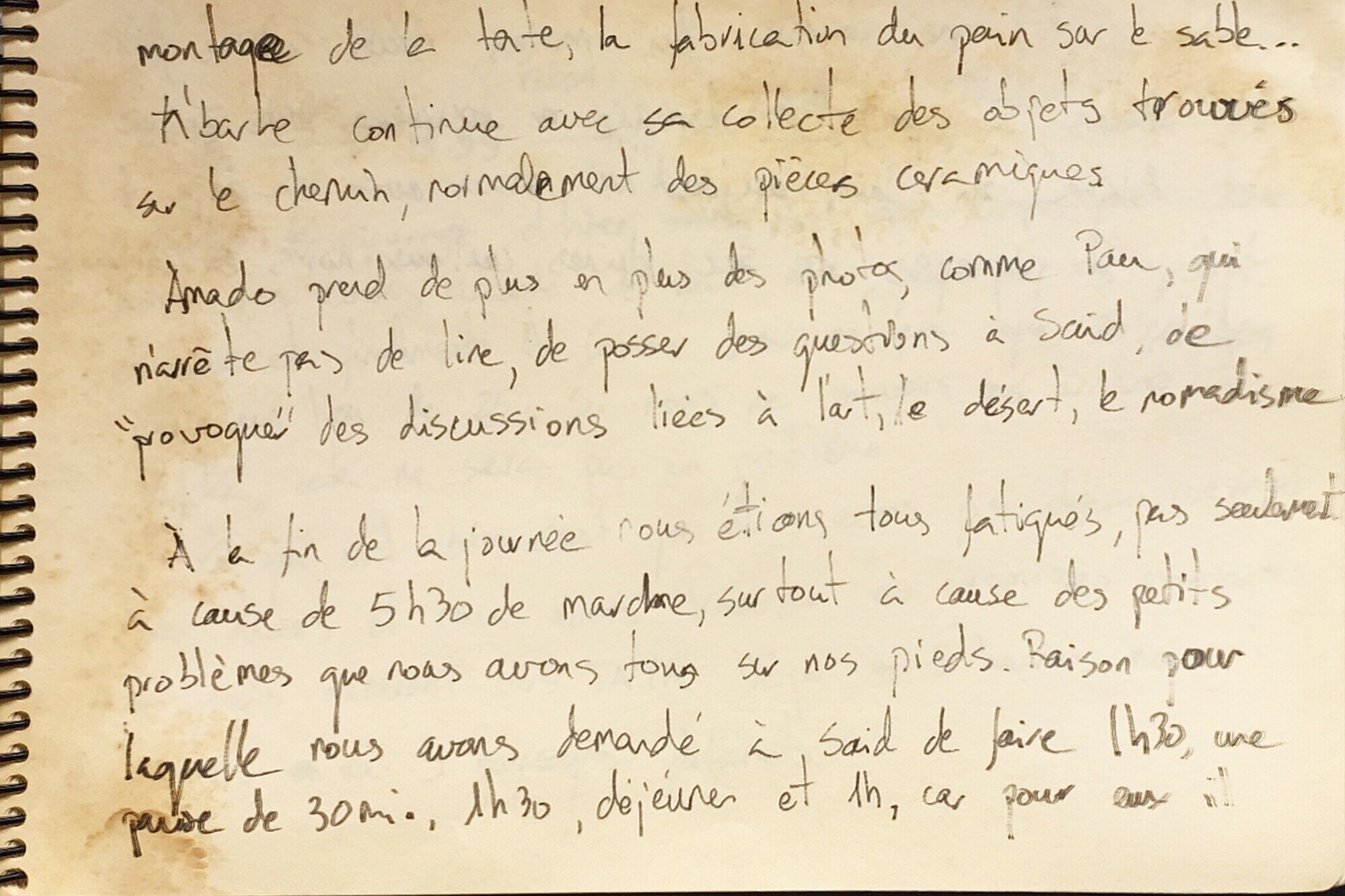
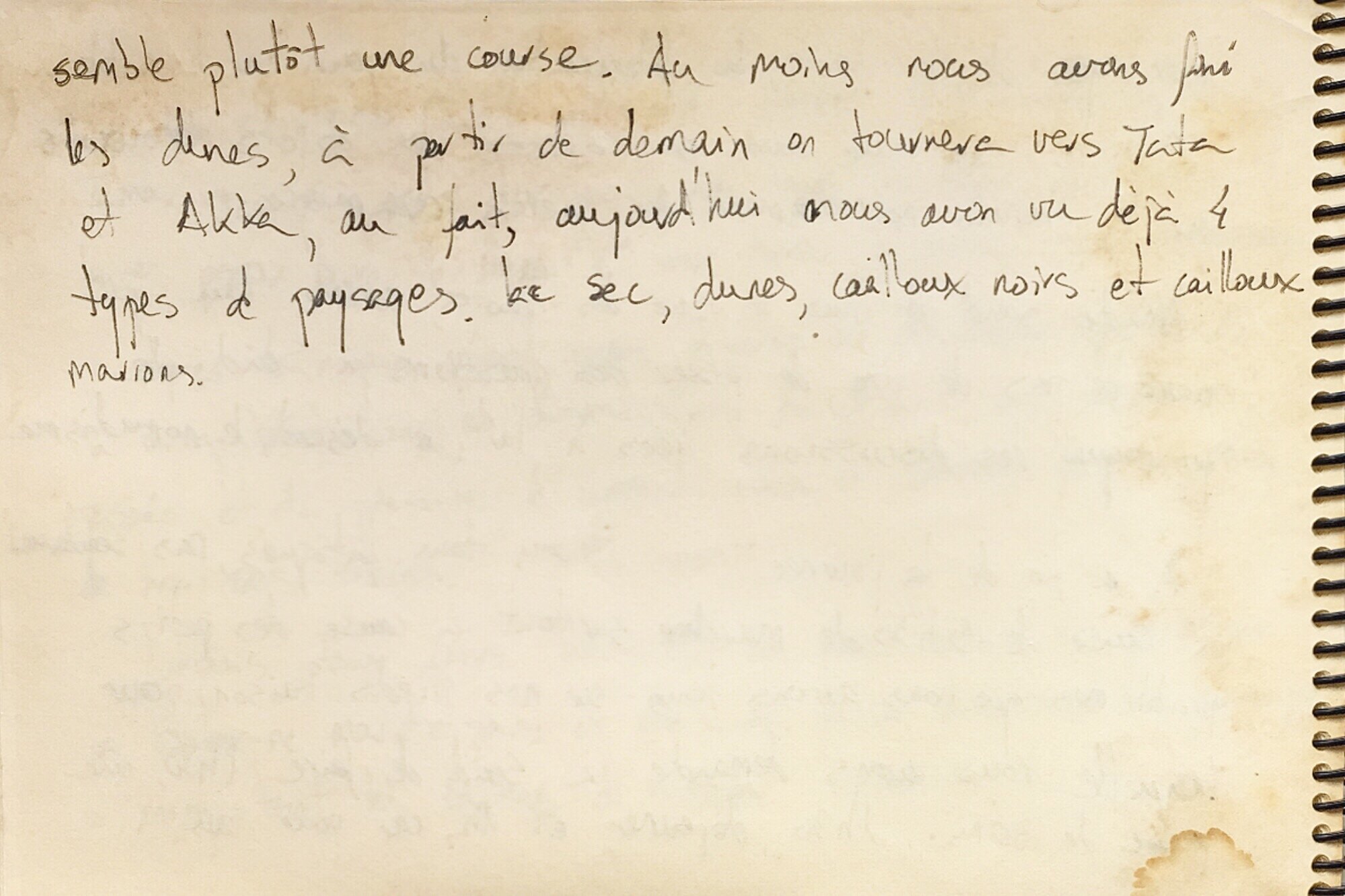
With M'barek, we crossed lake Iriki at 6km / h, we left behind Pau, Amado and Heidi, while Said, Mohamed, Sheikh and Aadou were finishing the load of camels. The path was straight up to Madouar Sghir, where we had to gather together.
We found the (variable) dimensions of the desert. At the beginning we saw the talha trees and we estimated a duration that depended on their size. If they were tall, the distance would be shorter. The problem arose after an hour walking…
----------
because the same trees gave the impression of becoming smaller. Moreover, for the first time we had some clouds, which allowed us to see, or not, small dunes.In short, for 2h30 we had no idea of the distance, nor the time we would need to arrive at the mountain.
During the trip M'barek felt alone in this huge space, but at the same time guarded by the possible inhabitants or nomads who could be on the mountains that accompanied us on the north and south side of the lake.
Looking back we saw typical images…
----------
from movies where people and camels walked together, arranged on the horizon, on a line that separates the ground from ... the water ?!
----------
The lunch was prepared as usual between tamarix trees but near a well where we could wash ourselves, do the laundry and give drink to the camels.
After lunch, we started a discussion (that Heidi recorded) about the dimensions of the desert, the traces of past and present and how we are not able to read these traces.
For two days Heidi is a little bit upset because the Bolex doesn’t work and she had to work with her digital camera, recording nomadic tasks, tea preparation,
----------
assembly of the tent, the making of the bread on the sand ...
M'barek continues with his collection of objects found on the way, normally ceramic pieces.
Amado takes more and more pictures, like Pau, who does not stop reading, asking Said, inciting discussions related to art, to the desert, to nomadism ...
At the end of the day we were all tired, not only because of the 5h30 walk, also because of the problems we all have on our feet, which is why we asked Said to do 1h30 walk, a 30 minutes break , 1h30 walk, lunch break and a final hour walk, because for them,
----------
it seems rather a race. At least we finished the dunes, tomorrow we will turn to Tata and Akka, in fact, today we have already seen 4 types of landscapes, dry lake, dunes, black pebbles and brown pebbles.
DAY 06
16.10.2016
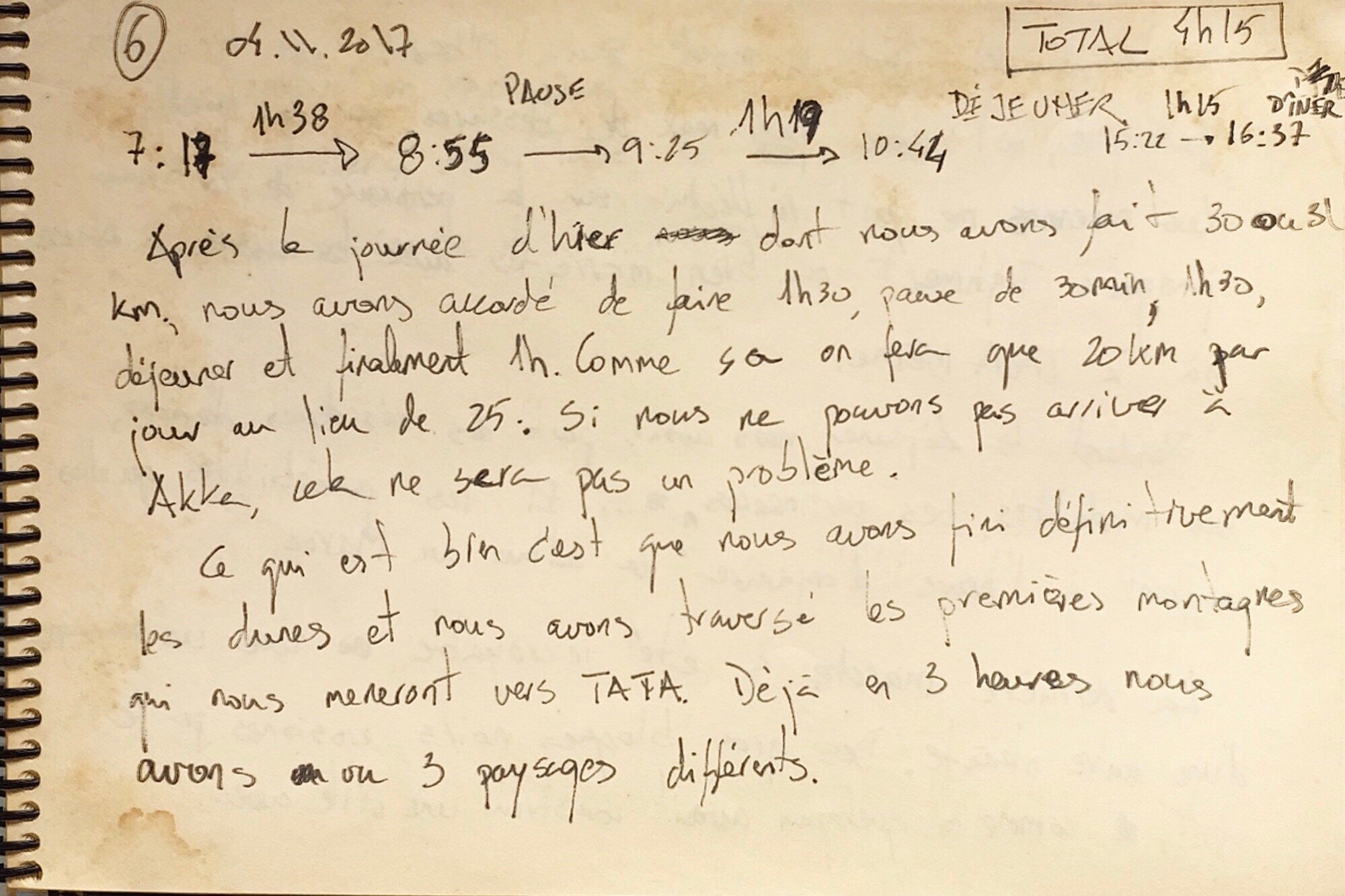
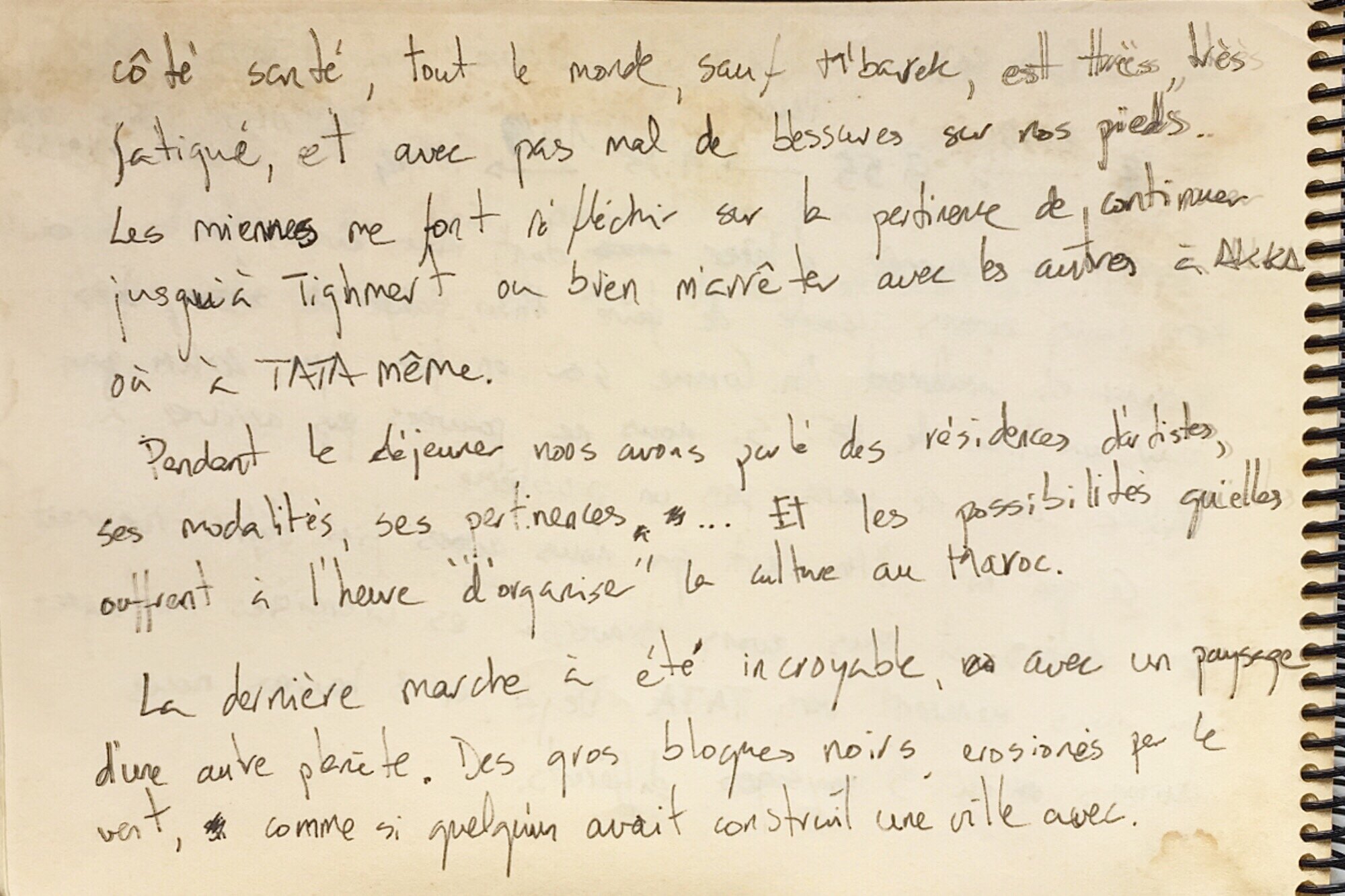
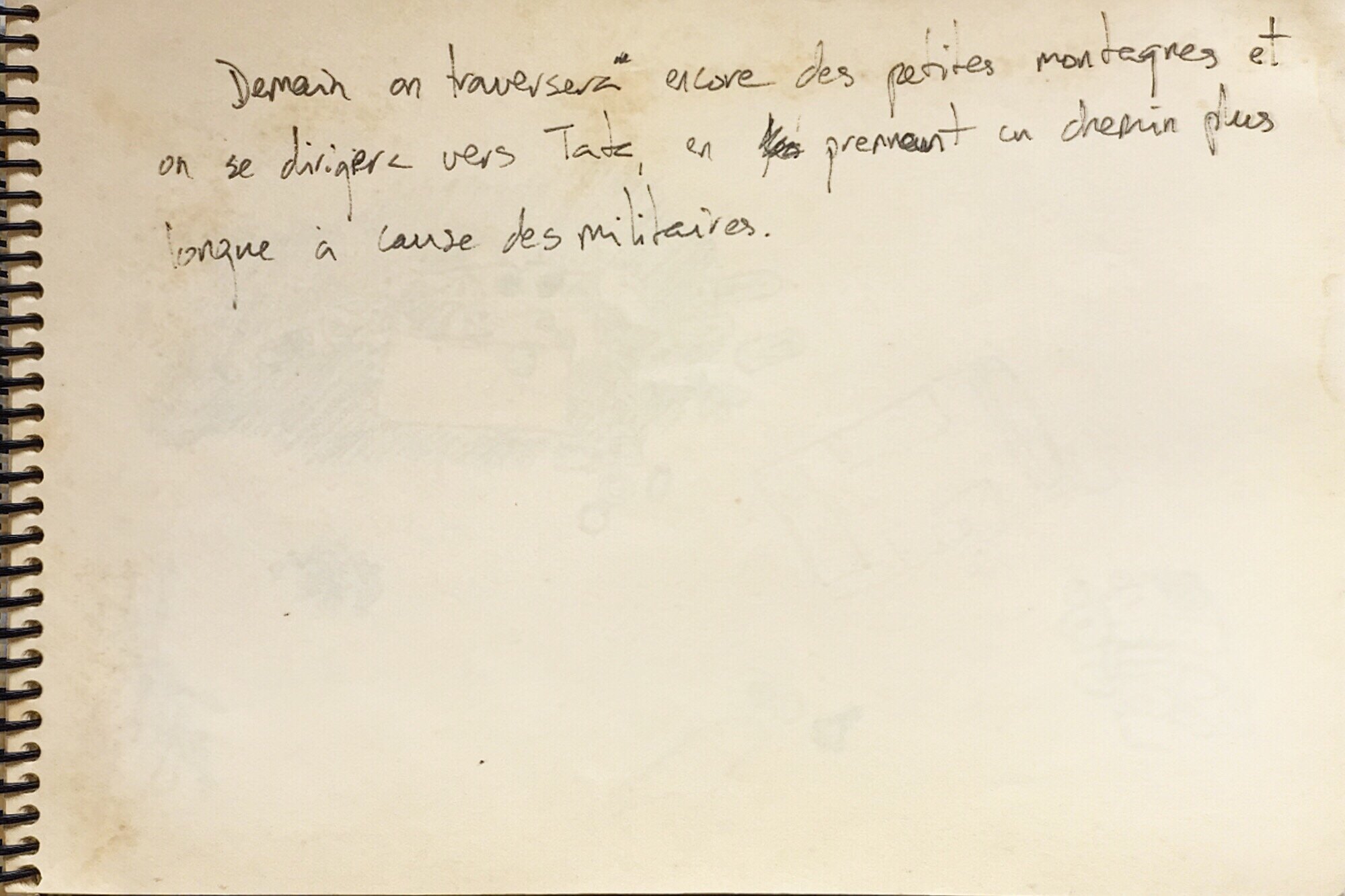
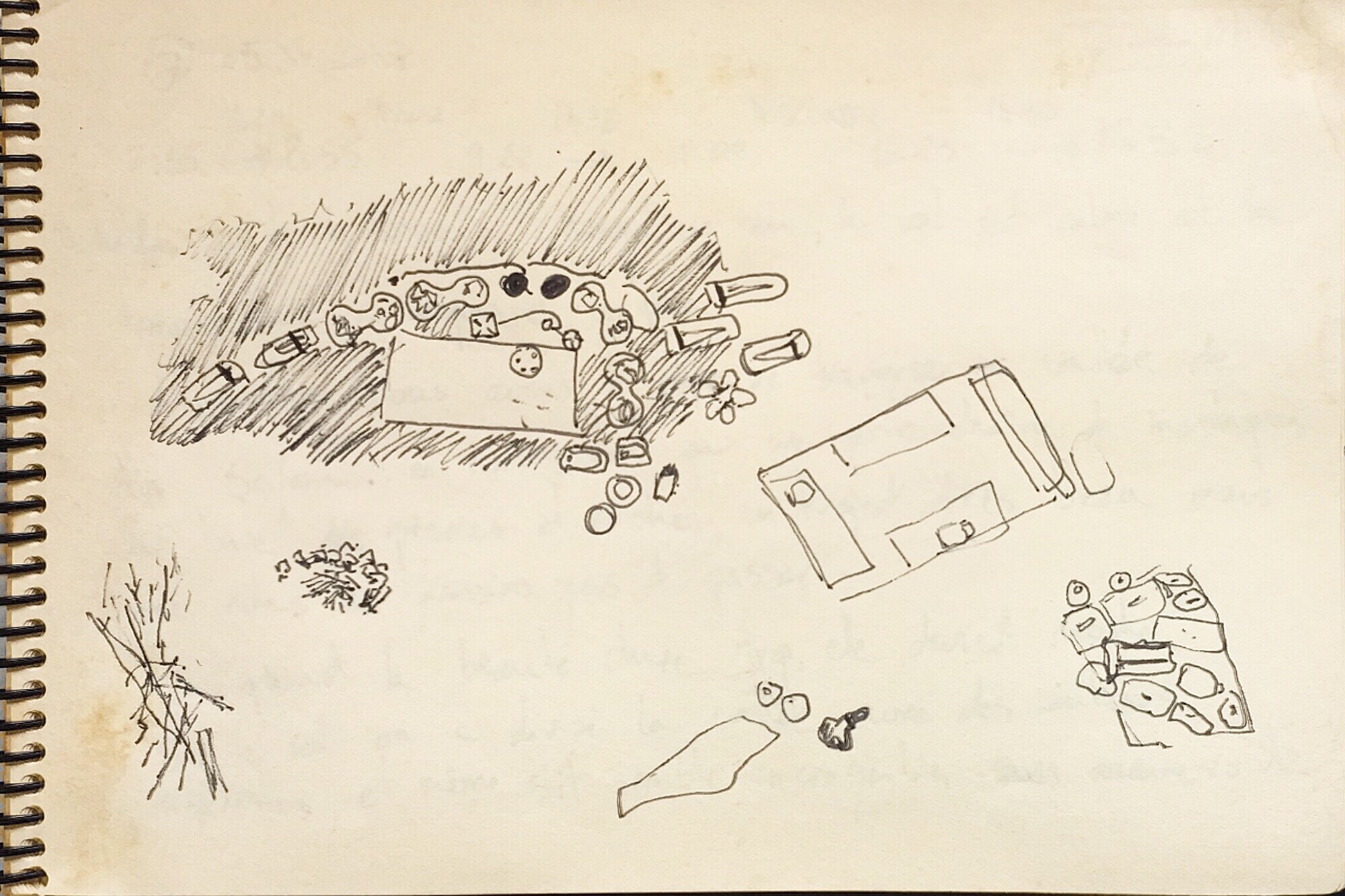
After yesterday, in which we walked 30 or 31 km, we agreed to do a 1h30 walk, a 30 minutes break, another 1h30 walk, a lunch break and finally one more hour walk. So we will only do 20km a day instead of 25. If we can not get to Akka, that will not be a problem.
The good thing is that we have definitely finished the dunes and we have crossed the first mountains that will take us to Tata. In 3 hours we saw 3 different landscapes.
----------
In terms of health status, everyone, except M'barek, is very, very tired, and with lots of injuries on their feet. Mine make me think about the relevance of continuing to Tighmert or maybe to stop at Akka or Tata.
During the lunch we talked about artist residencies, its modalities, it relevance and the possibilities they offer to organise culture in Morocco.
The last walk was incredible, with a landscape from another planet. Big black blocks eroded by the wind, as if someone had built a city with them.
----------
Tomorrow we will cross again small mountains and we will go towards Tata, taking a longer path because of the military exclusion zone.
DAY 07
17.10.2016
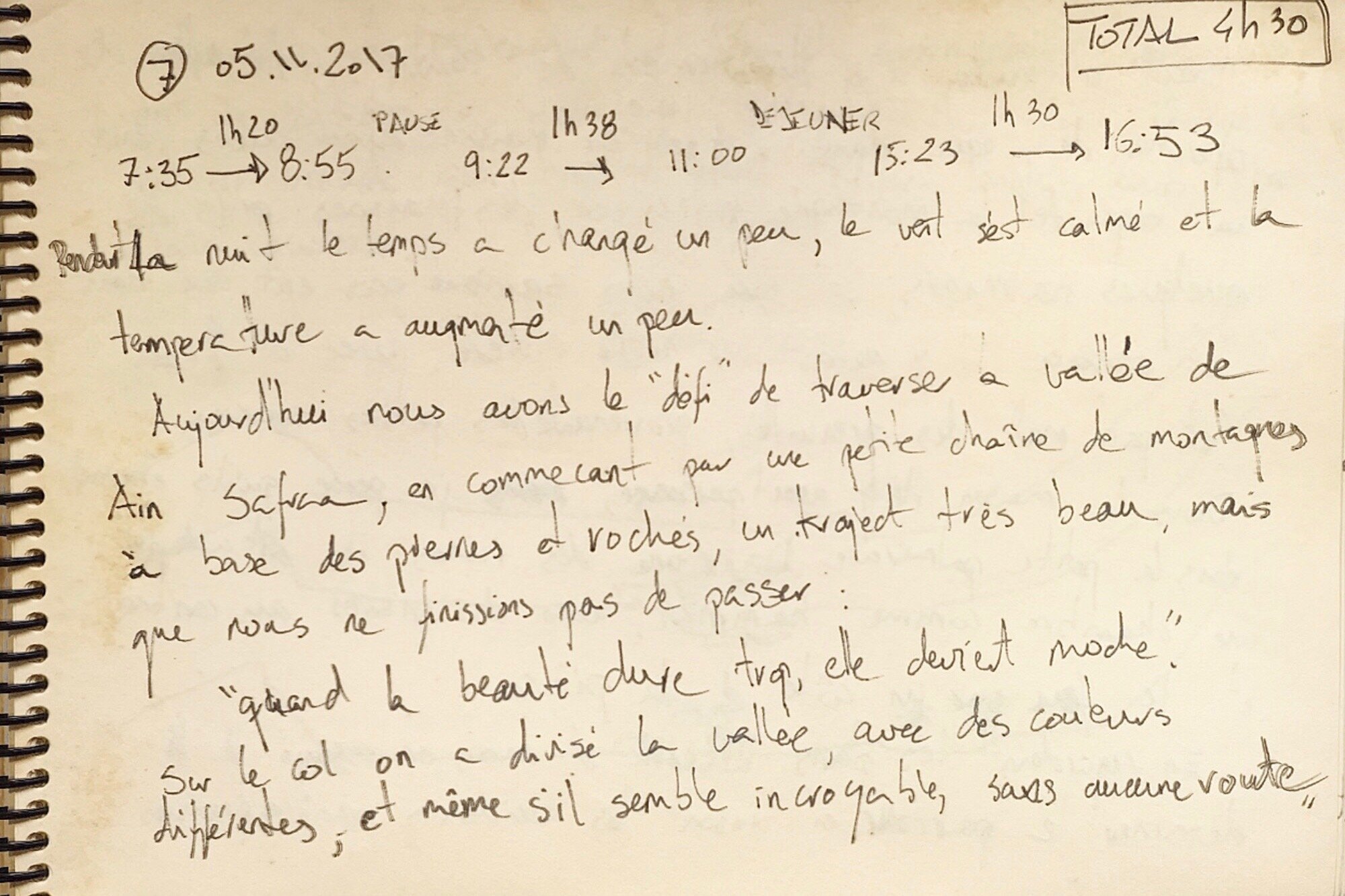

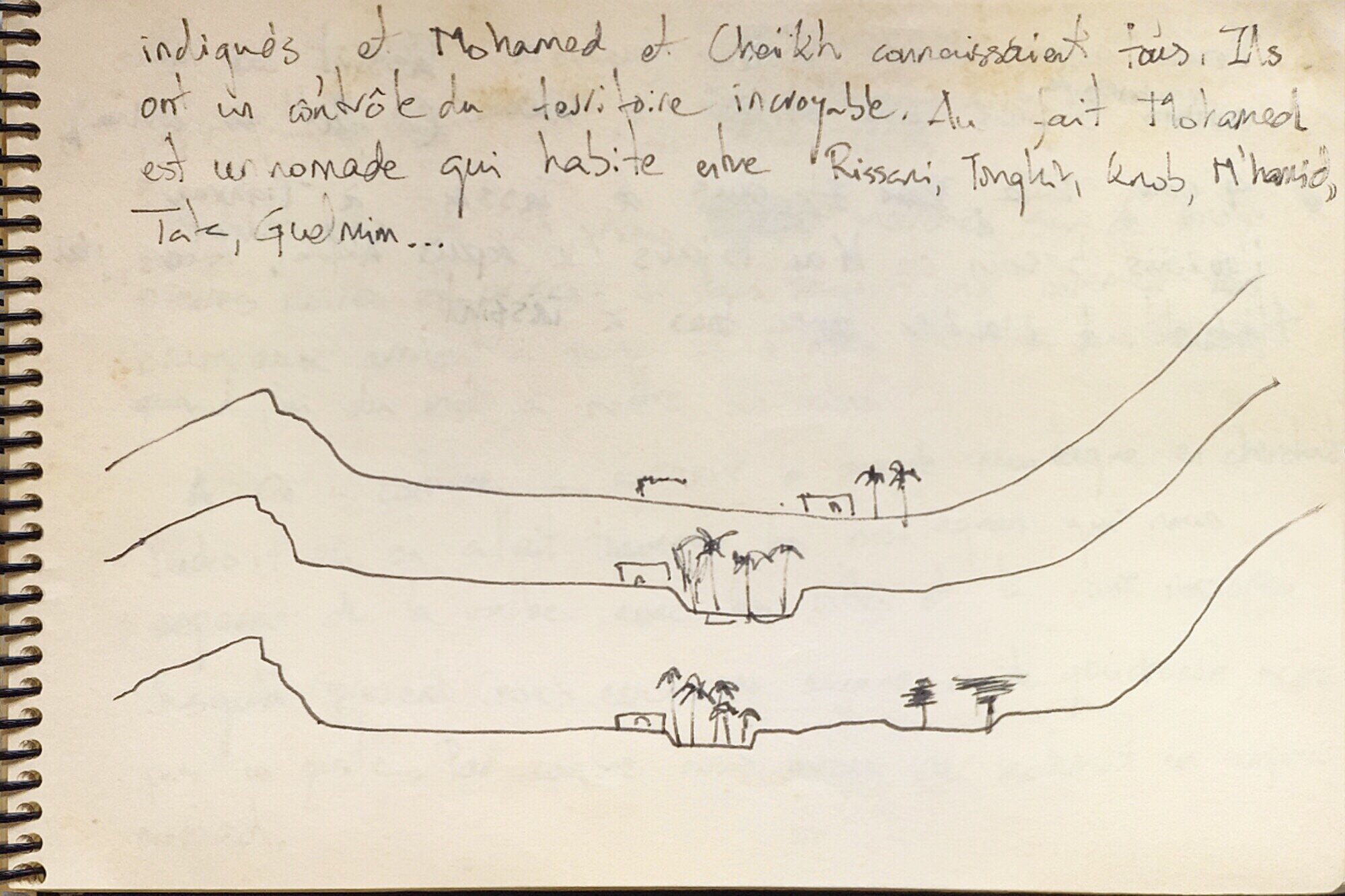

During the night the weather changed a bit, the wind calmed down and the temperature increased a slightly.
Today we have the "challenge" to cross the Ain Safraa valley, starting with a small mountain range based on stones and rocks, a very beautiful route that we did not finish passing.
"When the beauty lasts too much, it becomes ugly"
On the mountain pass we saw the valley with different colours, and even if it seems incredible, without any road,
----------
Said wanted to go directly to the other side to look for water in the 4 small houses distributed throughout the main mountain, houses next to some palm trees. What we didn’t know is that in that space there was a small river, with water coming from small springs (and a lot of frogs).
In the houses there was nobody, I think they were all in the small palm grove working. In one of the ruins they adapted a room as a hammam, with stones in the center and a fire place on one side of the room.
Looking at the plans, M'barek and I tried to trace the route we did, reading the landforms…
----------
that Mohamed and Sheikh already knew. They have incredible territory control. In fact, Mohamed is a nomad who lives between Rissani, Tinghir, Knob, M'hamid, Tata and Guelmim .
We have decided to go to Tissint because we needed 5 more days to get to Akka (2 more than expected) and 4 for Tata. Then from Tissint to Tighmert I would need 14 or 15 days (10 from Akka) instead of 10. So I have decided to stop with them in Tissint.
DAY 08
18.10.2016
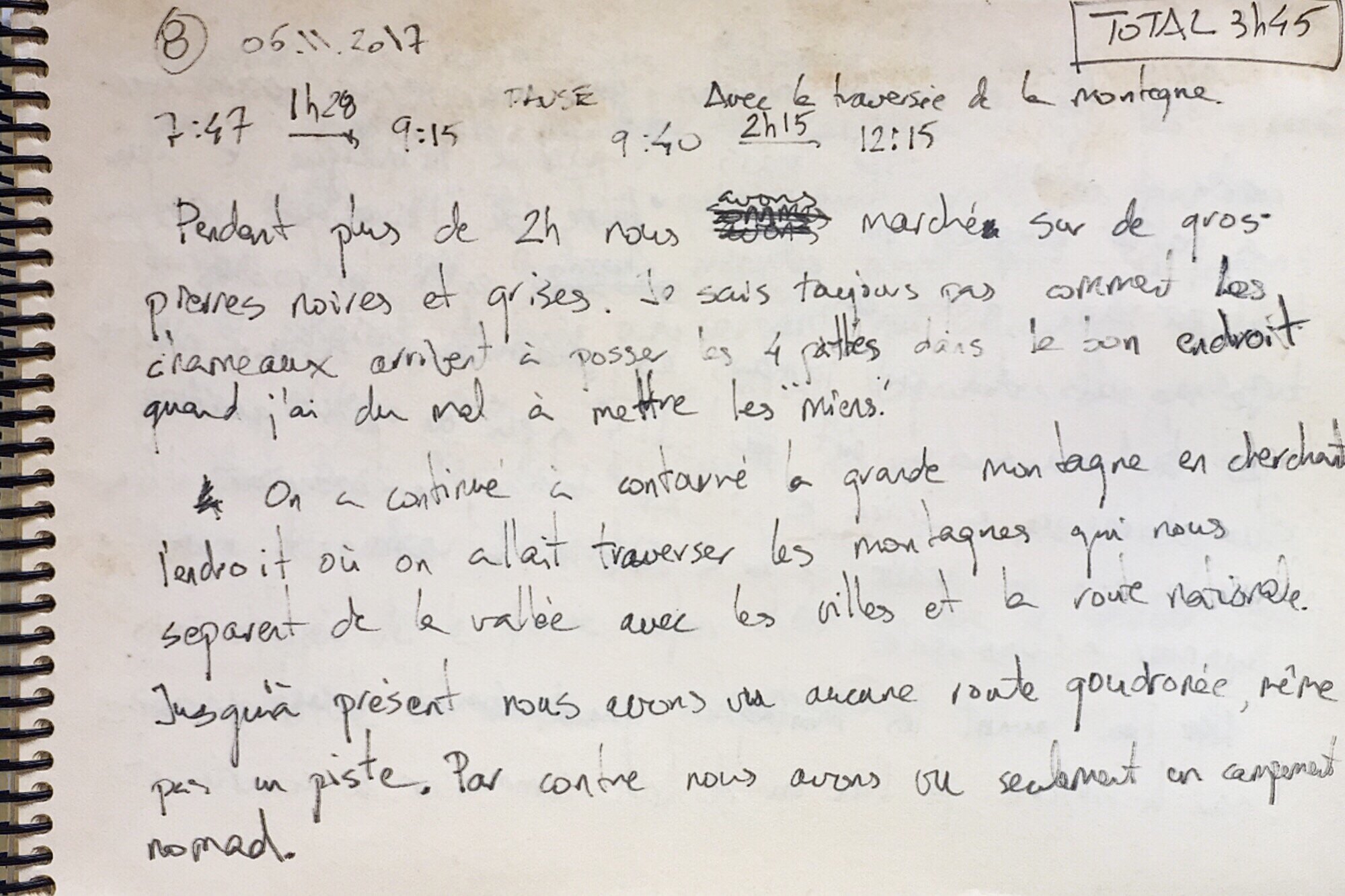
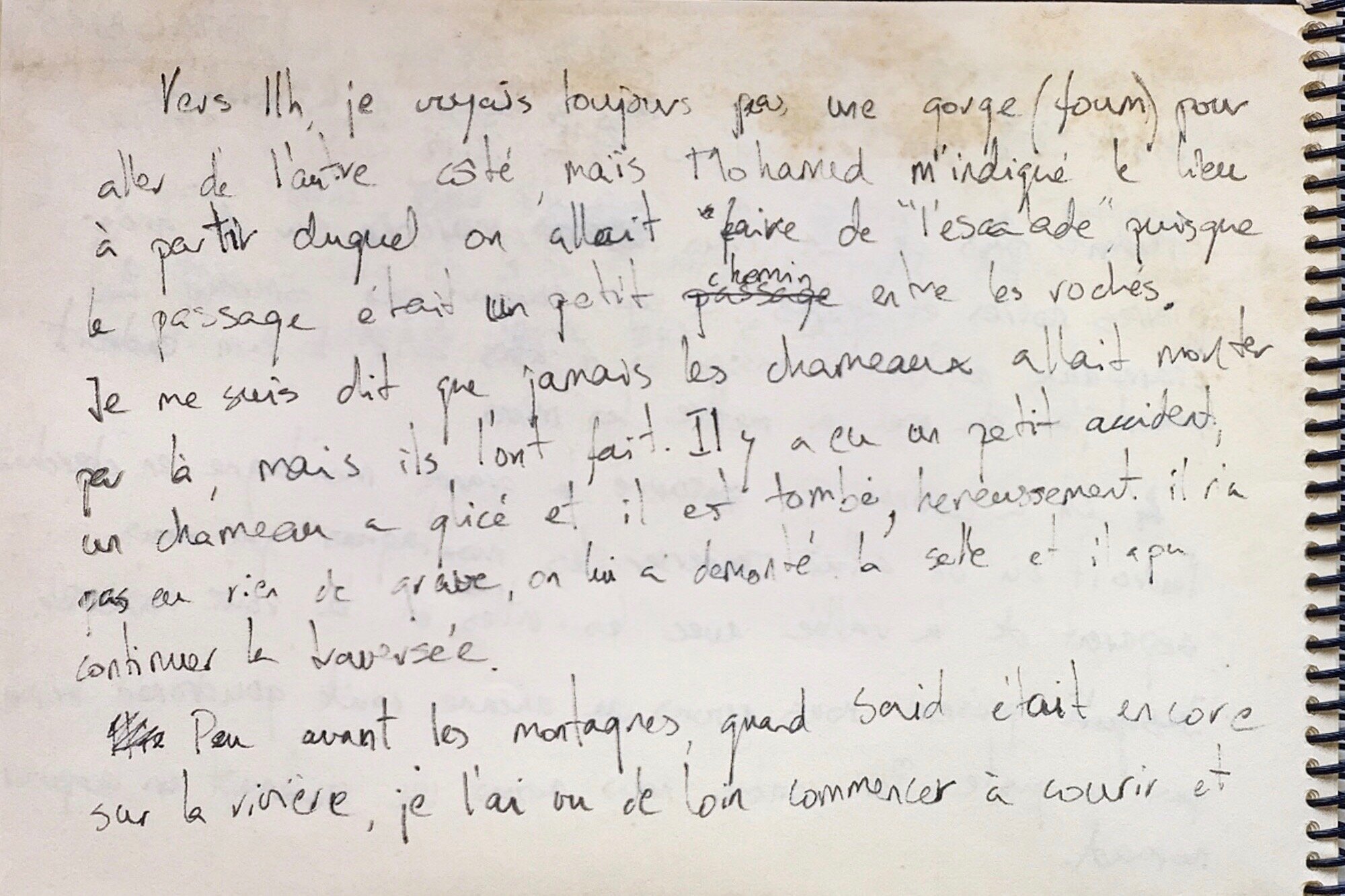
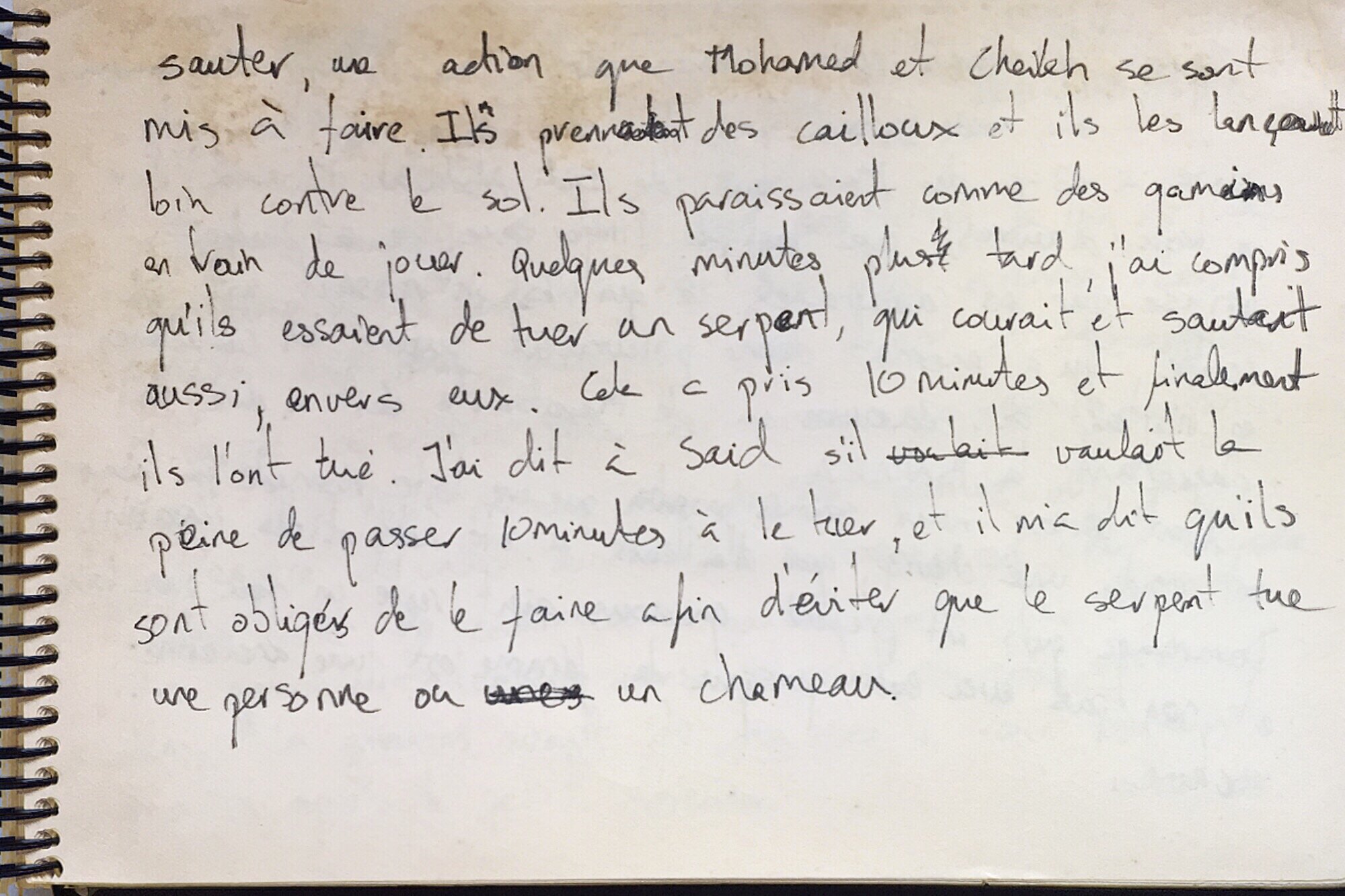
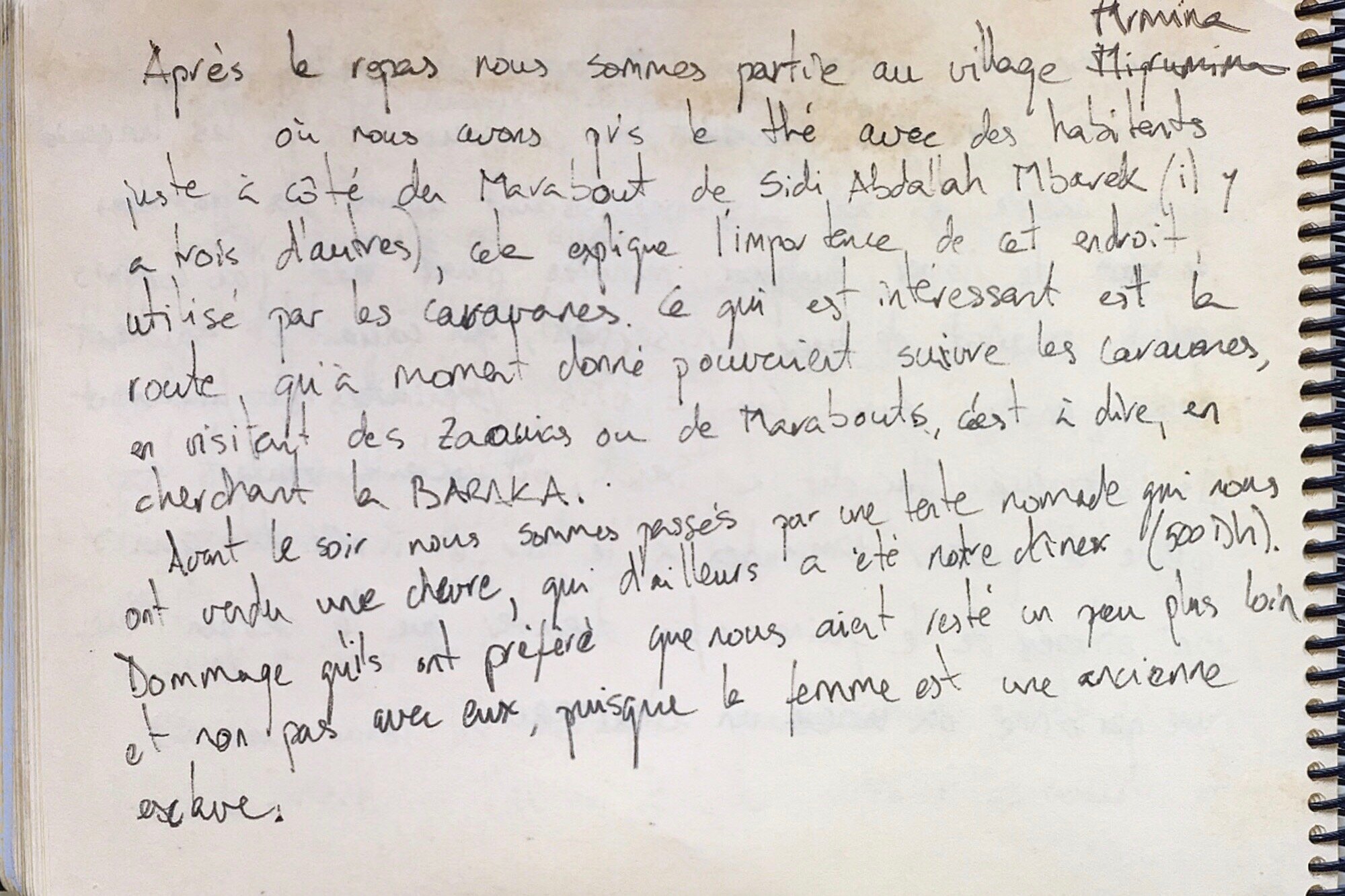
For more than 2 hours we walked on big black and gray stones. I still don’t know how camels get to put all their legs in the right place when I have trouble putting mine.
We continued to go around the big mountain looking for the place where we would cross the mountains that separate us from the cities and the national road.
Until now we have not seen any asphalt road, not even a track. However we saw only a nomad camp.
----------
Around 11h, I still did not see a hill pass to go to the other side, but Mohamed indicated me the place from which we would “climb”, since the passage was a small path between big rocks .
I thought that camels would never go up there, but they did. There was a small accident, a camel slipped and he fell, fortunately he did not have anything serious, the nomads removed the saddle and the load and he was able to continue the crossing.
Shortly before the mountains, when Said was still on the river, I saw him starting to run and…
----------
to jump, an action that Mohamed and Sheikh began to do as well. They took pebbles and threw them away, against the ground. They looked like kids playing. A few minutes later, I realised that they were trying to kill a snake, which was running and jumping too, towards them. It took 10 minutes but finally they killed him. I told Said if it was worthy to spend 10 minutes killing him and he told me that they had to do it to prevent the snake from killing a person or a camel.
----------
After lunch we went to the village called Mrmina where we had tea with locals, right next to the Marabout of Sidi Abdallah M'barek (there are three others in the region with the same name), that explains the importance of this place, used by the caravanners. What is interesting is the route that at given time could follow the caravans, visiting zaouias or marabouts, that is to say, looking for the BARAKA.
Before the evening we went through a nomad camp that sold us a goat (500Dh) for our dinner. It was a pity that they preferred us to stay a little bit further and not with them, since the woman was a former slave and we could have talked to her.
DAY 09
19.10.2016
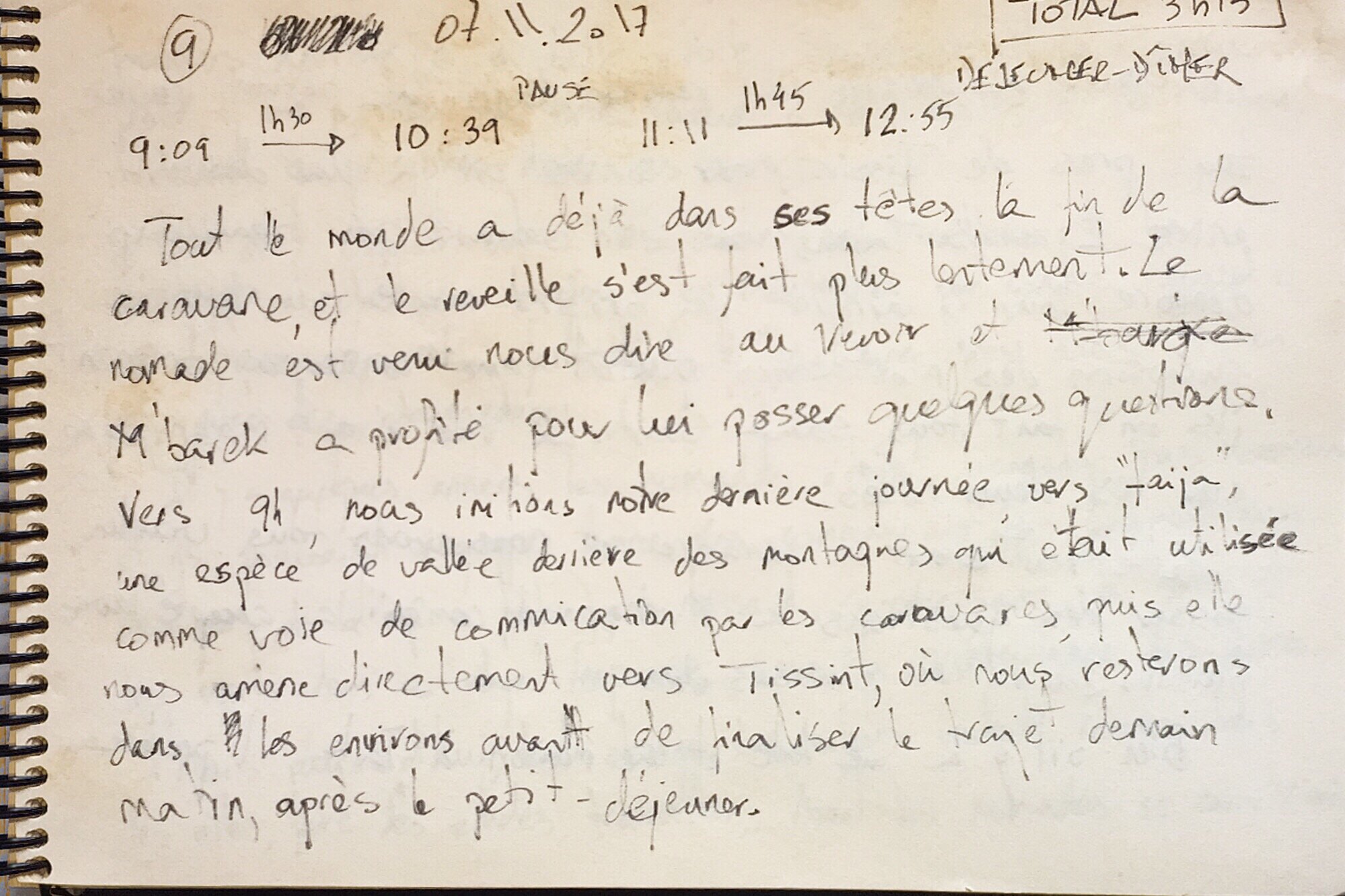
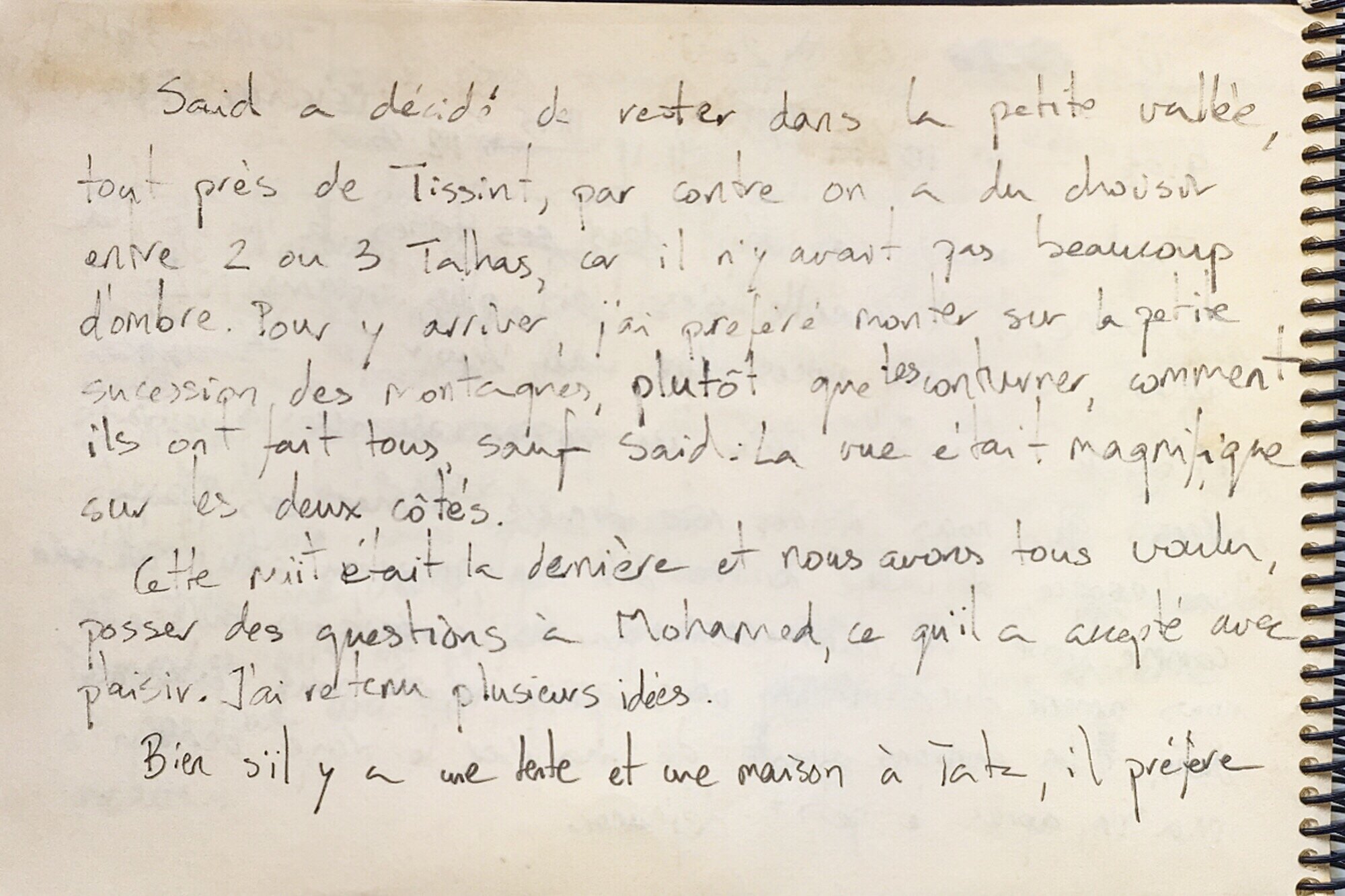


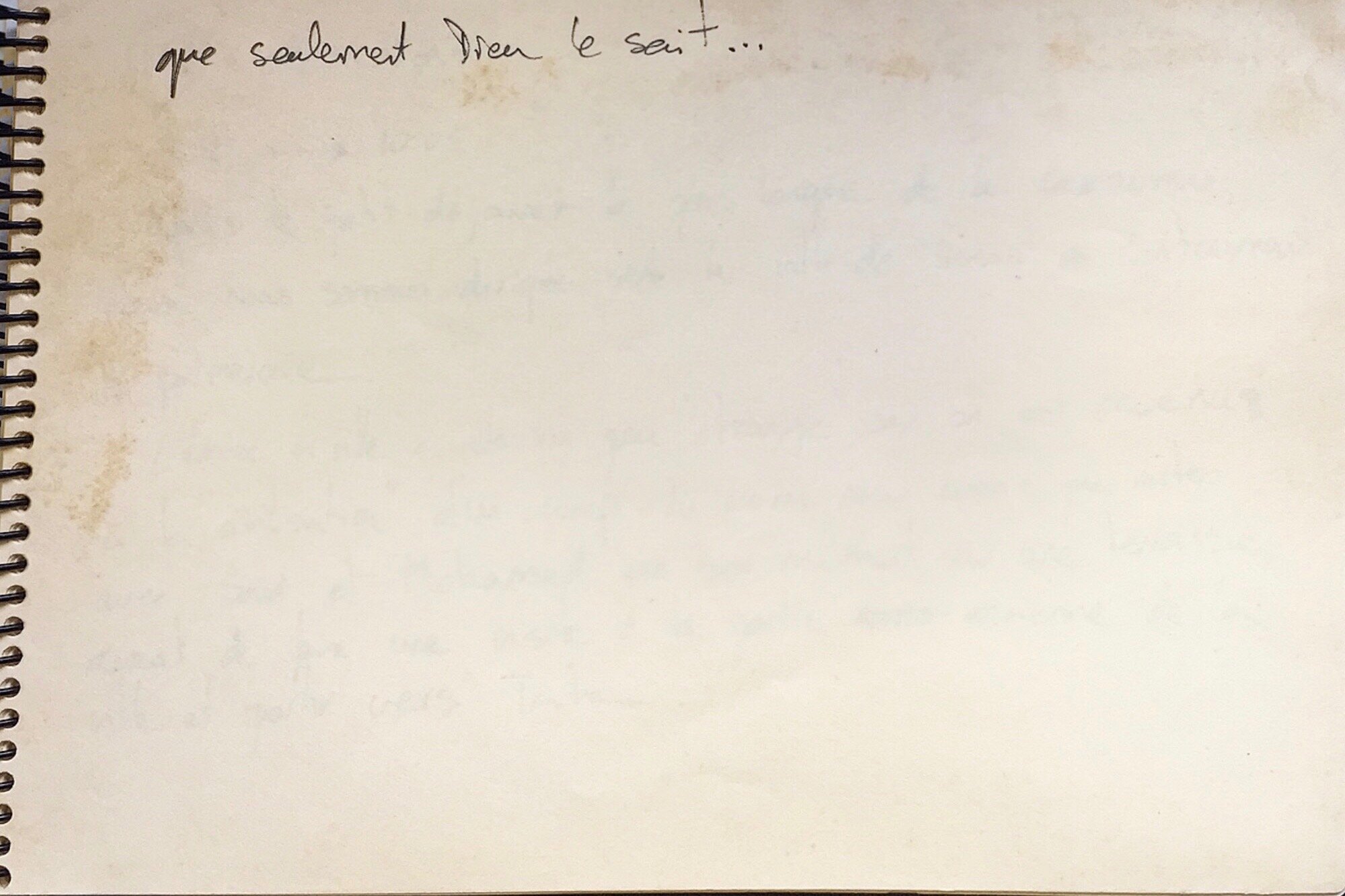
Everyone has already in his mind the end of the caravan and the waking is done slower. The nomad, Mouloud, came to say goodbye and M'barek took the opportunity to ask him some questions.
Around 9h we started our last day heading to "feija", a kind of valley behind mountains that was used as a communication route by caravans and that will take us directly to Tissint, where we will stay in the area before finishing the trip tomorrow morning after breakfast.
----------
Said decided to stay in the small valley, near Tissint, but we had to choose between 2 or 3 talha trees because there was not enough shade. To get there, I preferred to climb a small succession of hills, rather than surrounding them, as they all did, except Said. The view was beautiful on both sides.
This night was the last one and we all wanted to ask Mohamed some questions, which he gladly accepted. I retained several ideas.
Even if he has a tent and a house in Tata, he prefers…
----------
always to sleep under the stars. Only if it's really cold, he'll use the tent. When he has to stay at home, he becomes a prisoner in those walls.
If he has to choose between dunes, valleys and mountains, he will always choose the mountains, but when he moves with his family, he does with donkeys, not with camels.
A few years ago, the nomads were much more numerous and they could group themselves as a community (not necessarily with people of the same tribe), leaving if necessary the tent and the children in this temporary "village", under the supervision of others.
But today everything changes. Children want to stay in the cities, to study, to work ... In the past nomads were characterised…
----------
by recycling everything, tools, clothes, fabrics for khaïmas, becoming it a kind of identity. With the evolution of societies, young people associates nomads’ image to poverty and they pay more attention to what people will think and say if his family is a nomad one.
According to the memories of his family, they have always remained in the Moroccan territory, his father and his grandfather never went to Mali, Mauritania or Algeria. Their "territories" were between Rissani, Tinghir, Zagora, Tata and Guelmim.
His knowledge of geography is a transmission from his father, essential for moving and living in these regions.
In relation to the future of nomadic life in Morocco, he thinks…
----------
that only God knows ...
DAY 10
20.10.2016
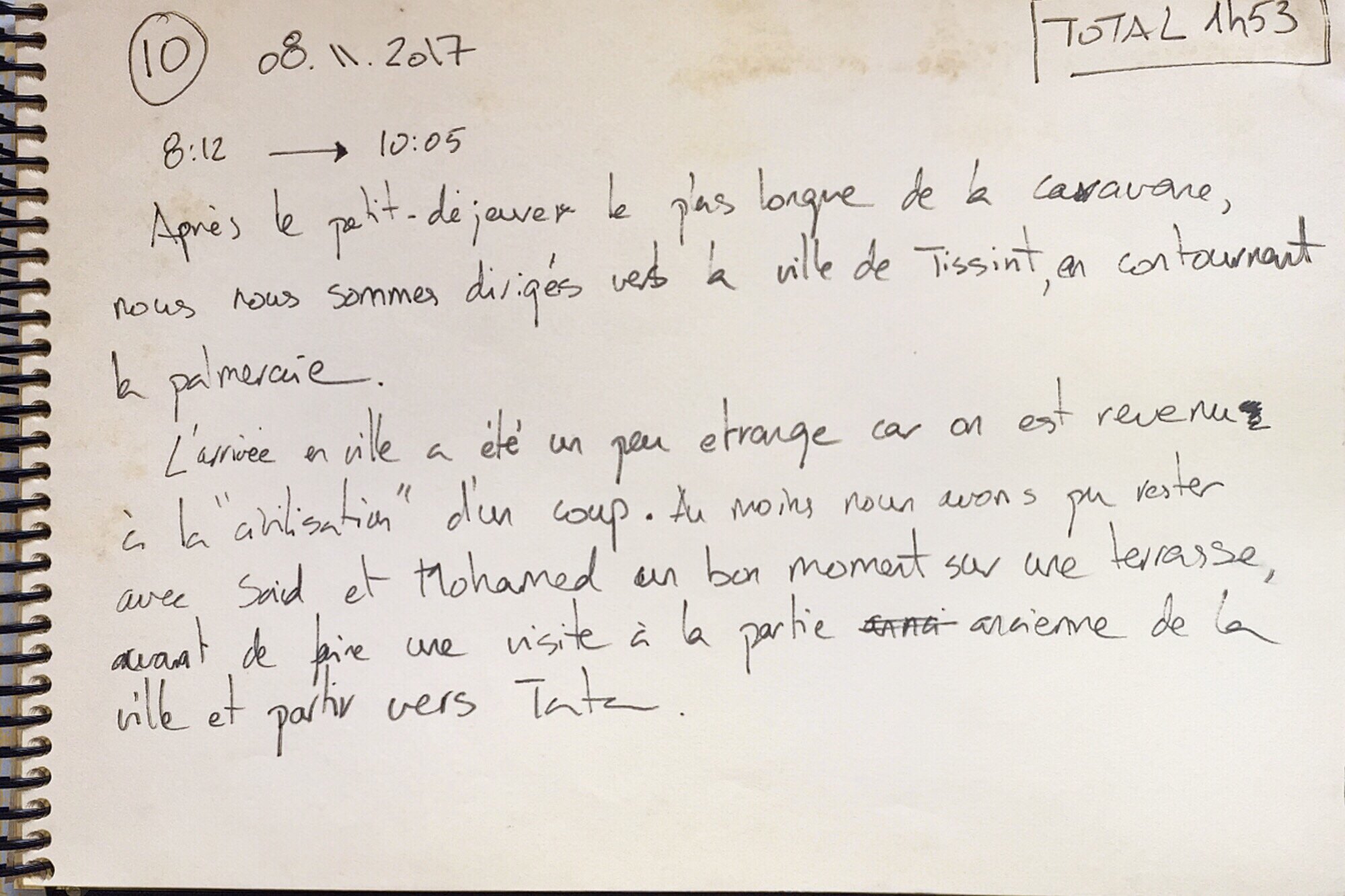
After the longest breakfast of the caravan, we headed to the town of Tissint, surrounding the palm grove.
The arrival in town was a bit strange because we came back to "civilisation" at once. At least we could stay with Said and Mohamed for a while on a terrace, before visiting to the old part of the city and leaving for Tata (by car).
Credit videos, pictures, texts and drawings: Carlos Perez Marin

